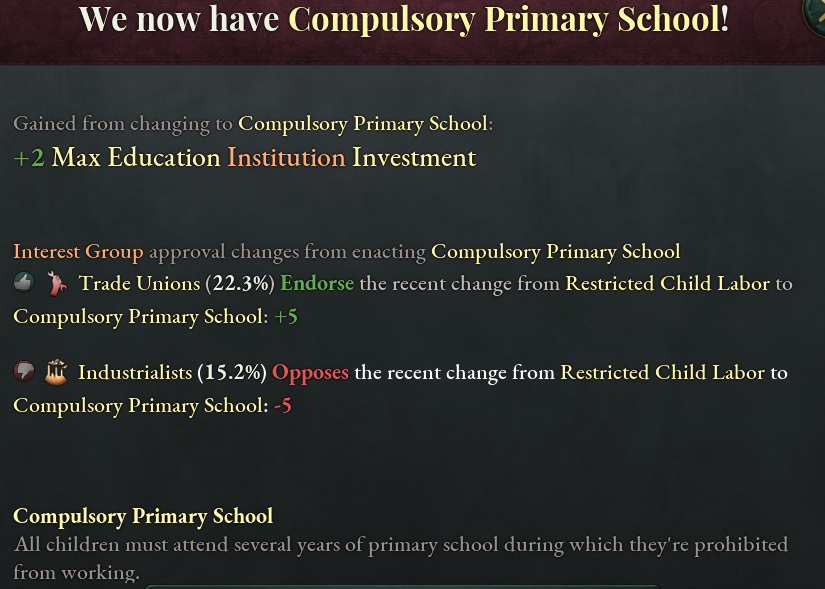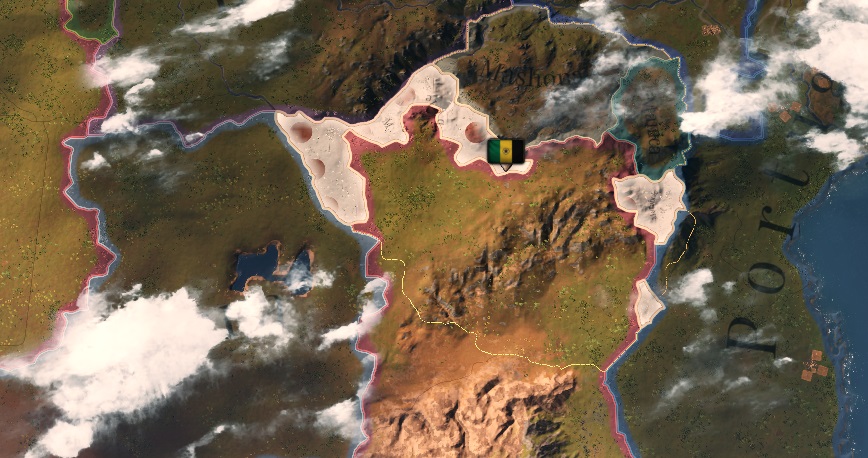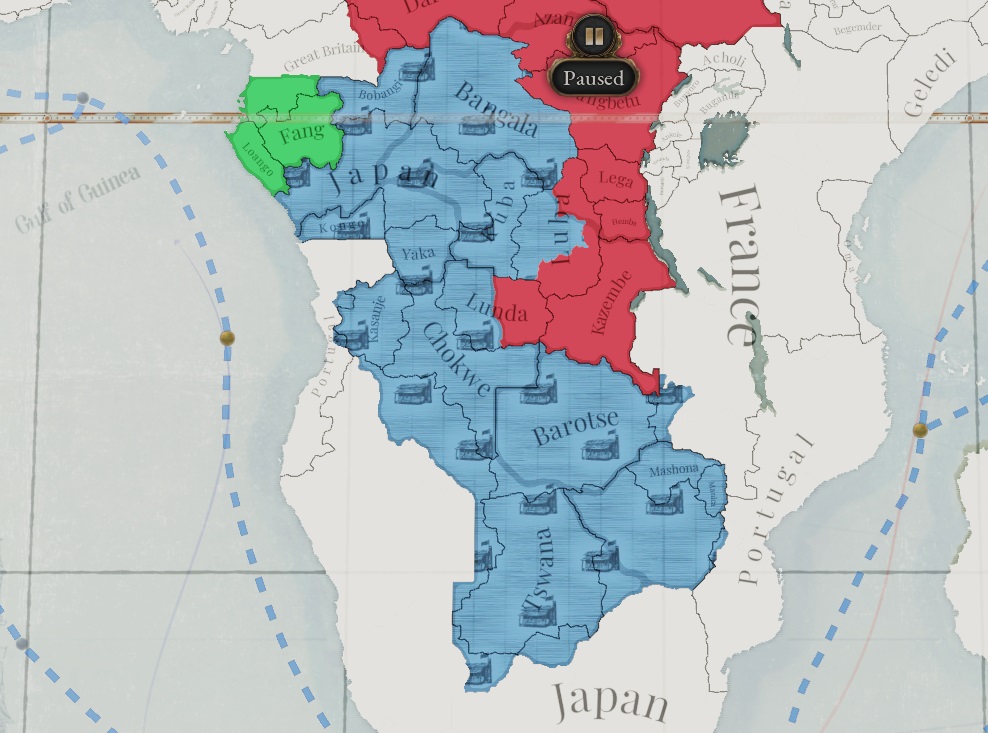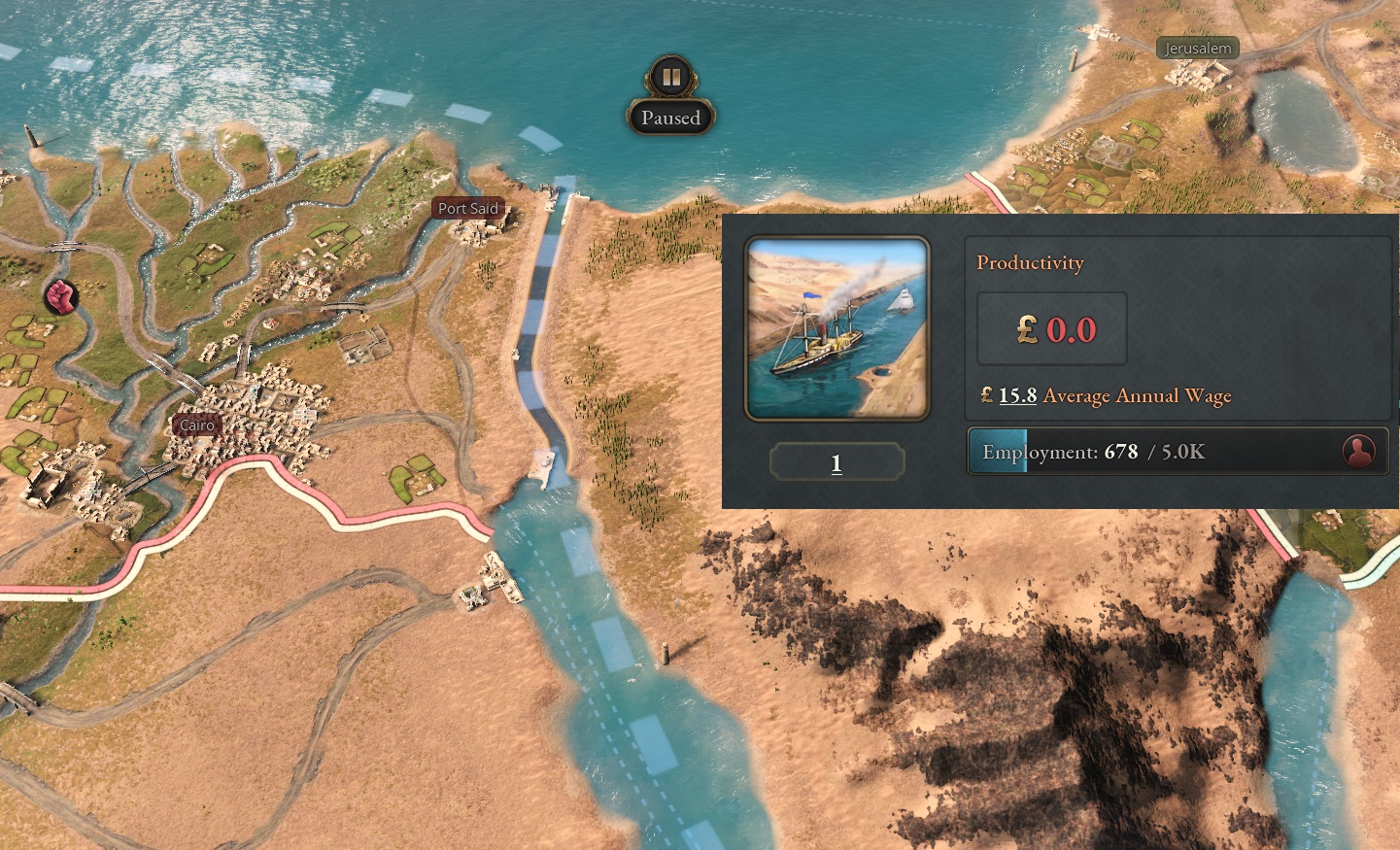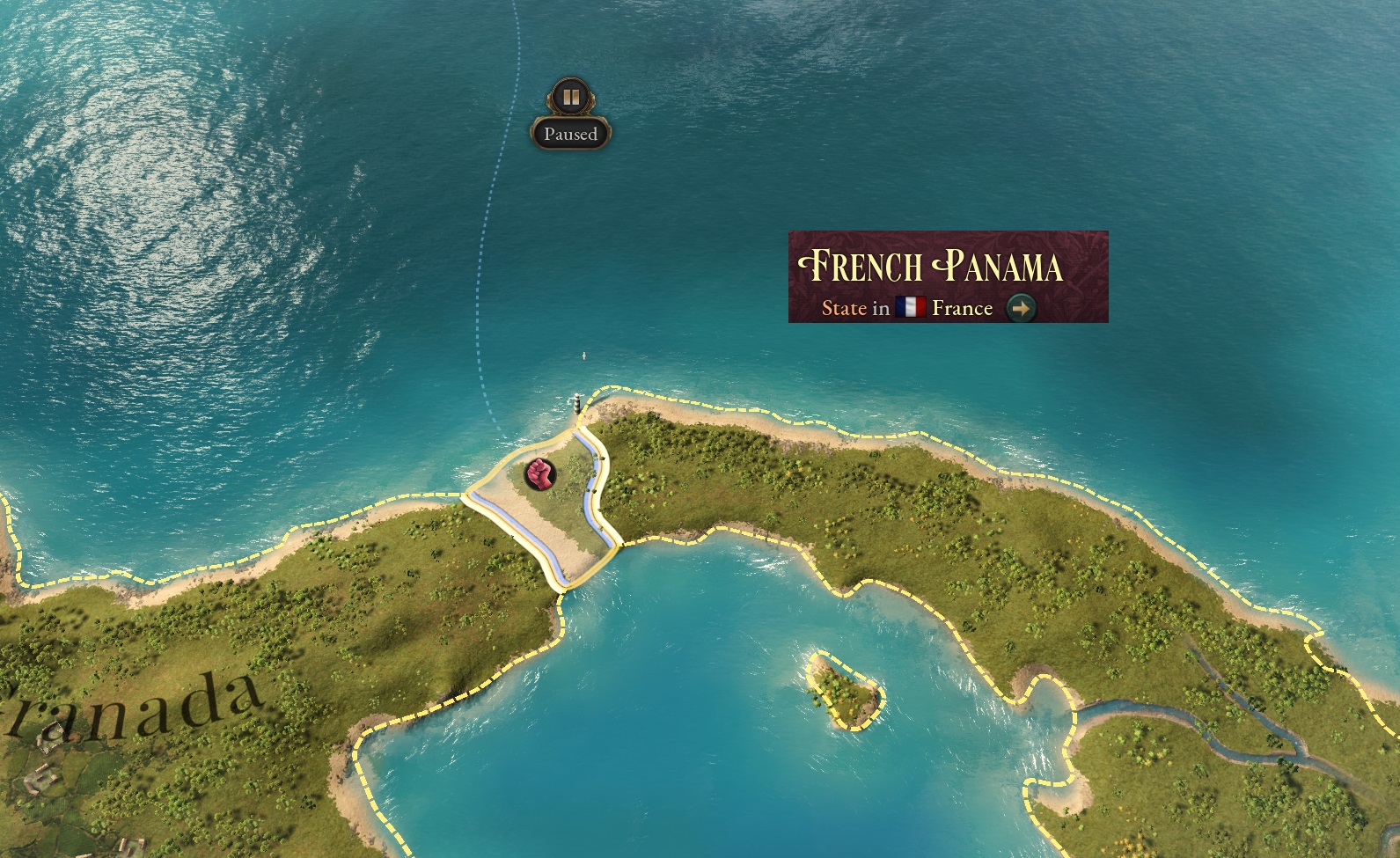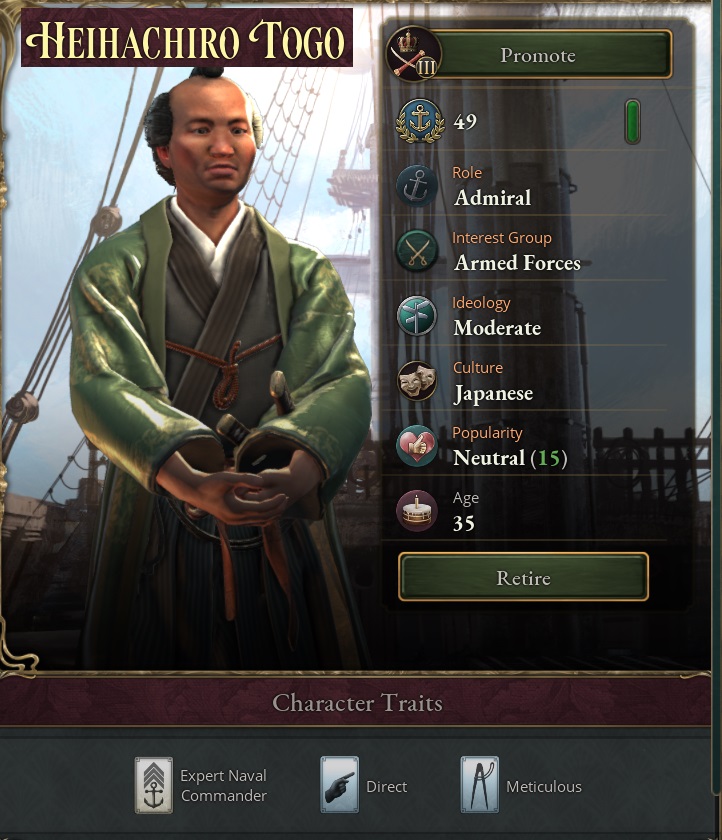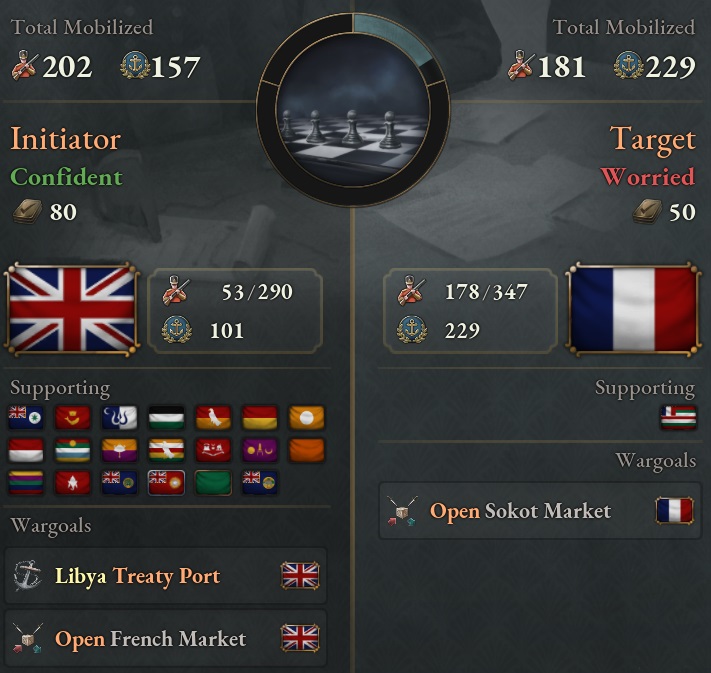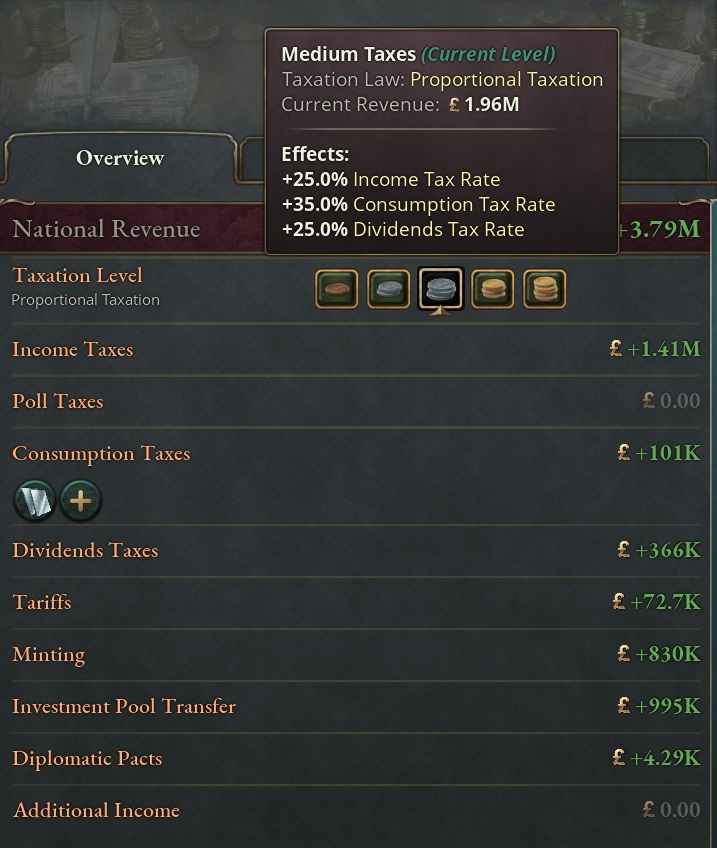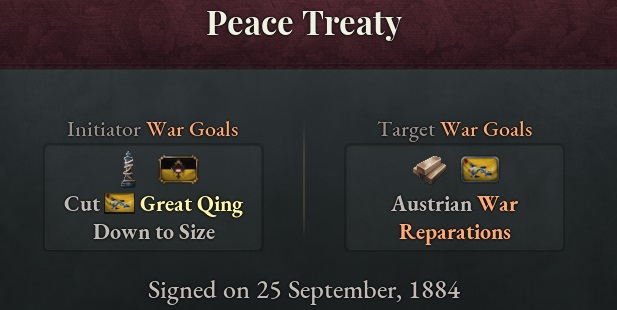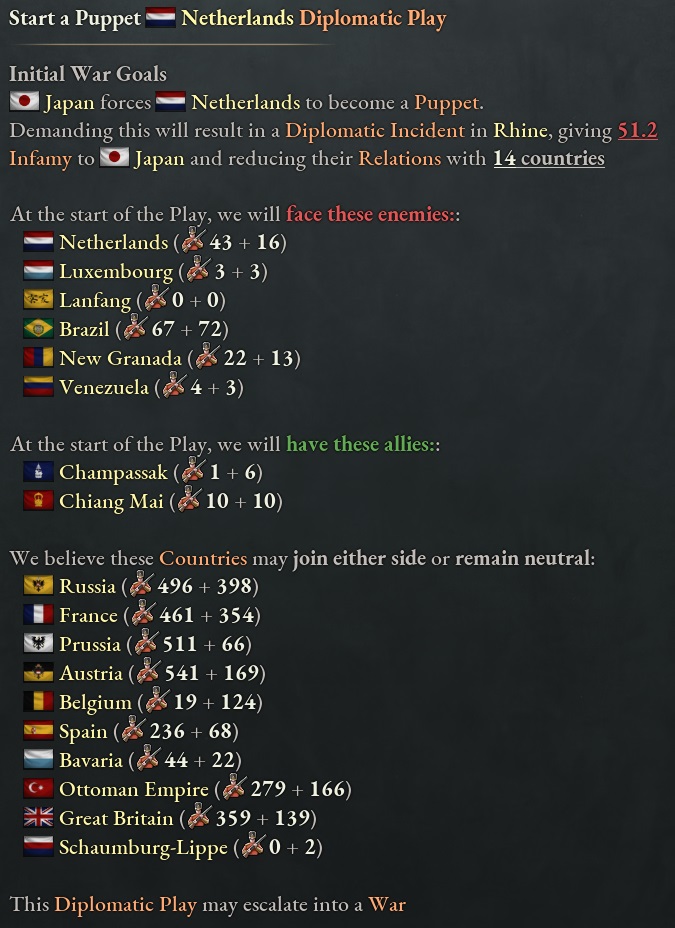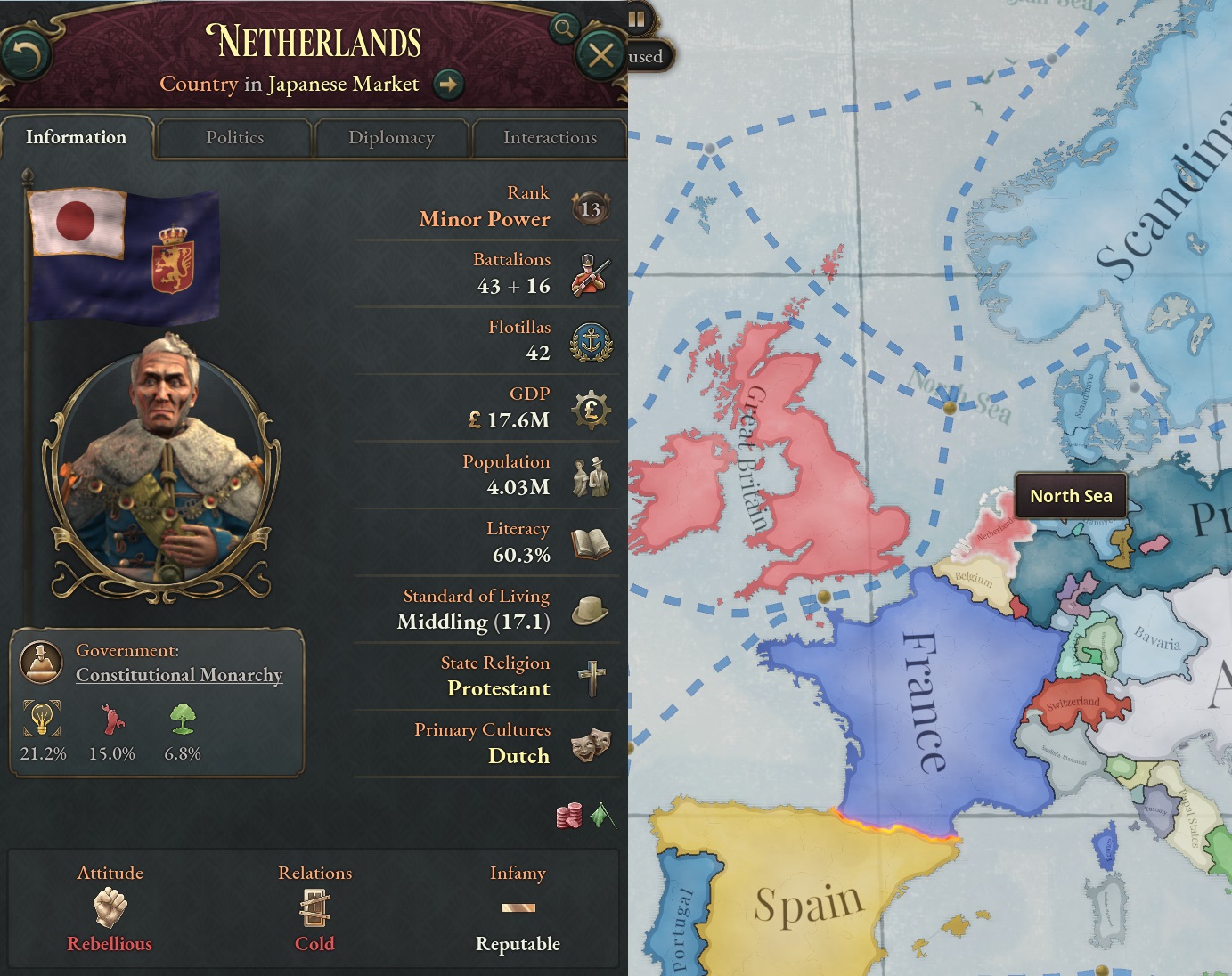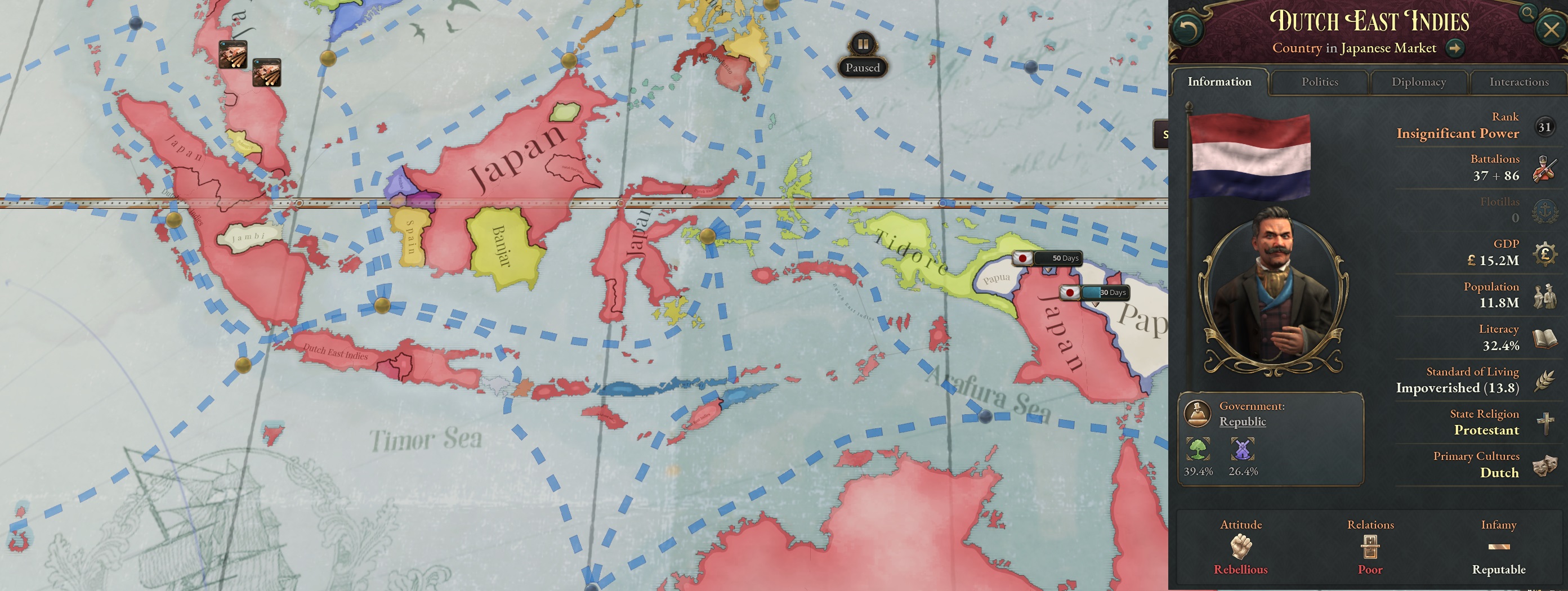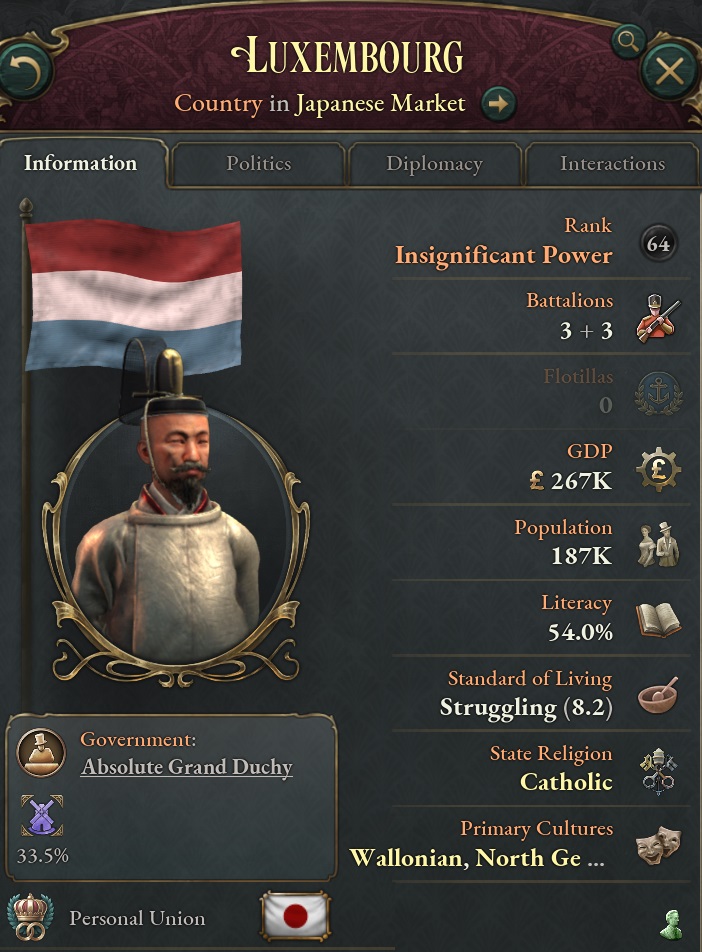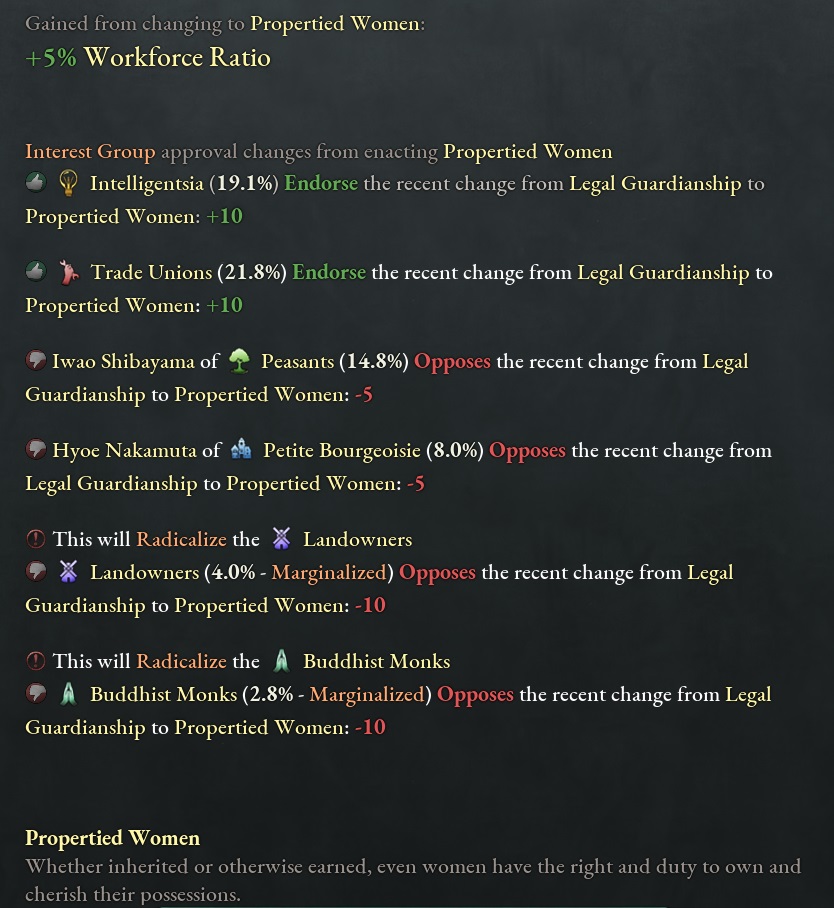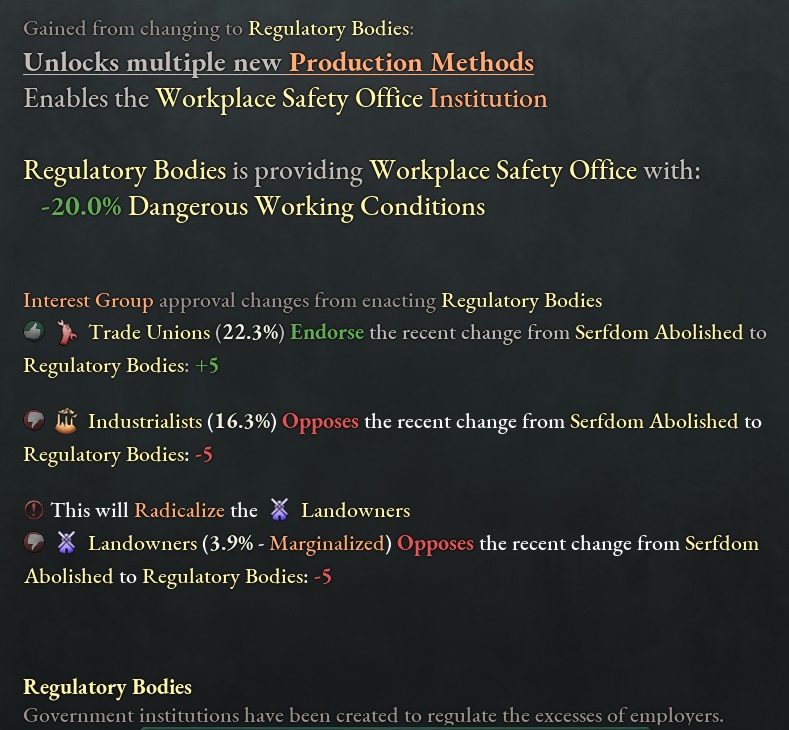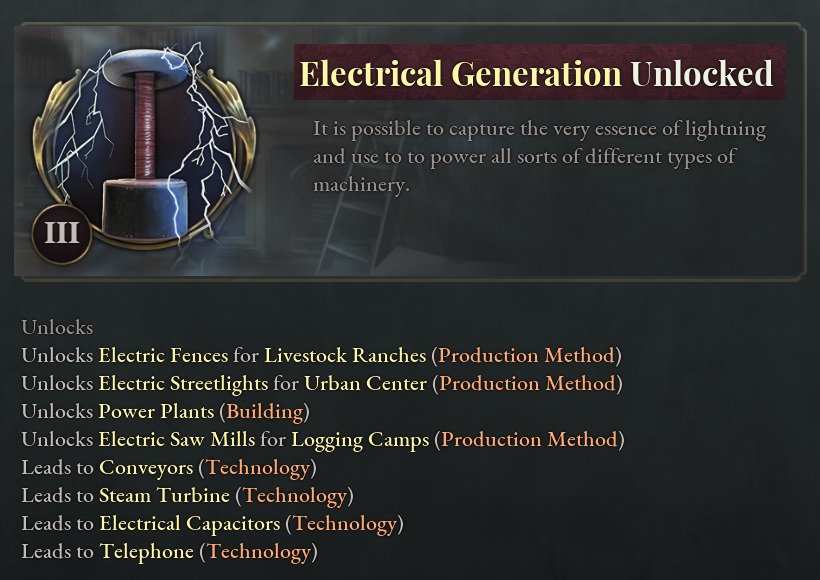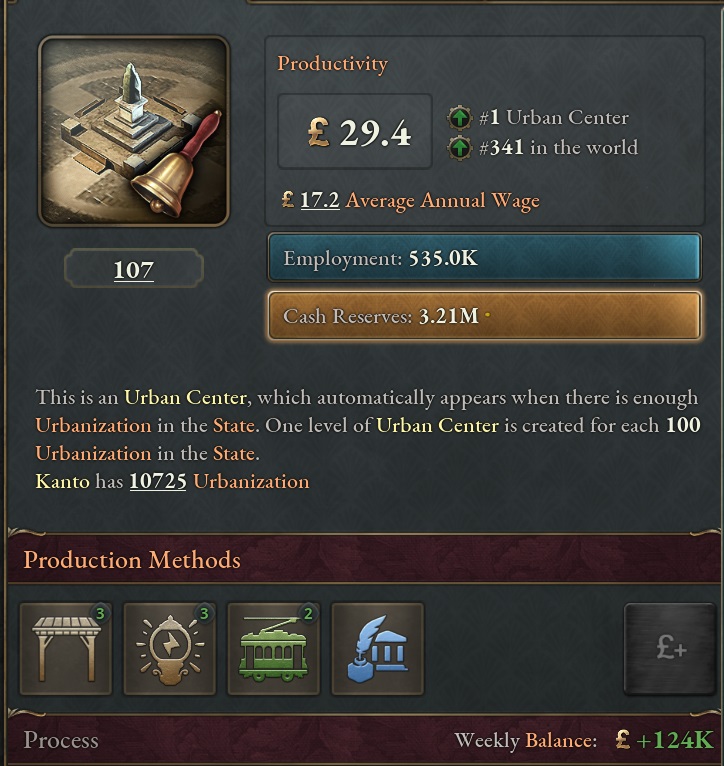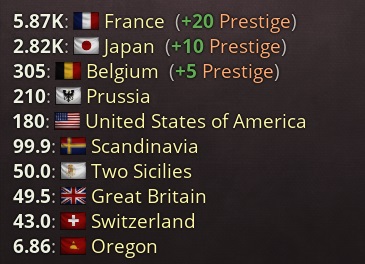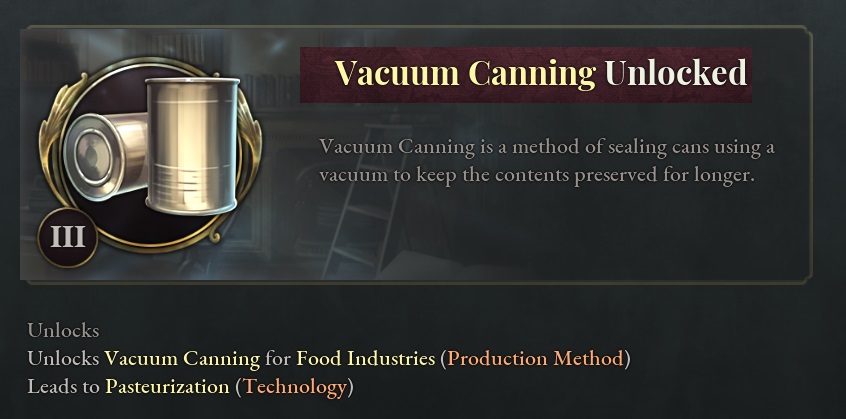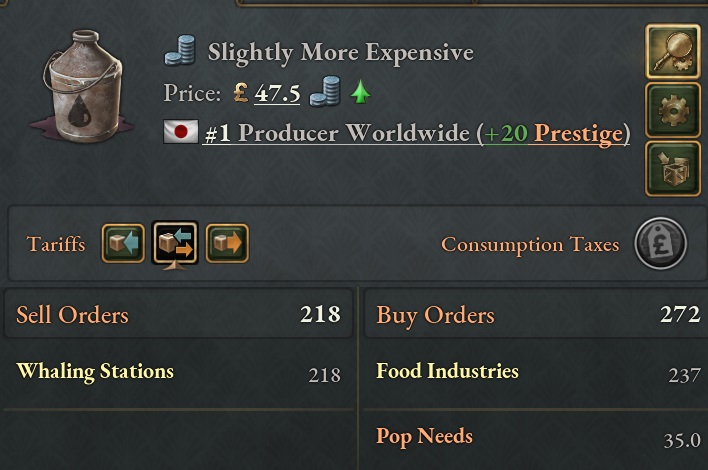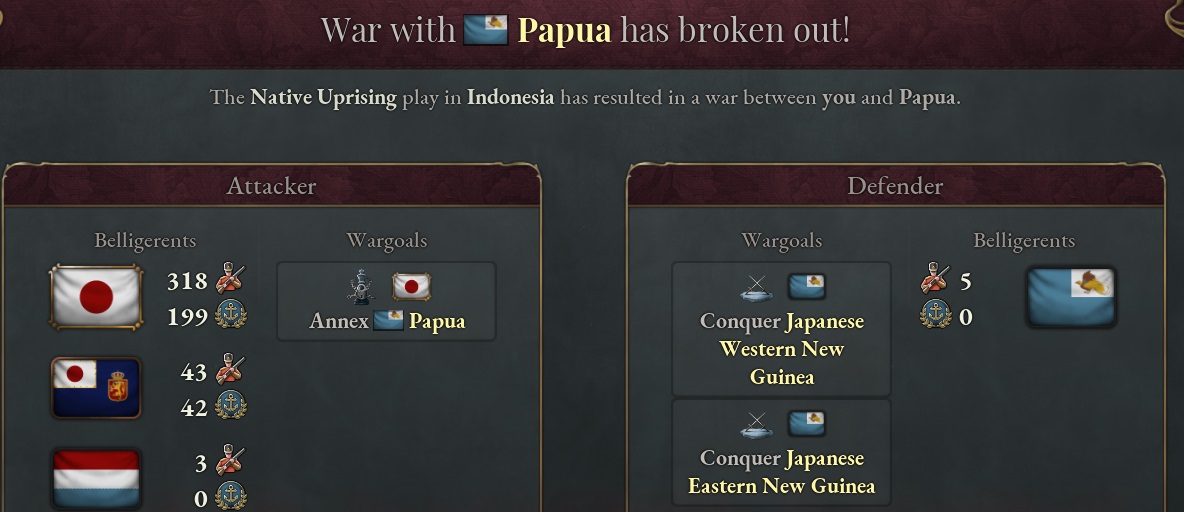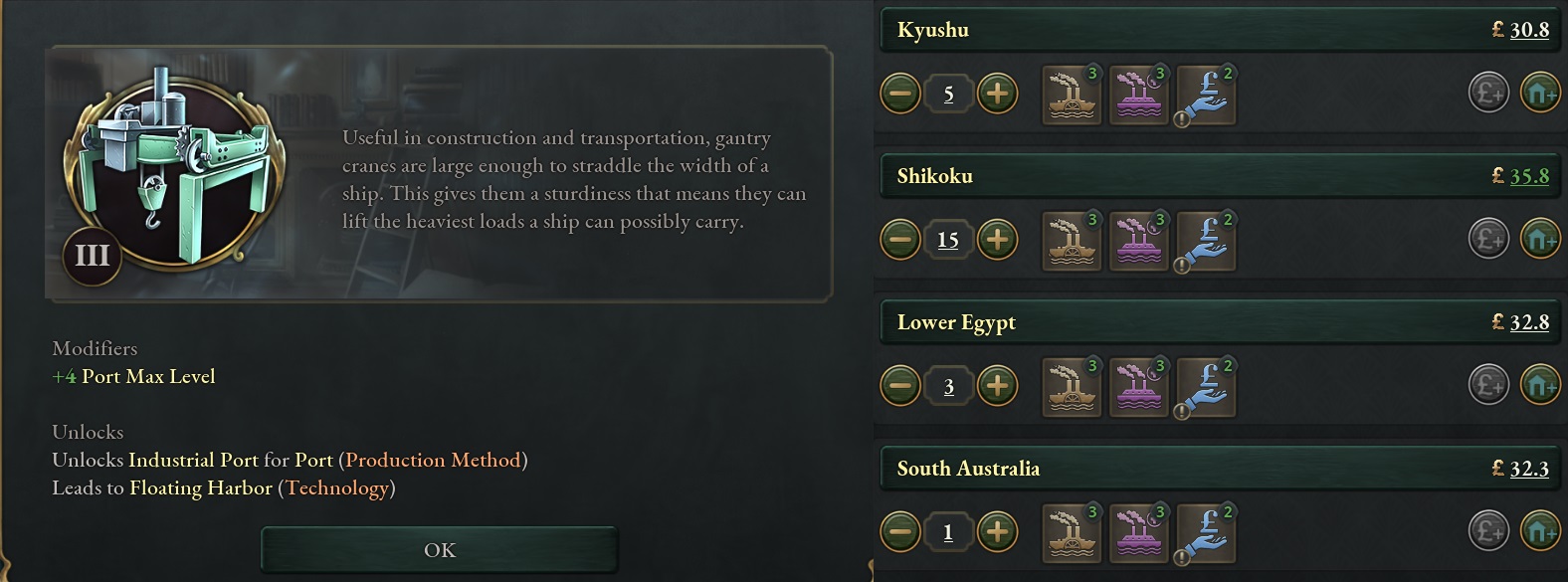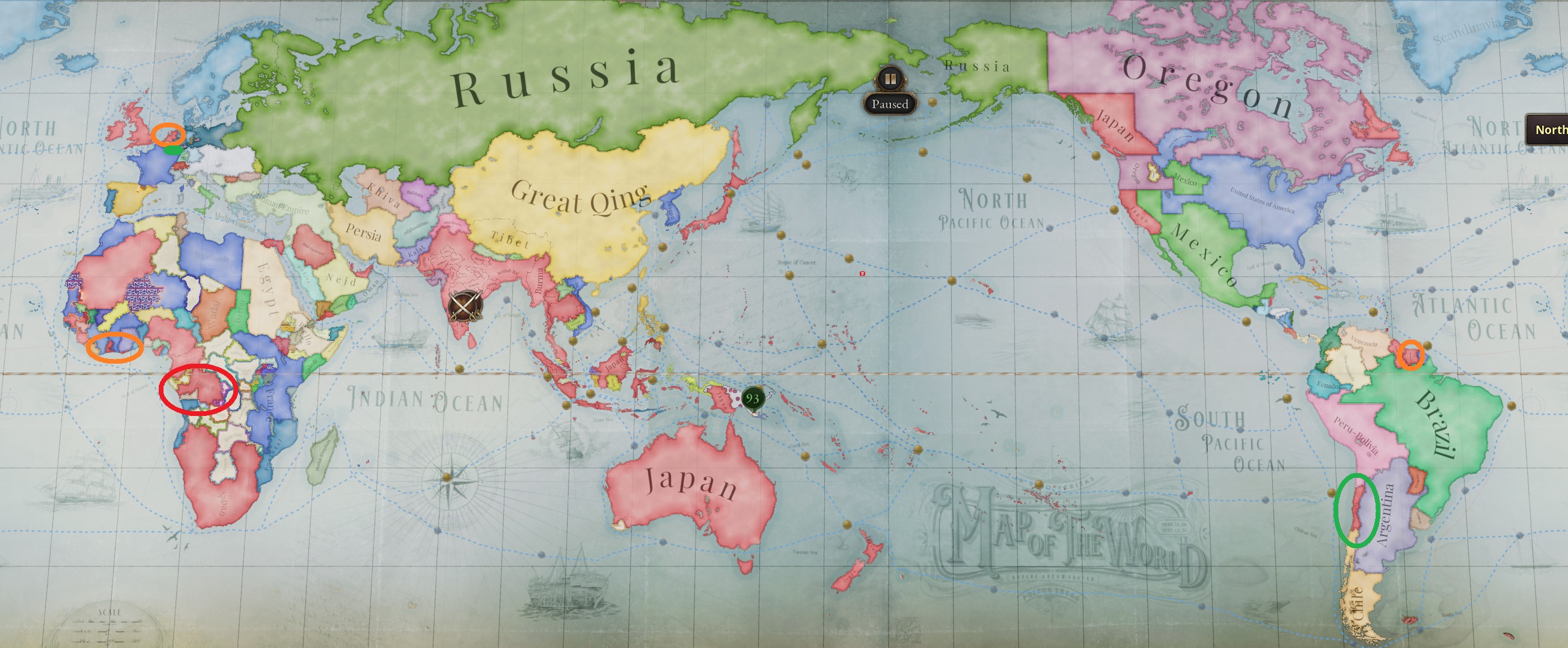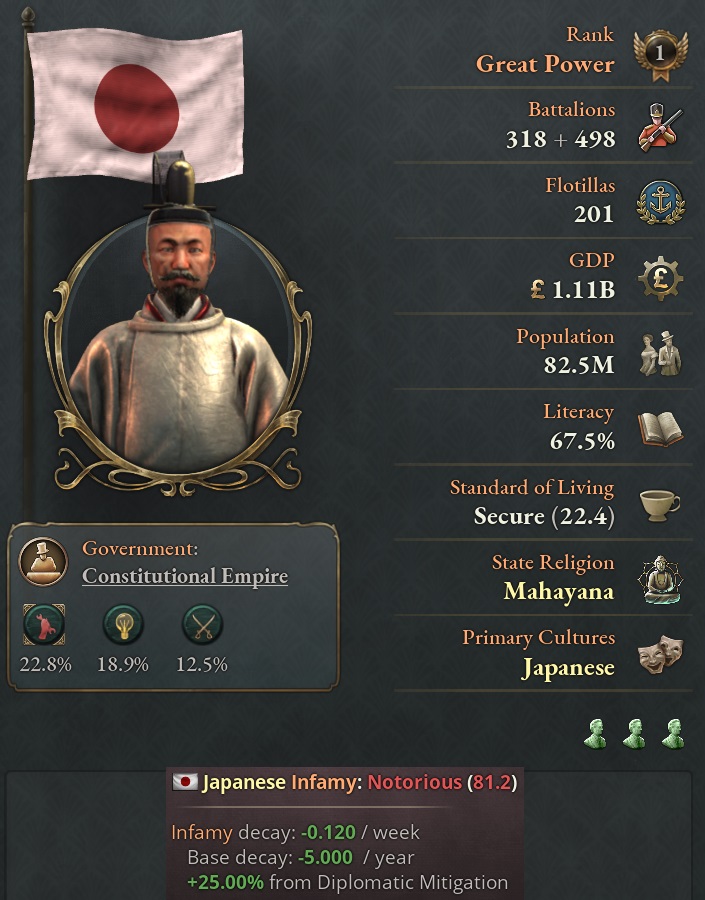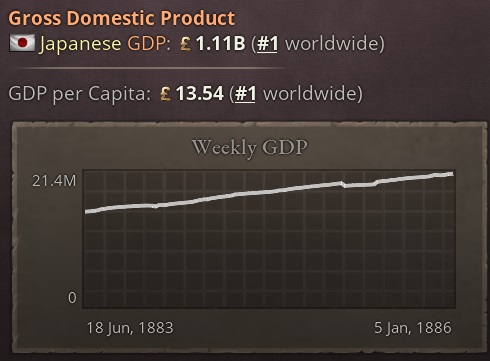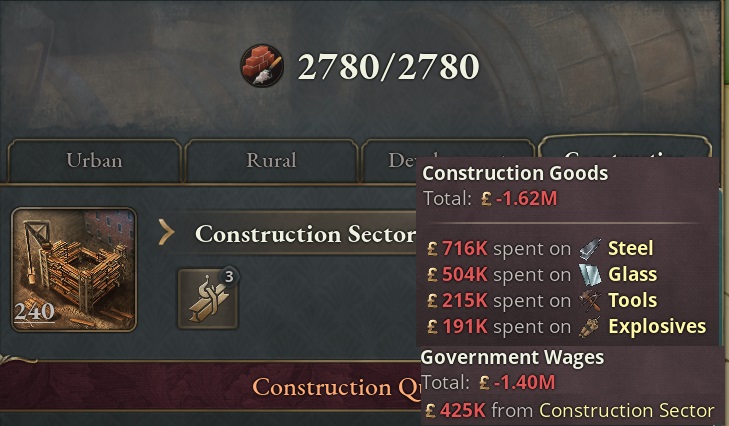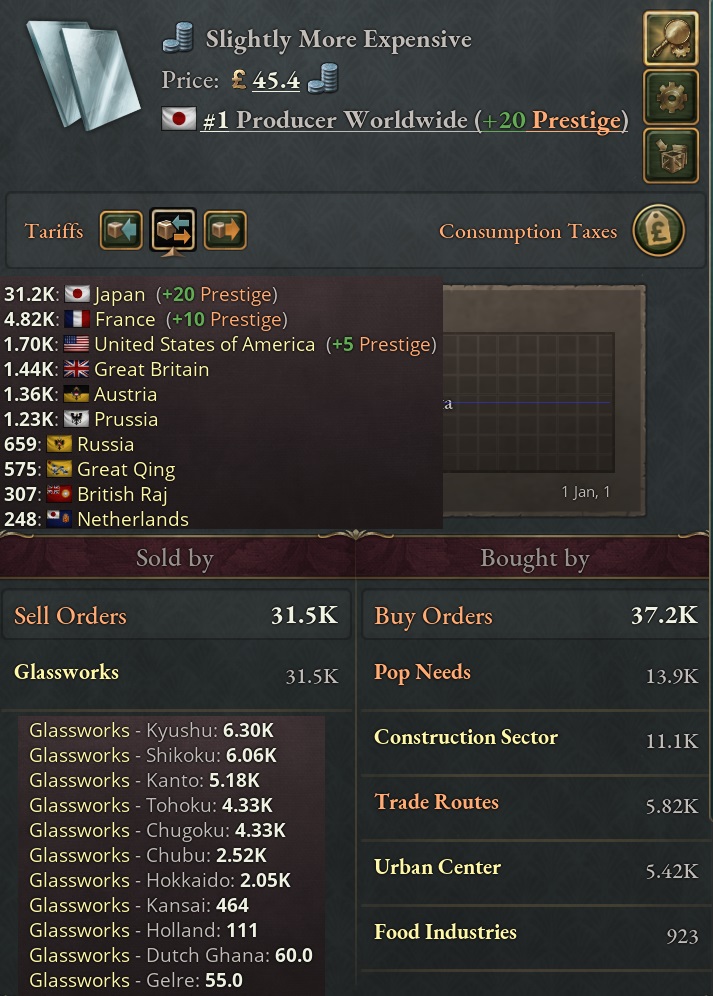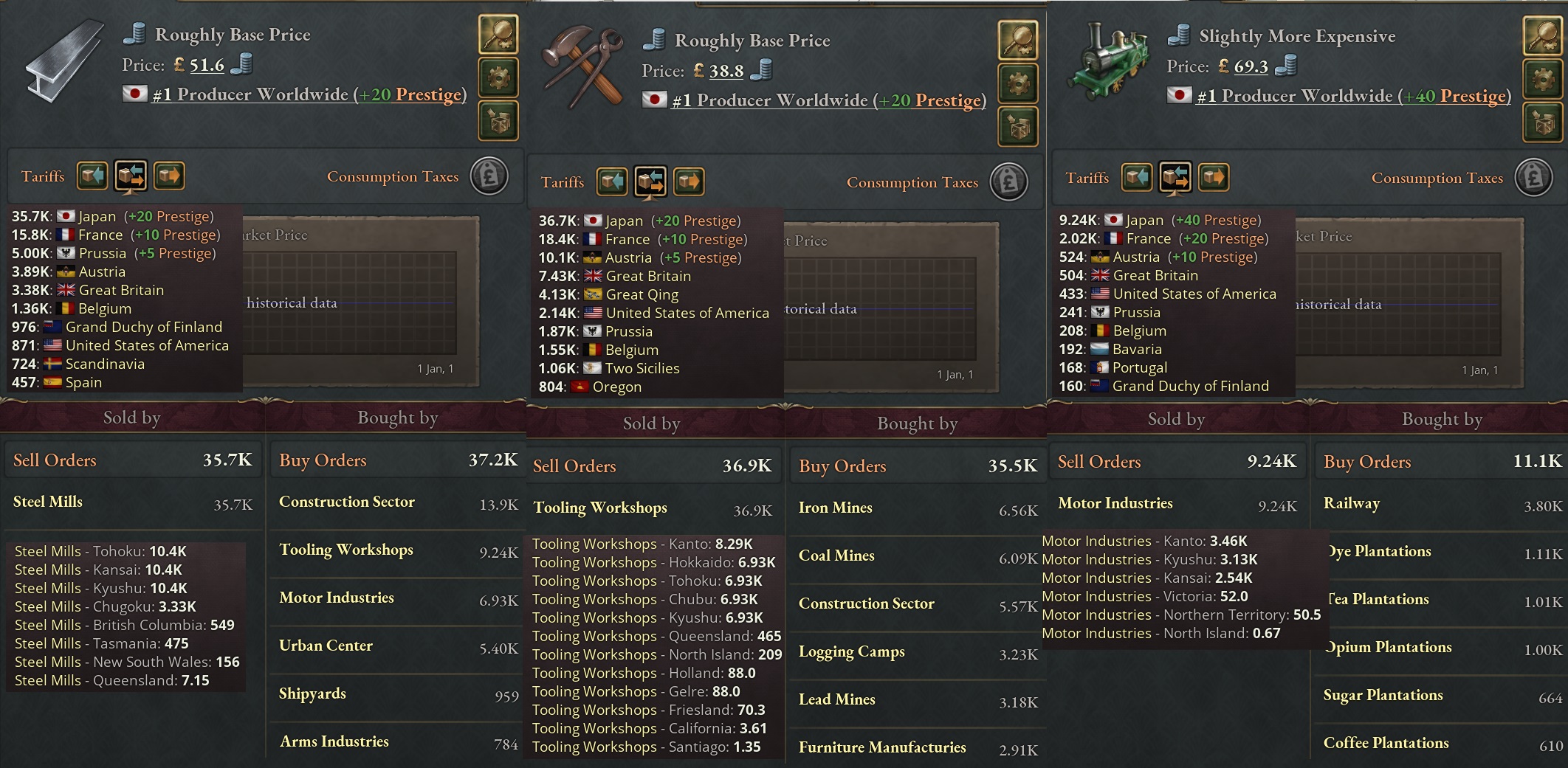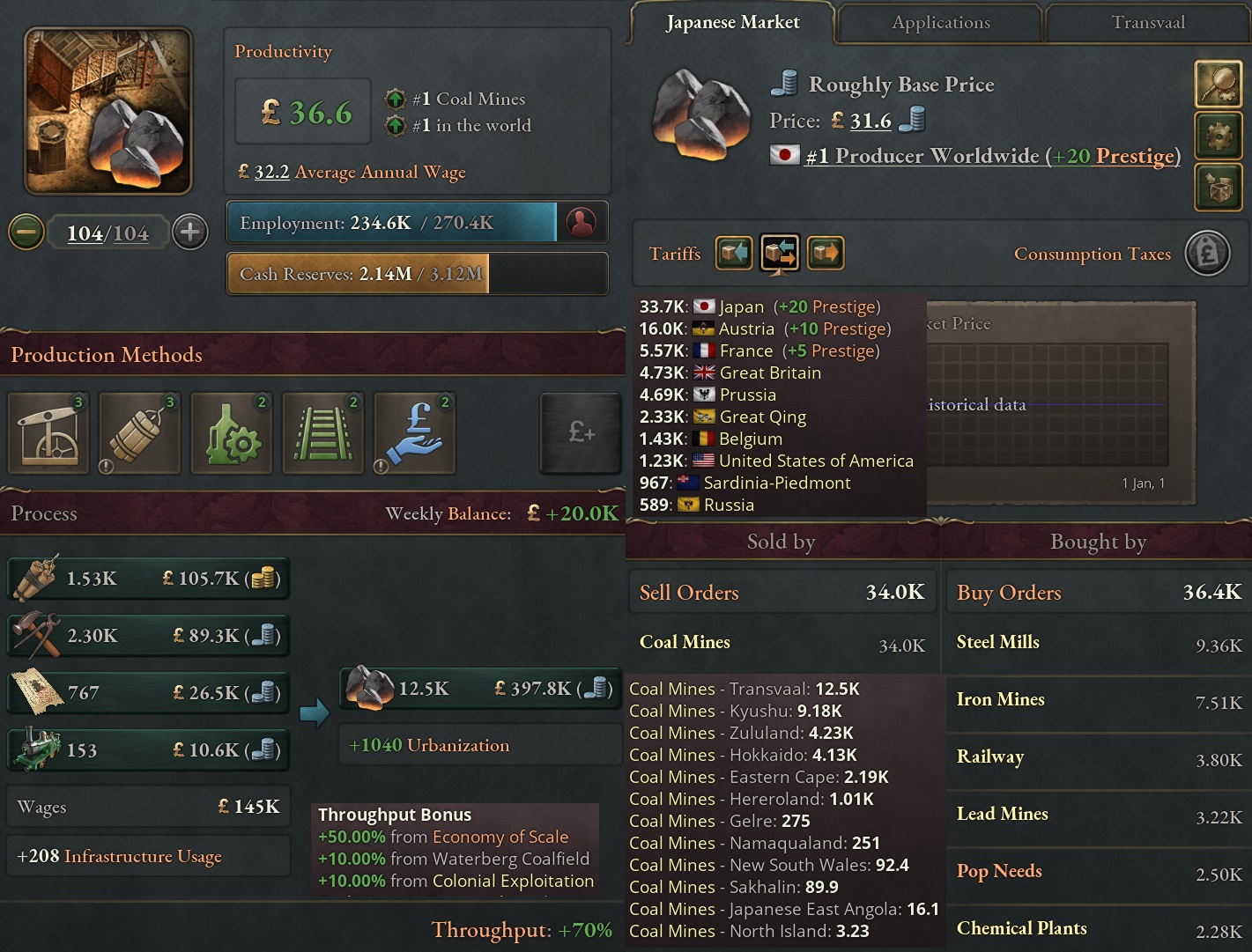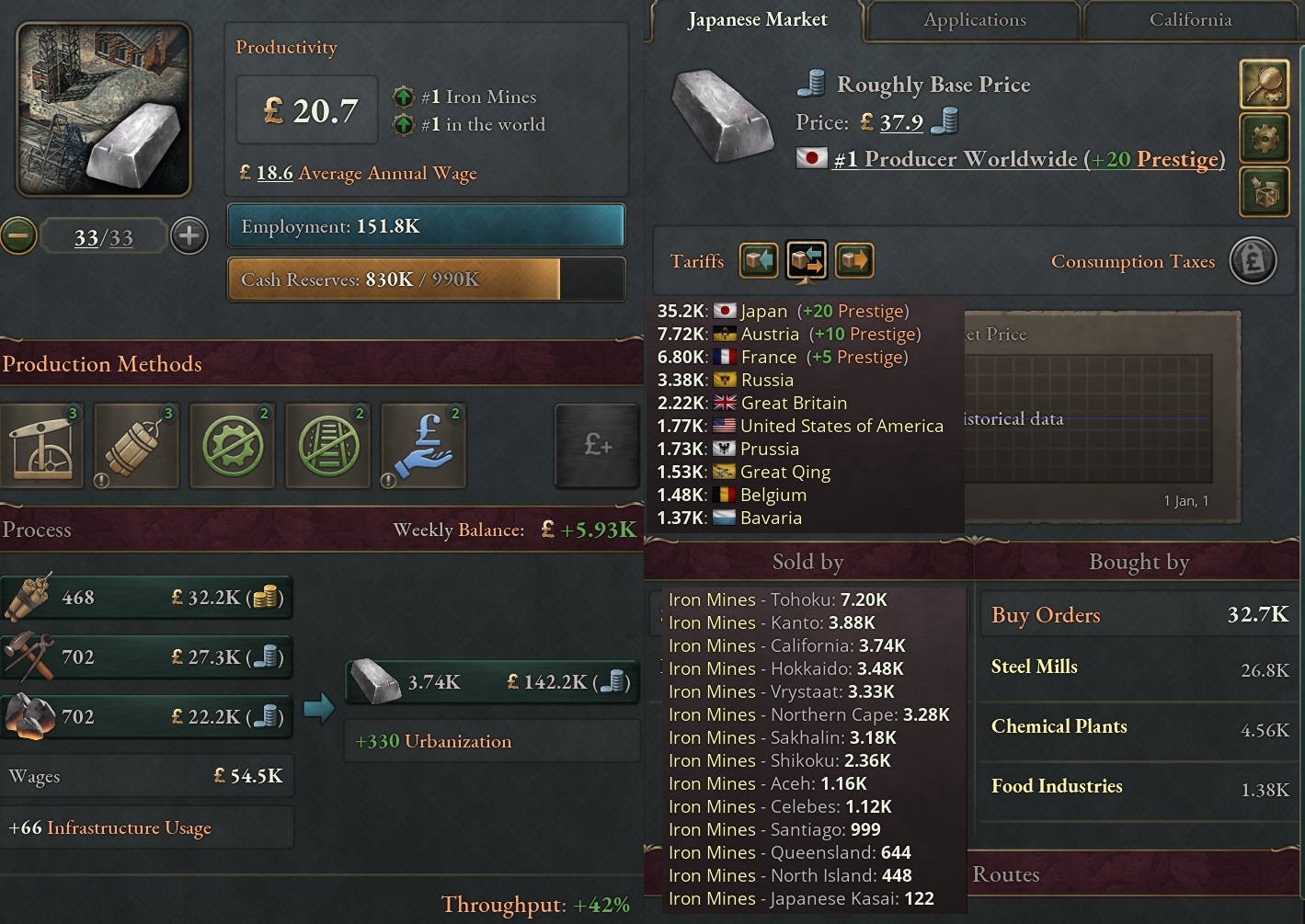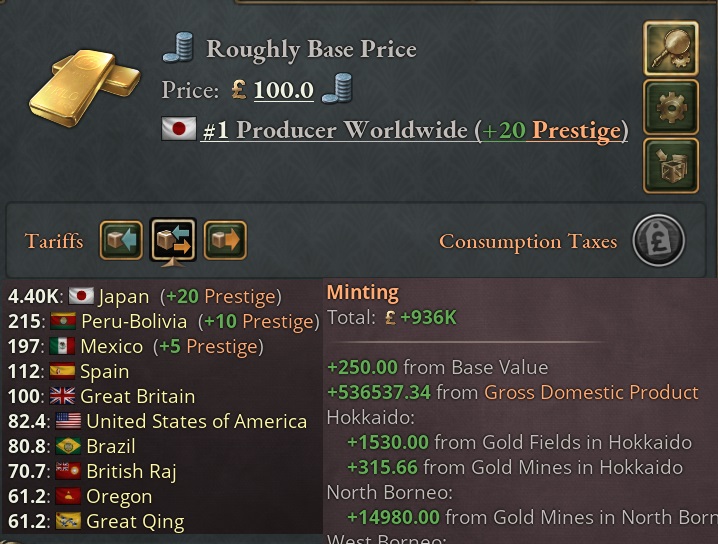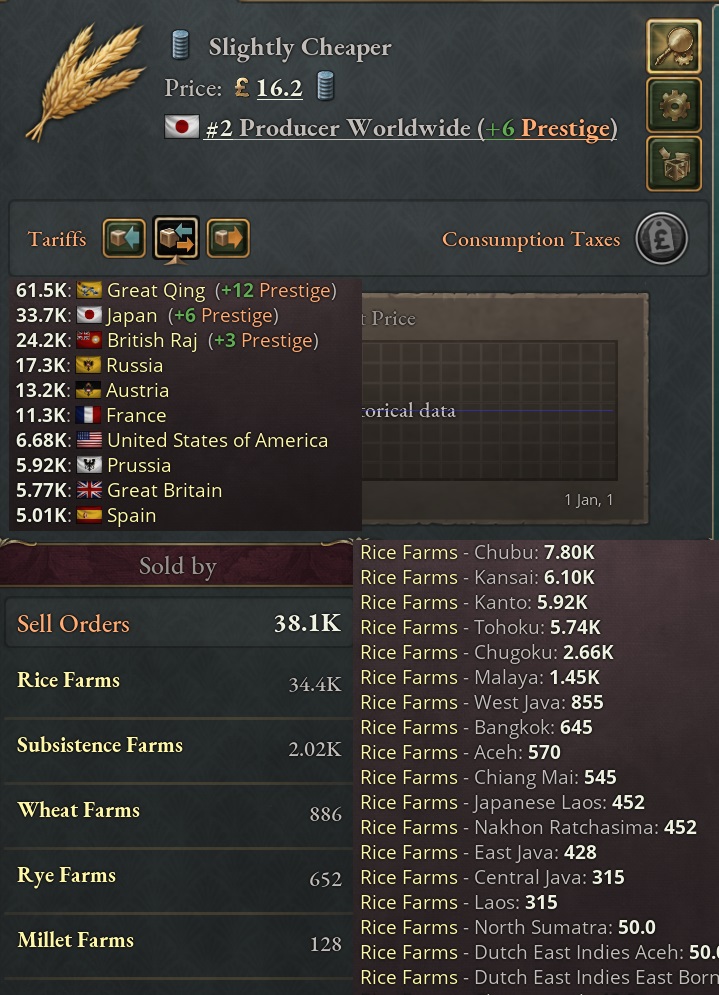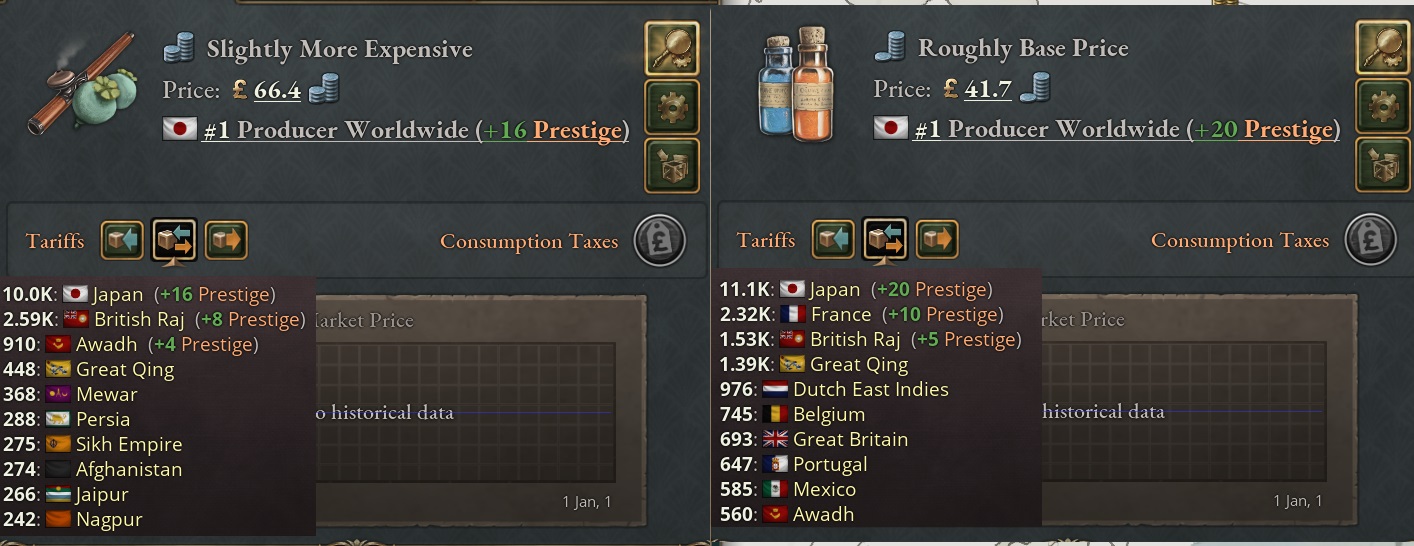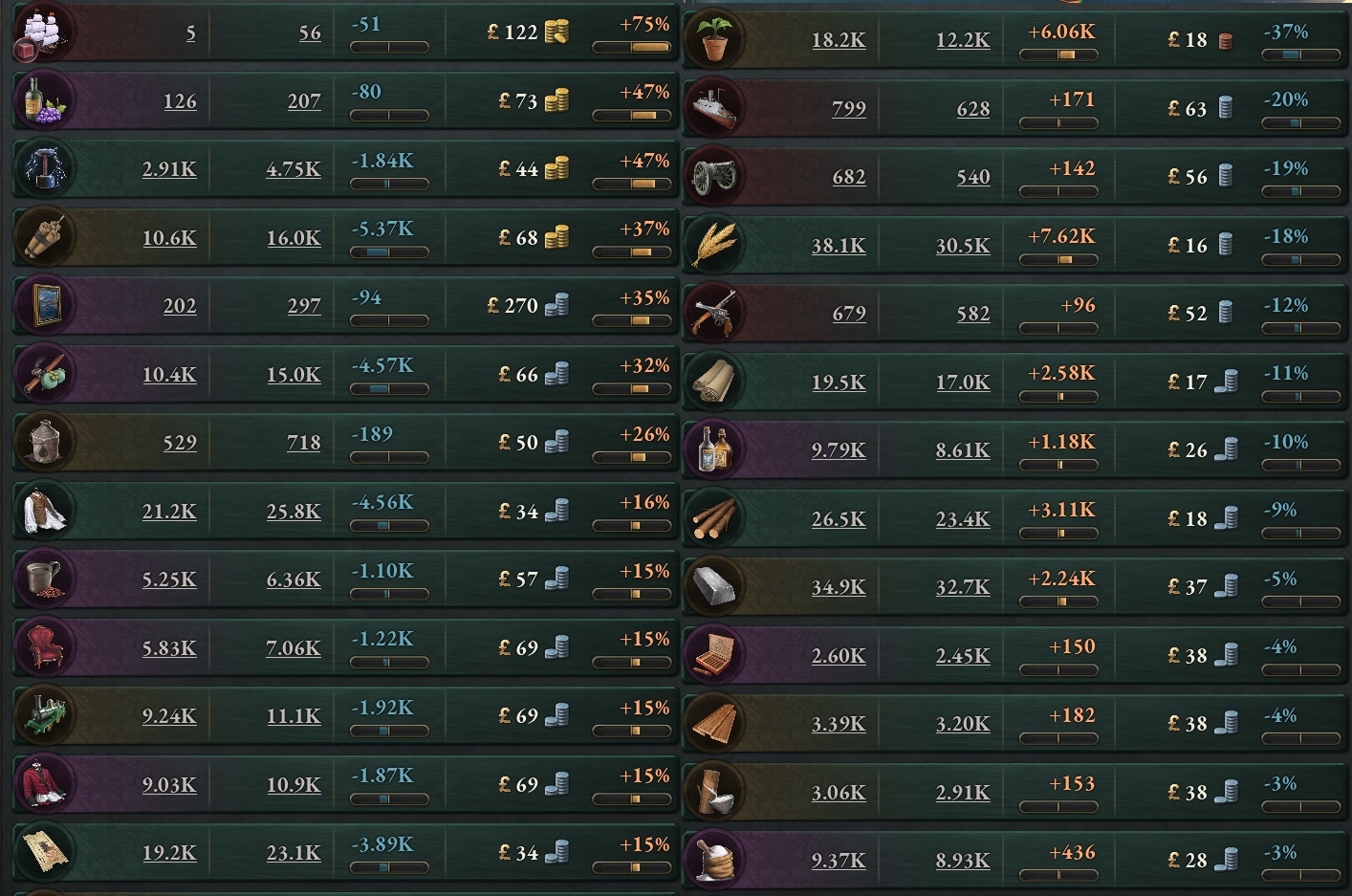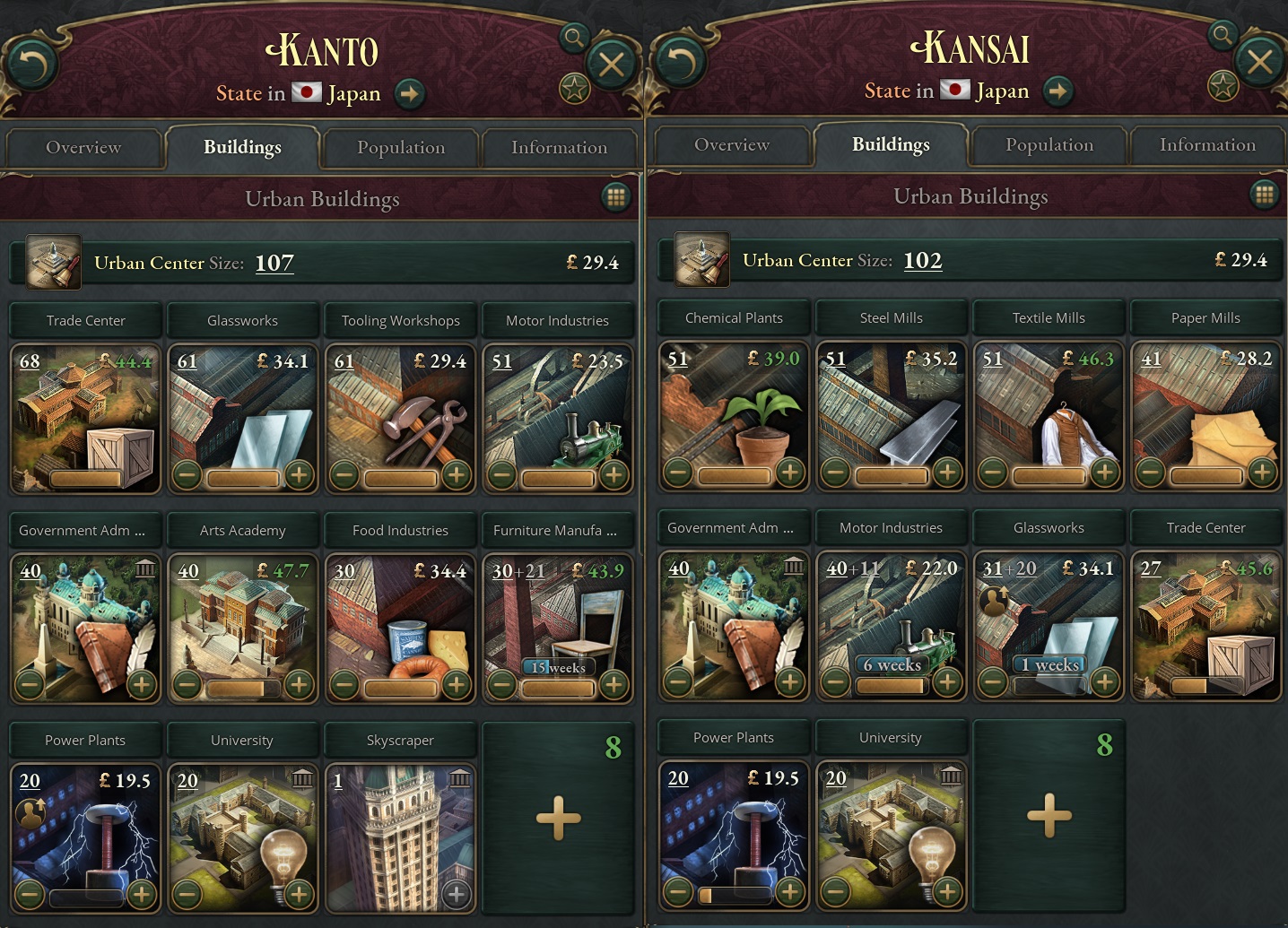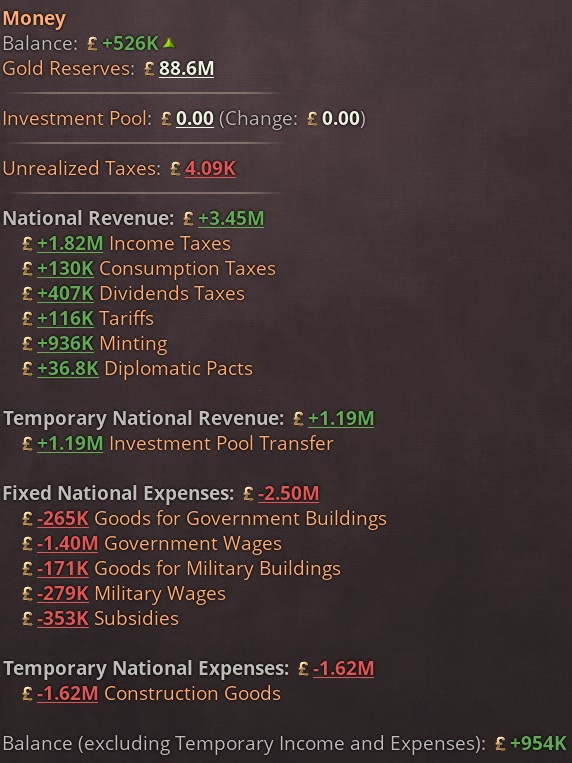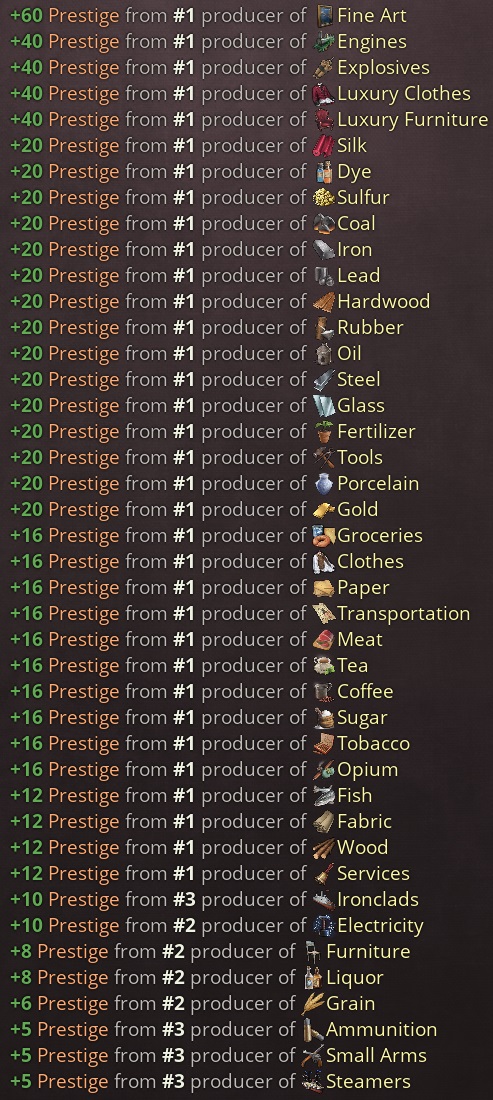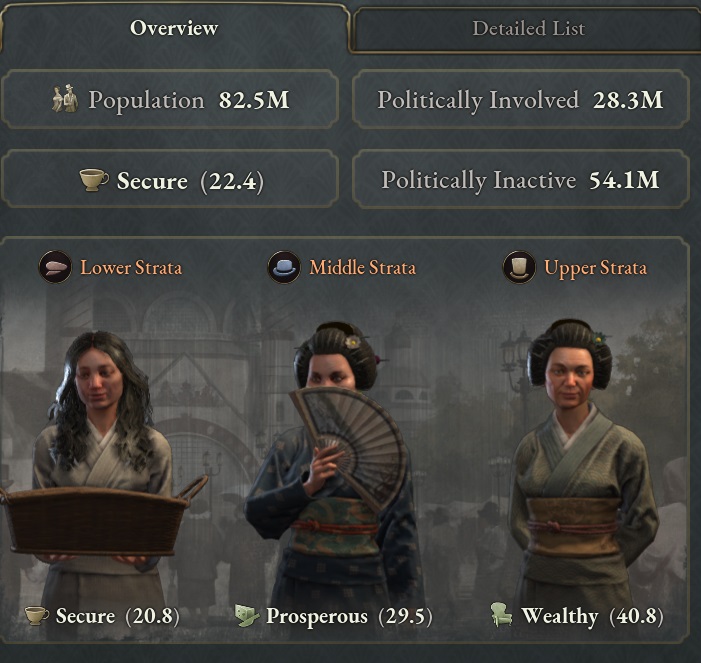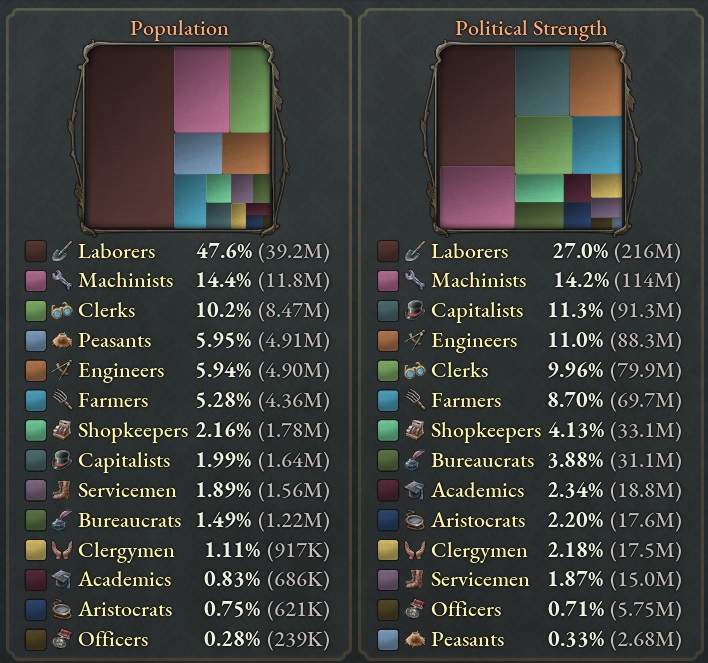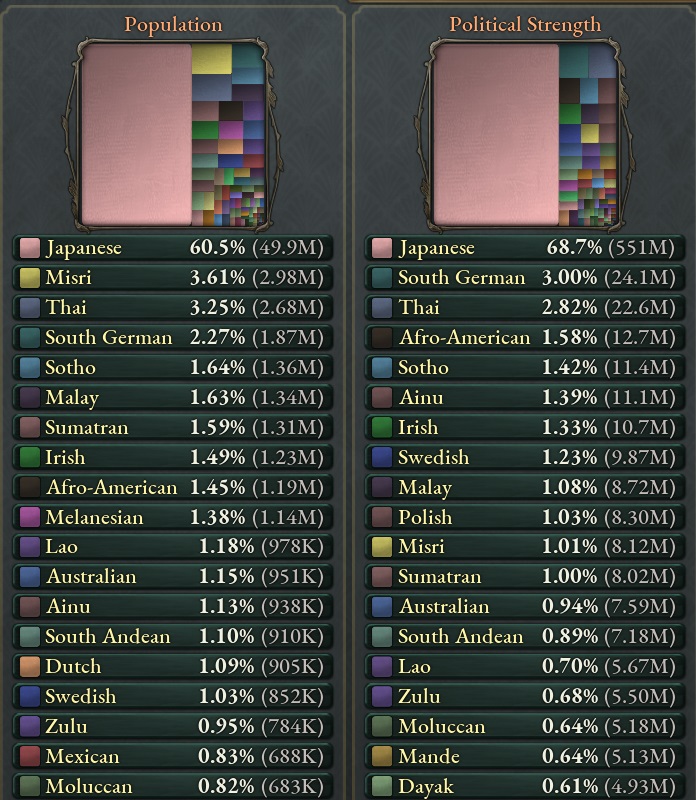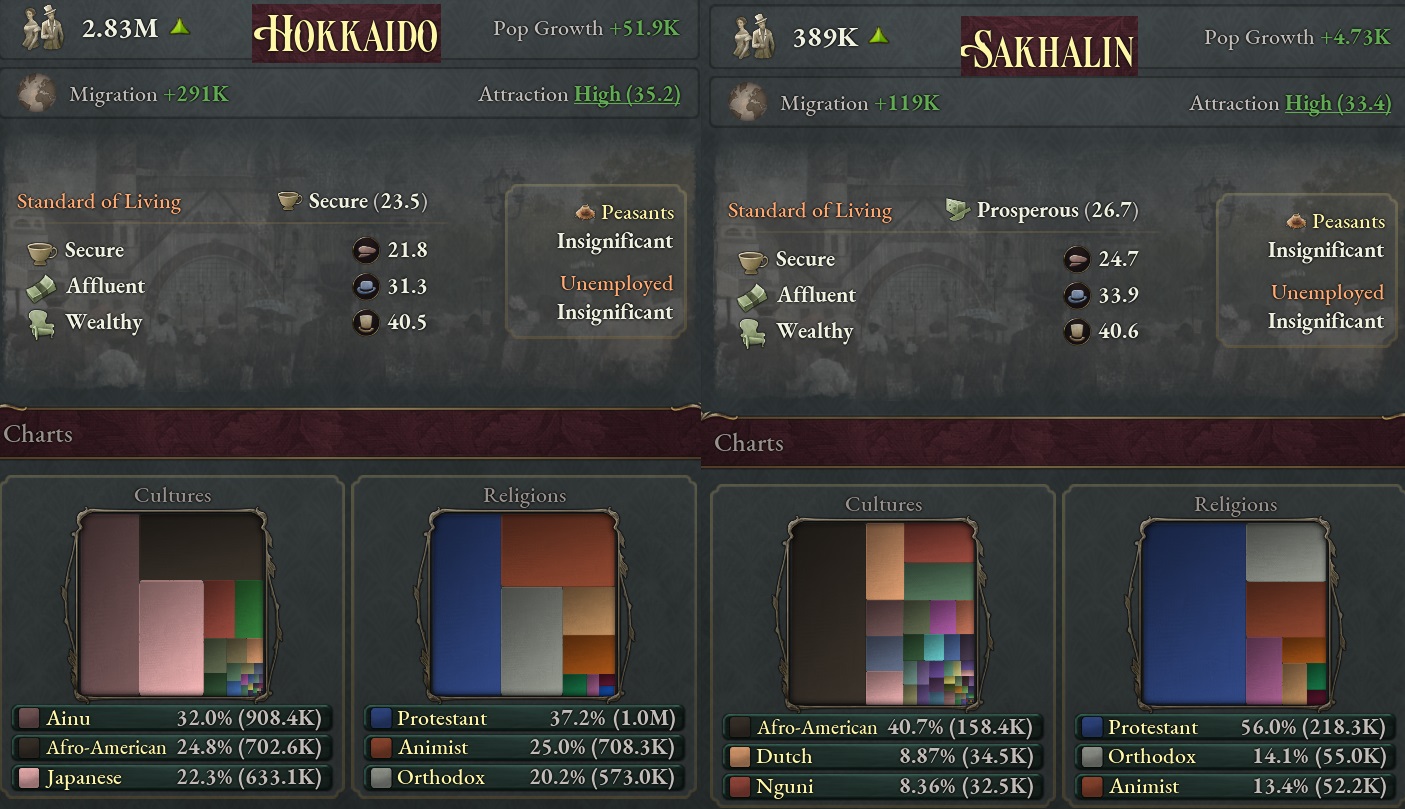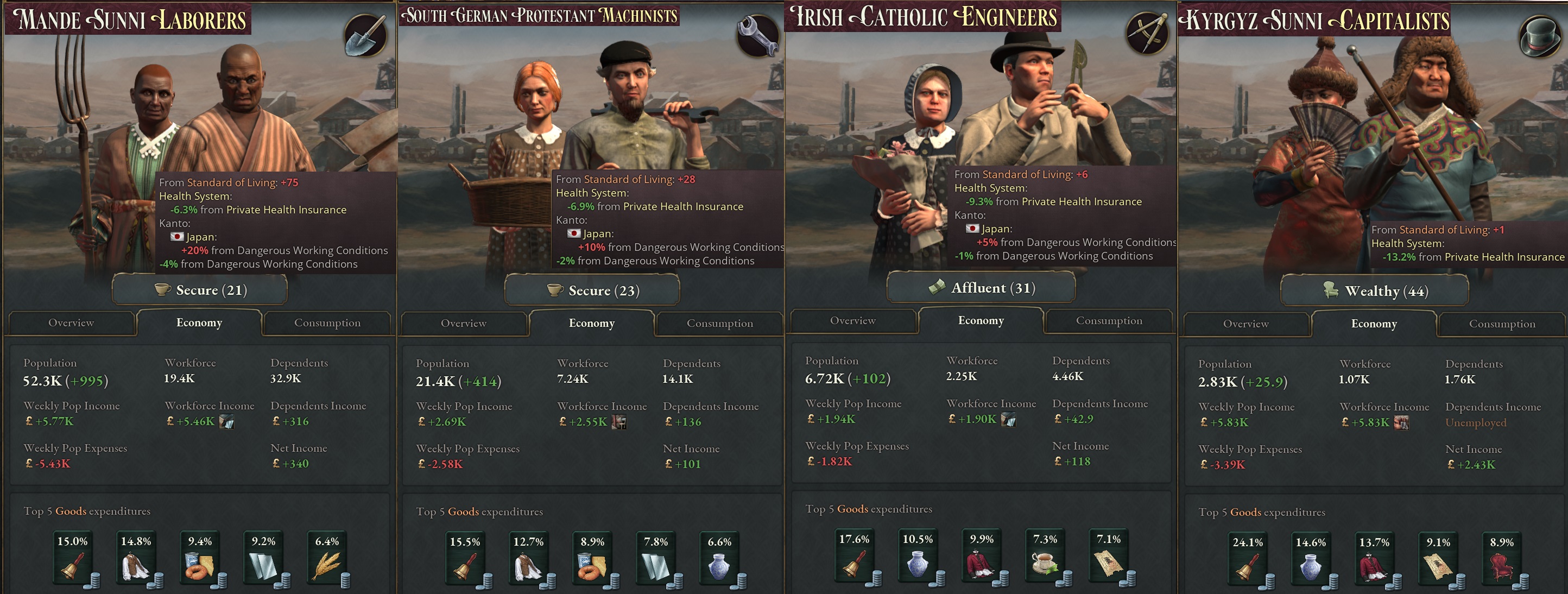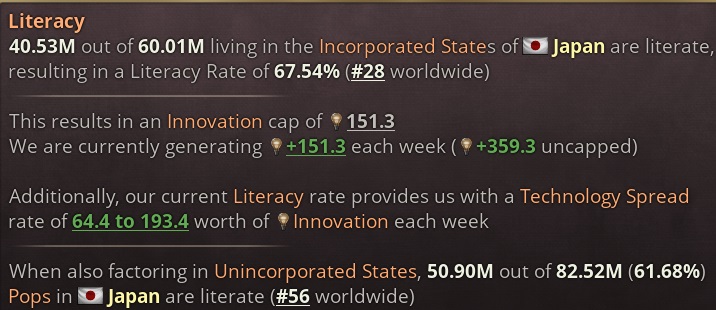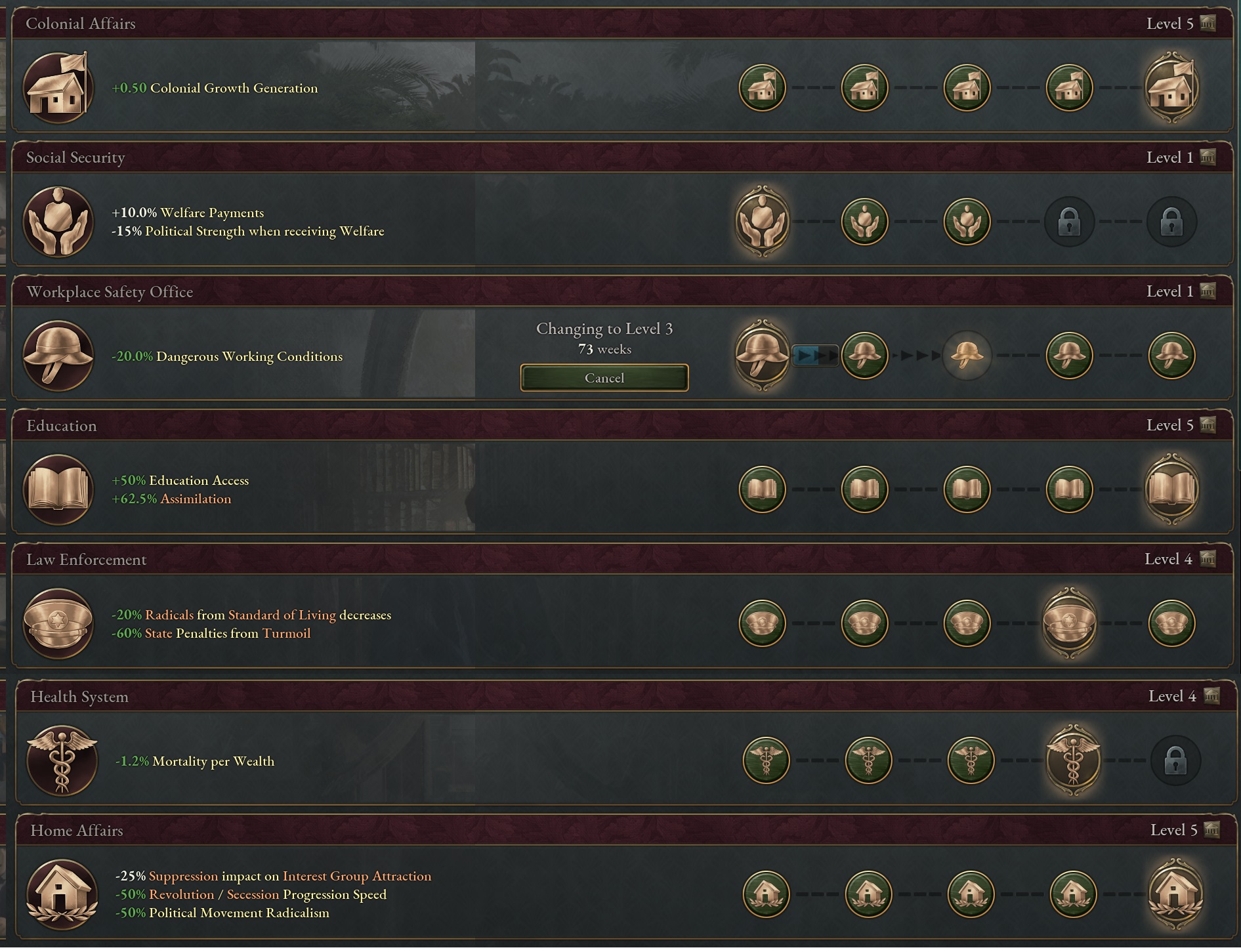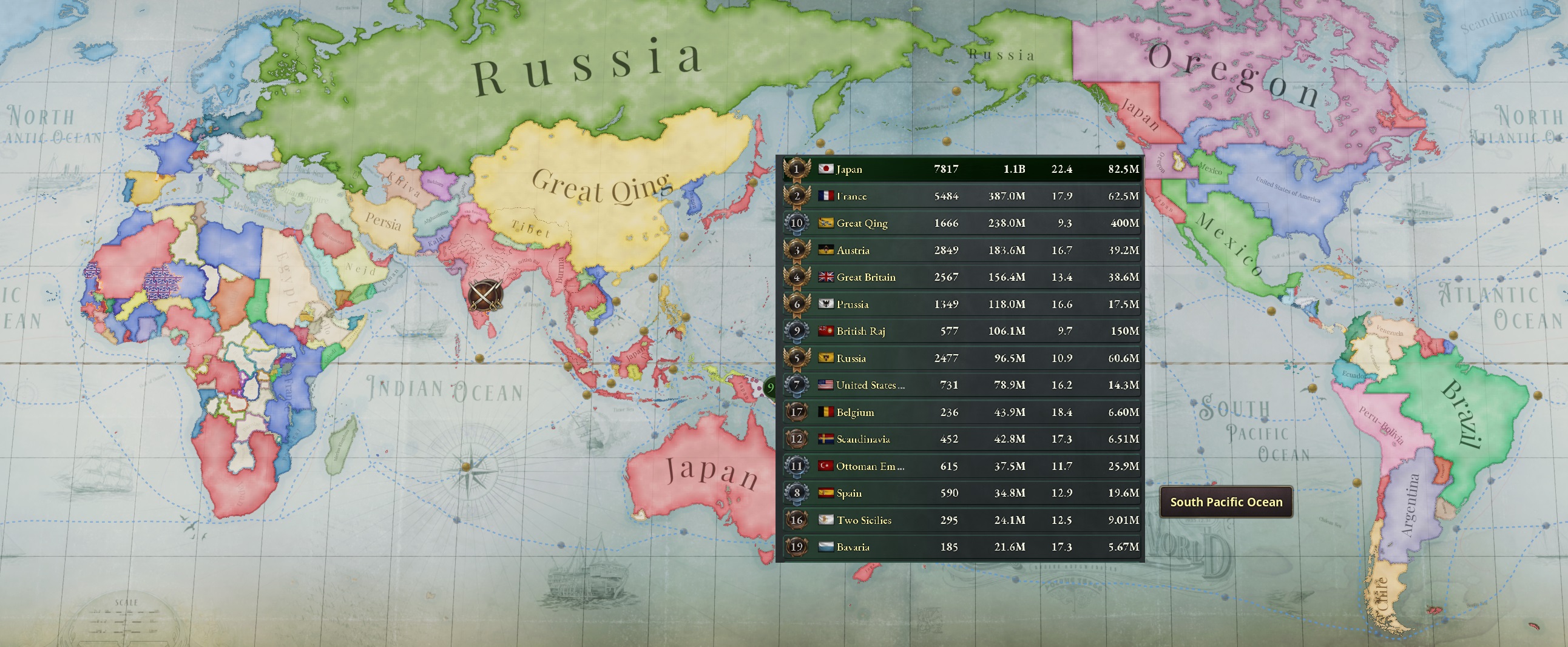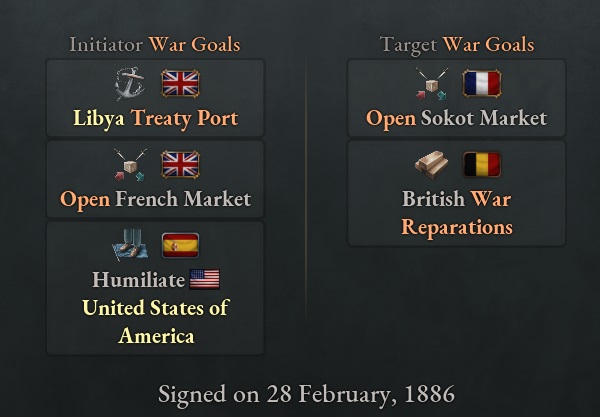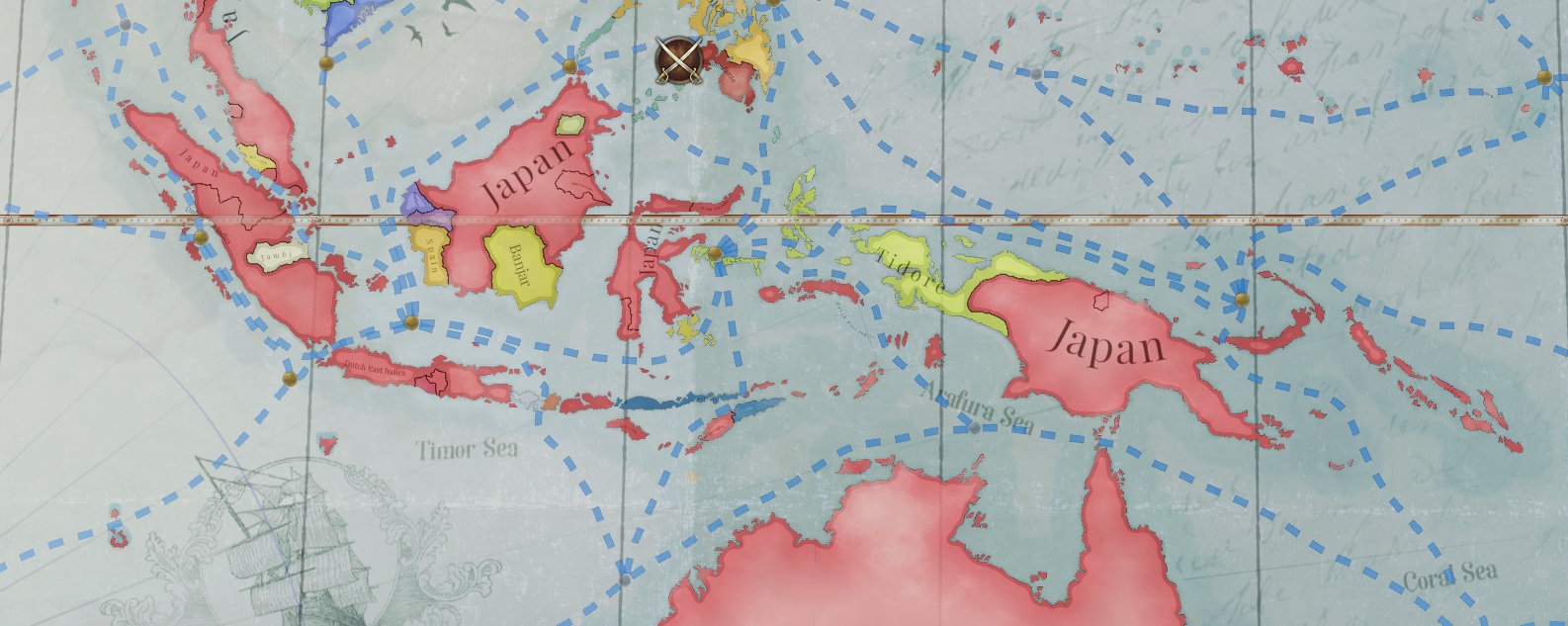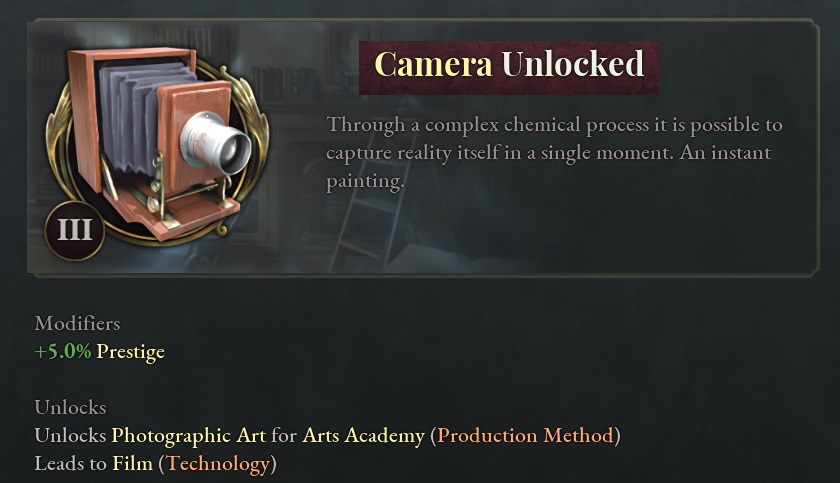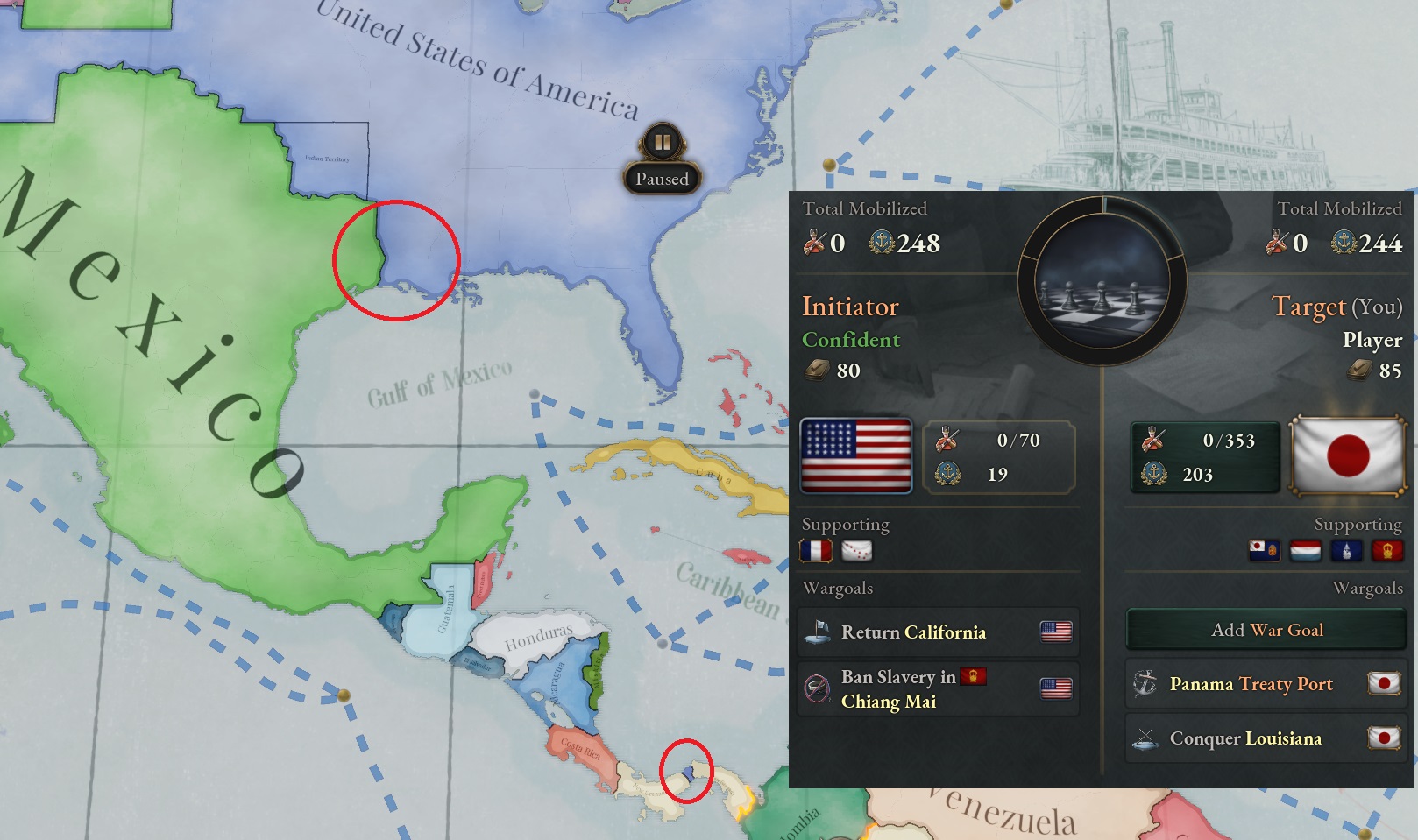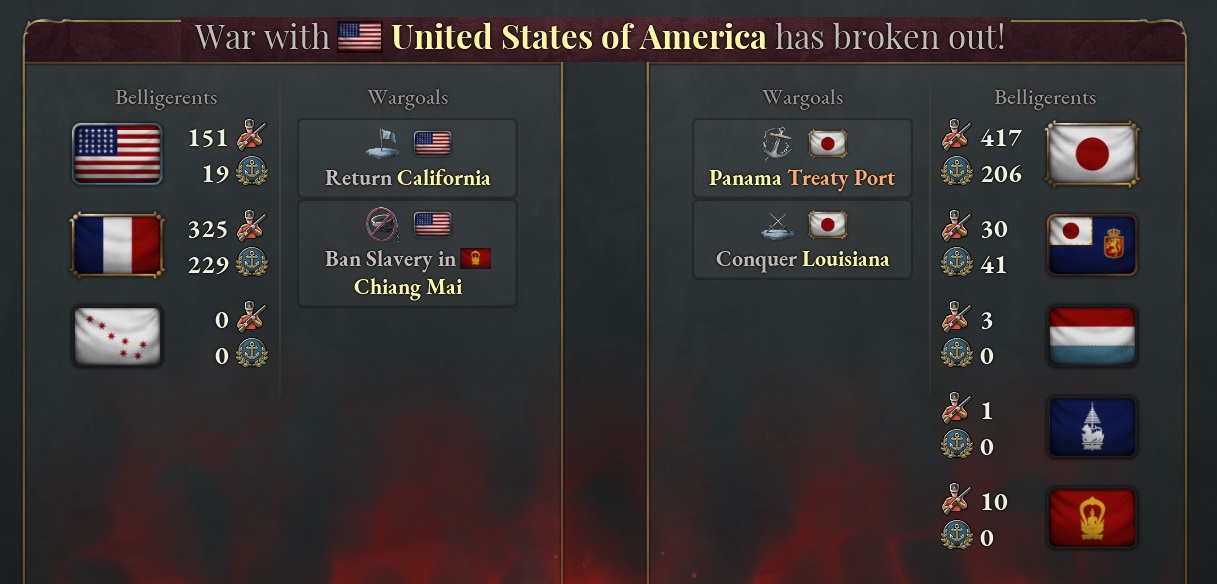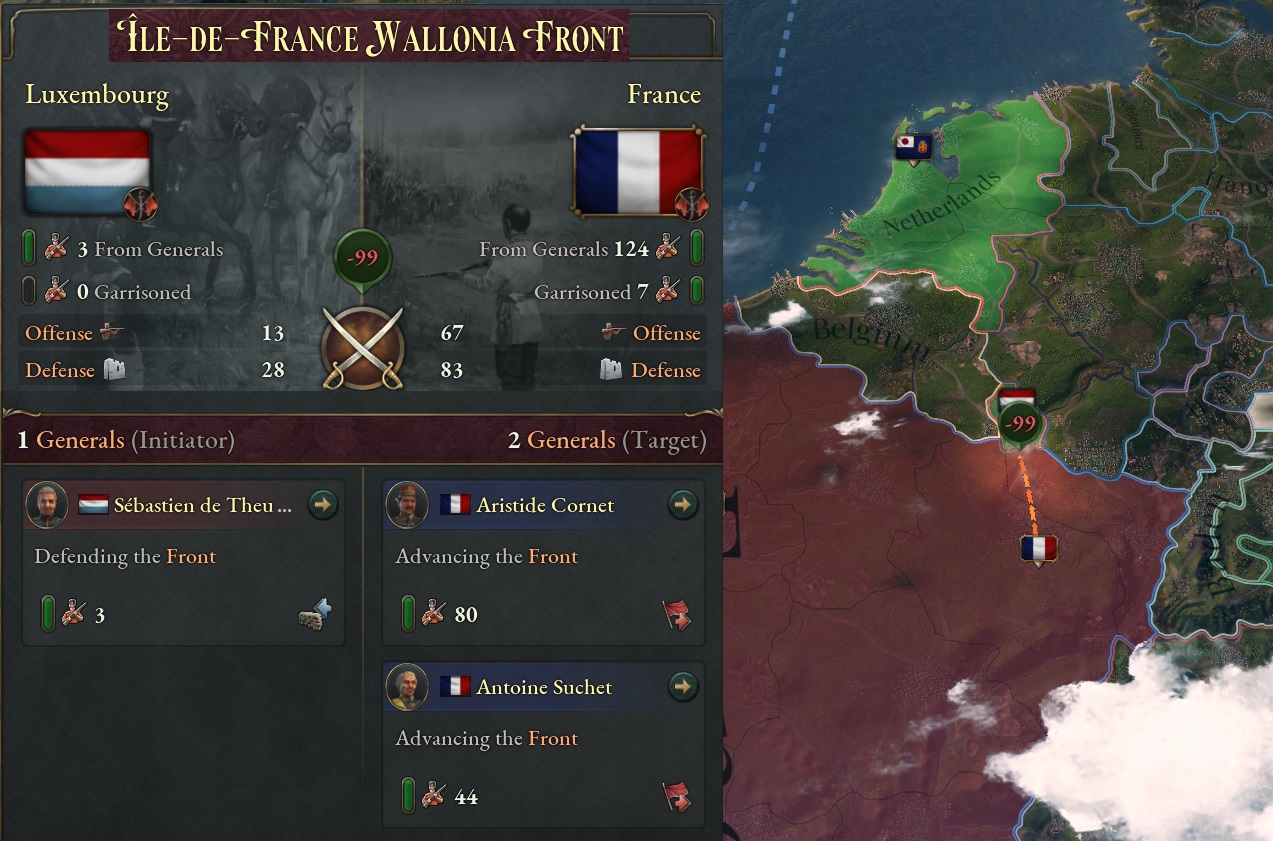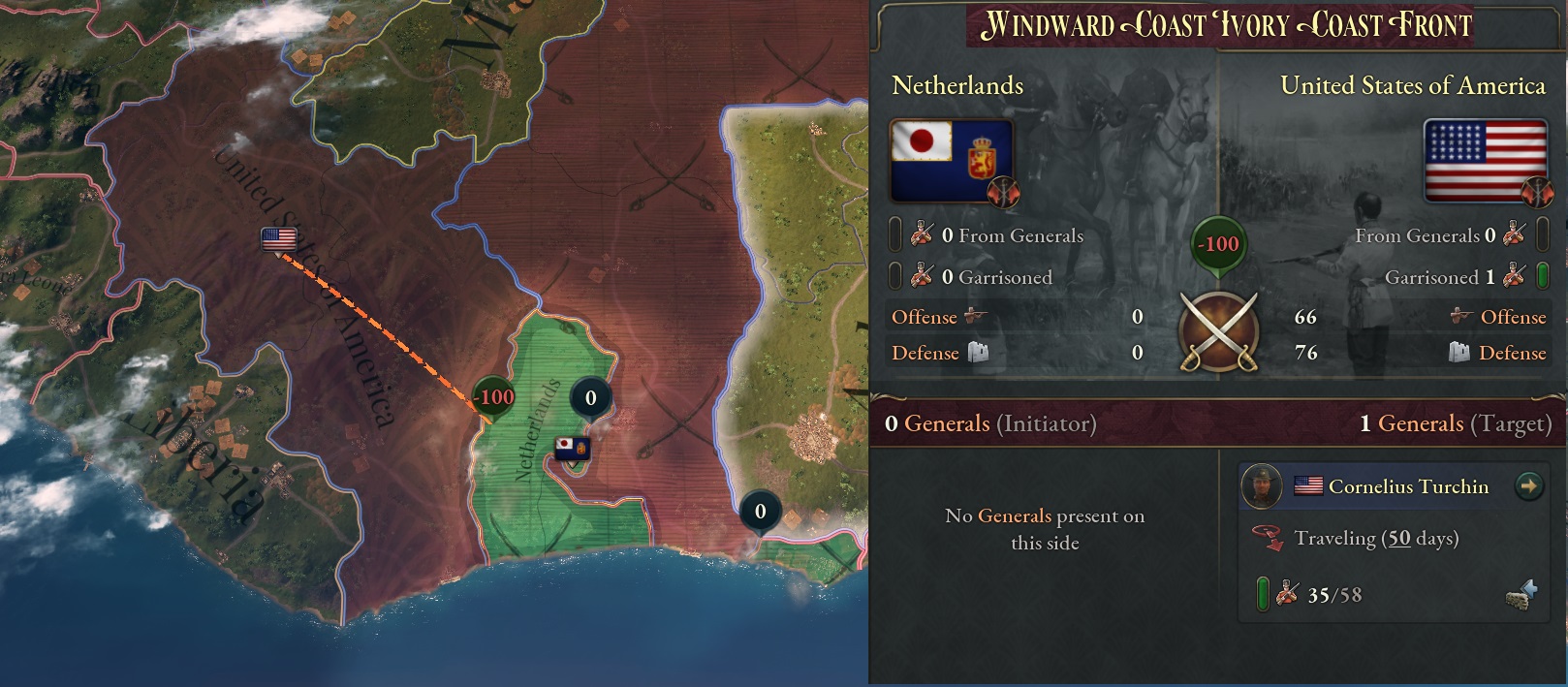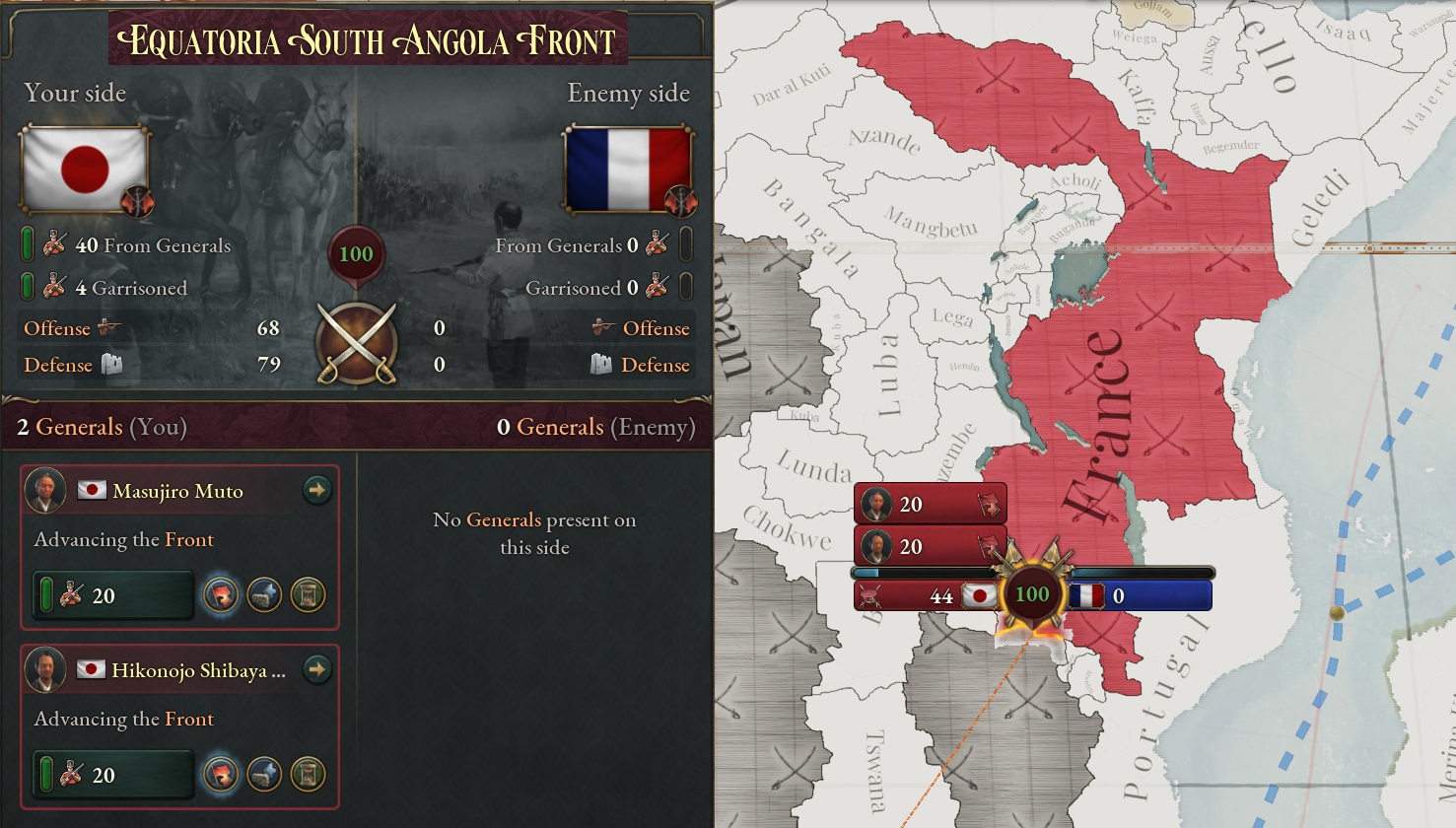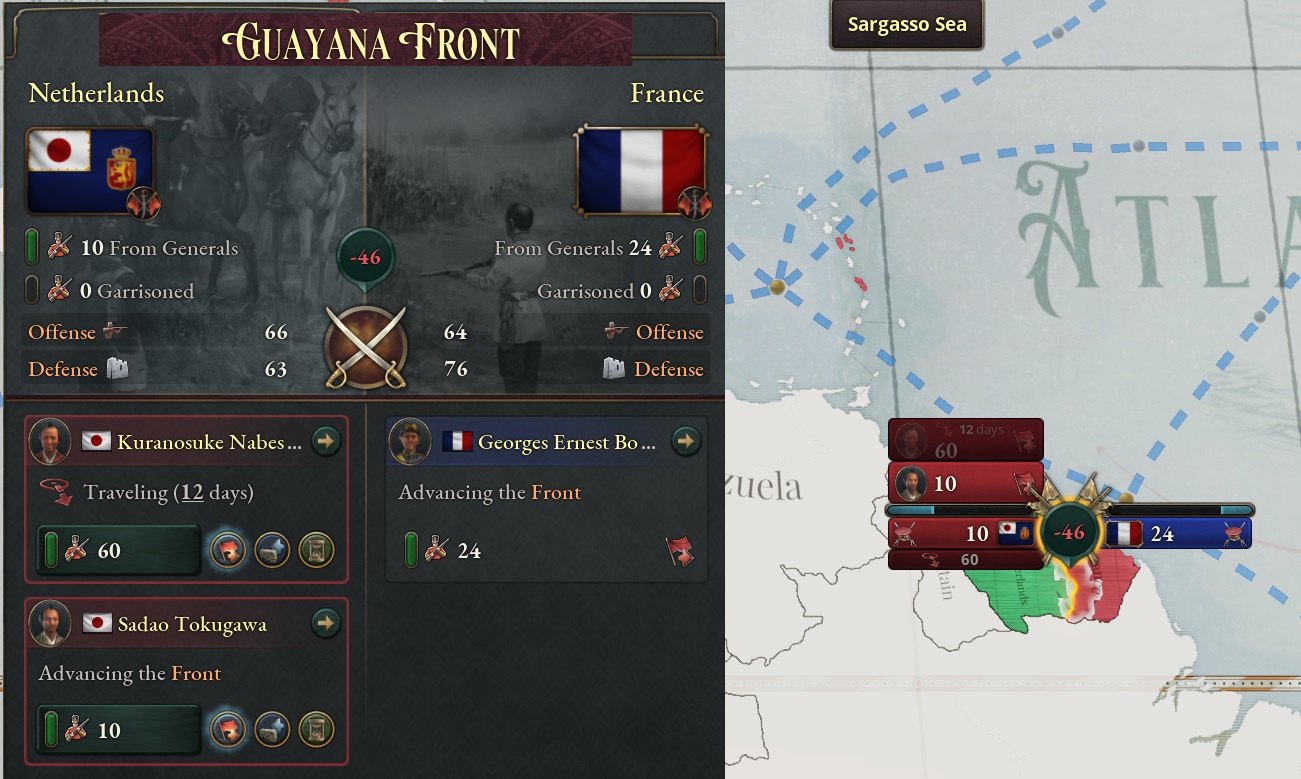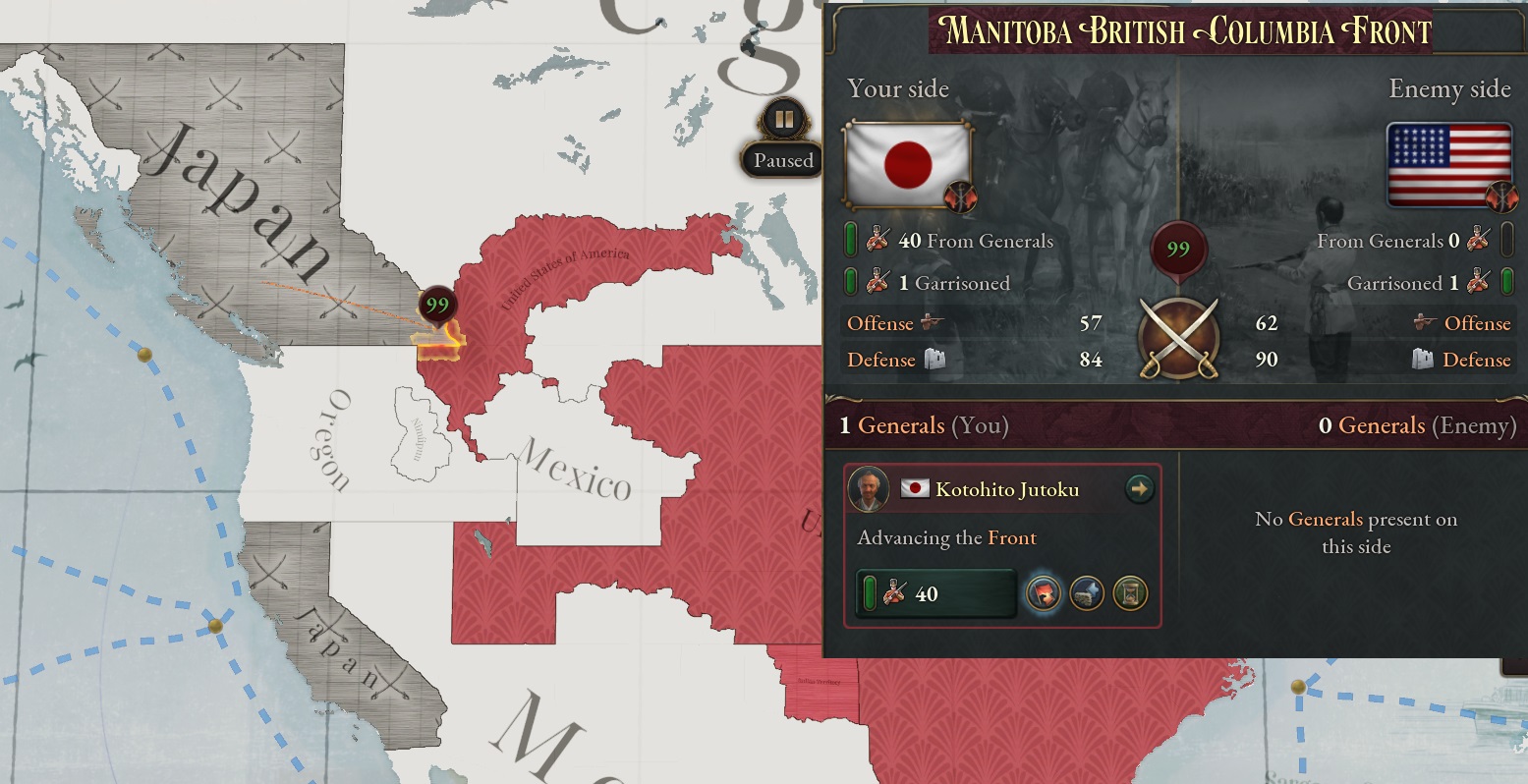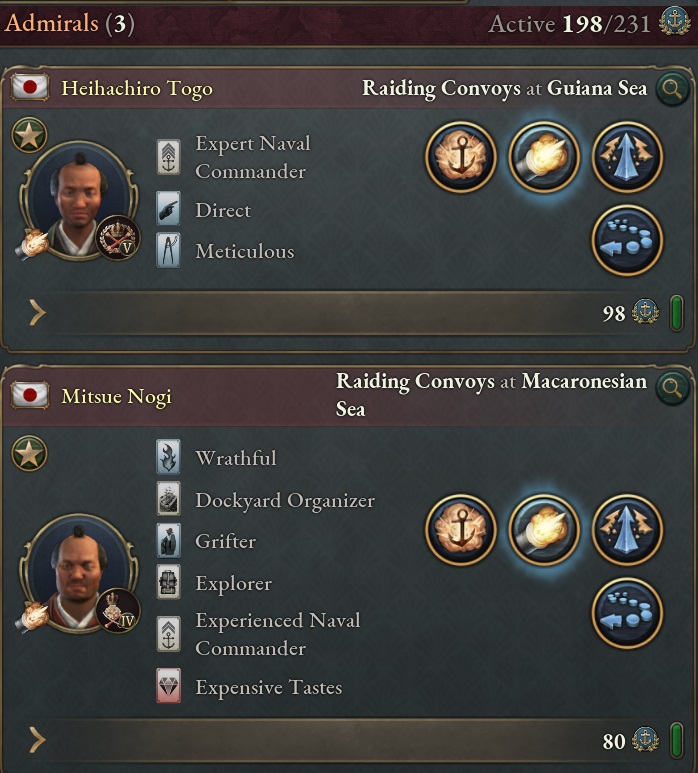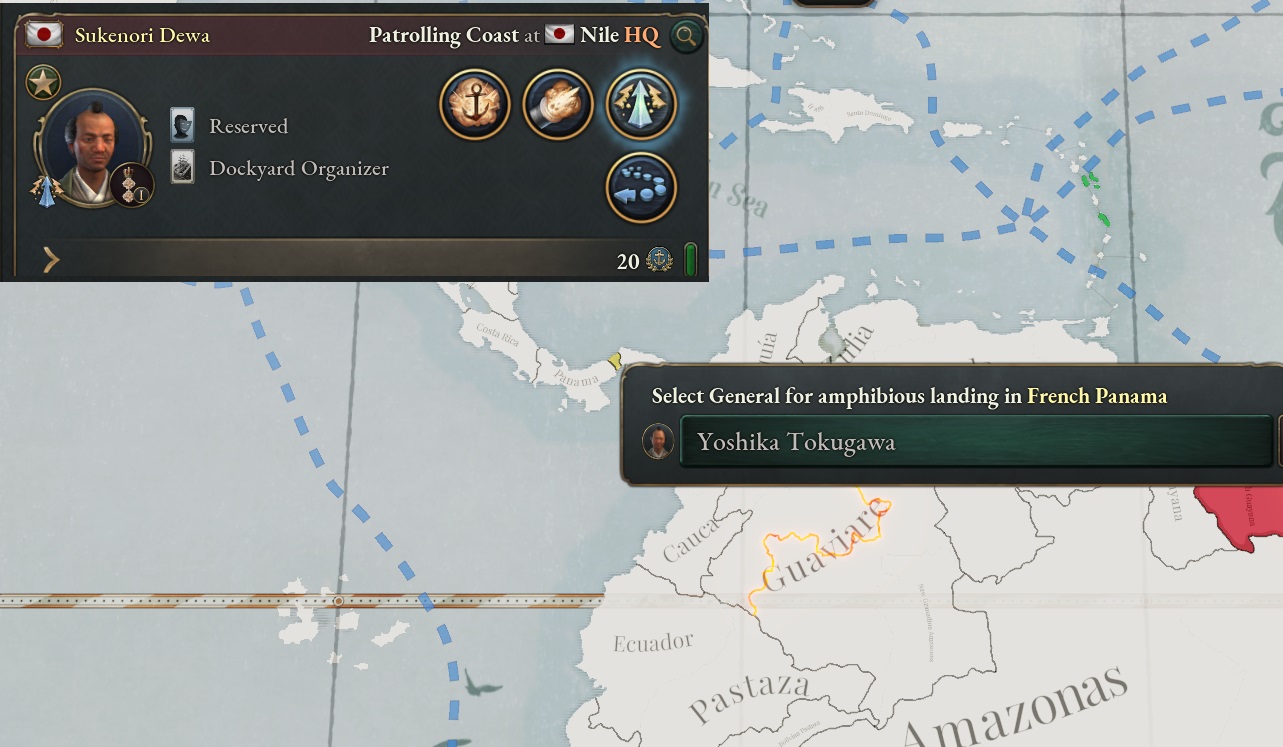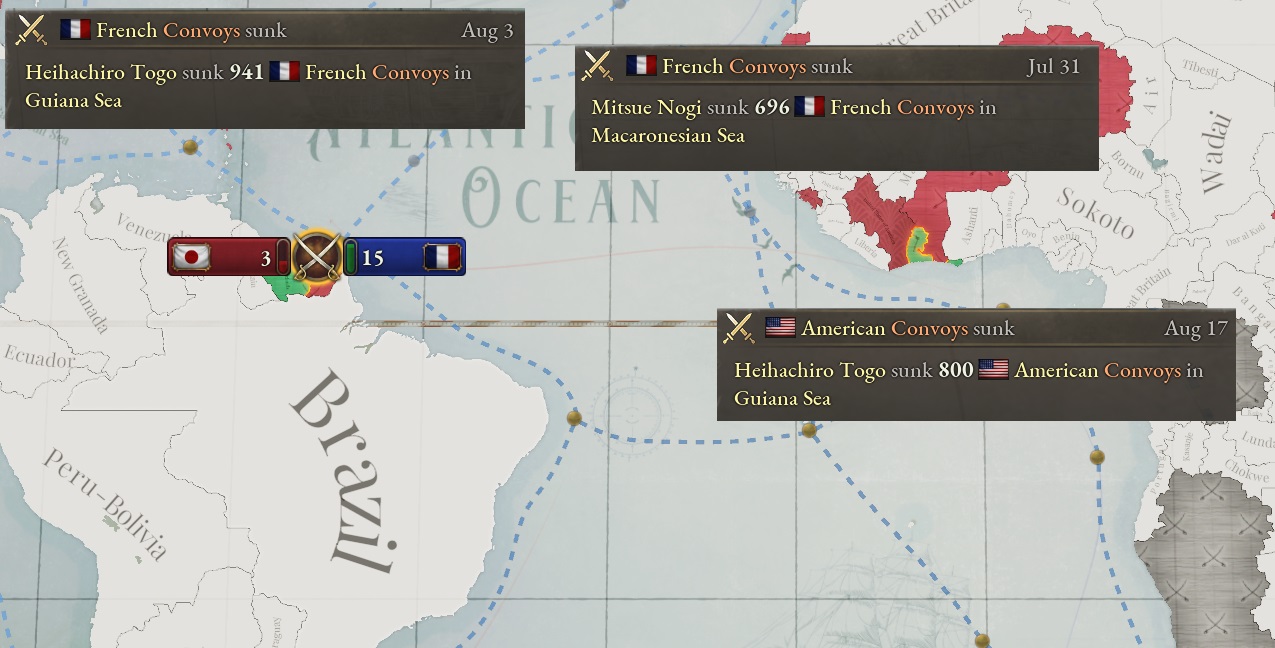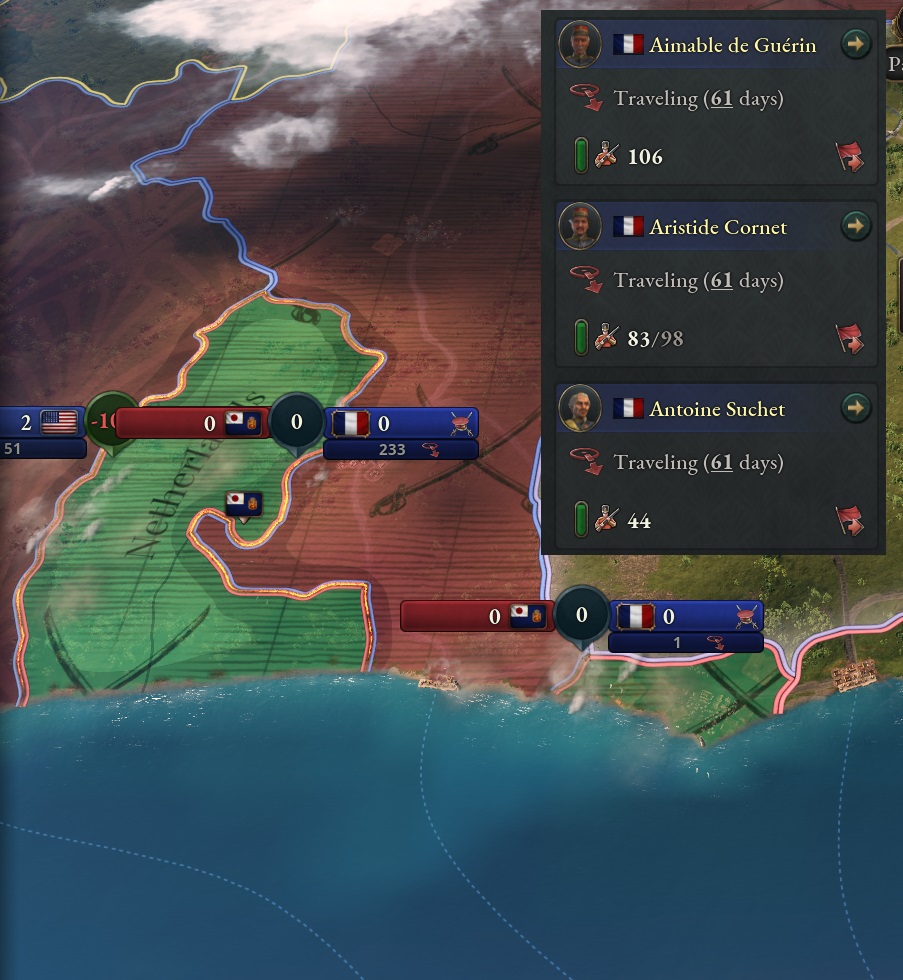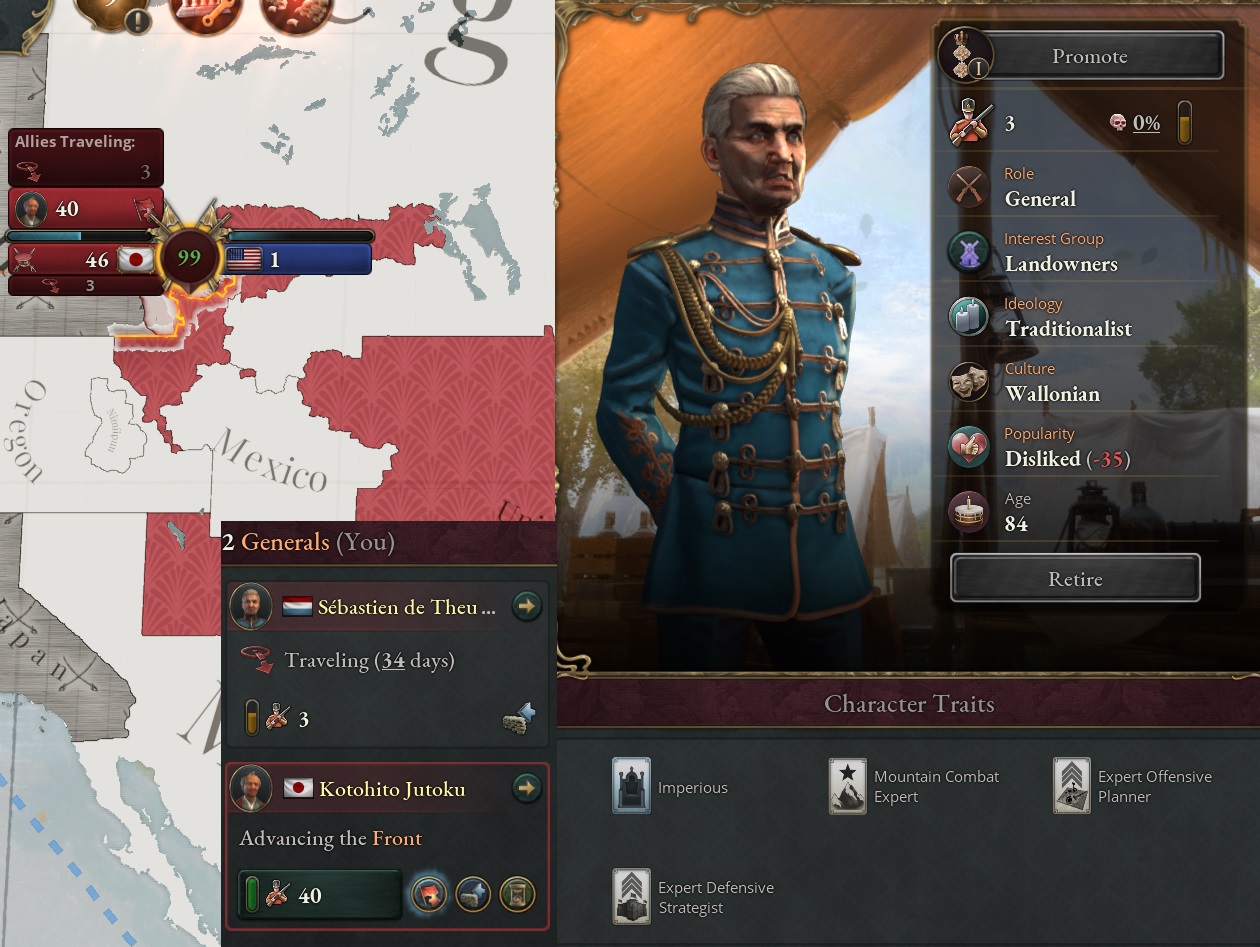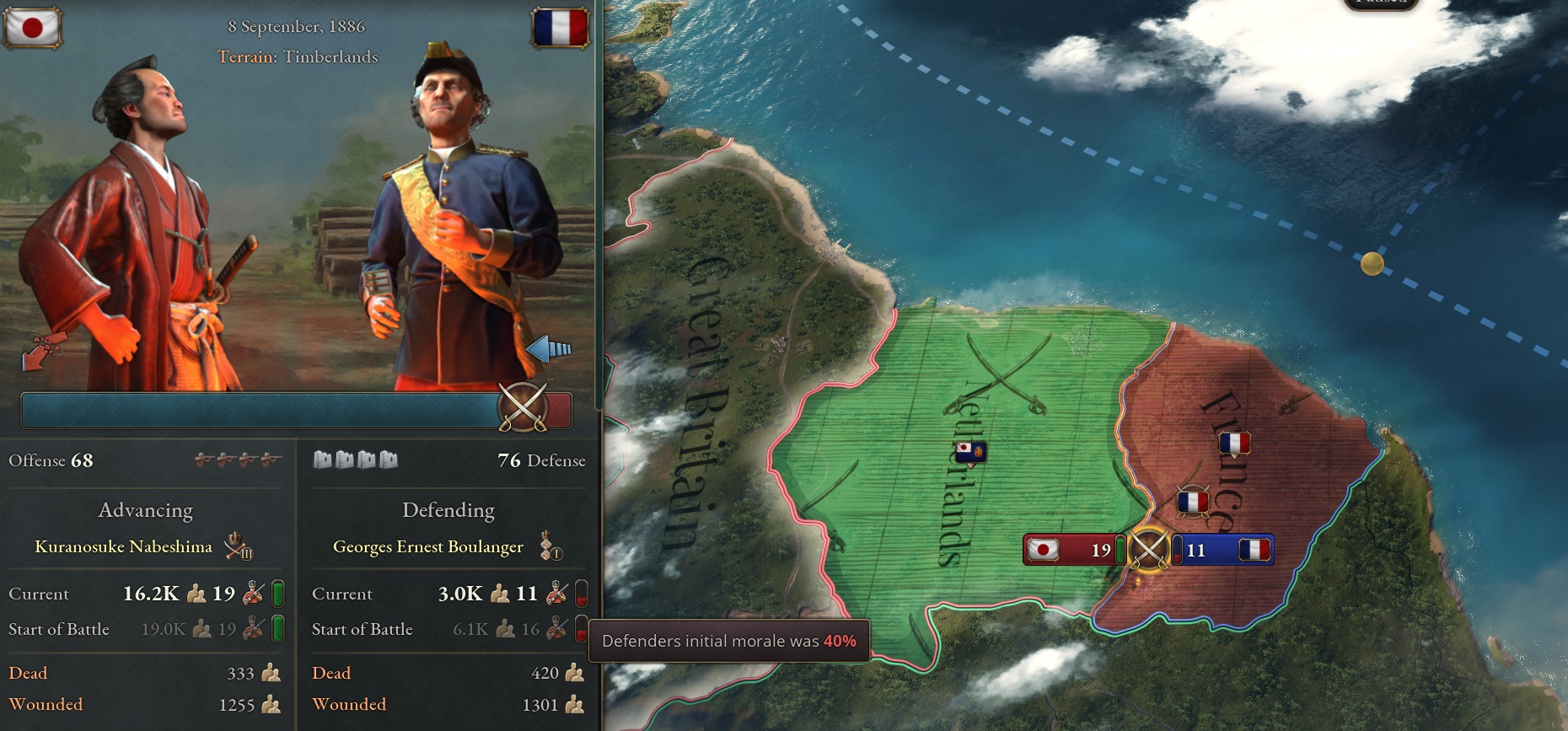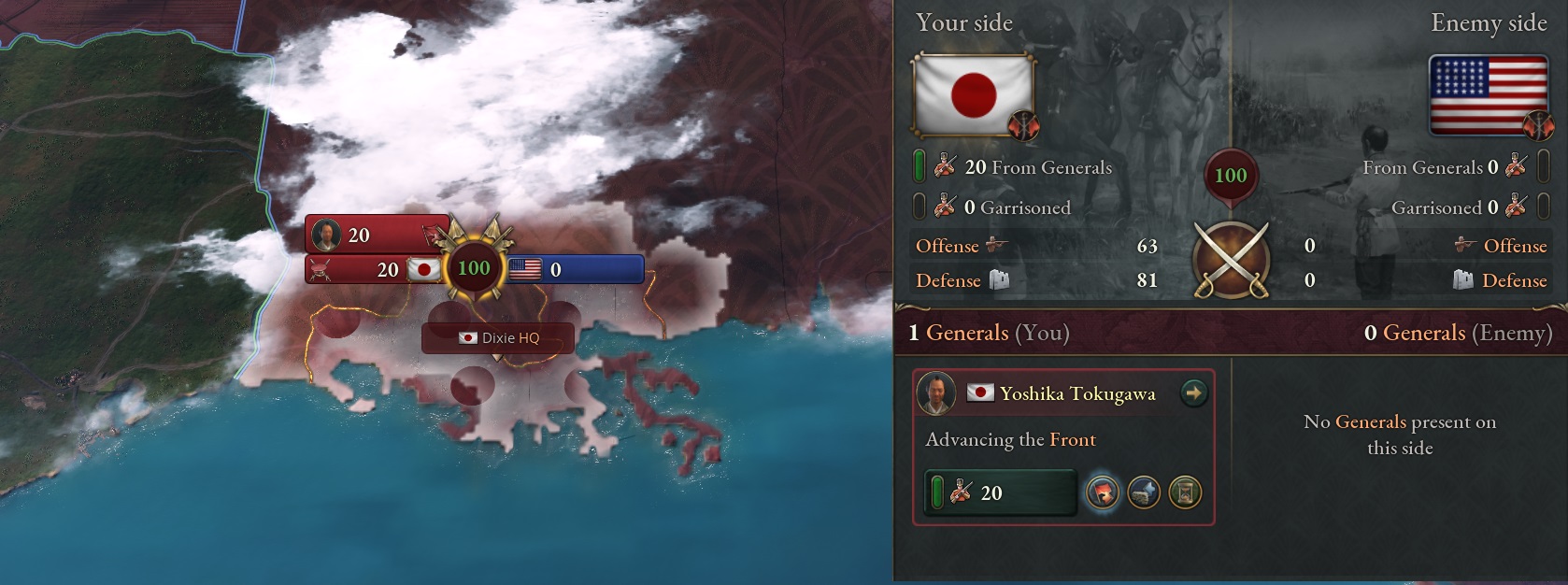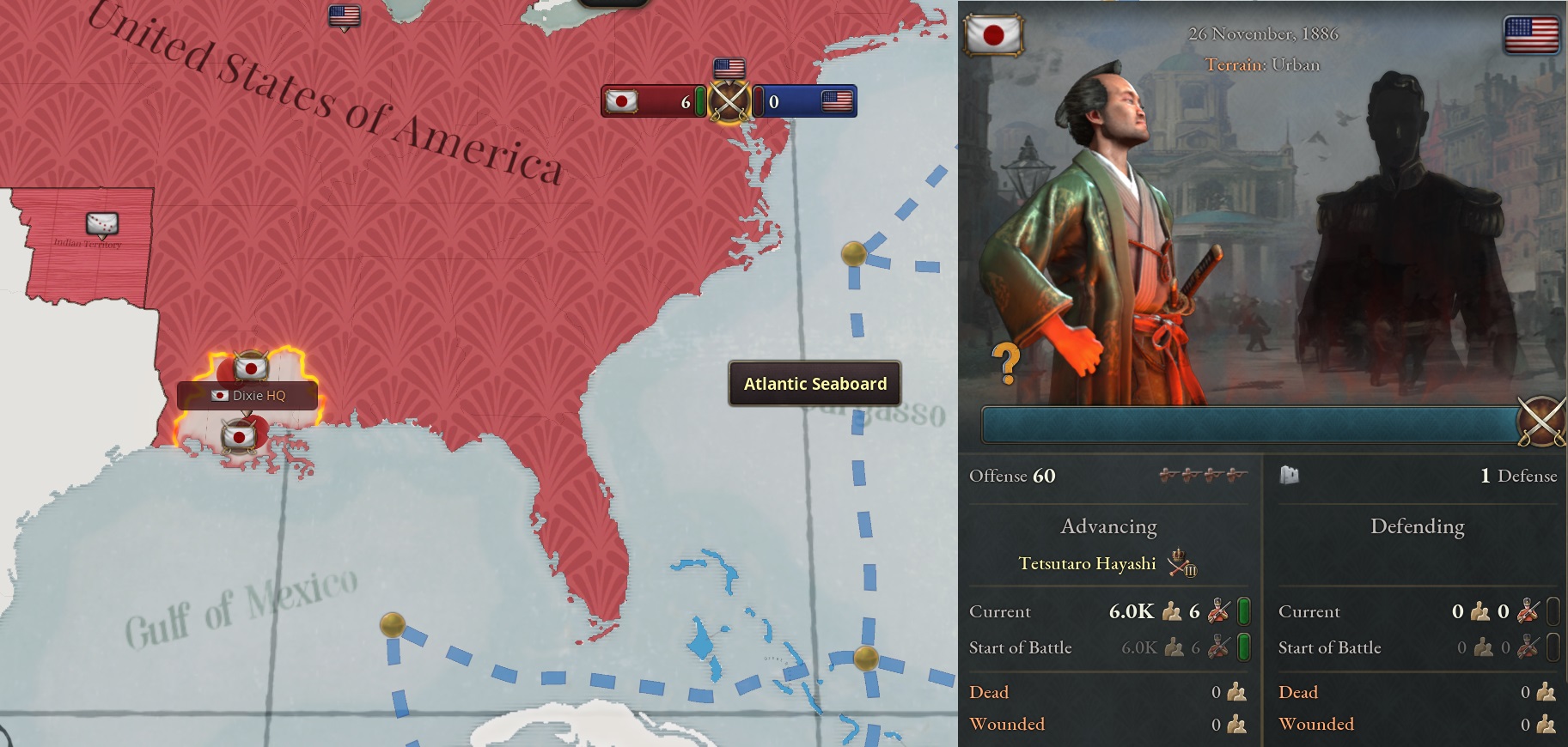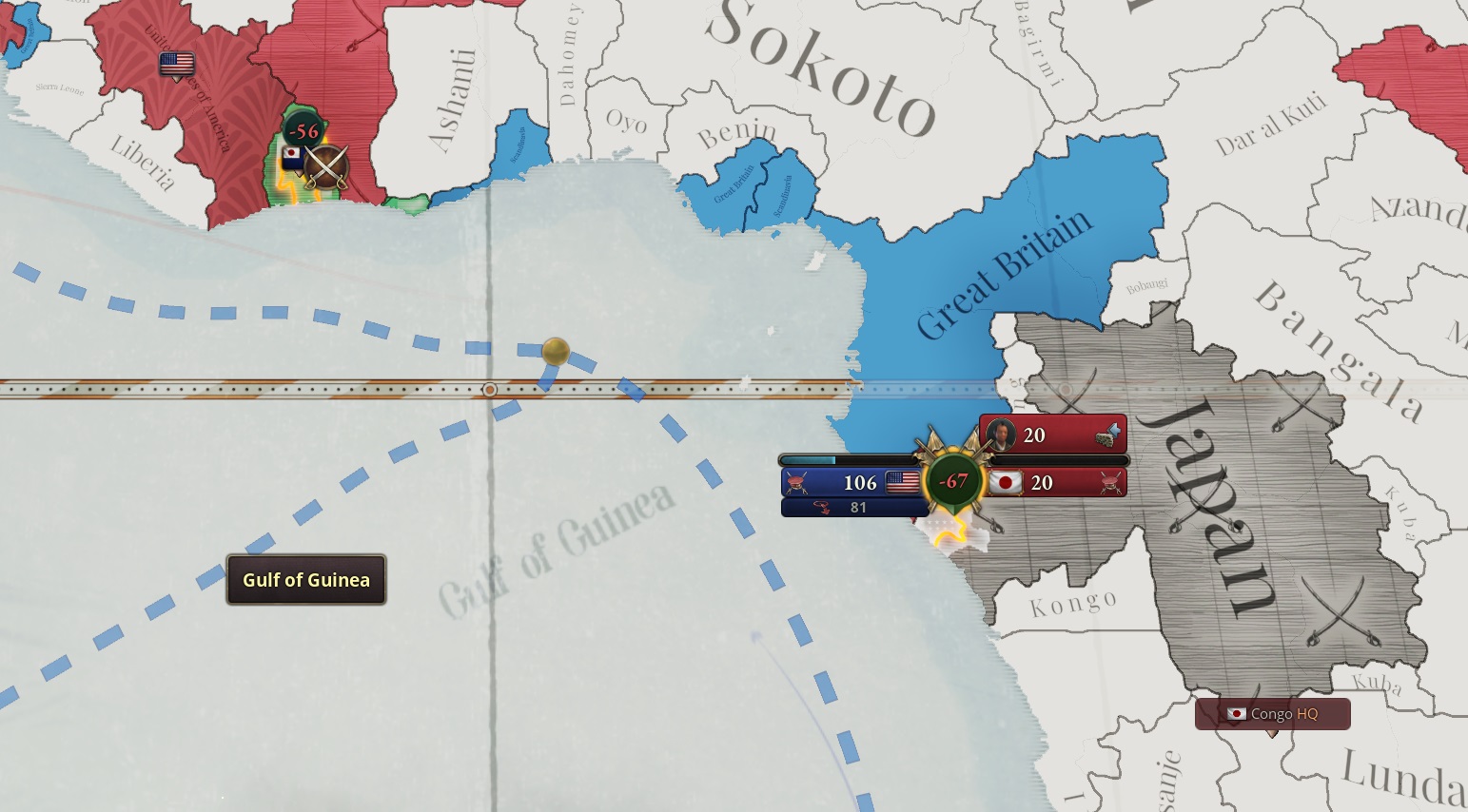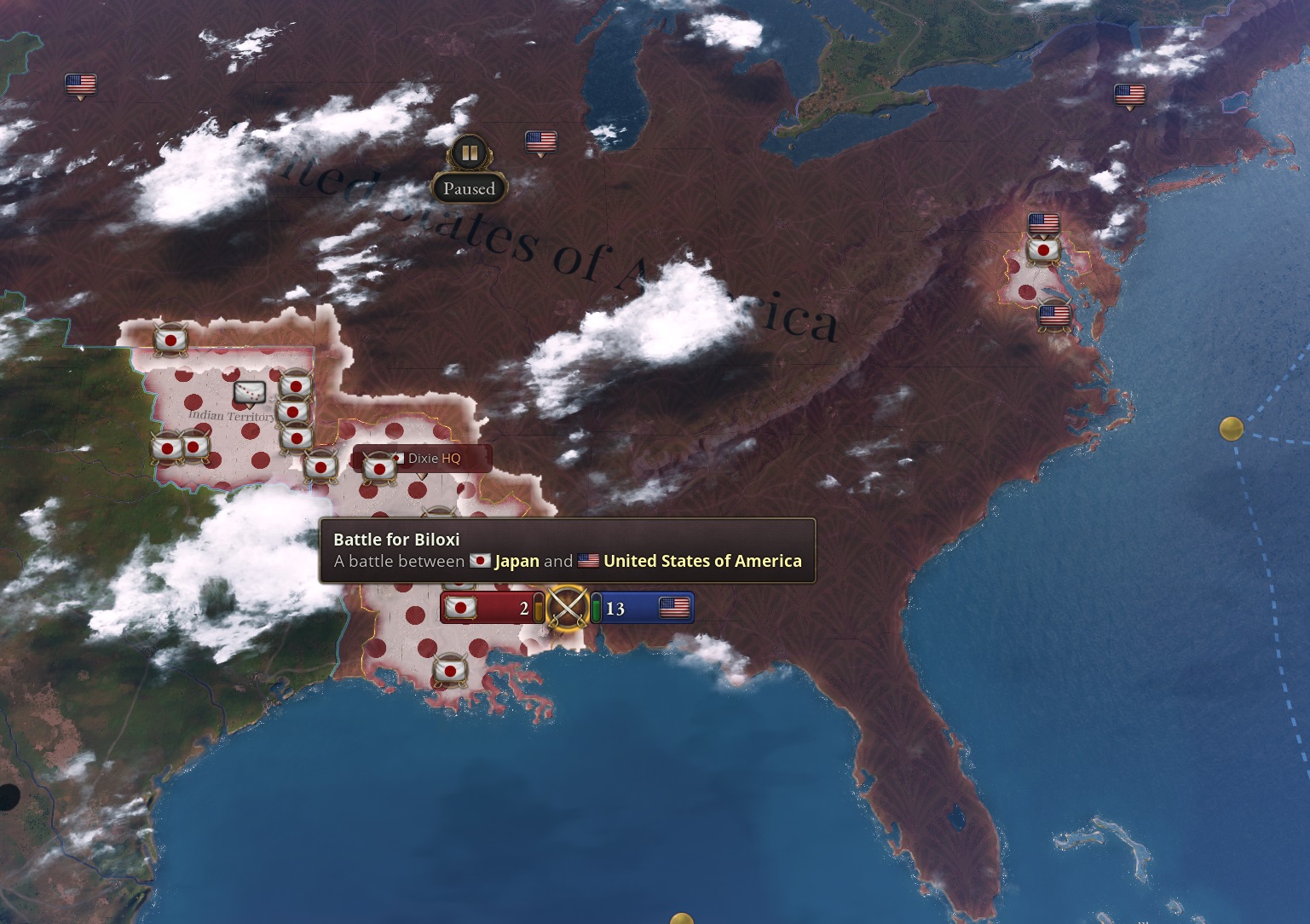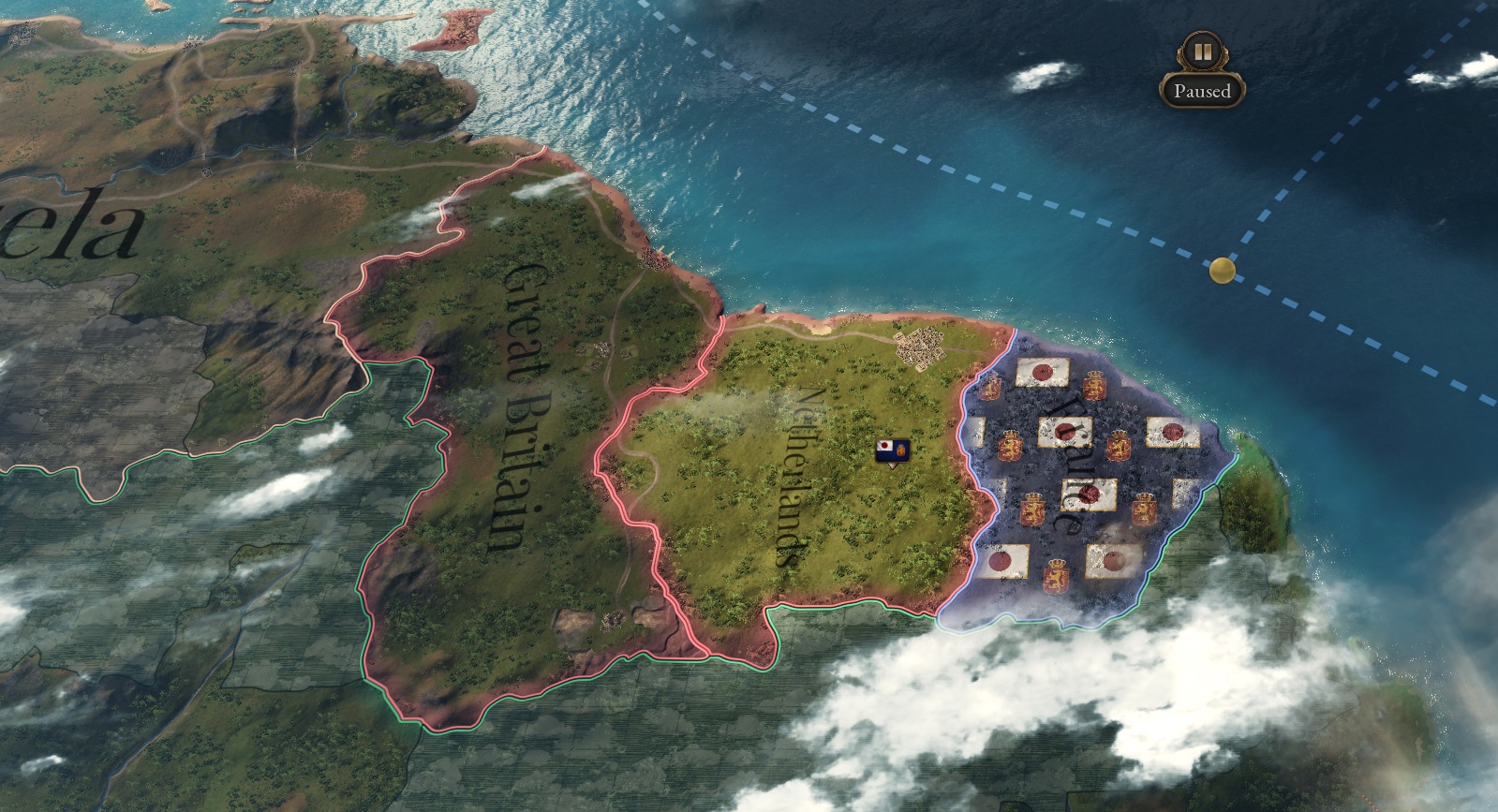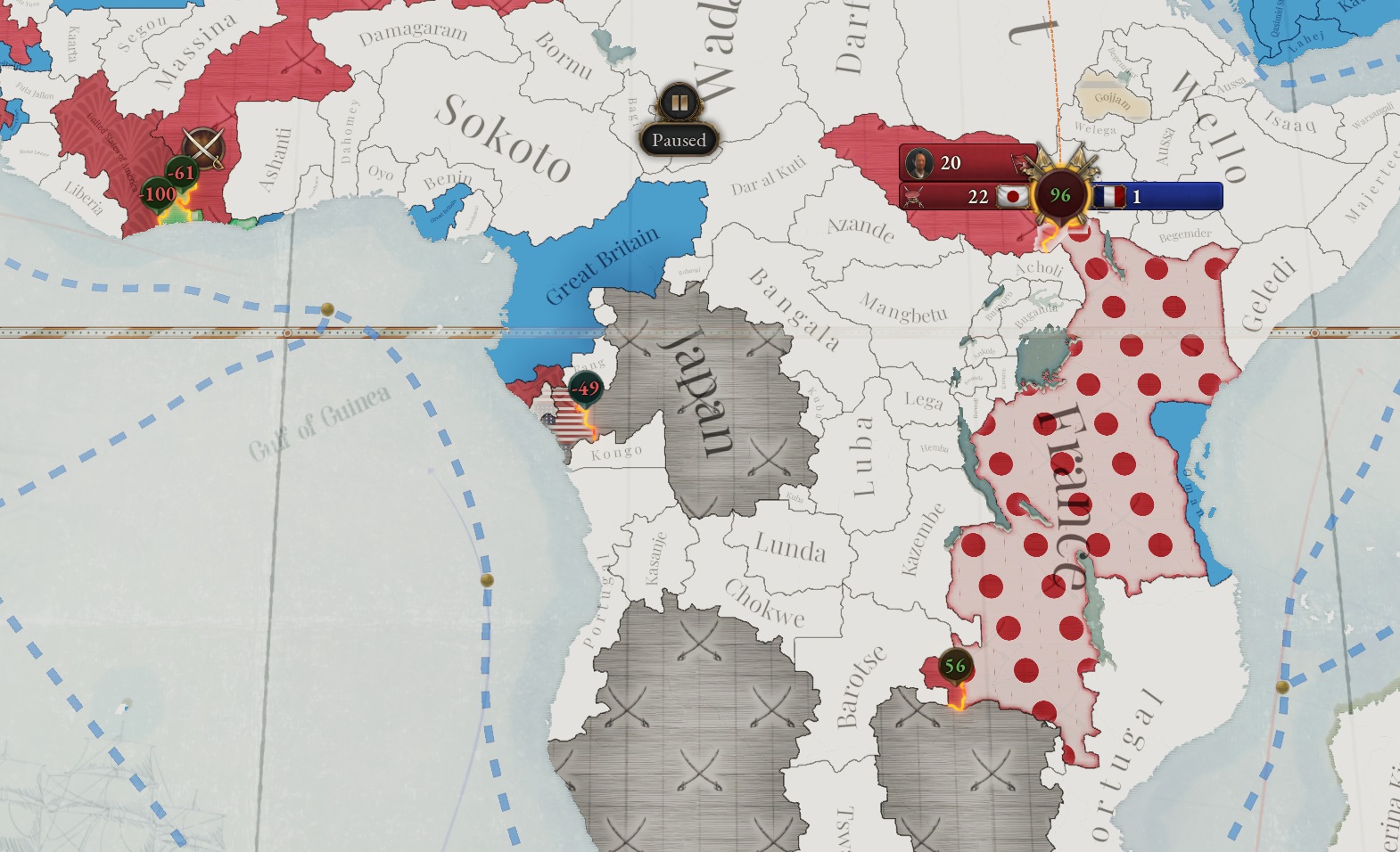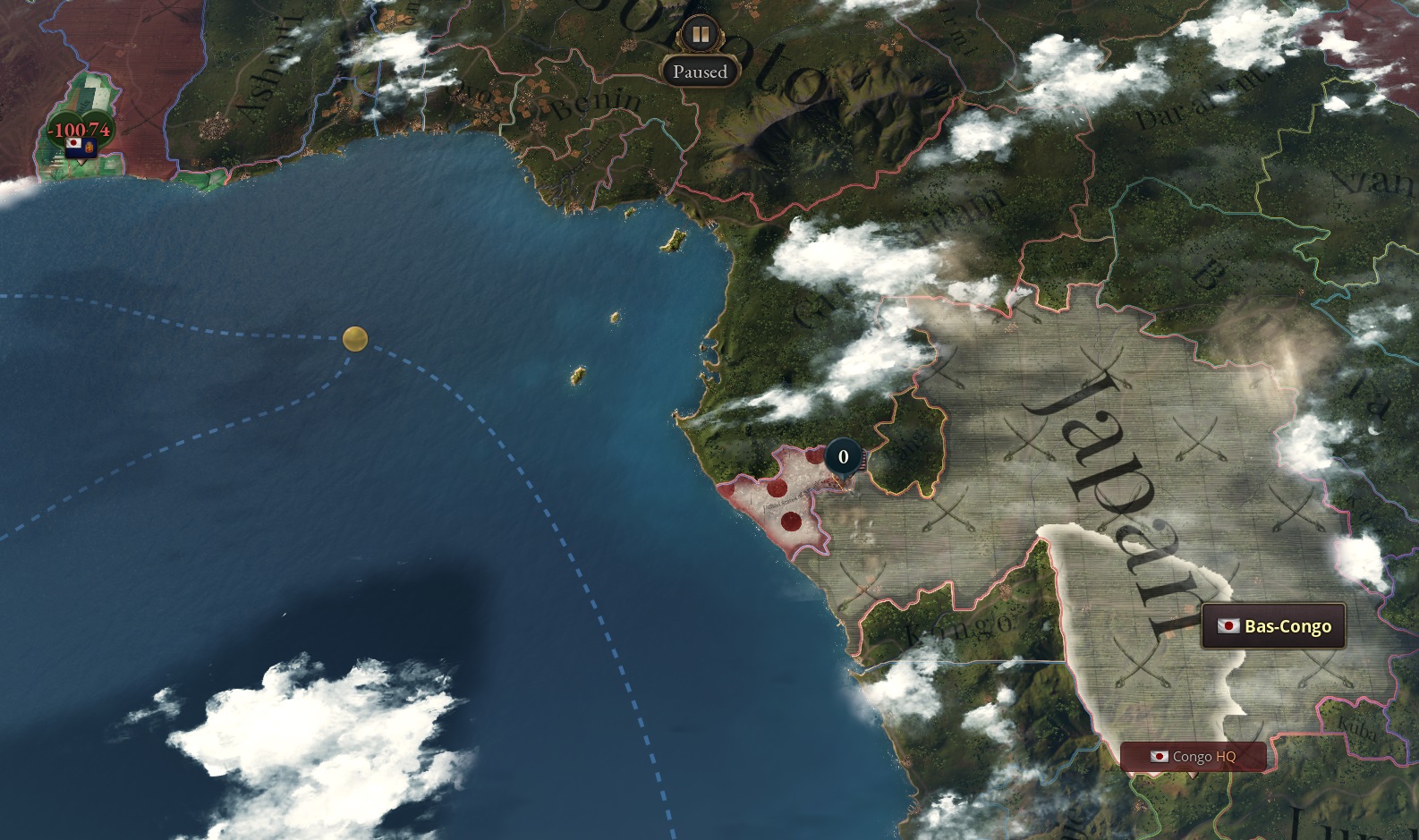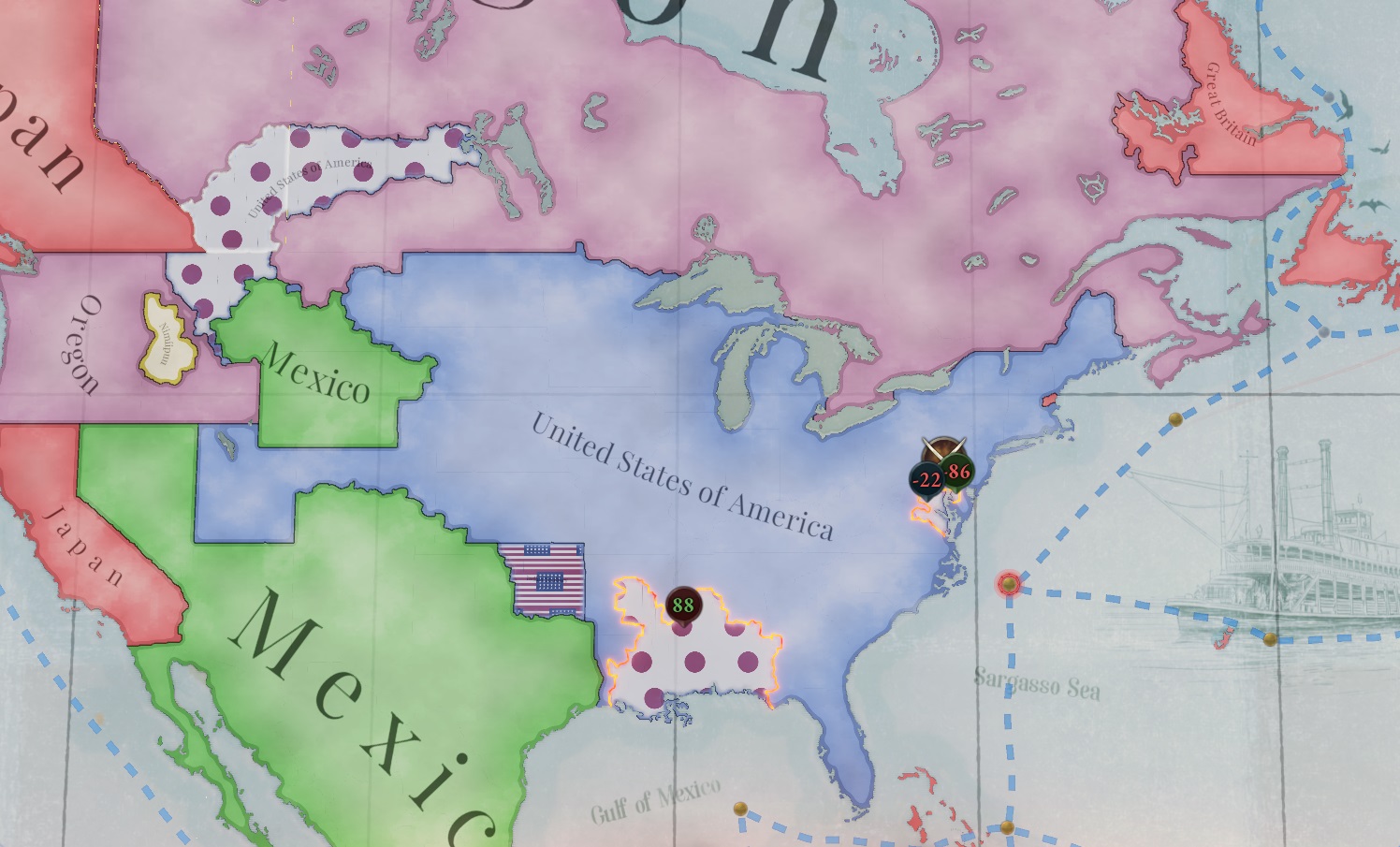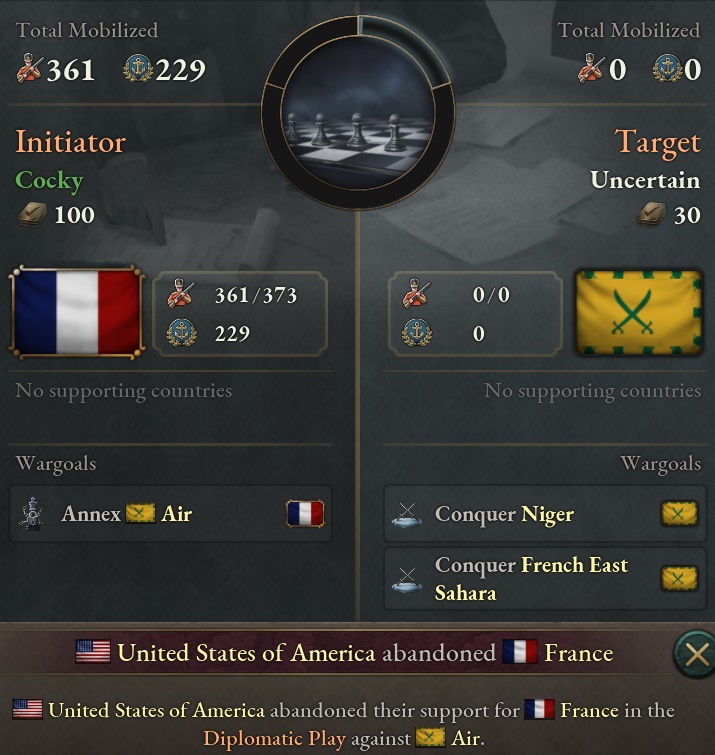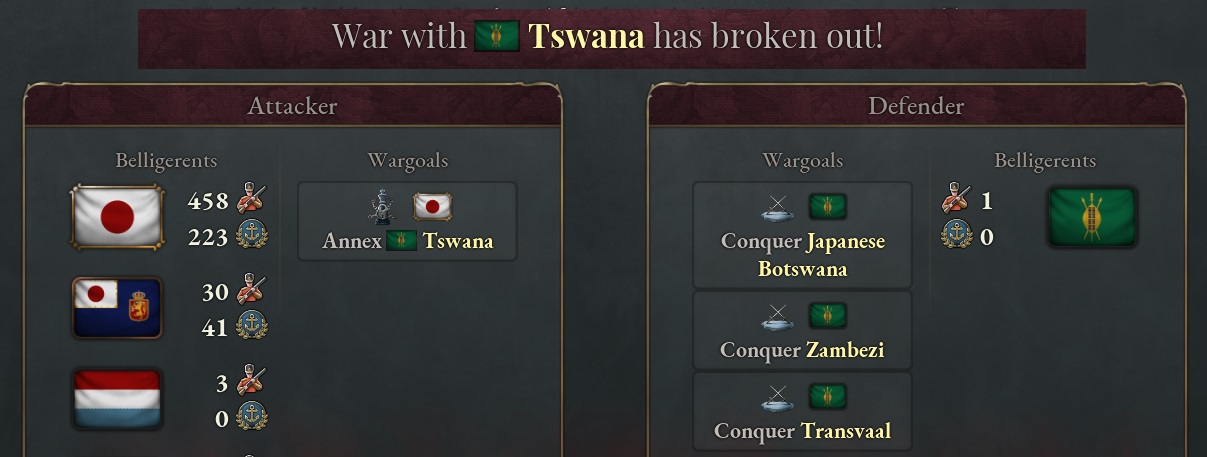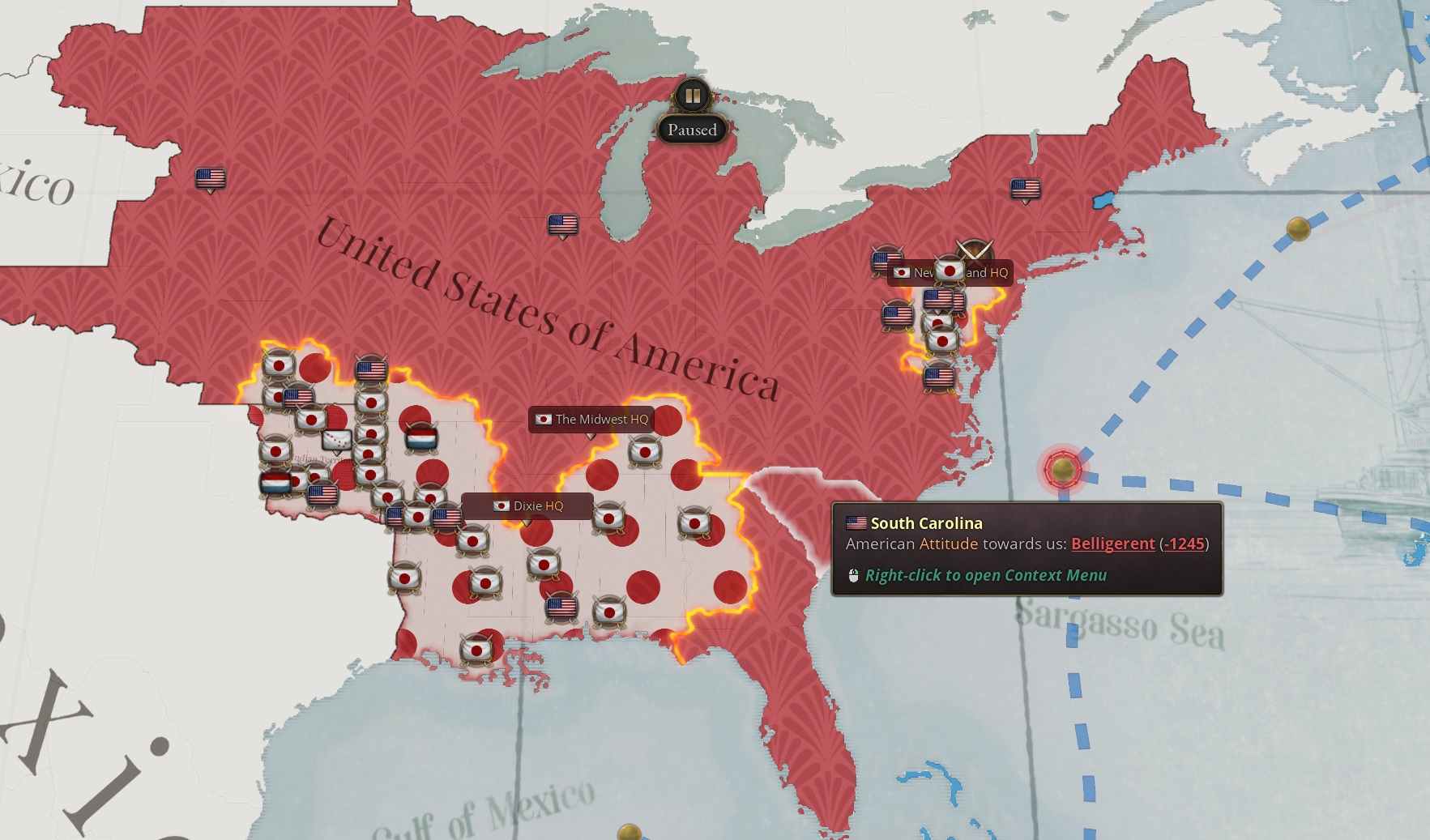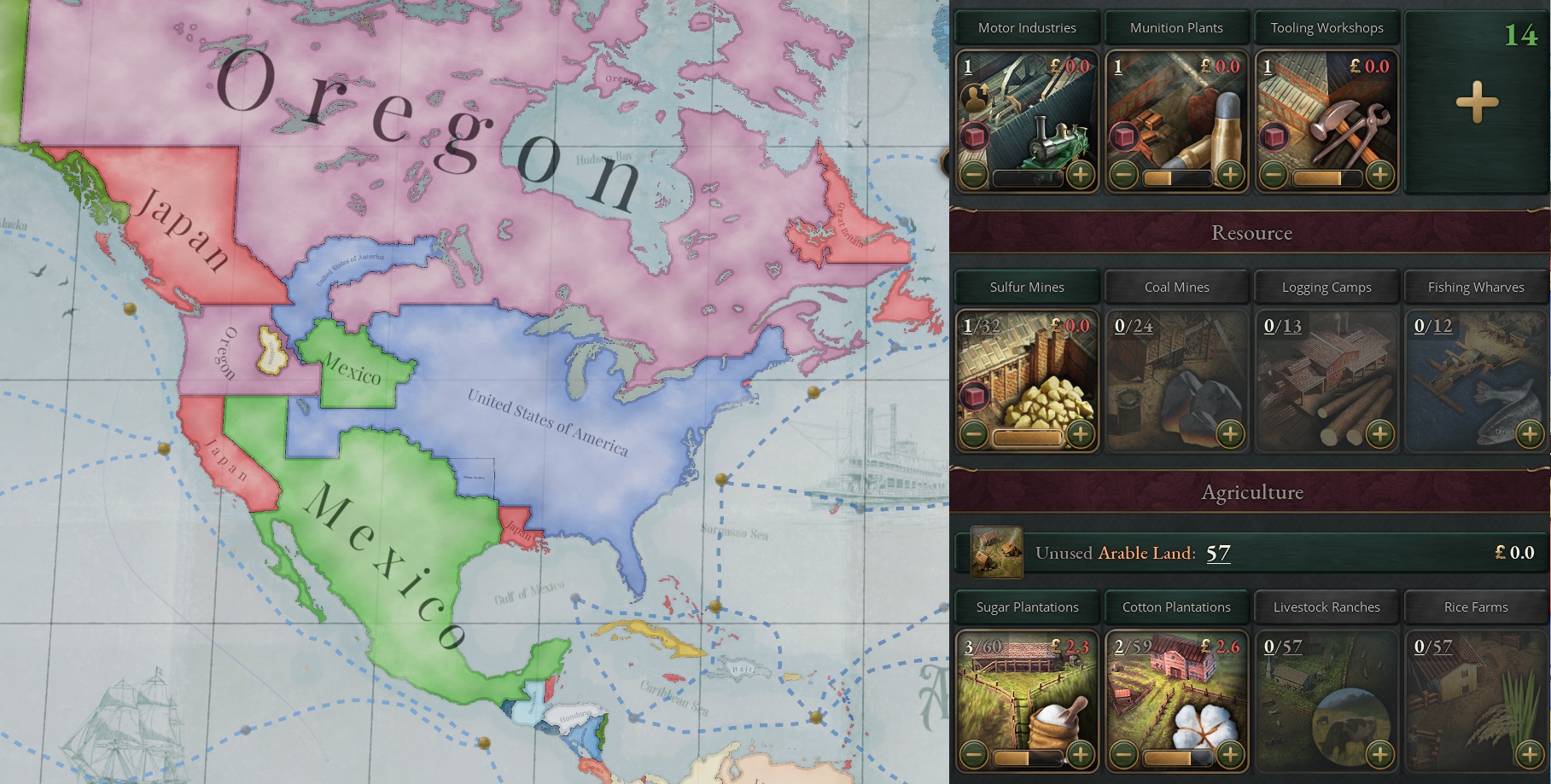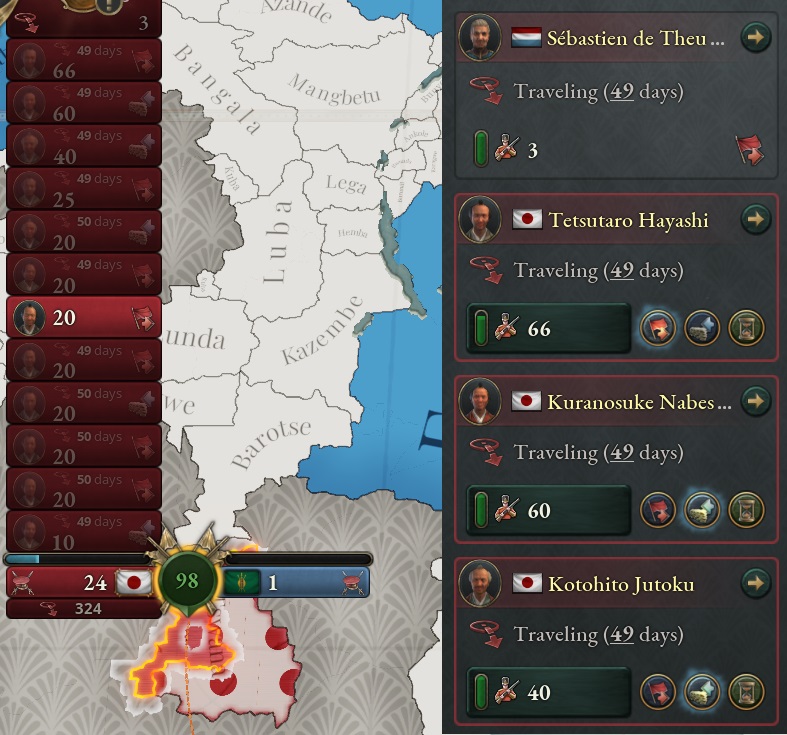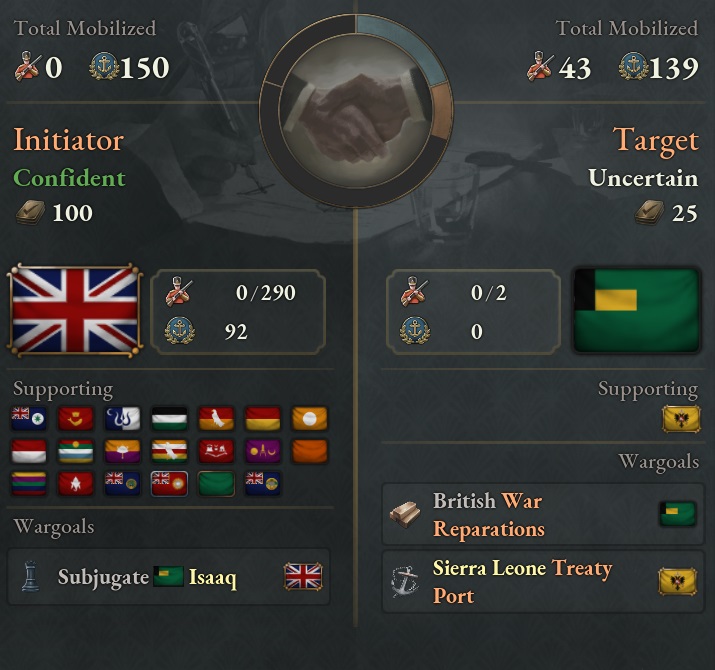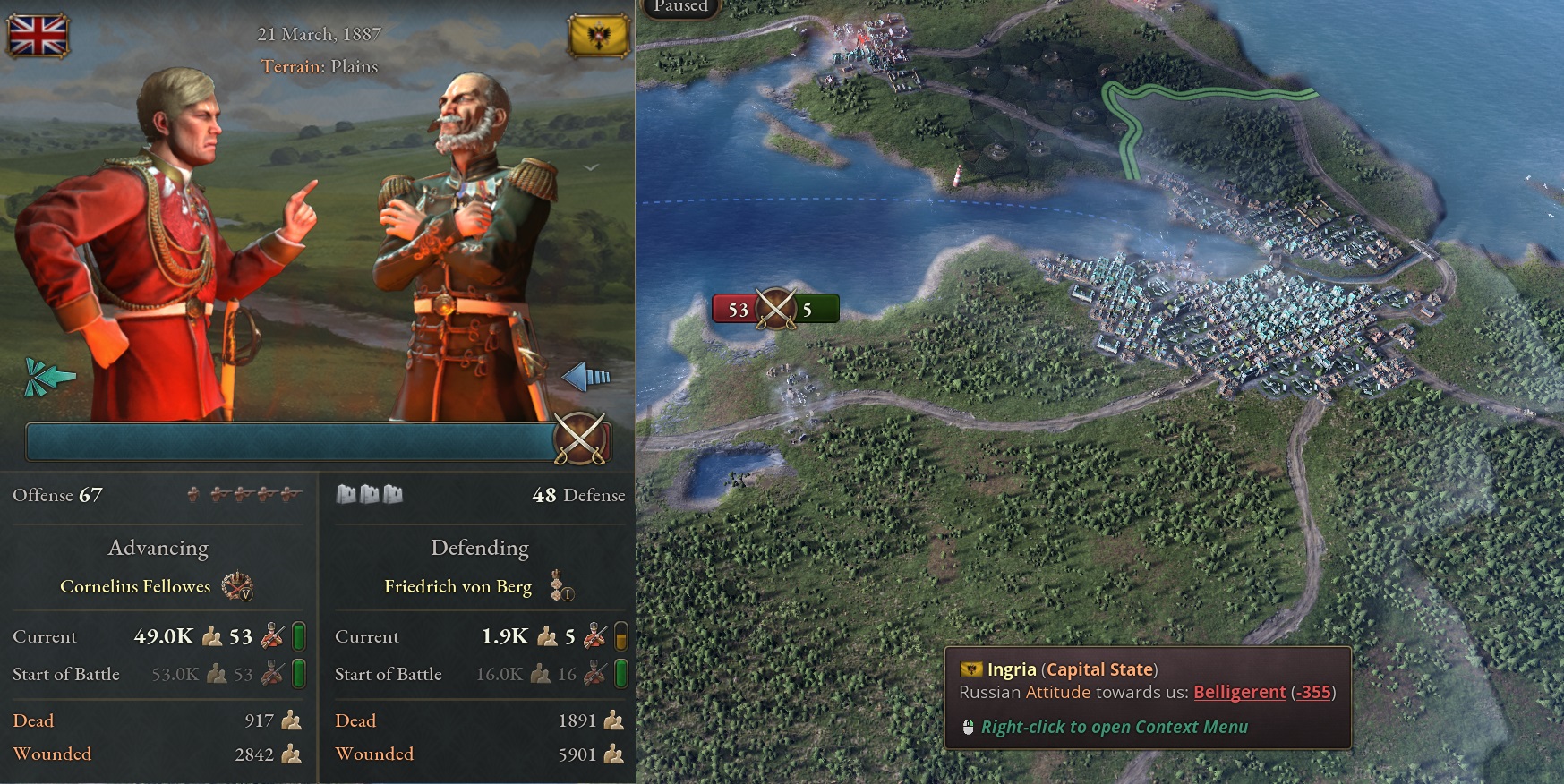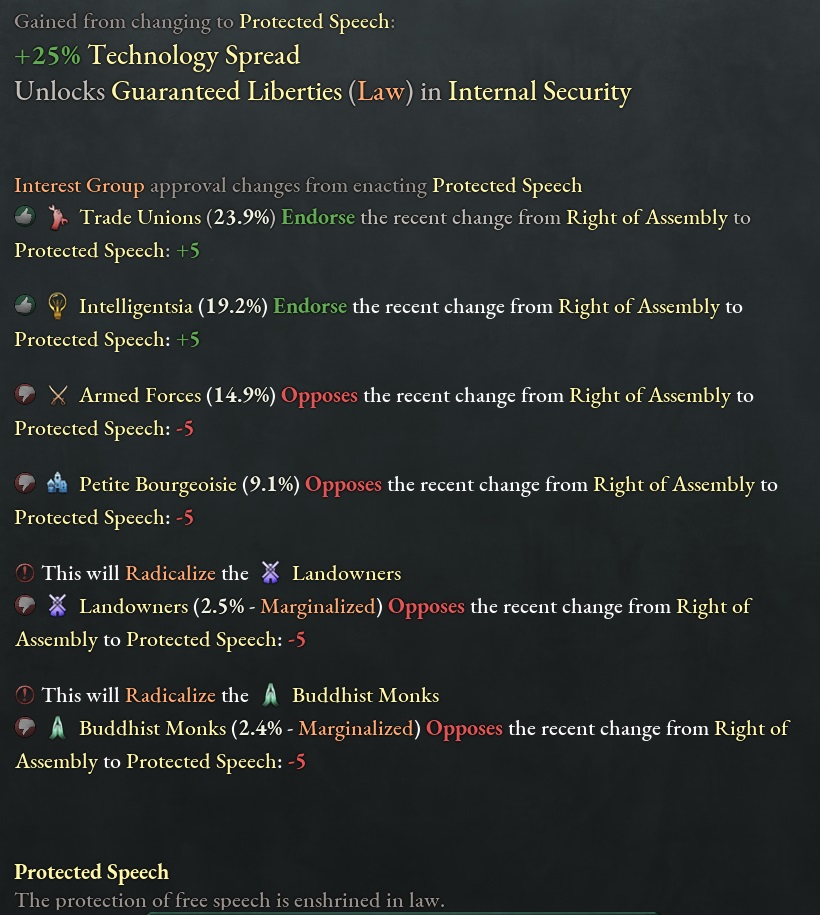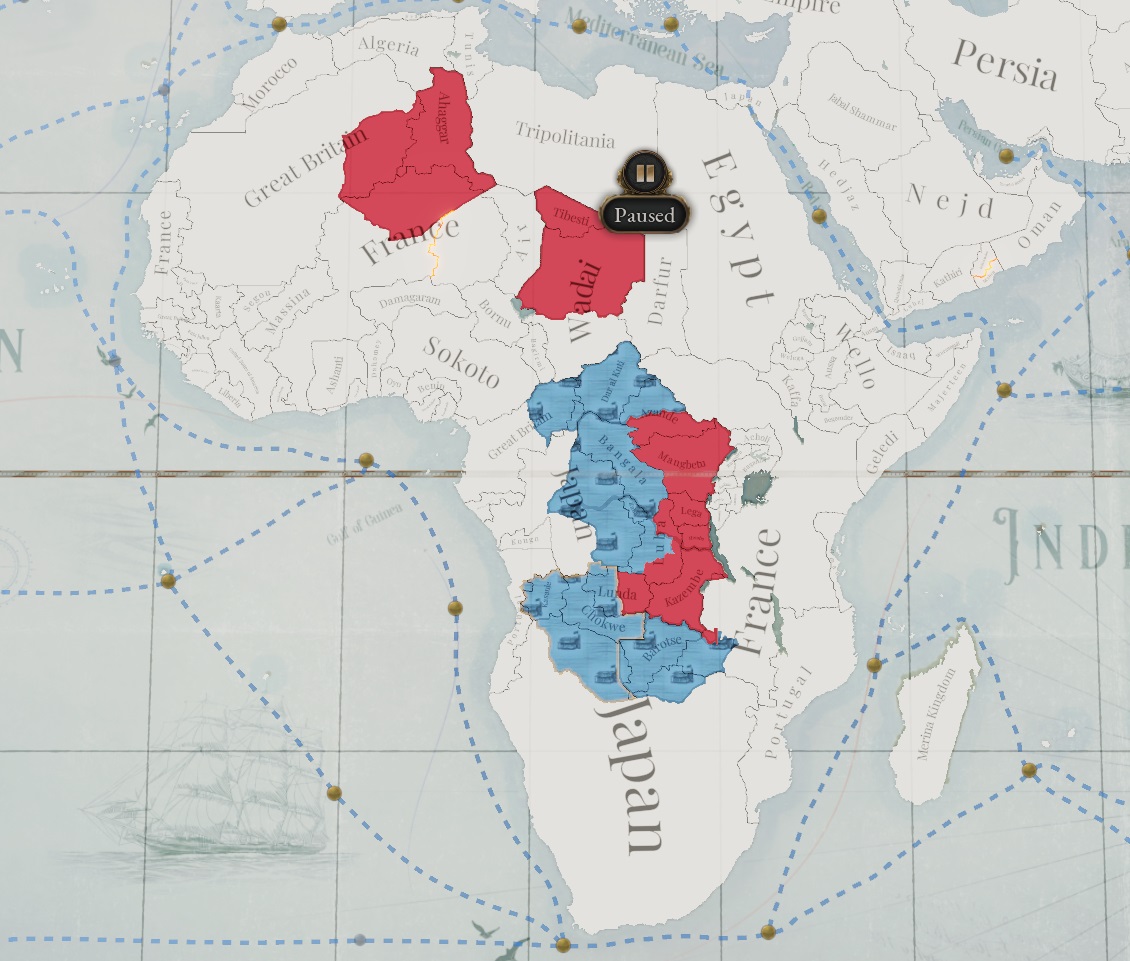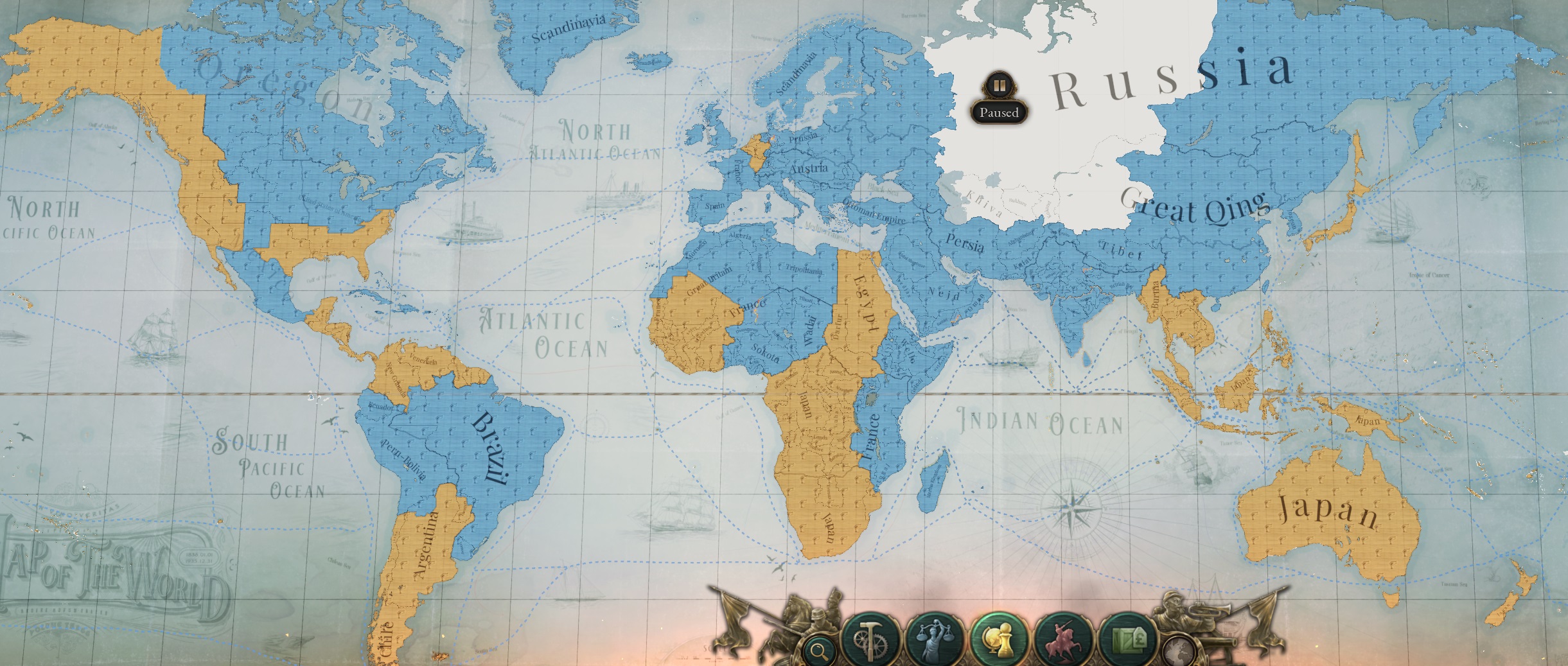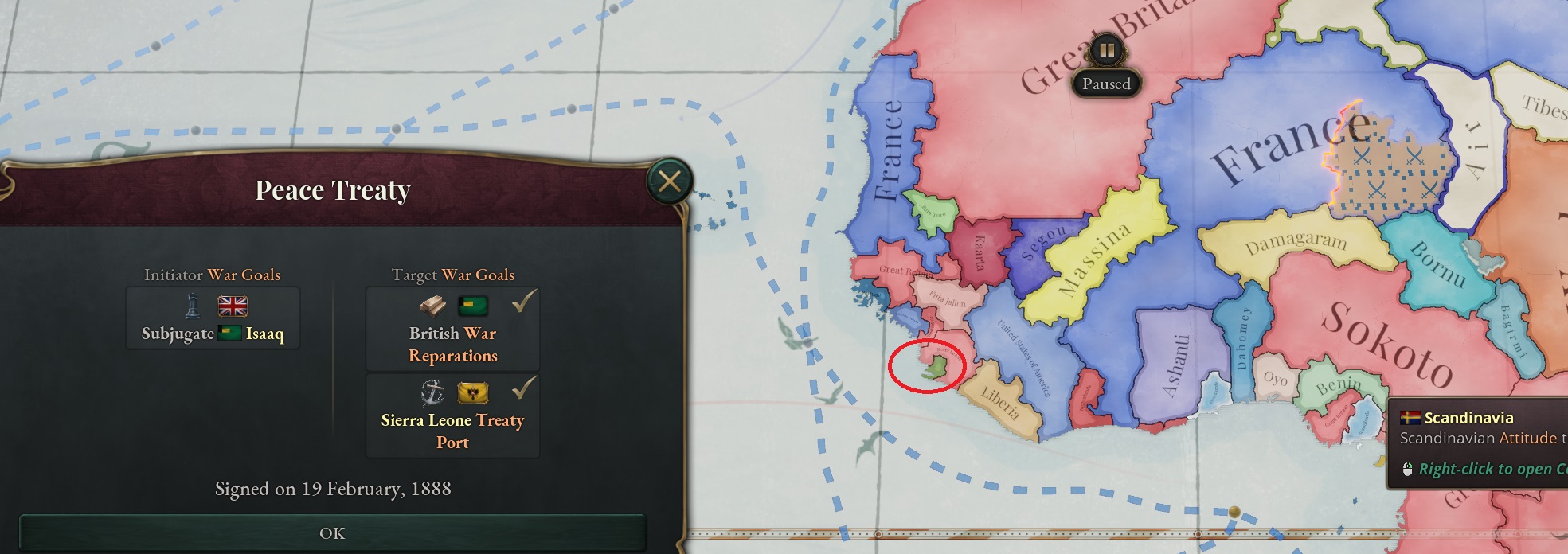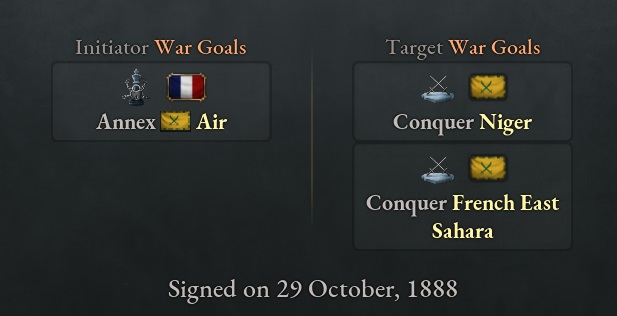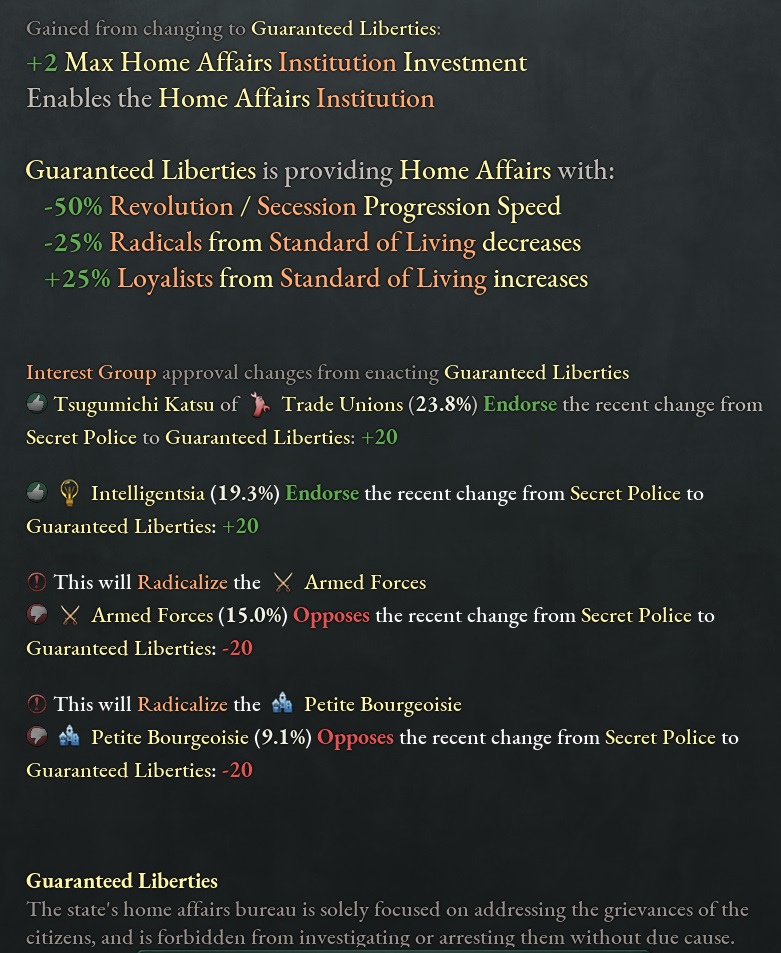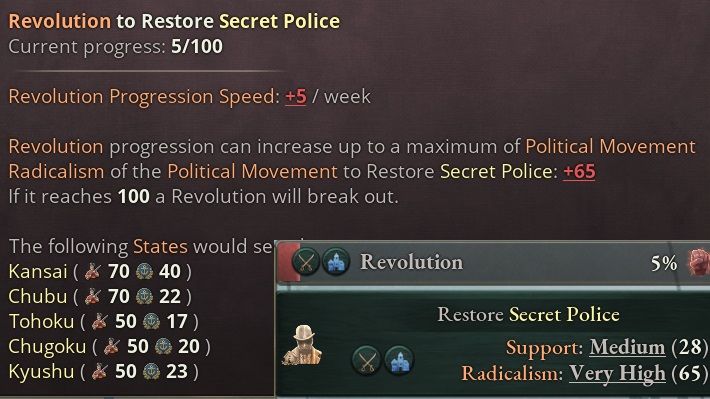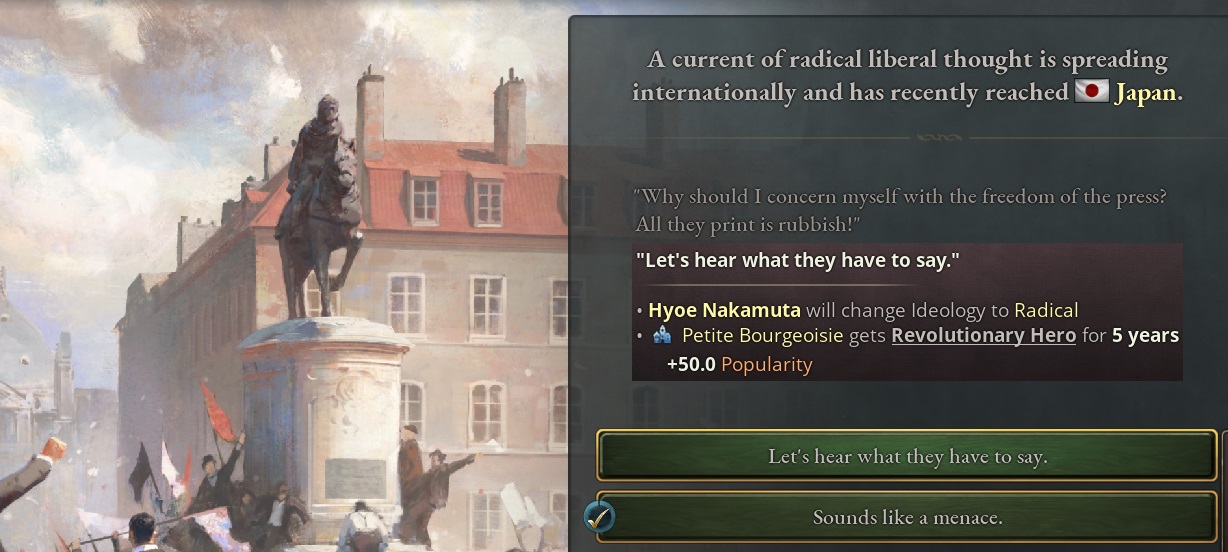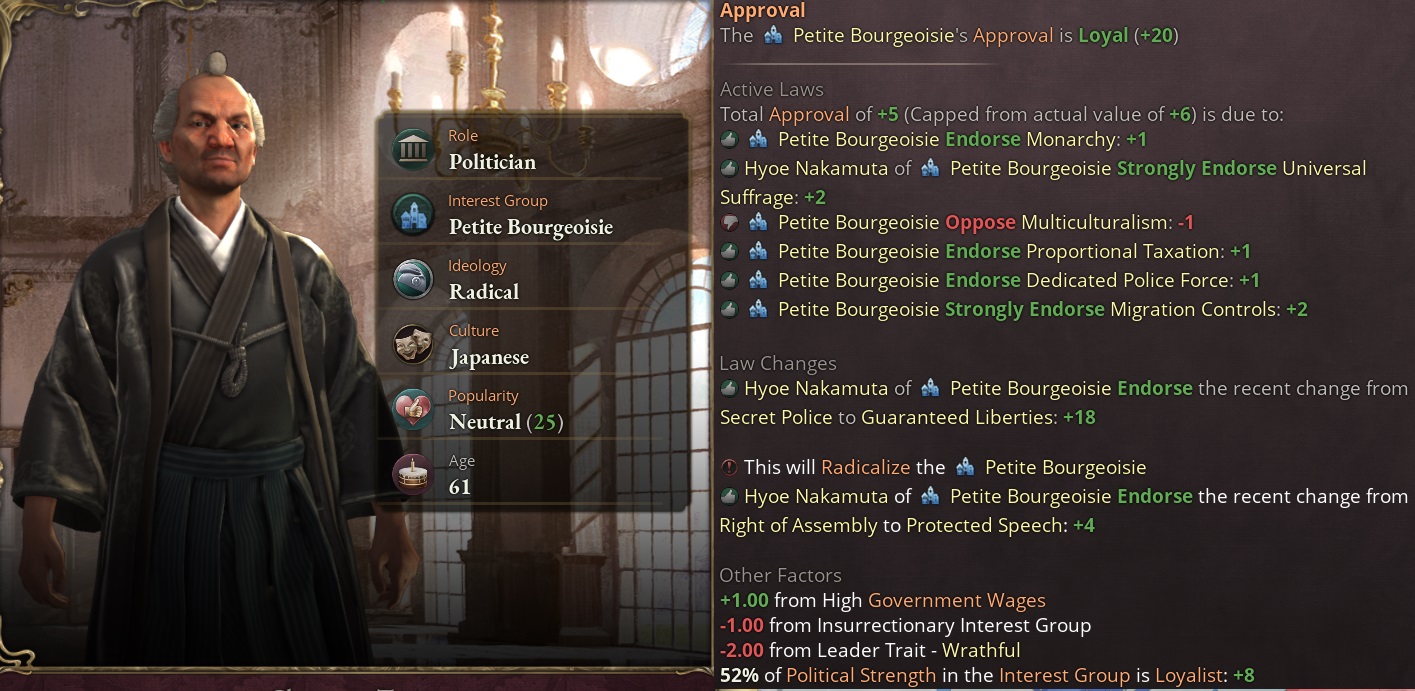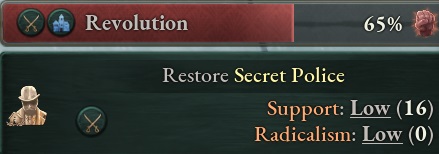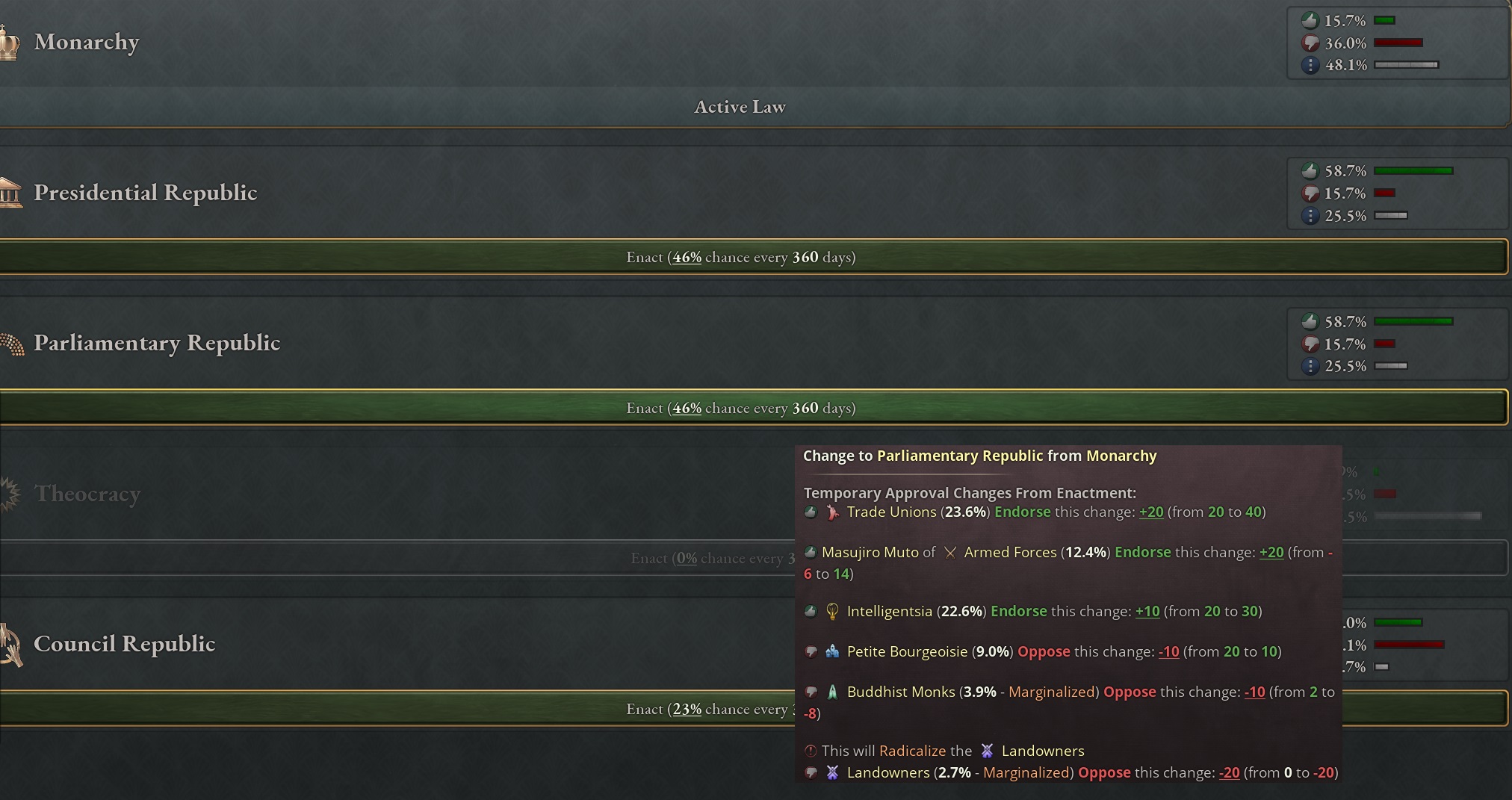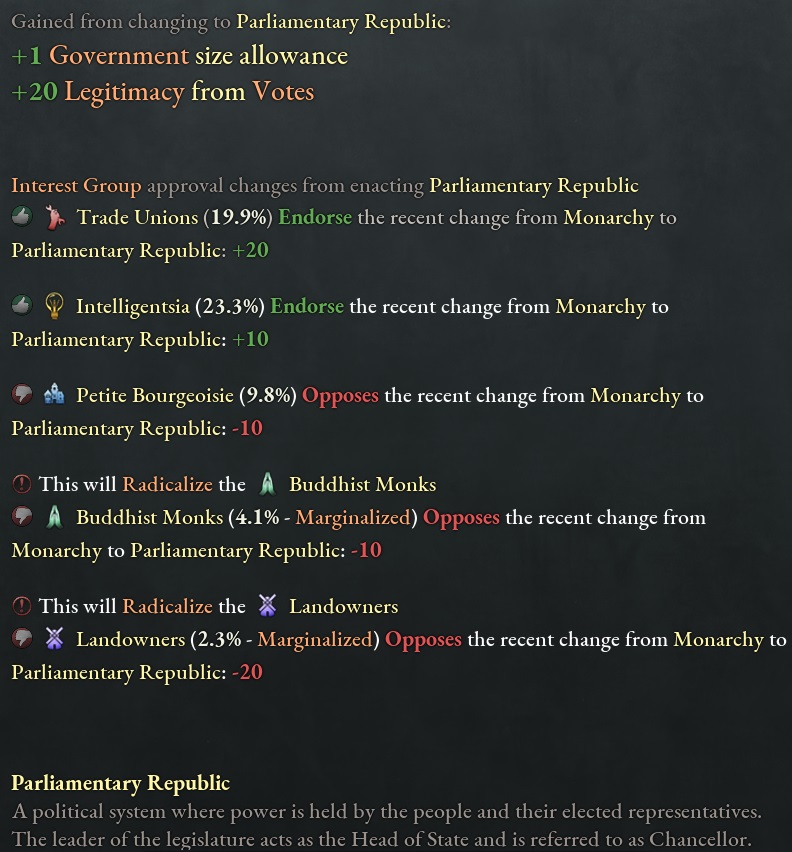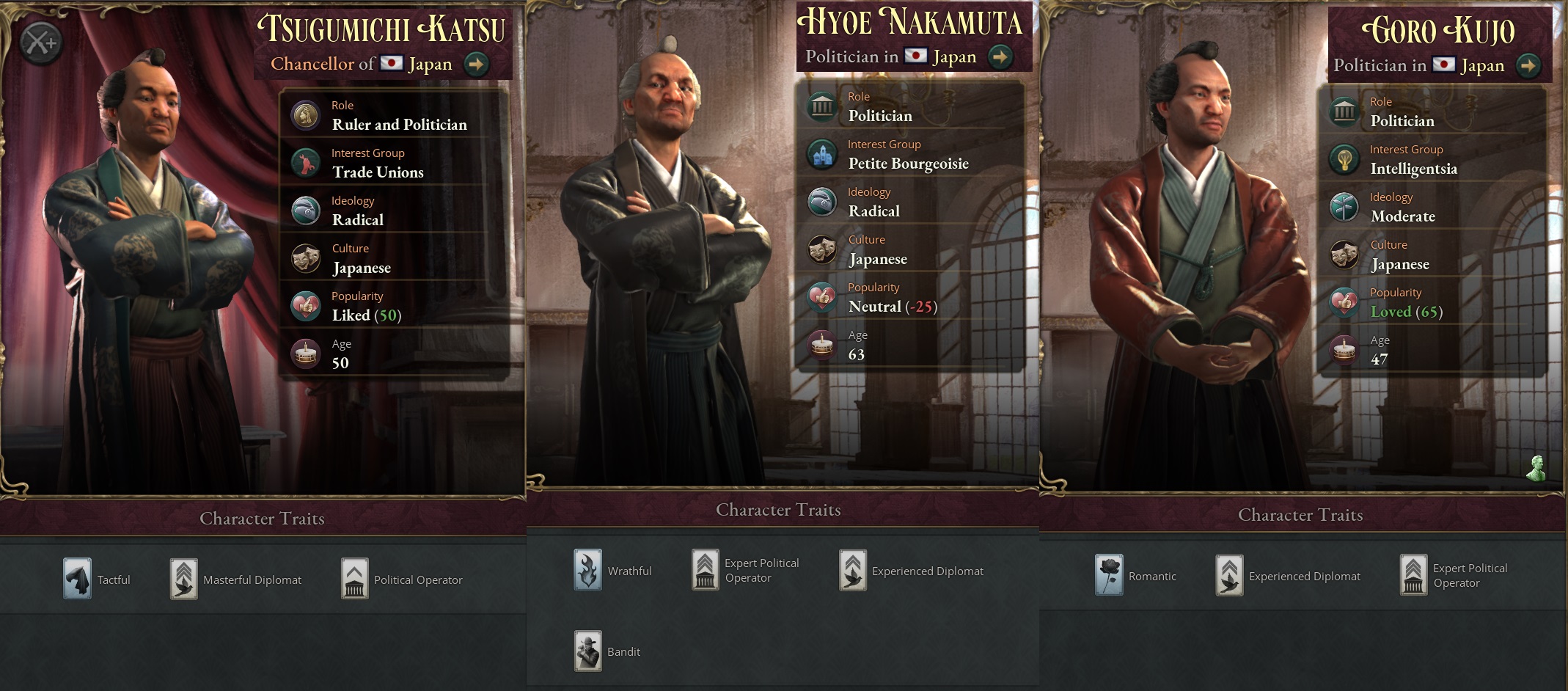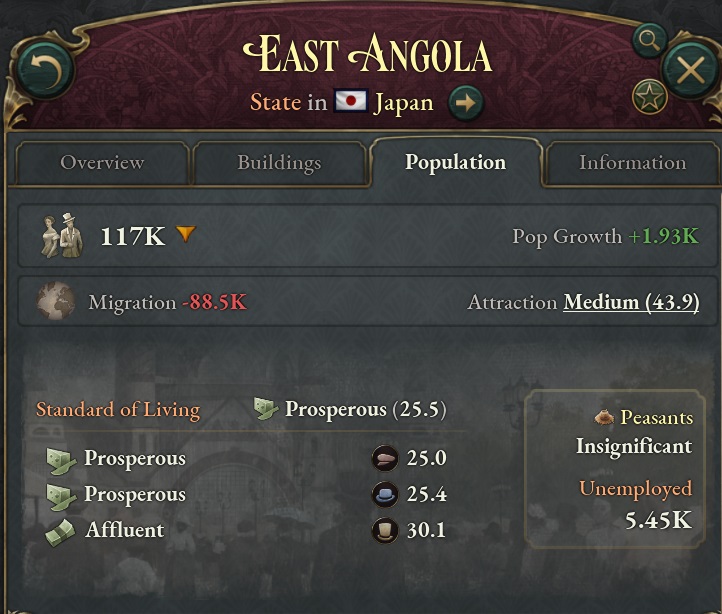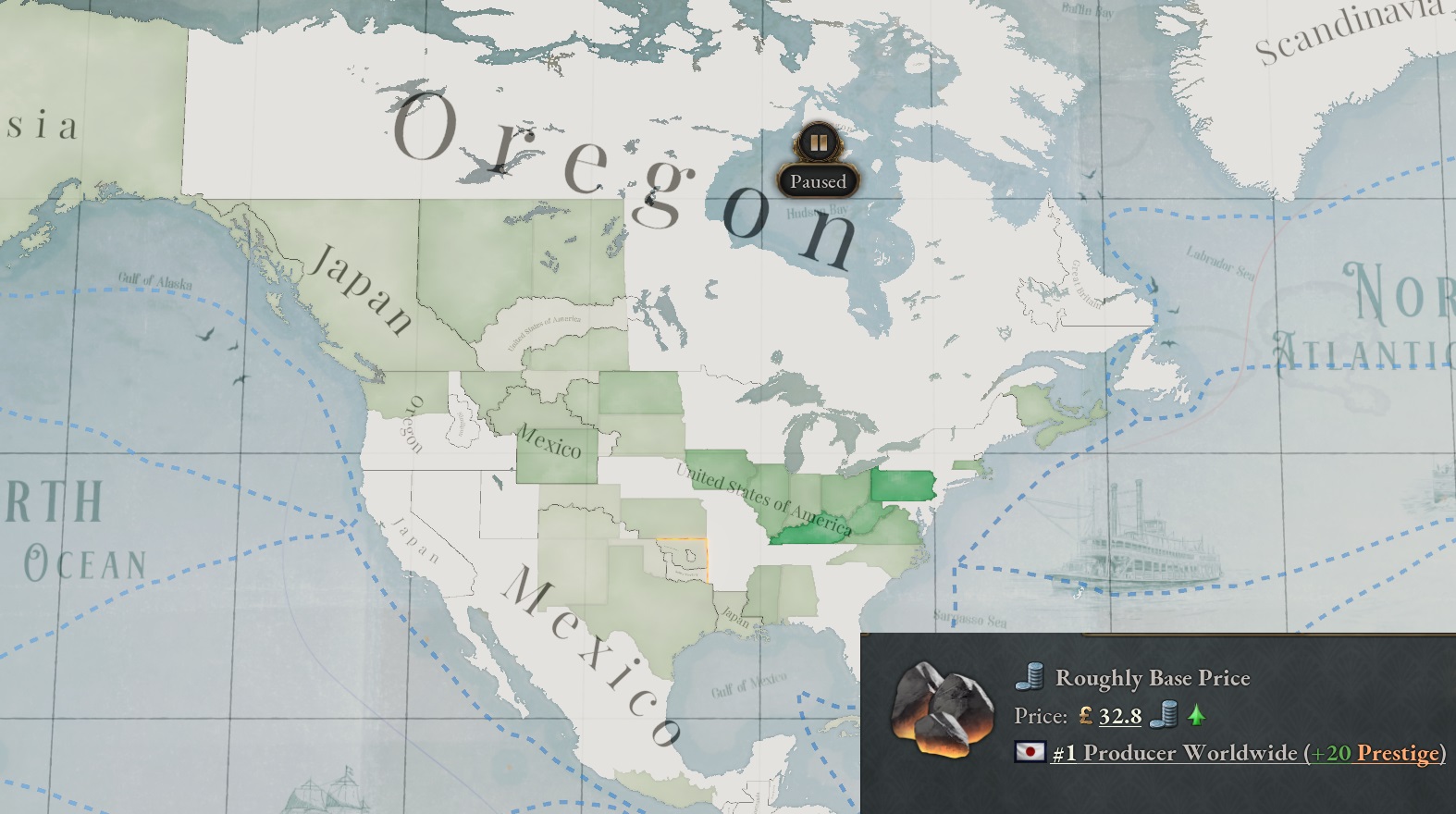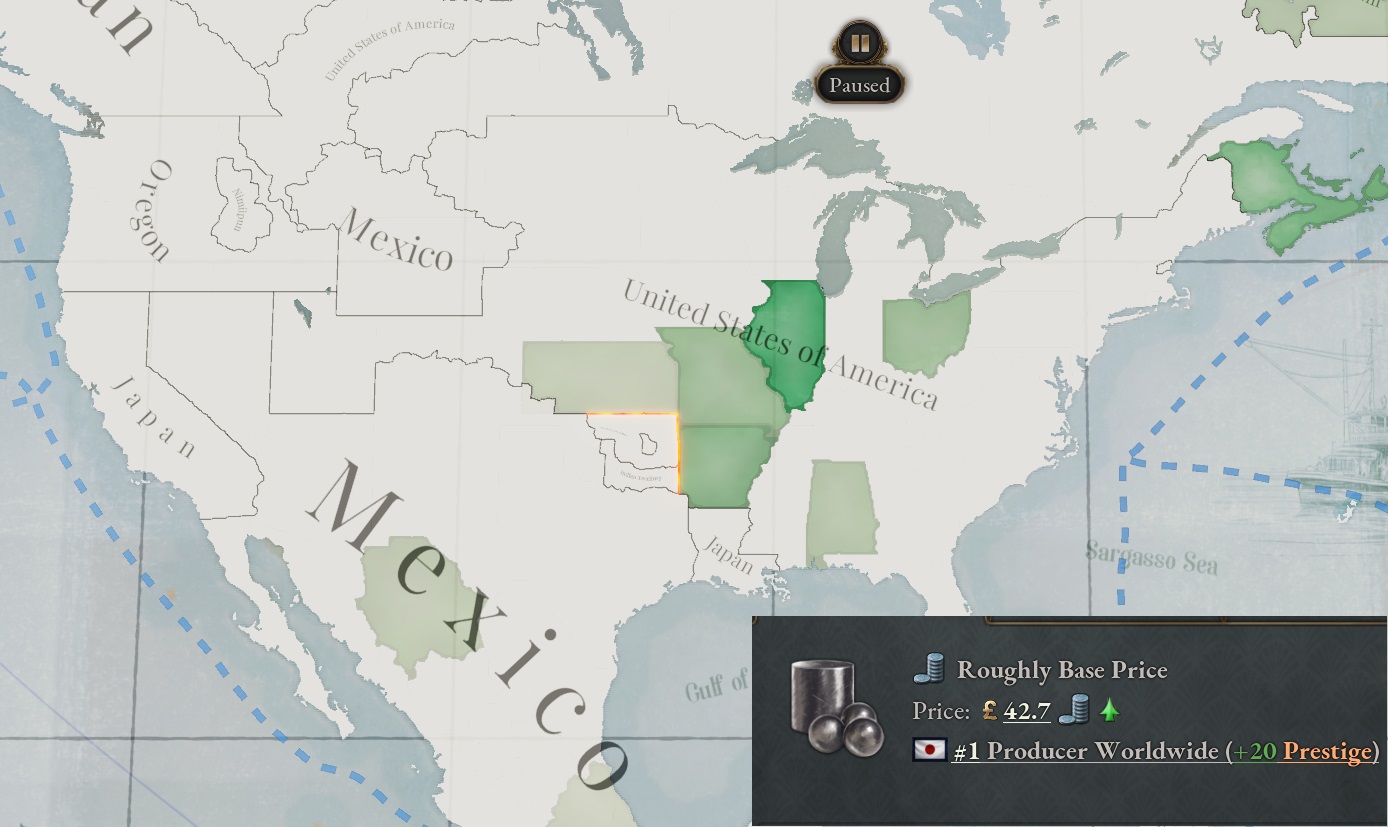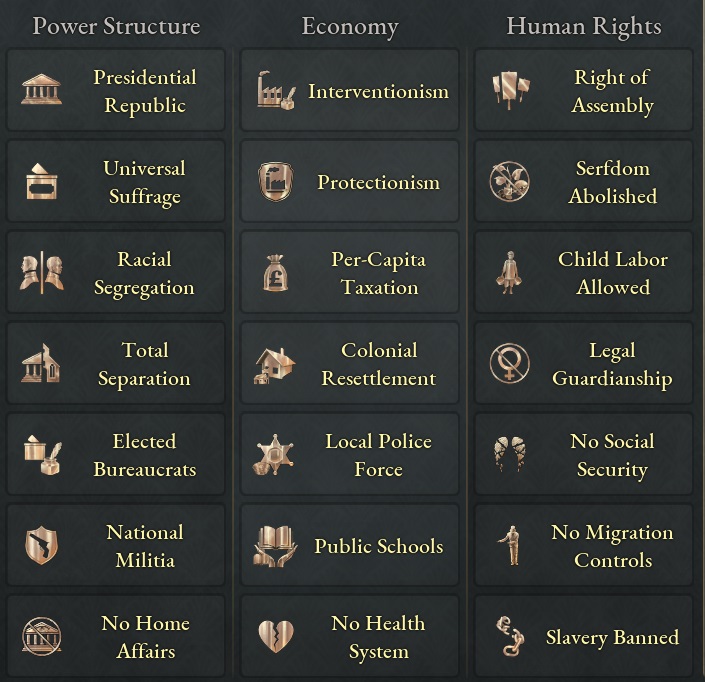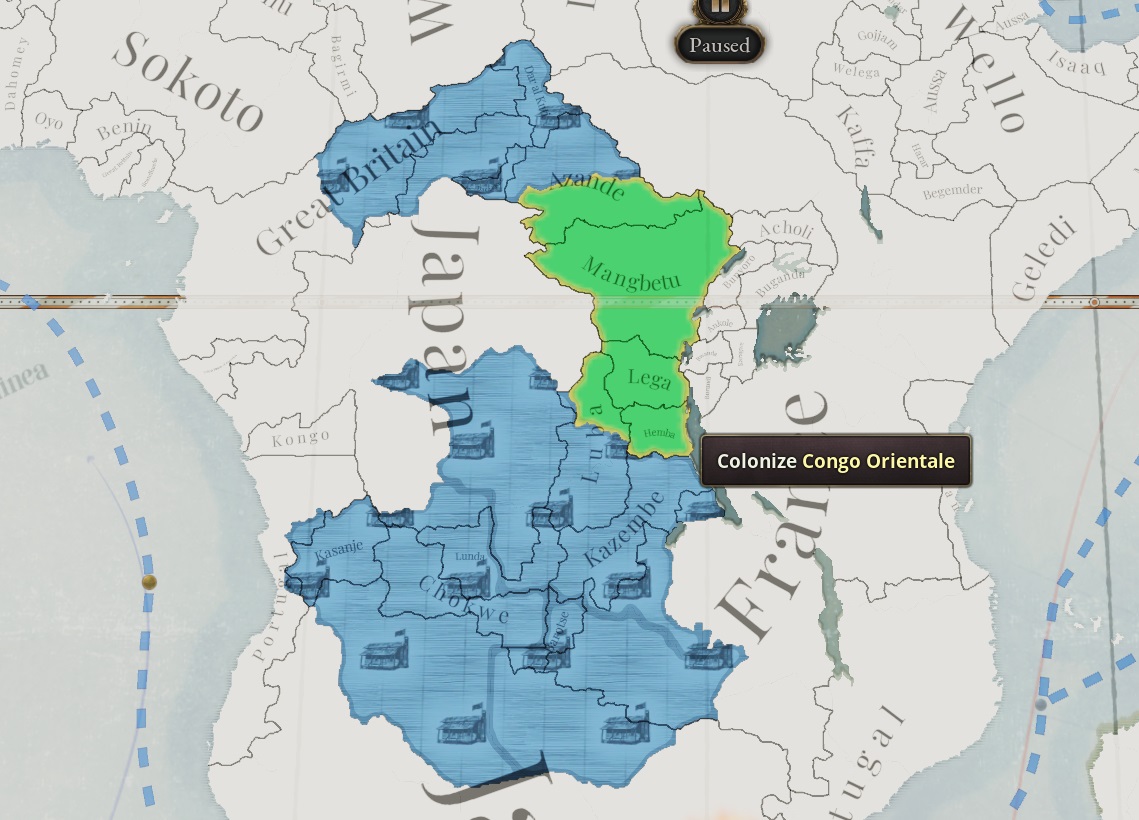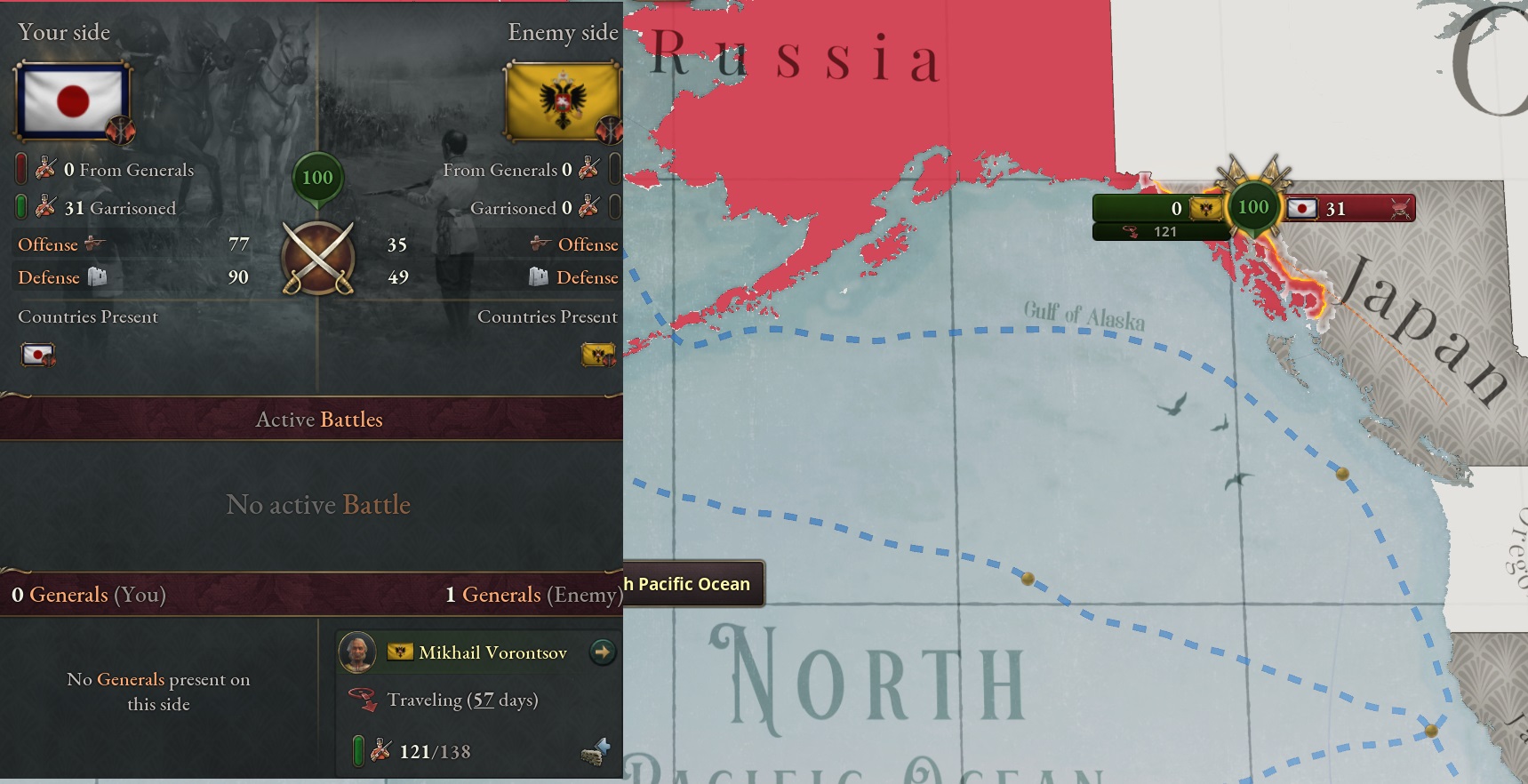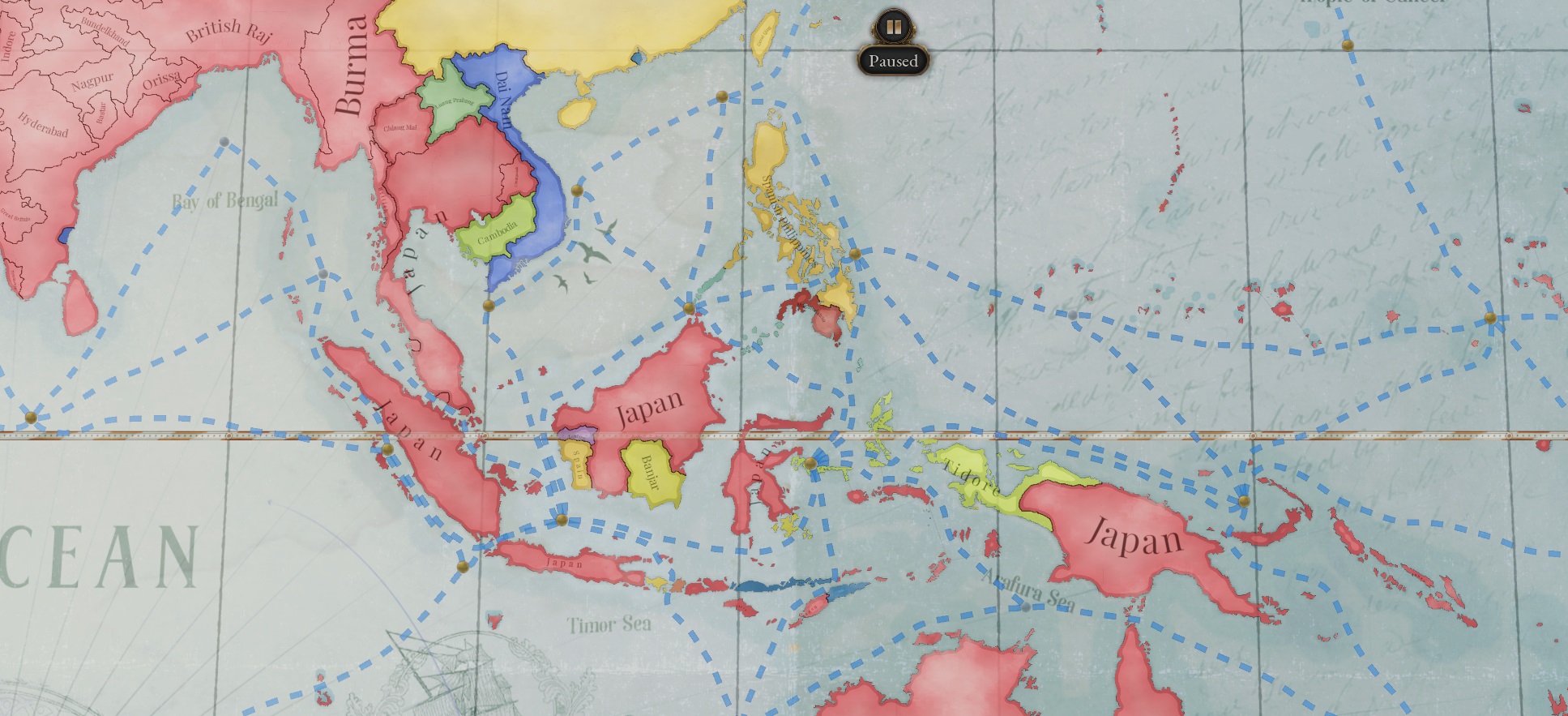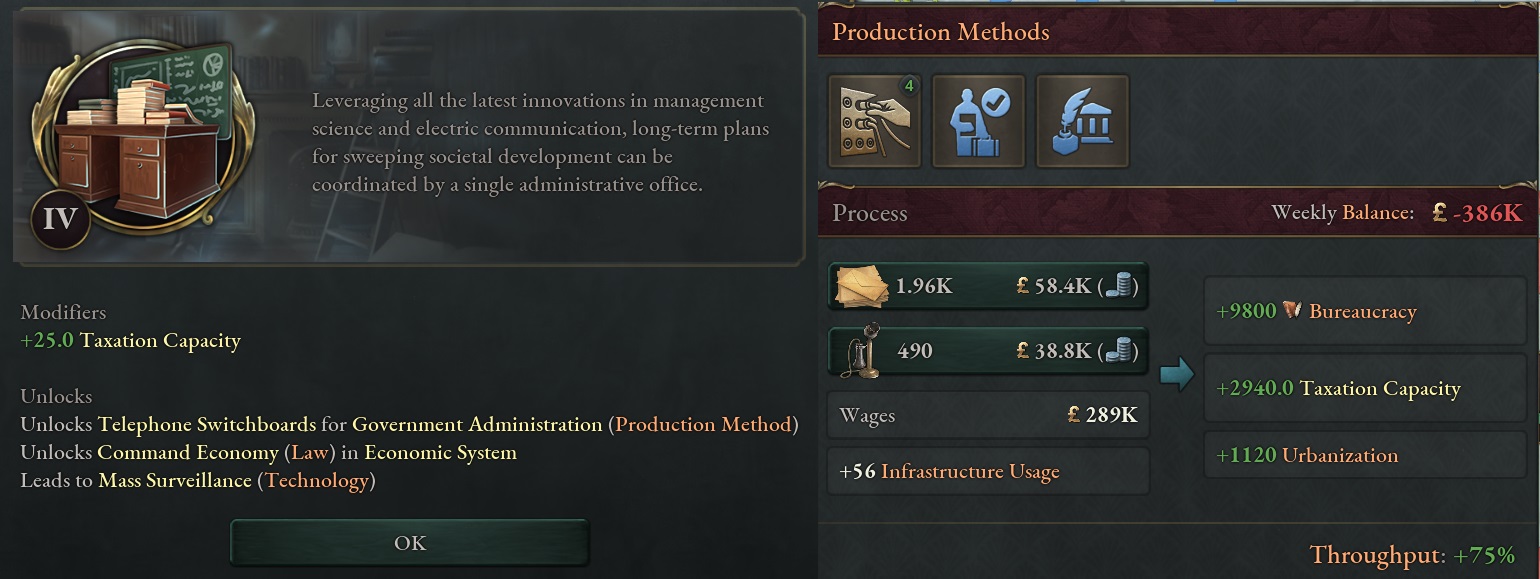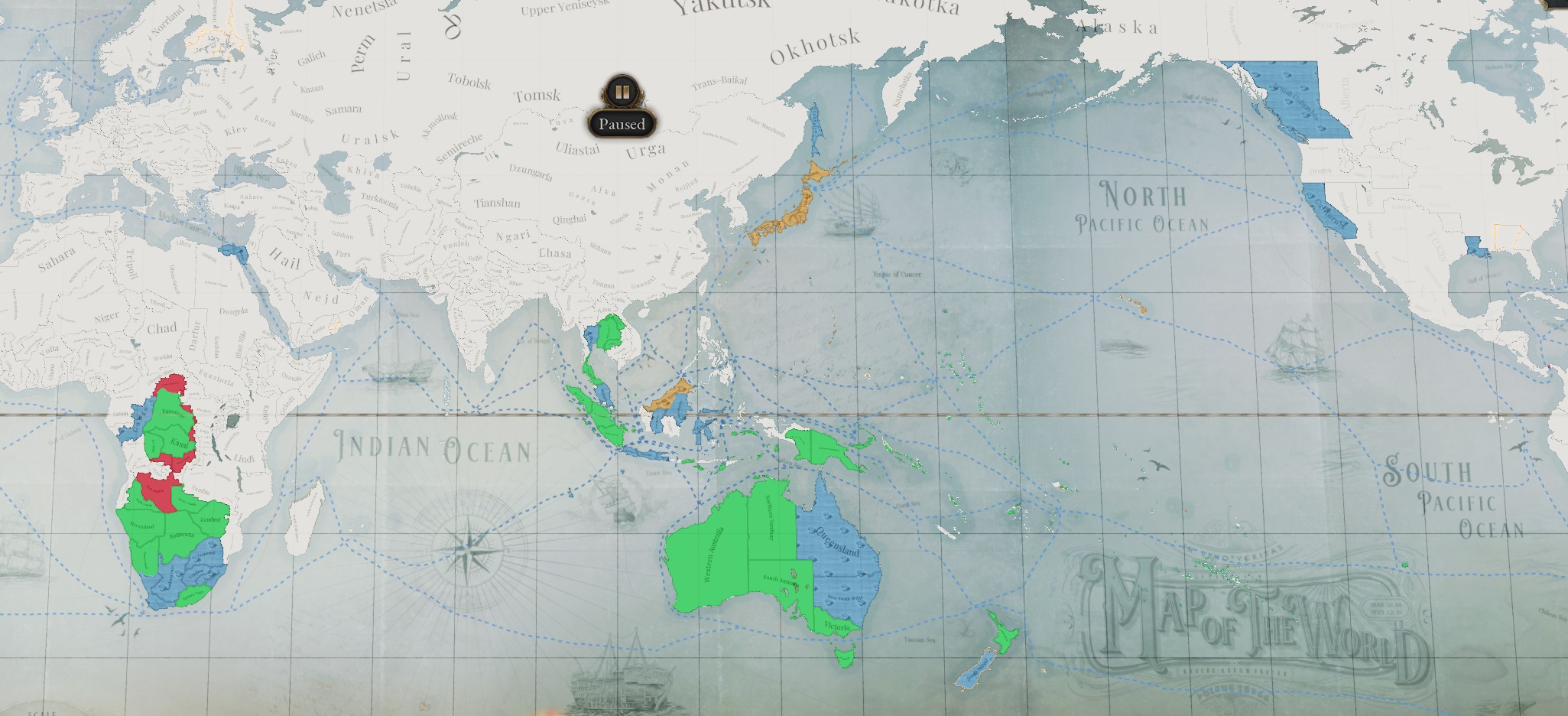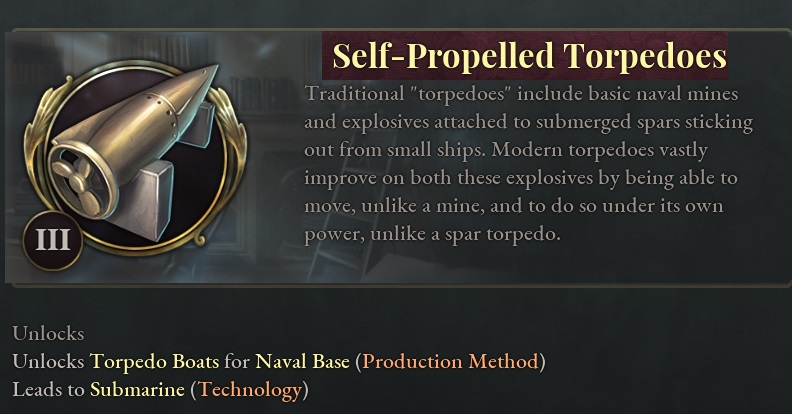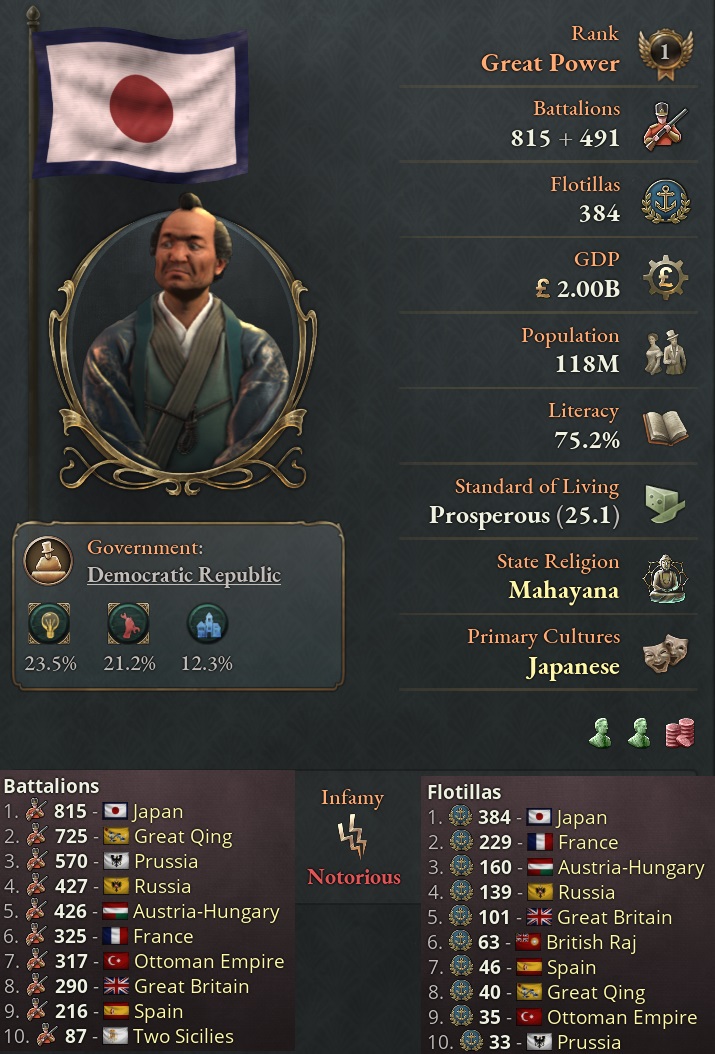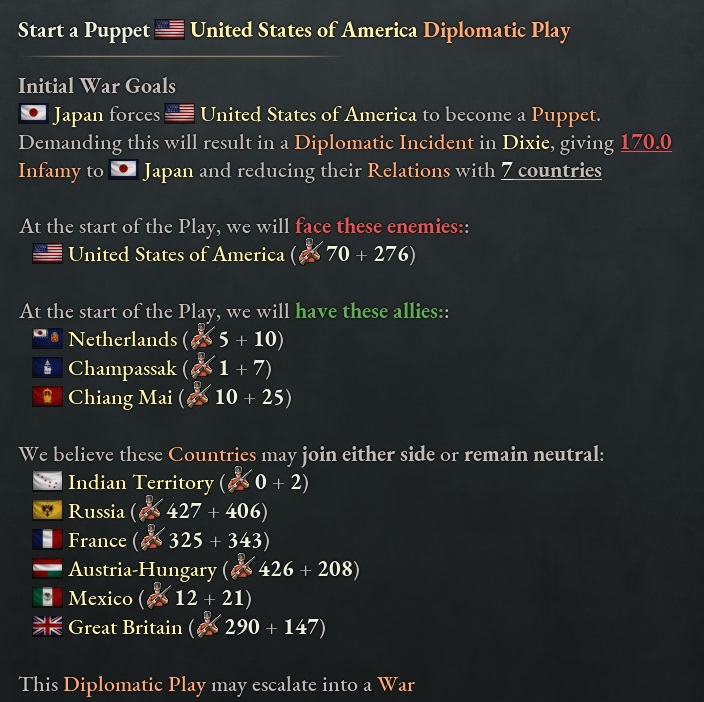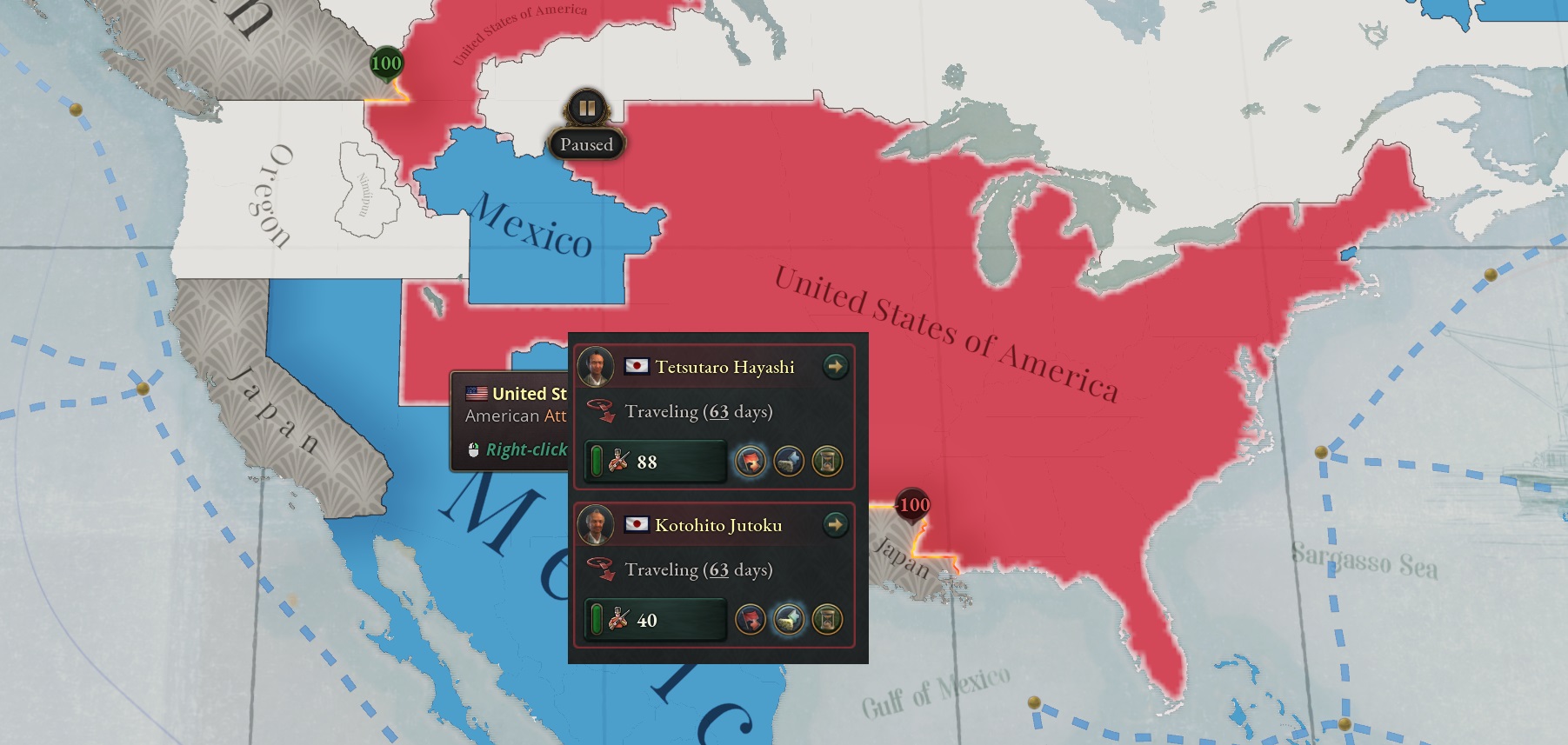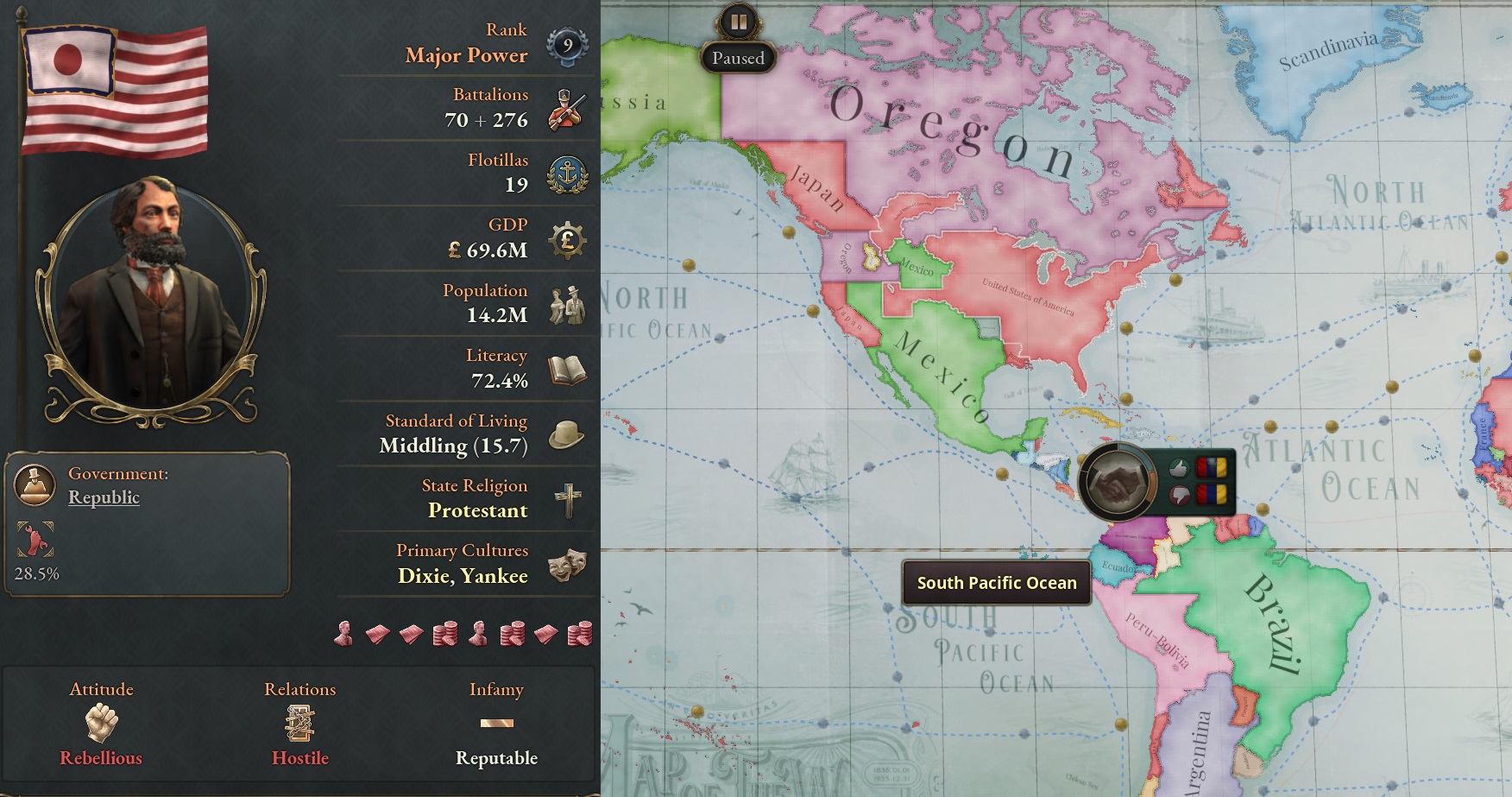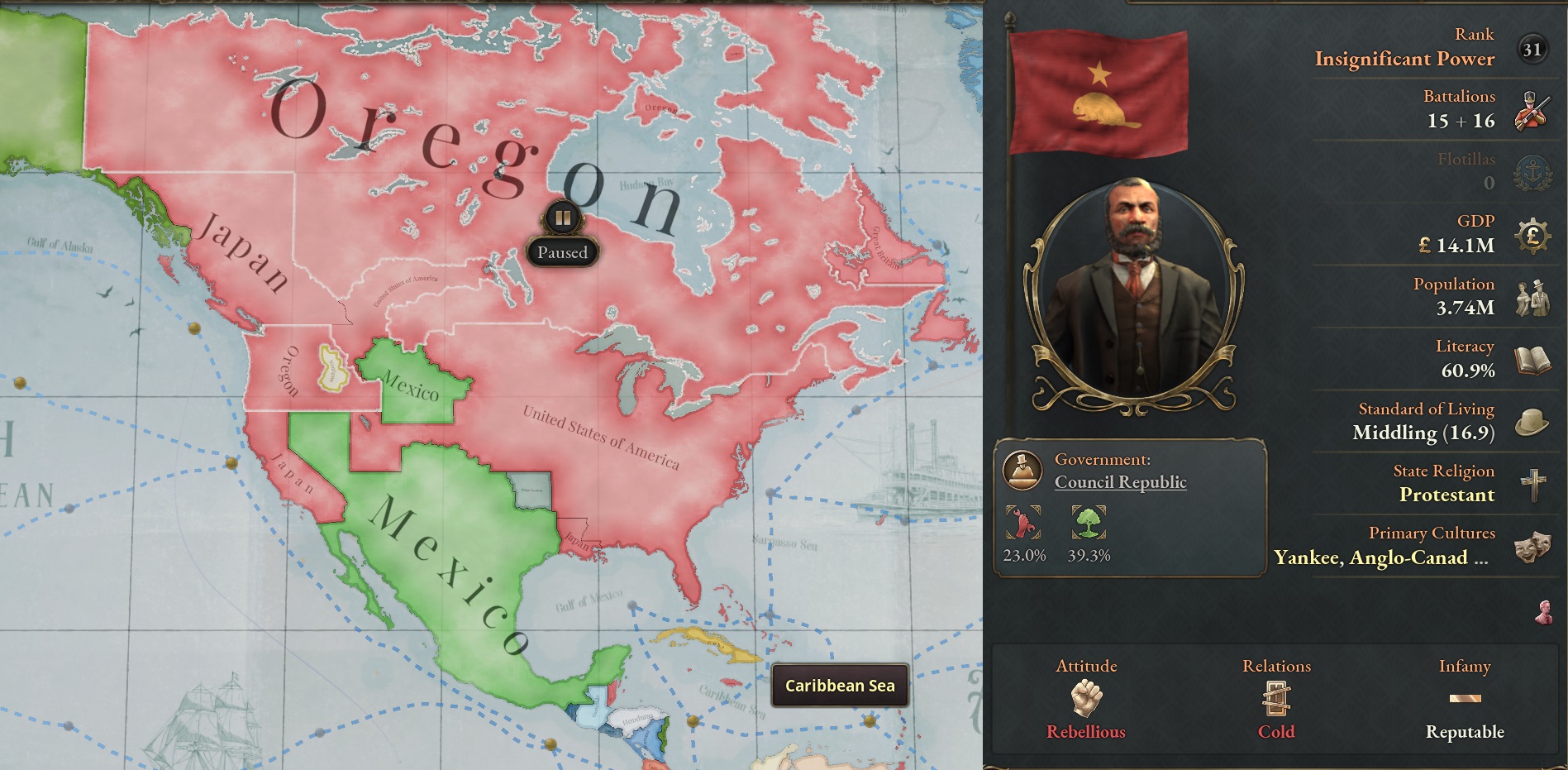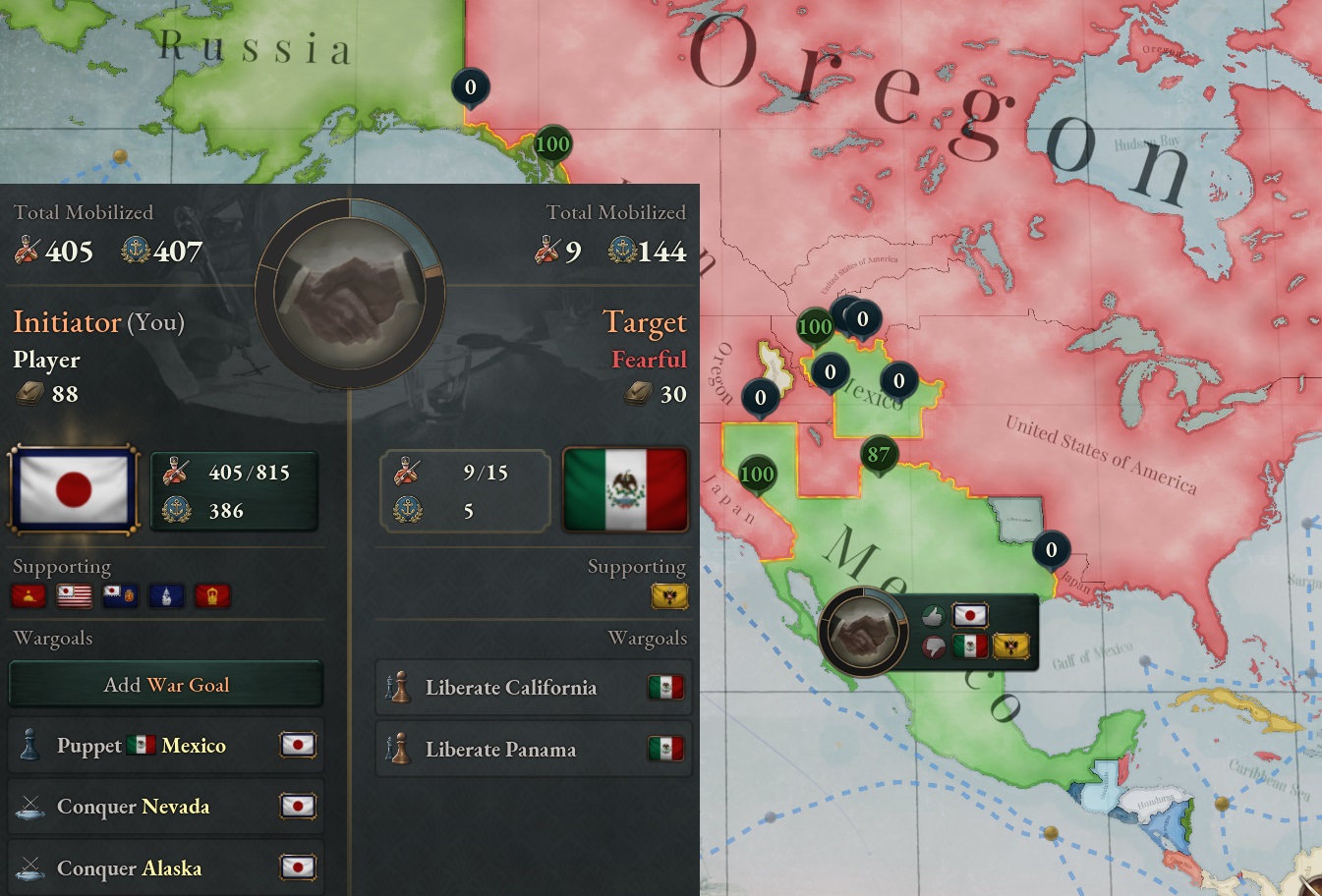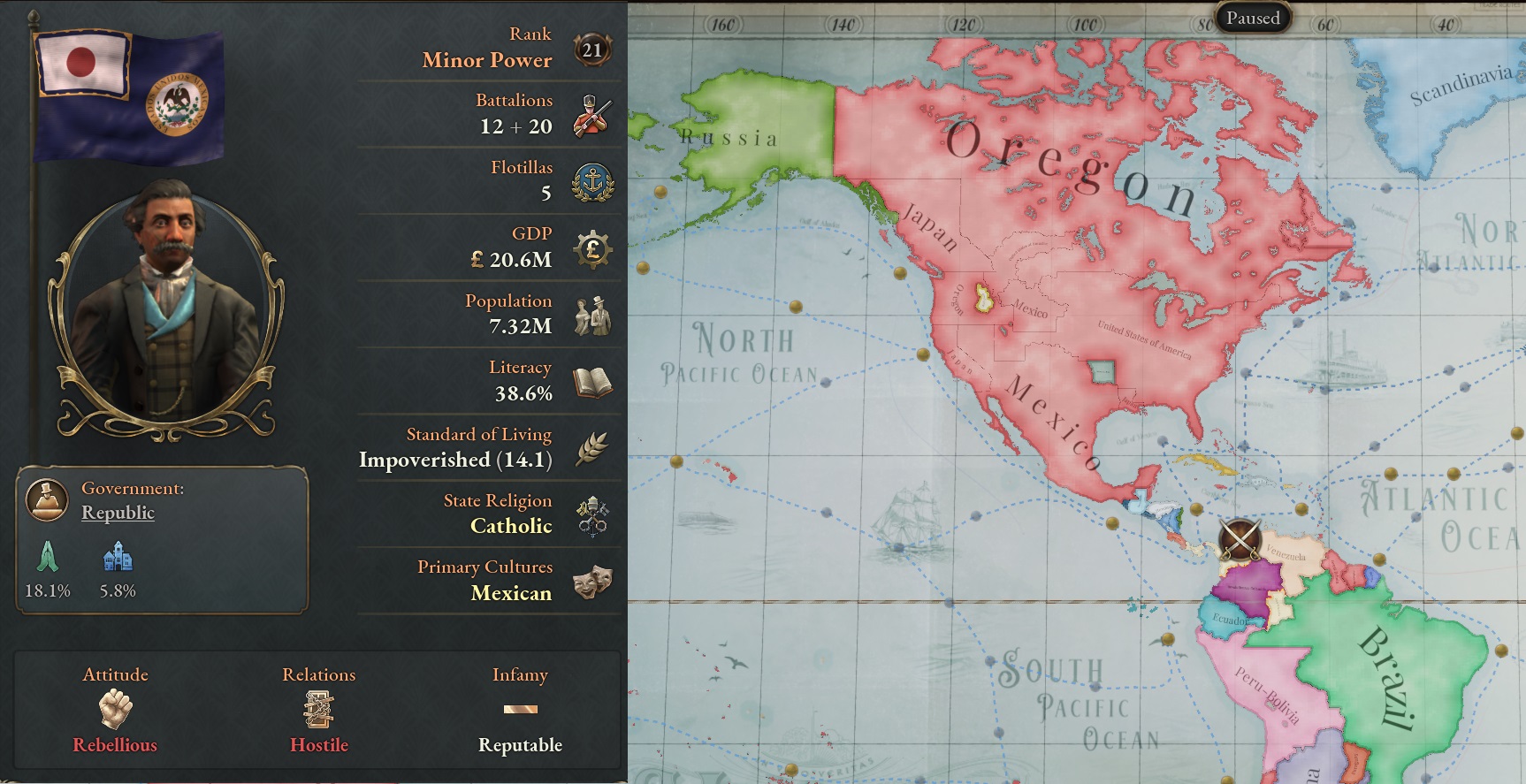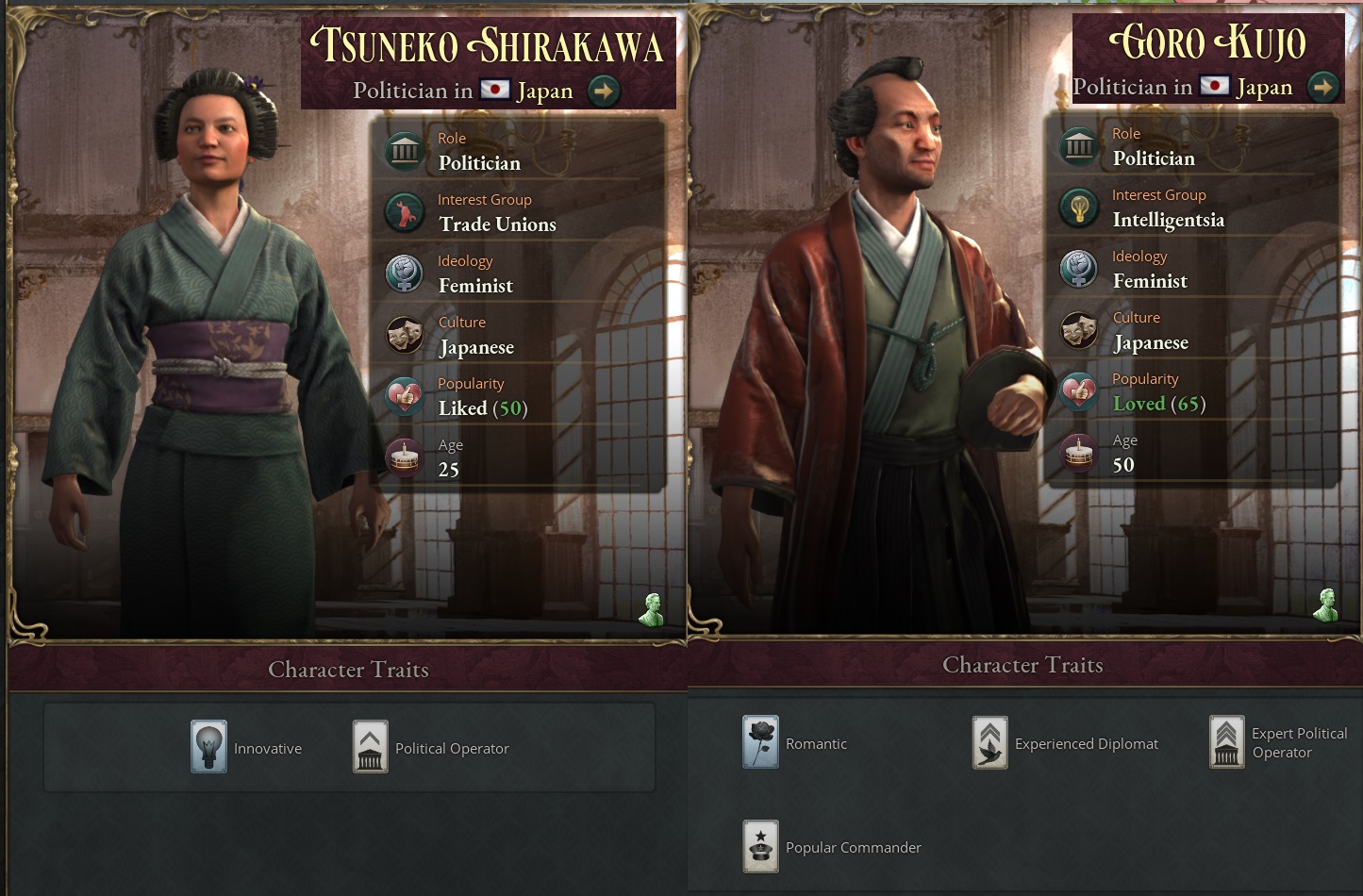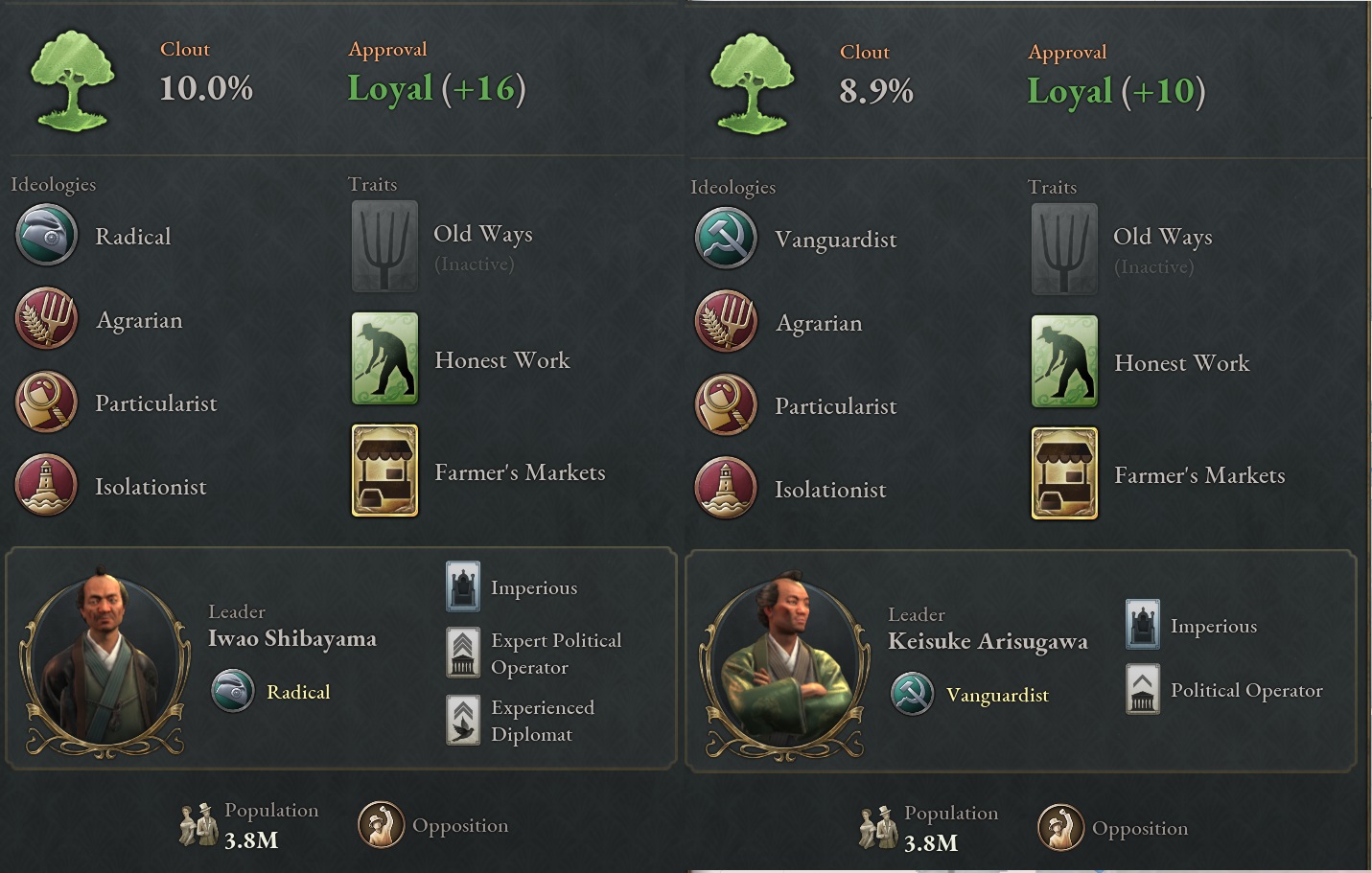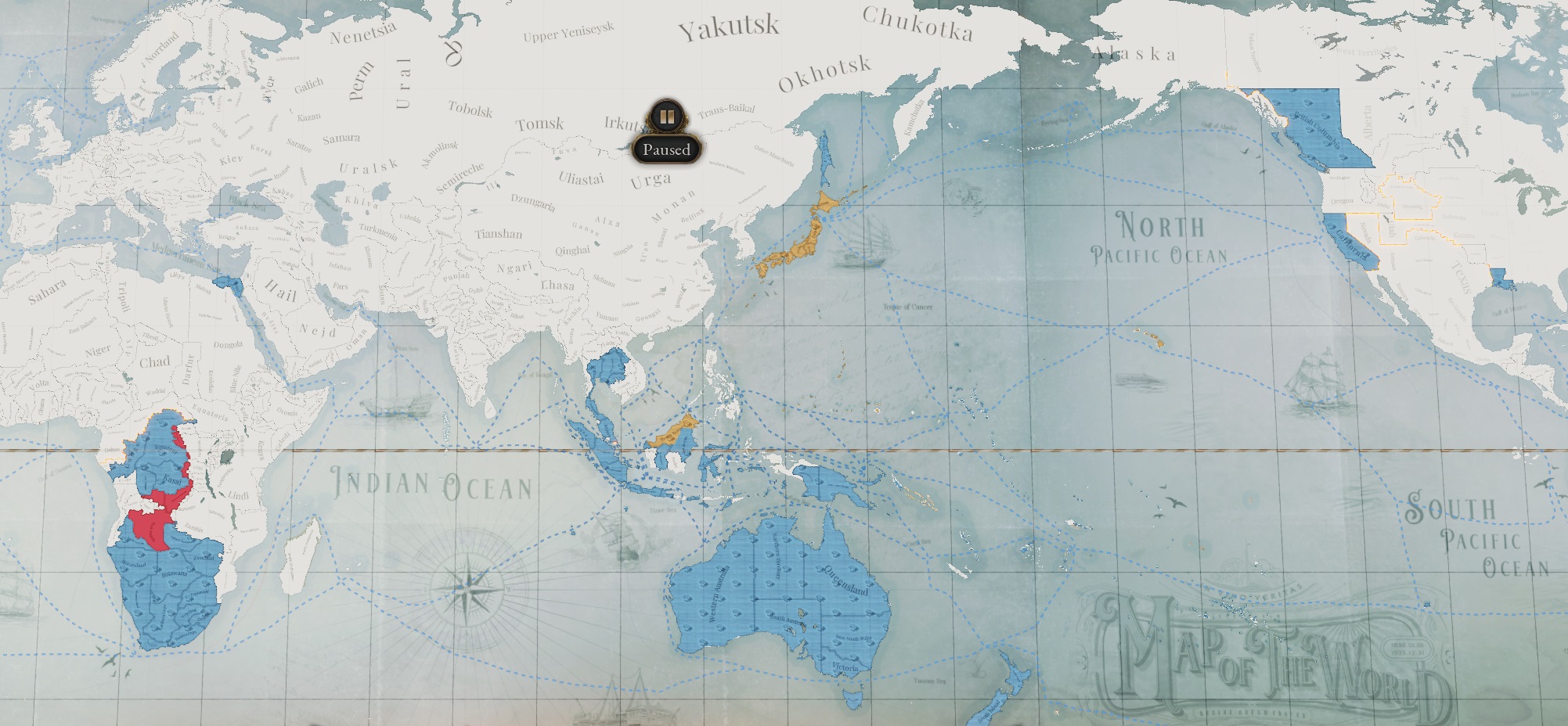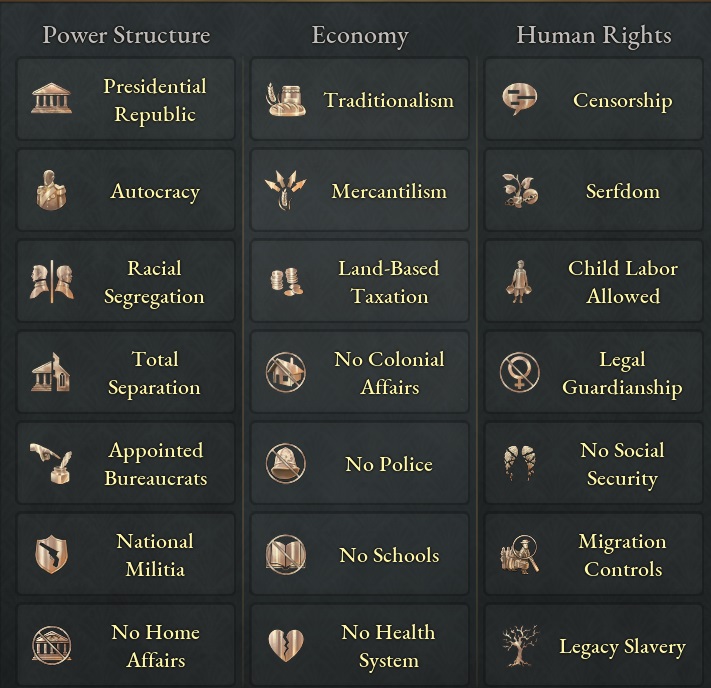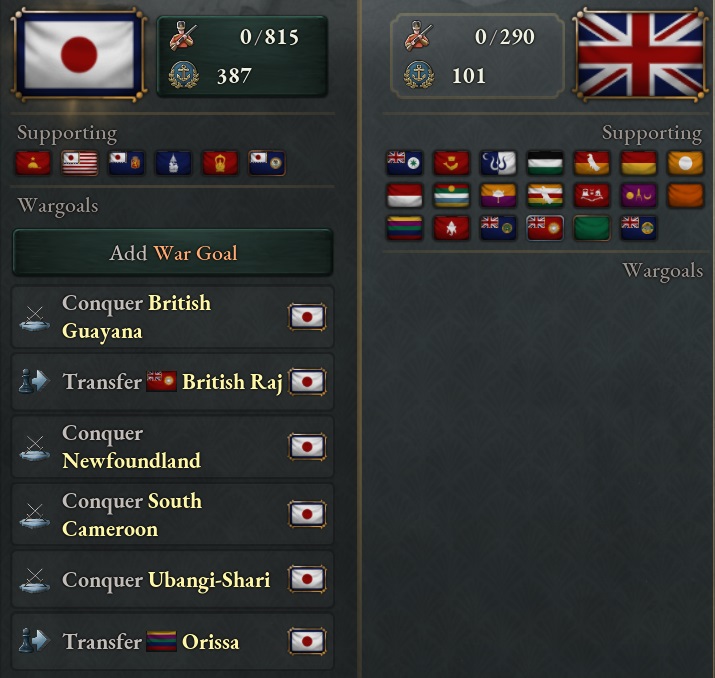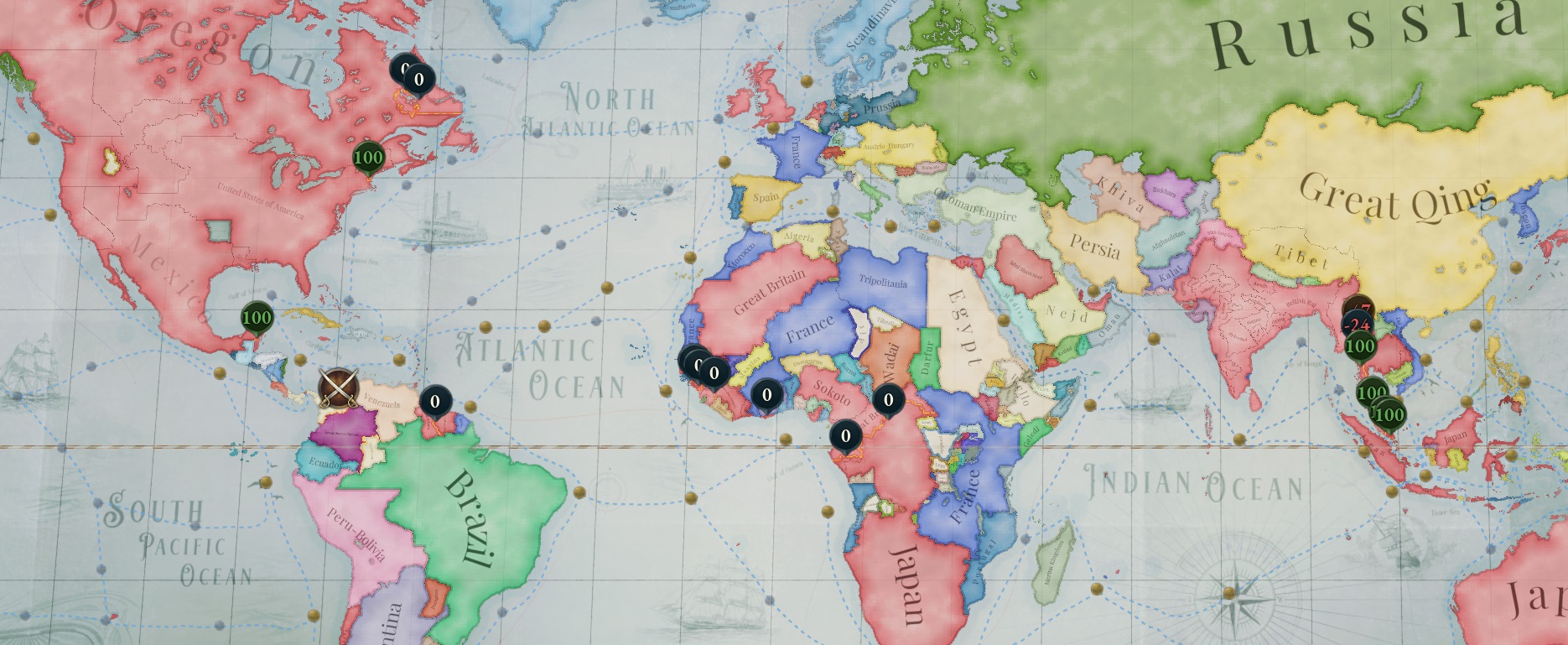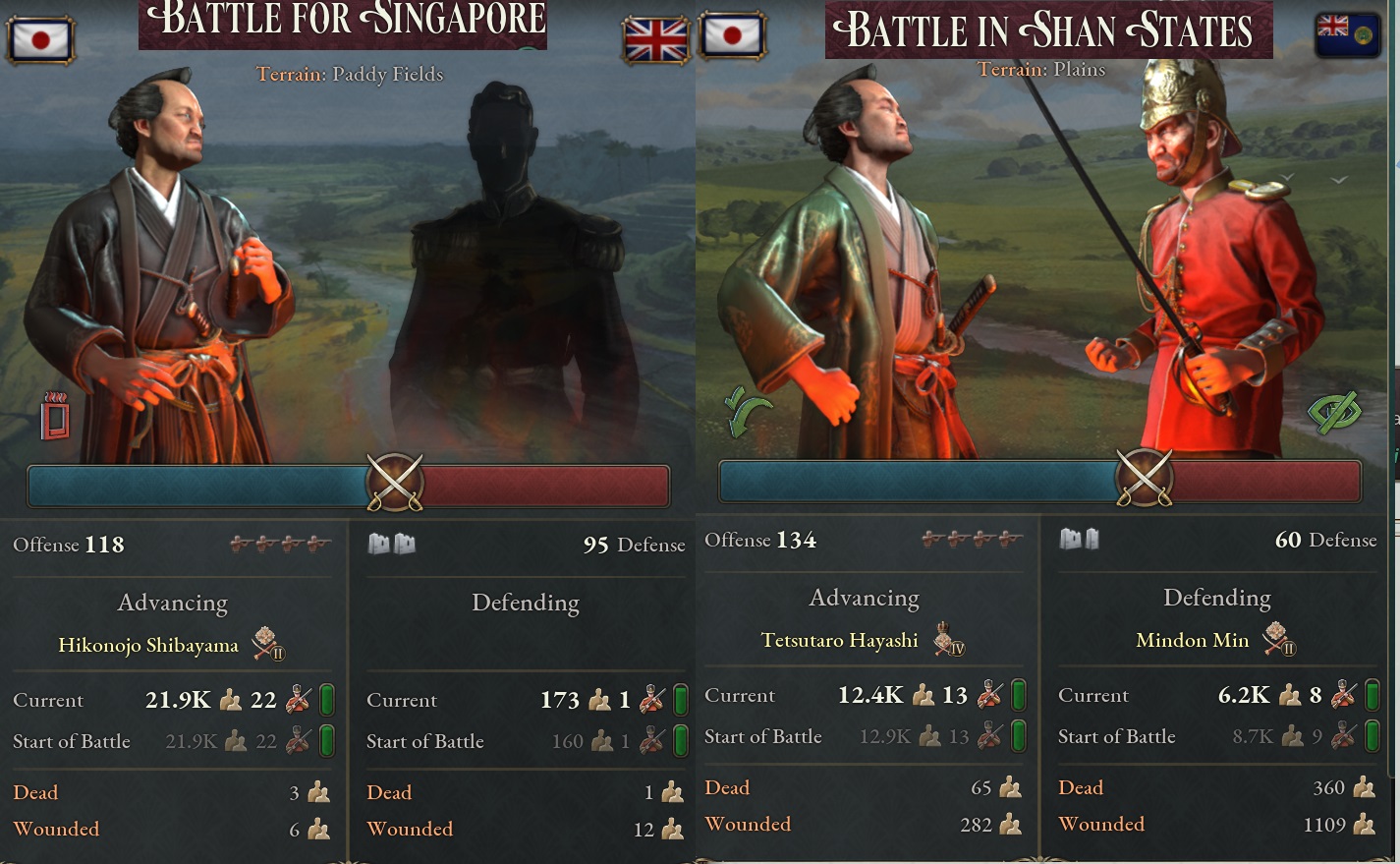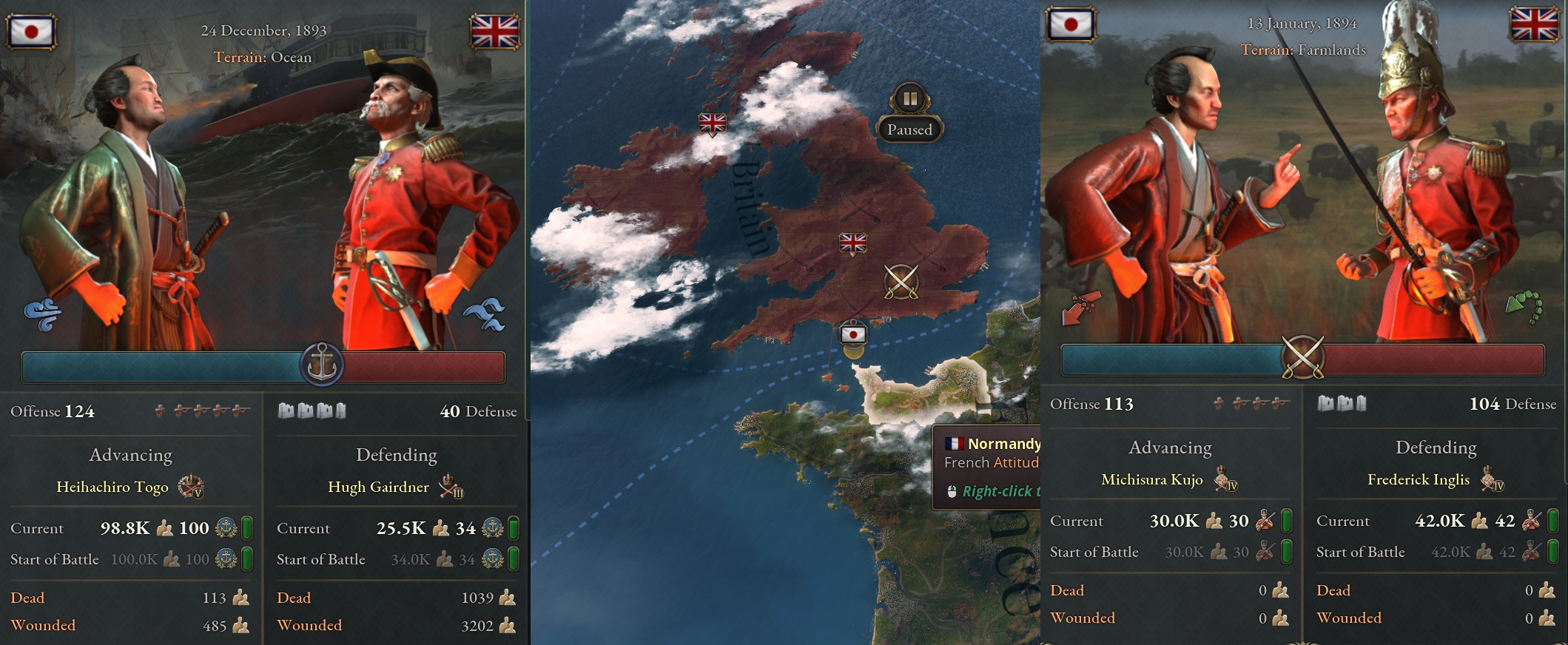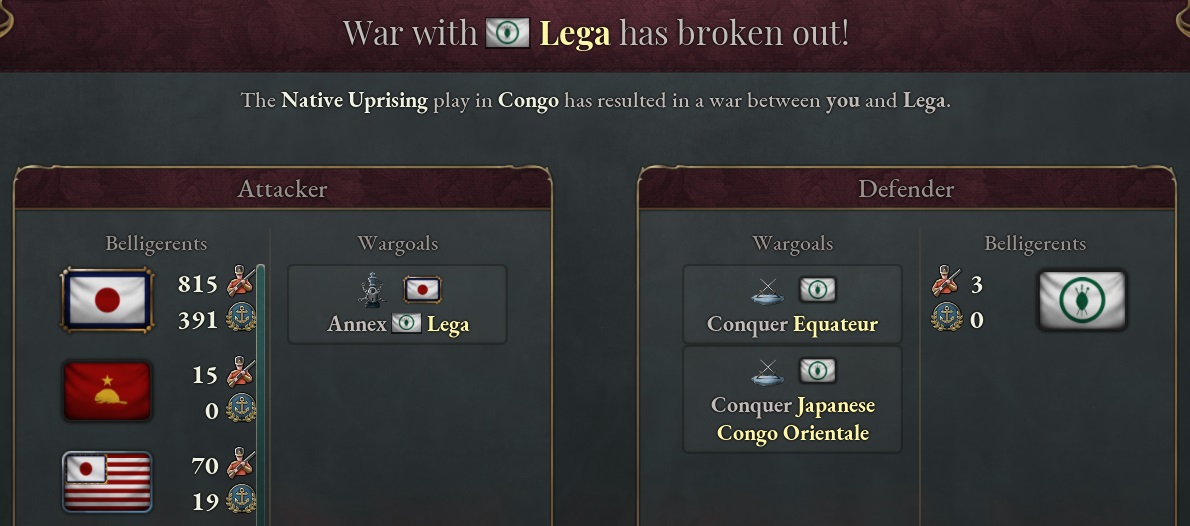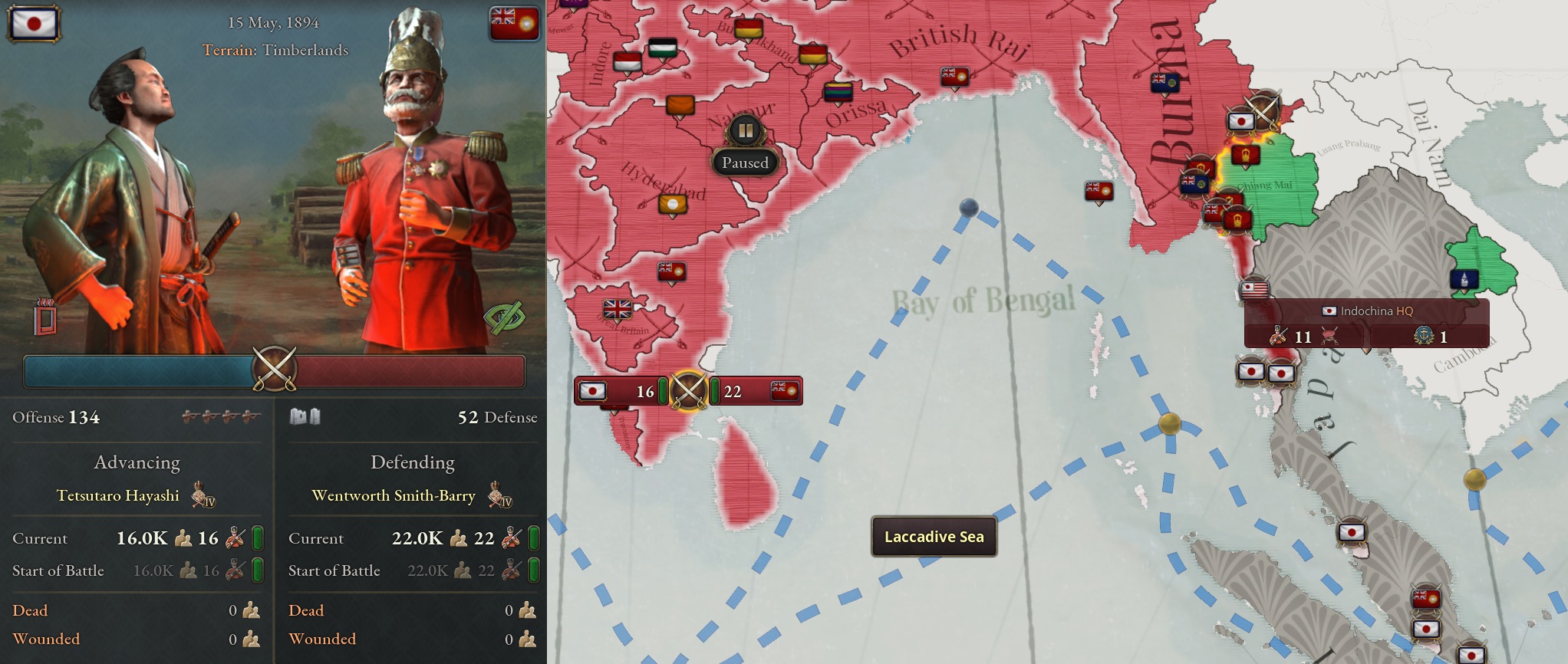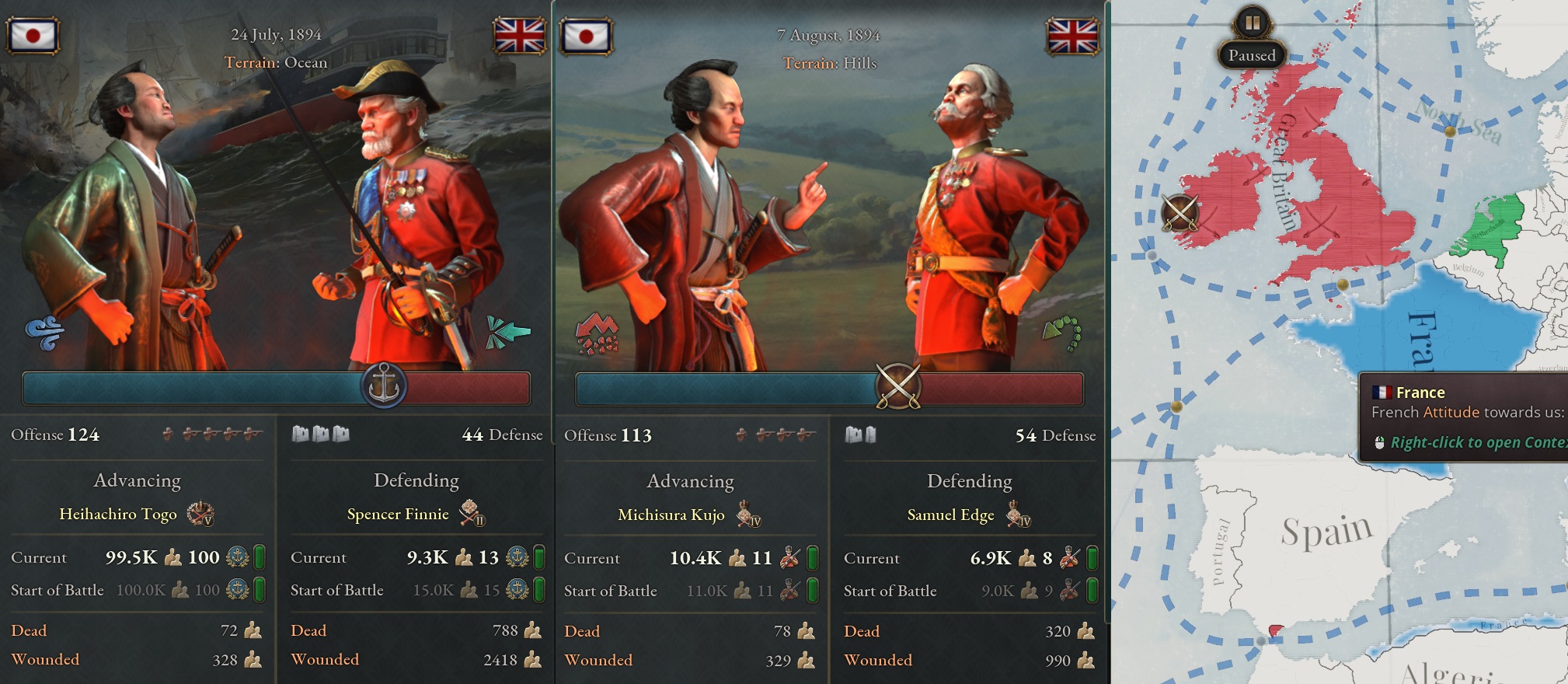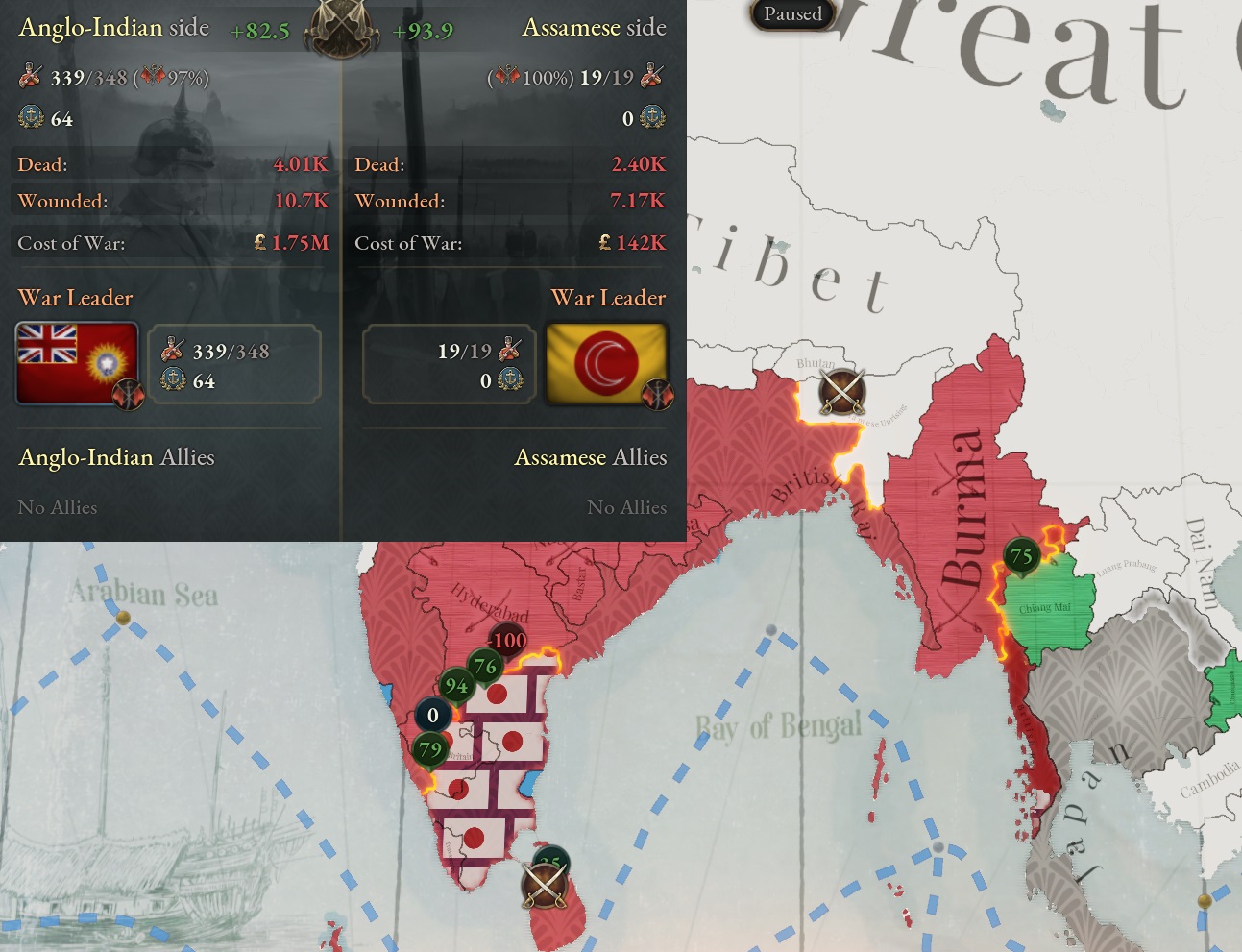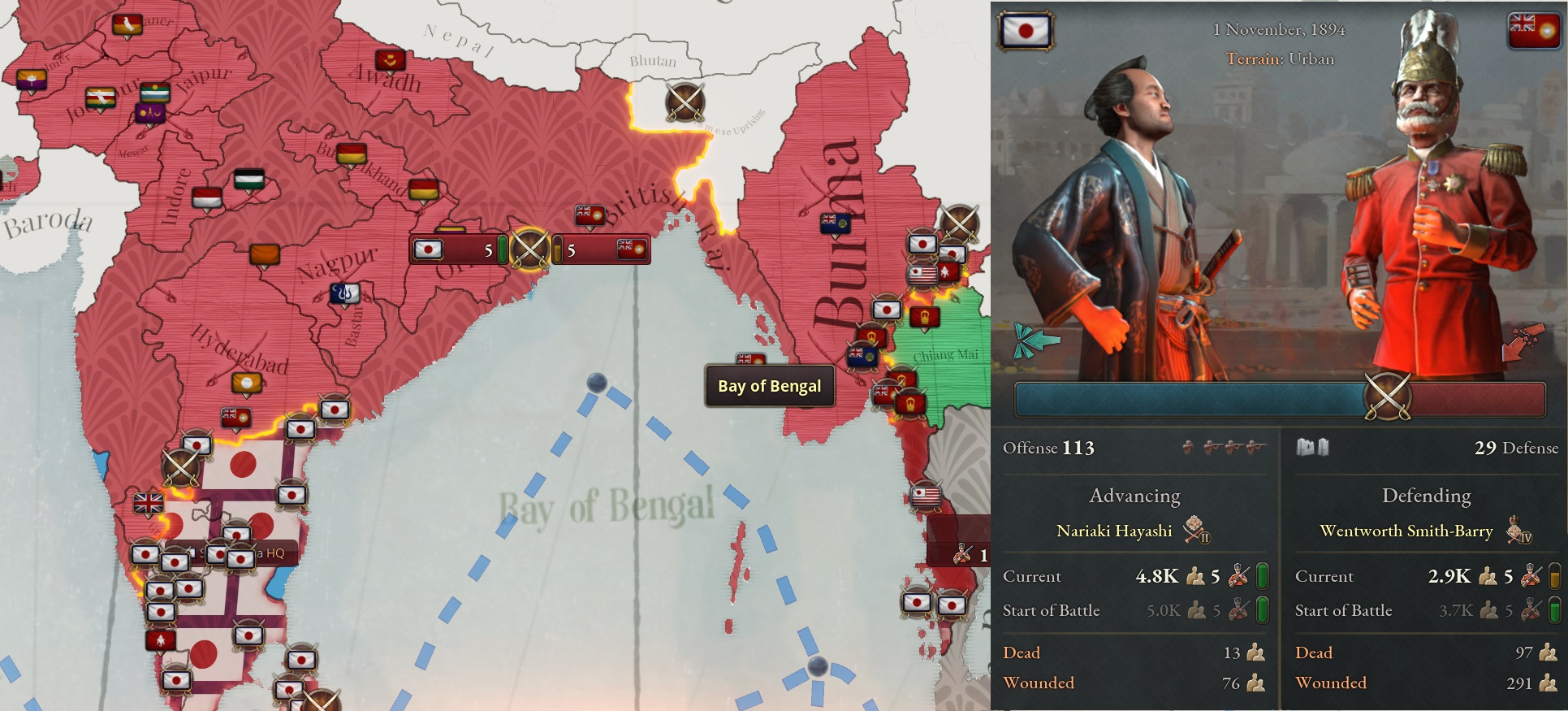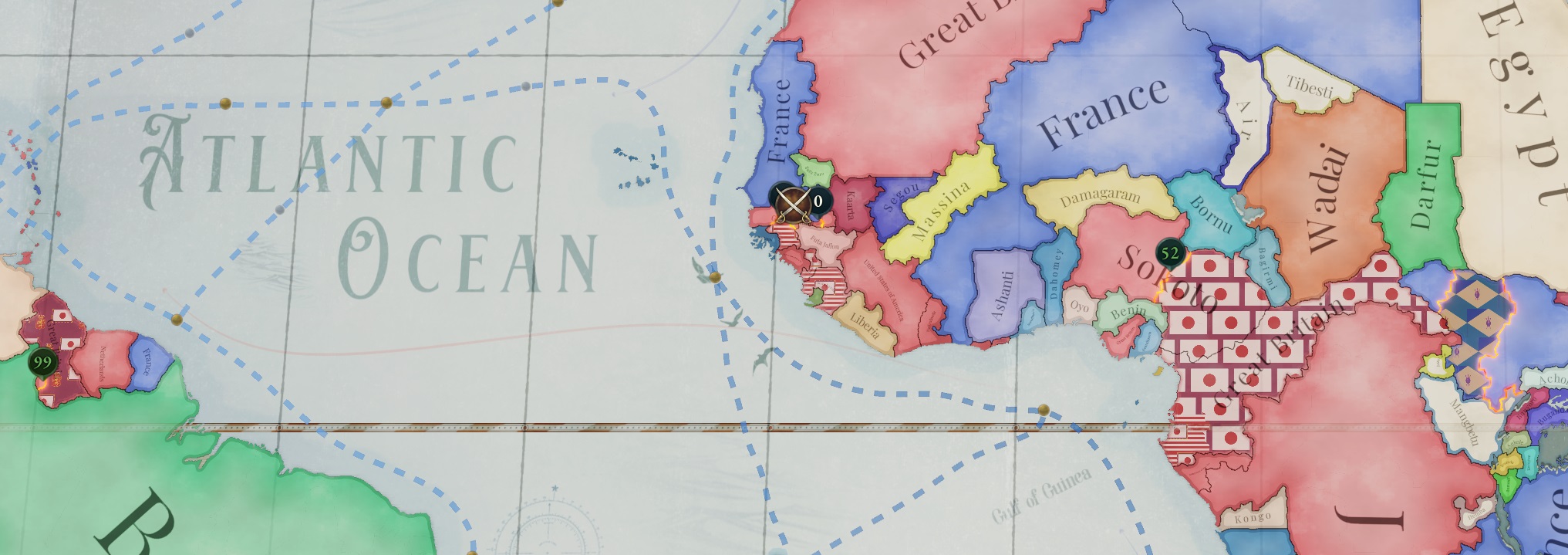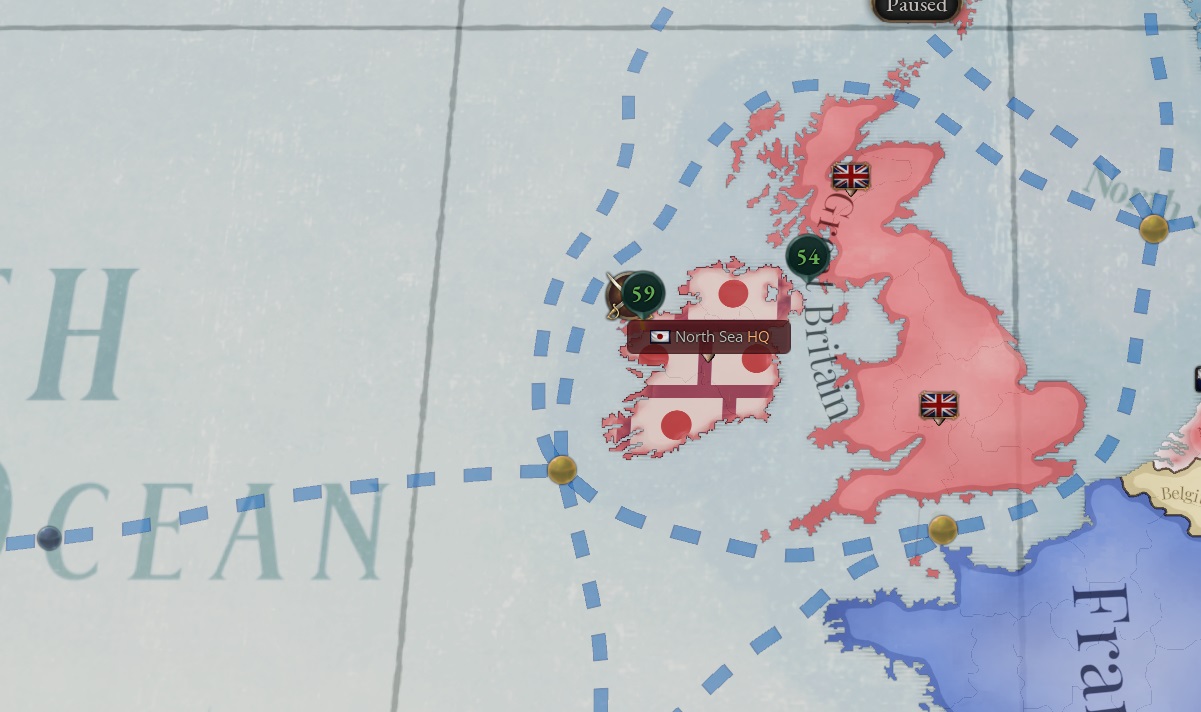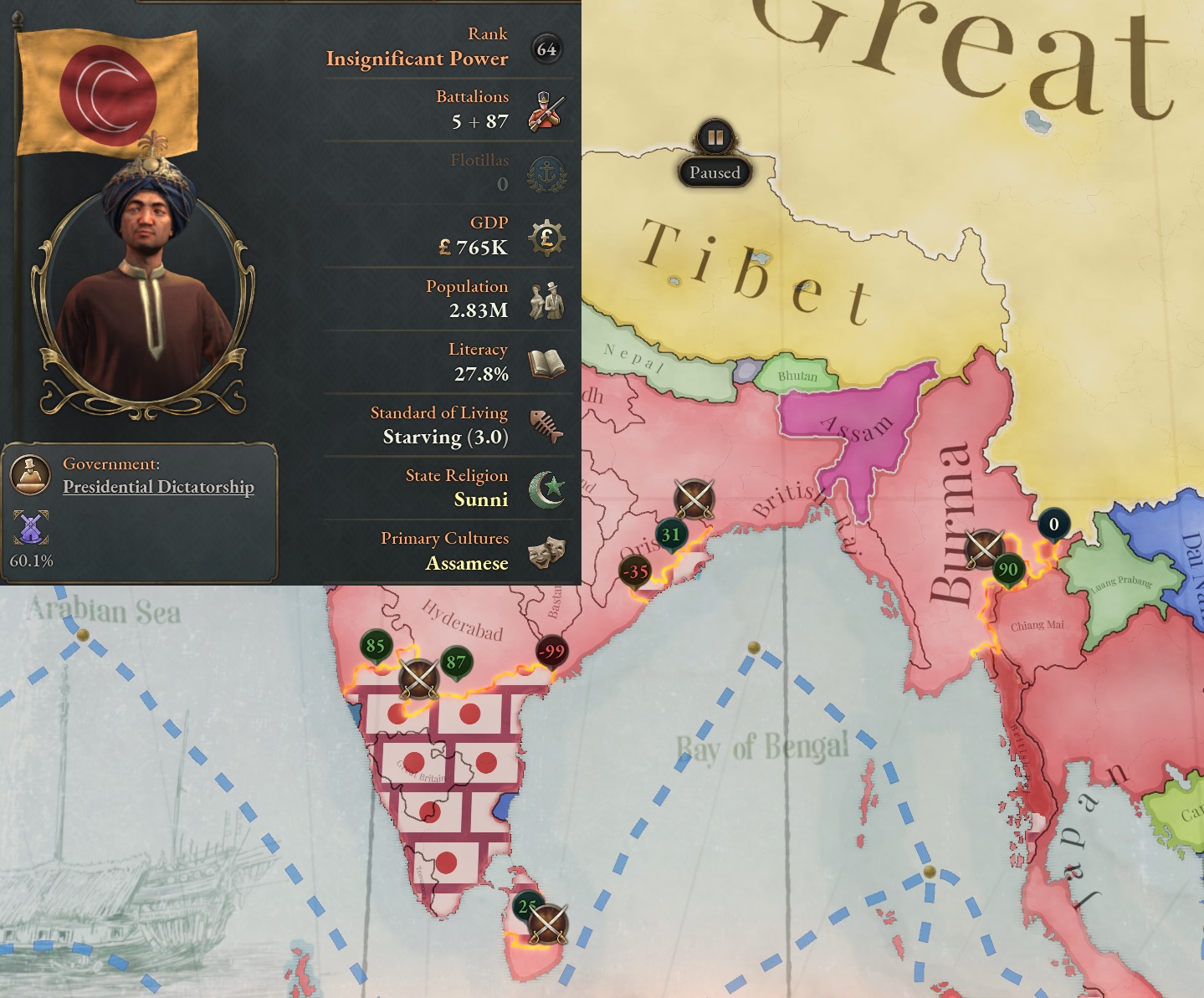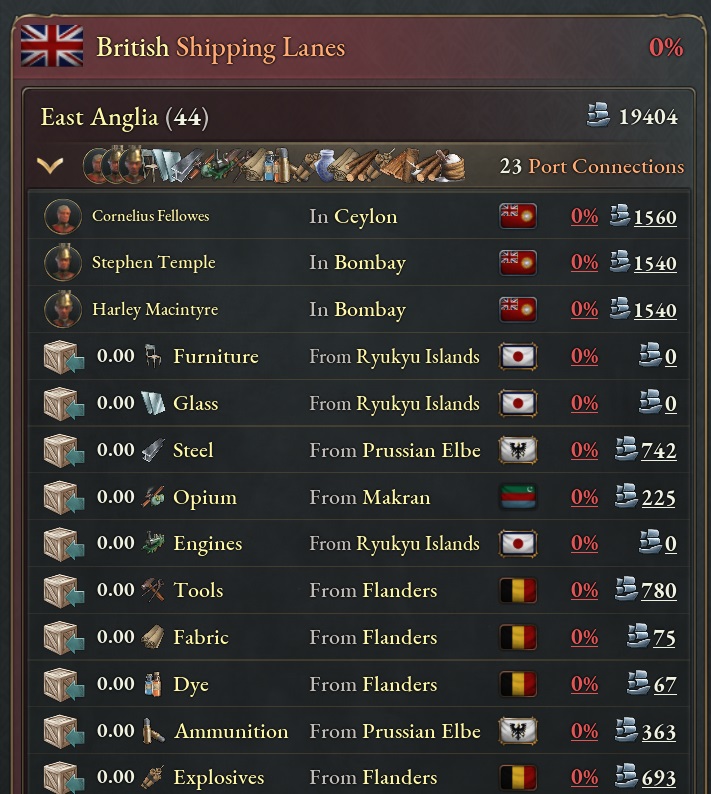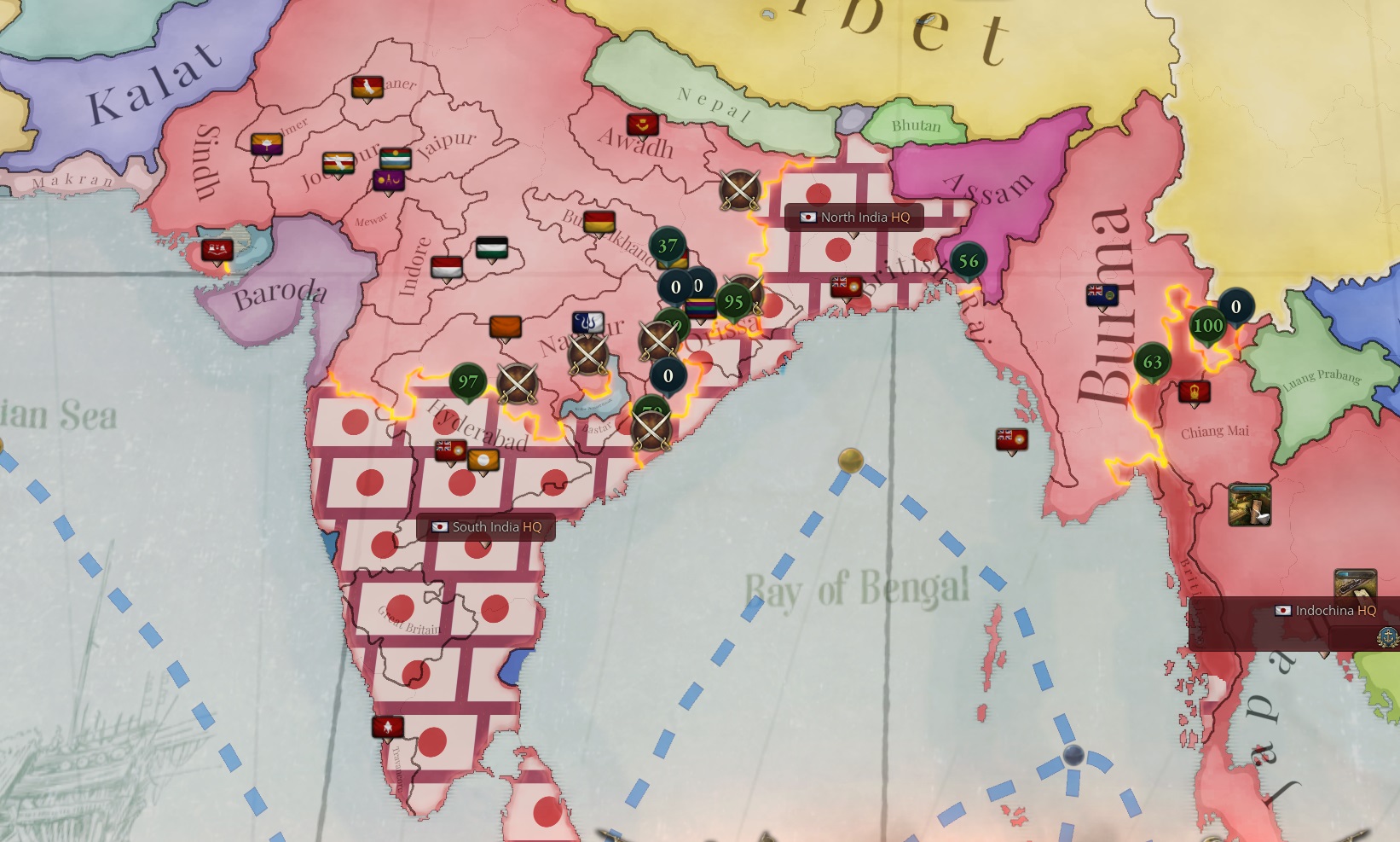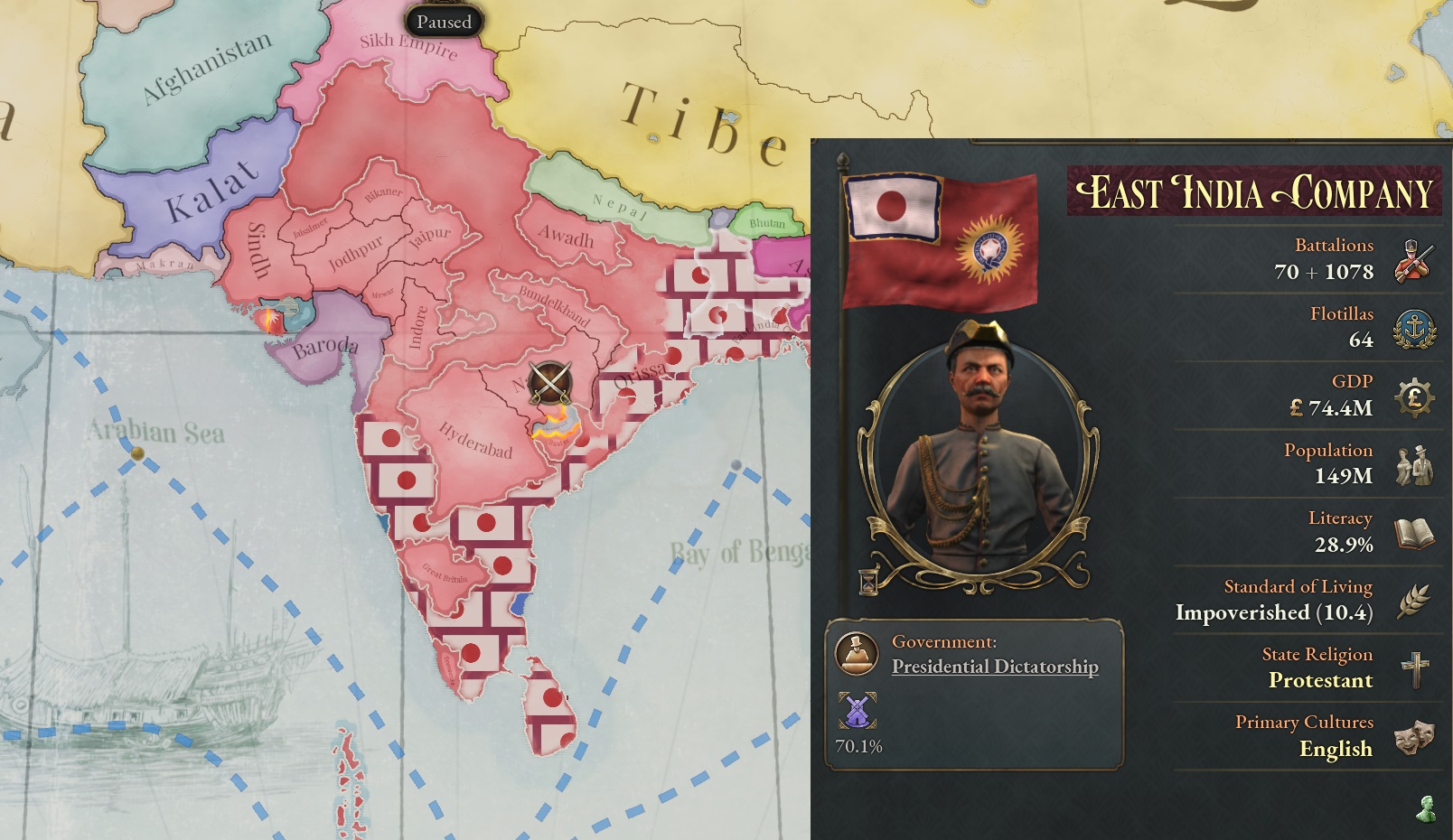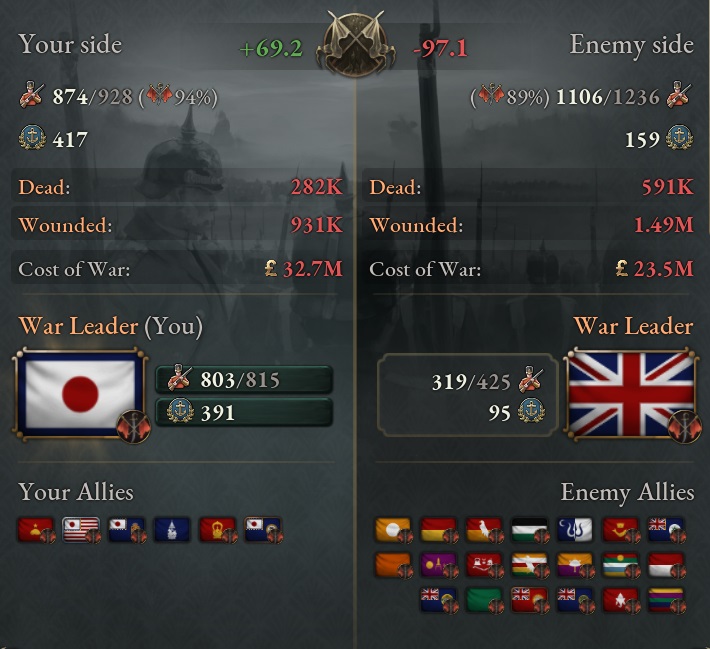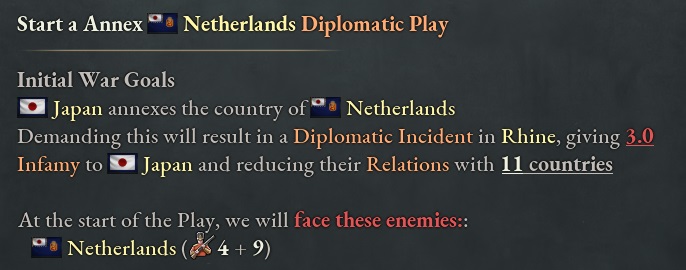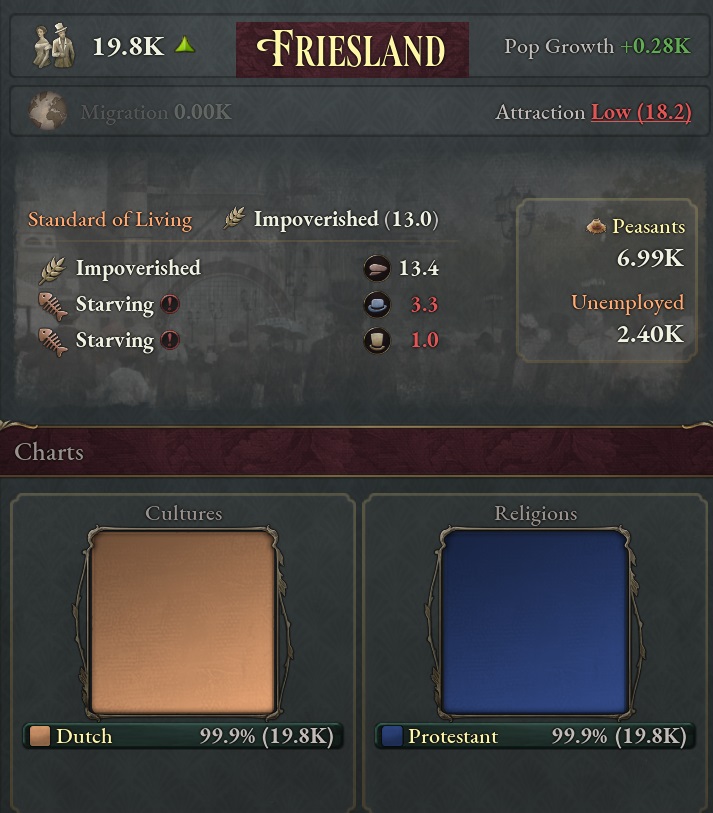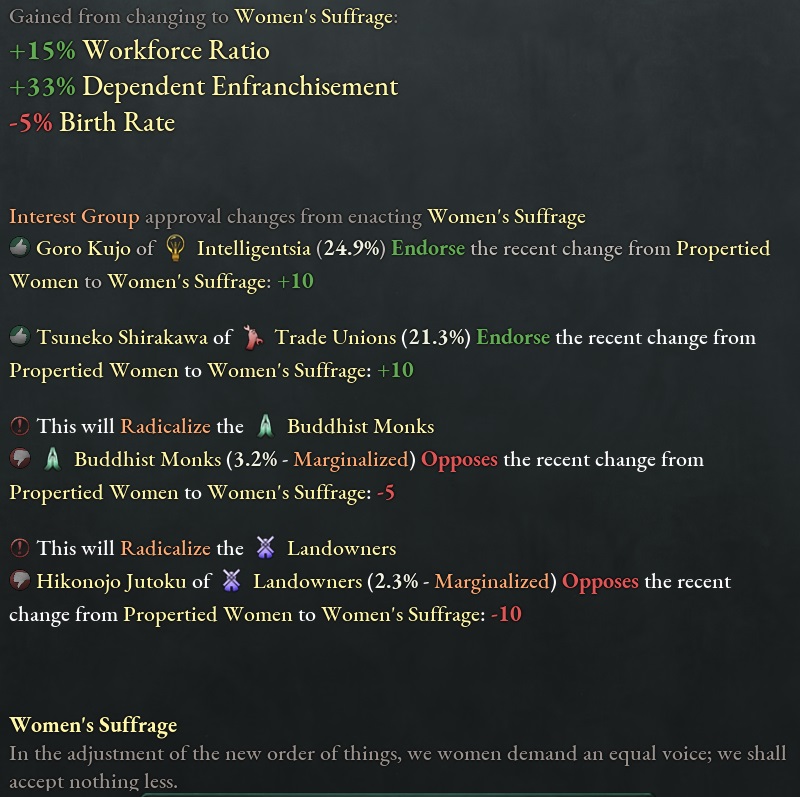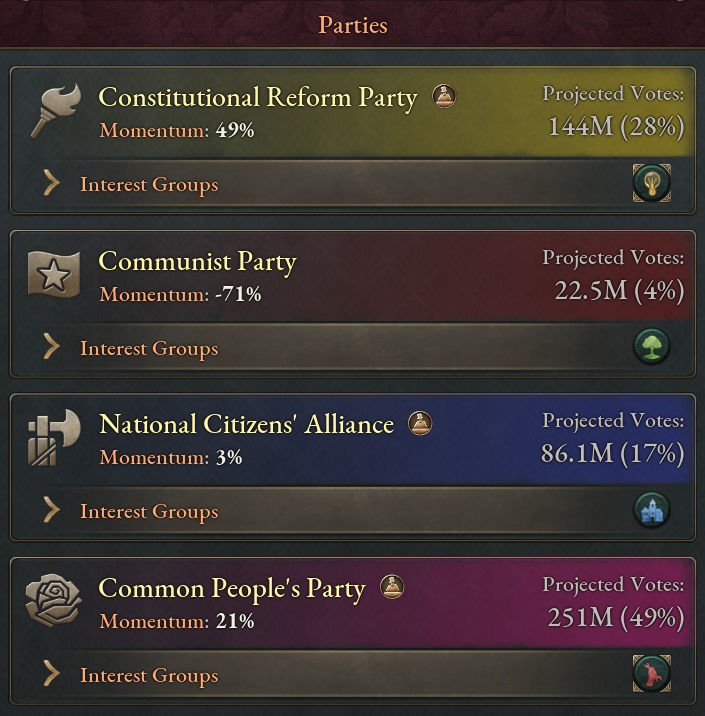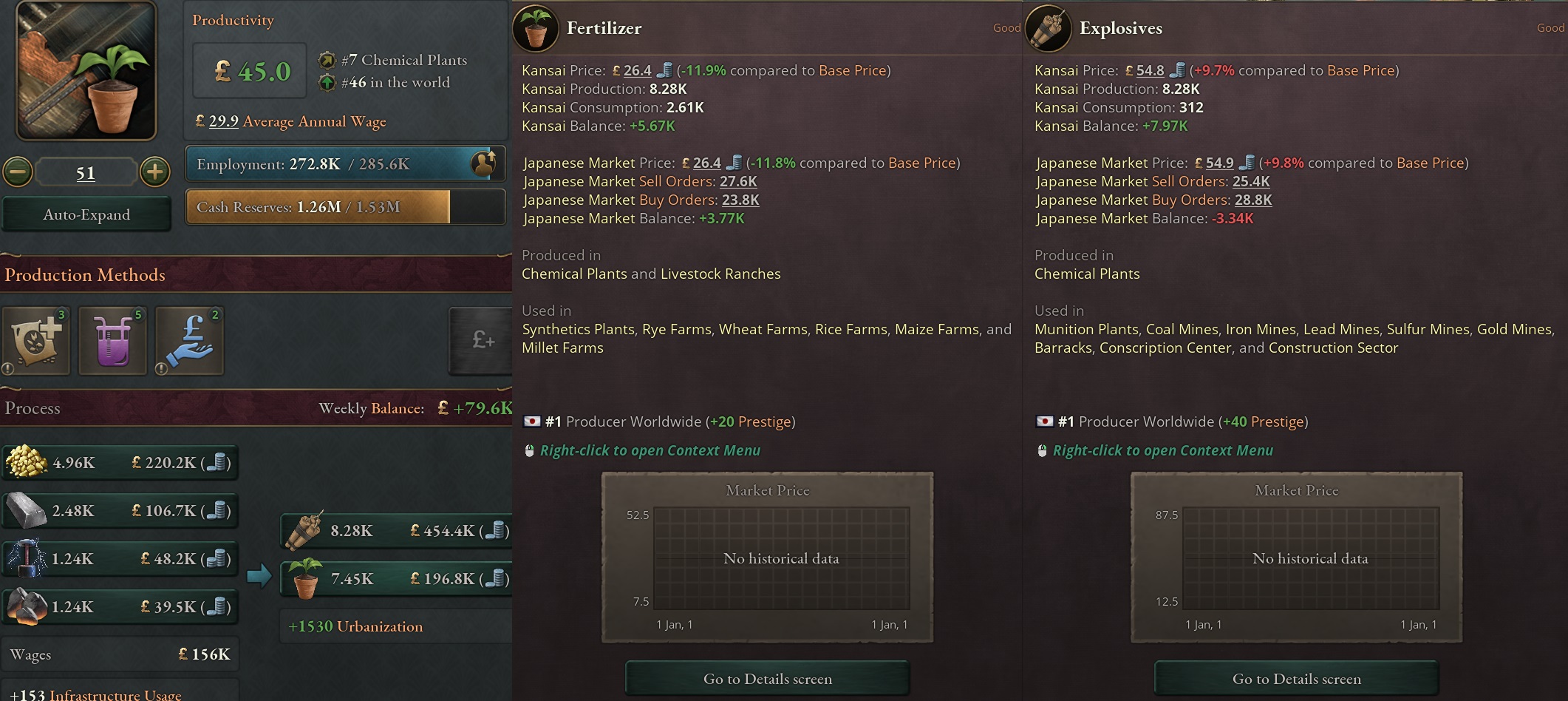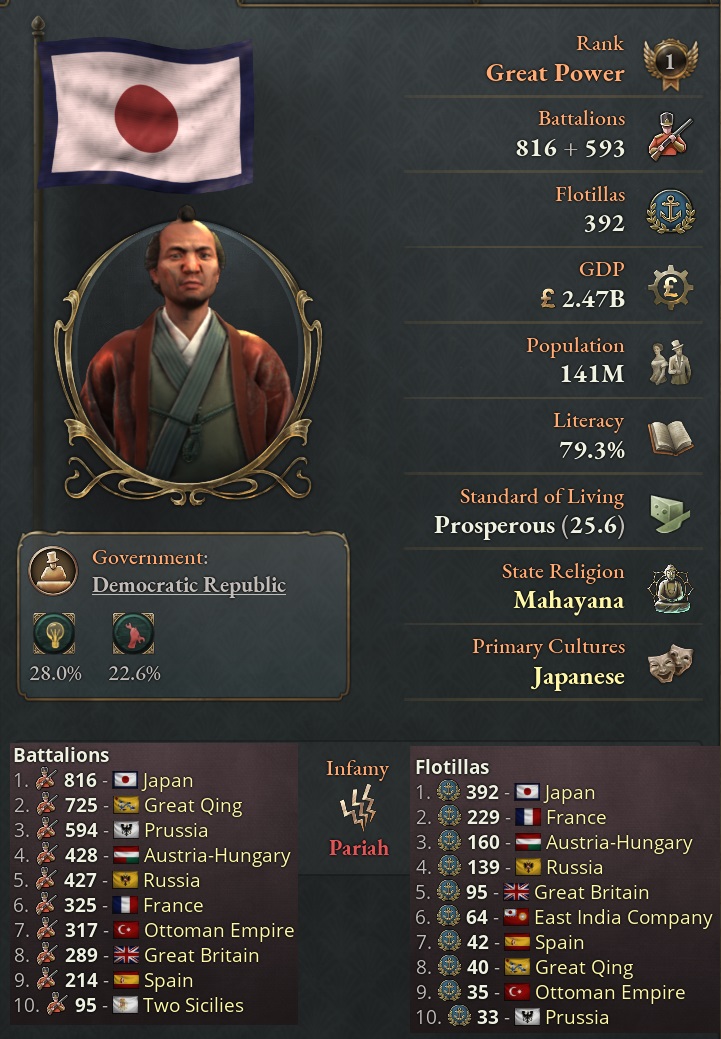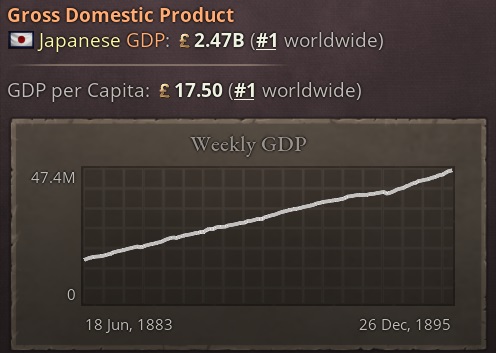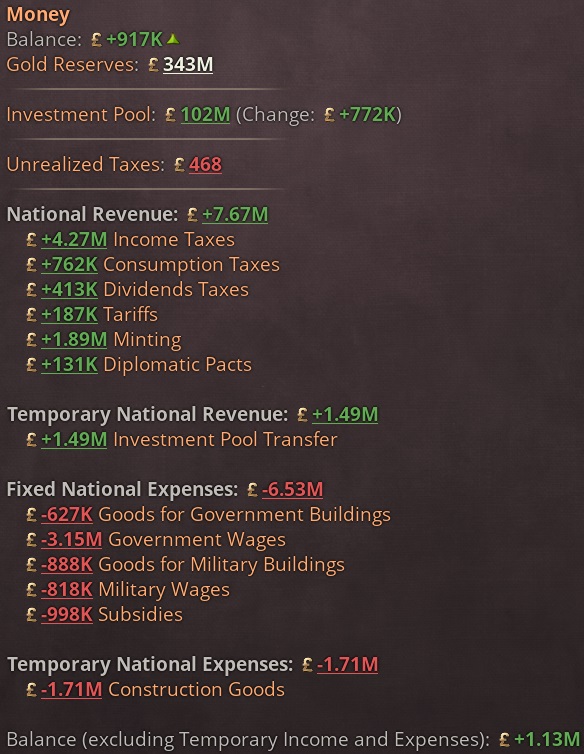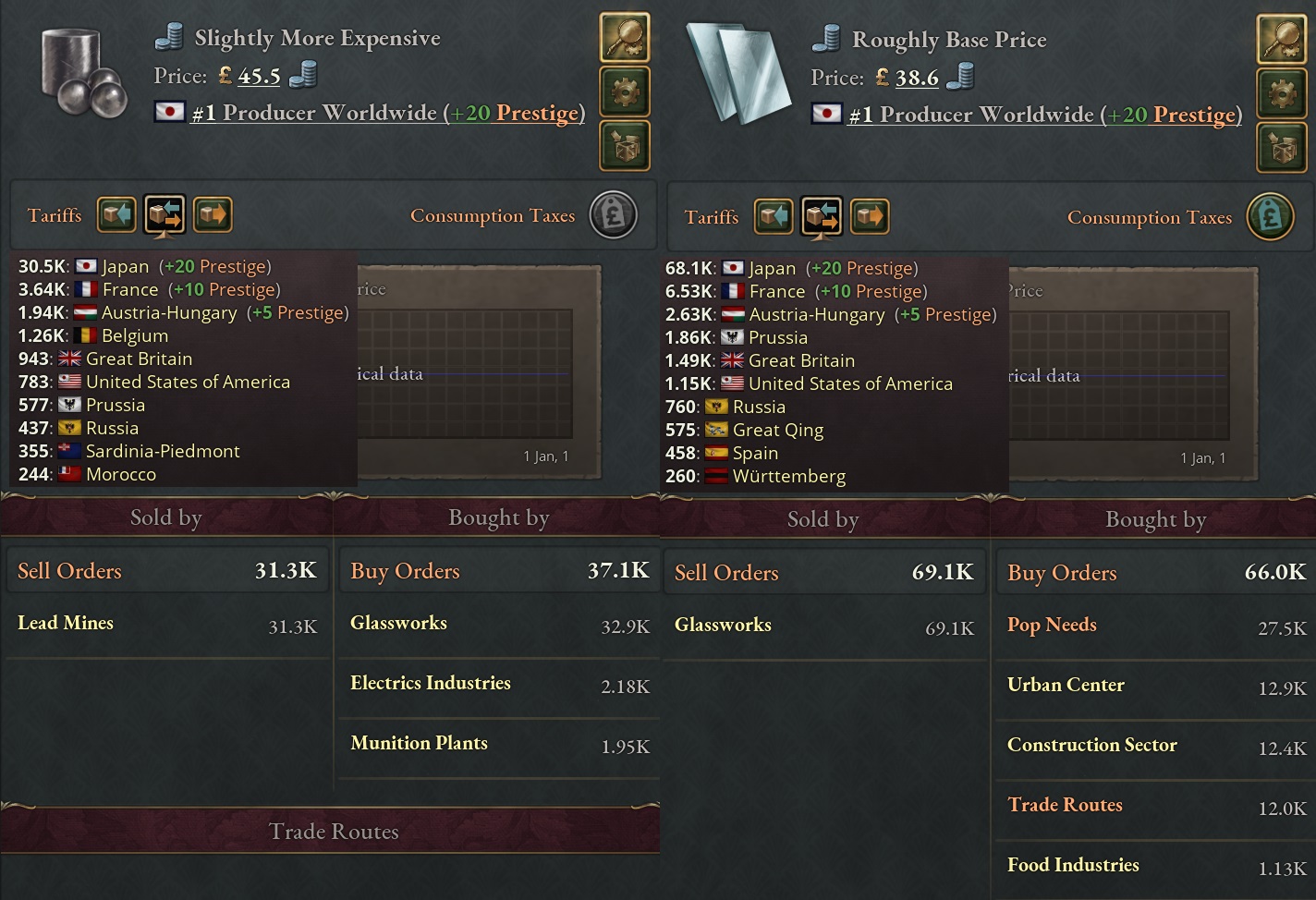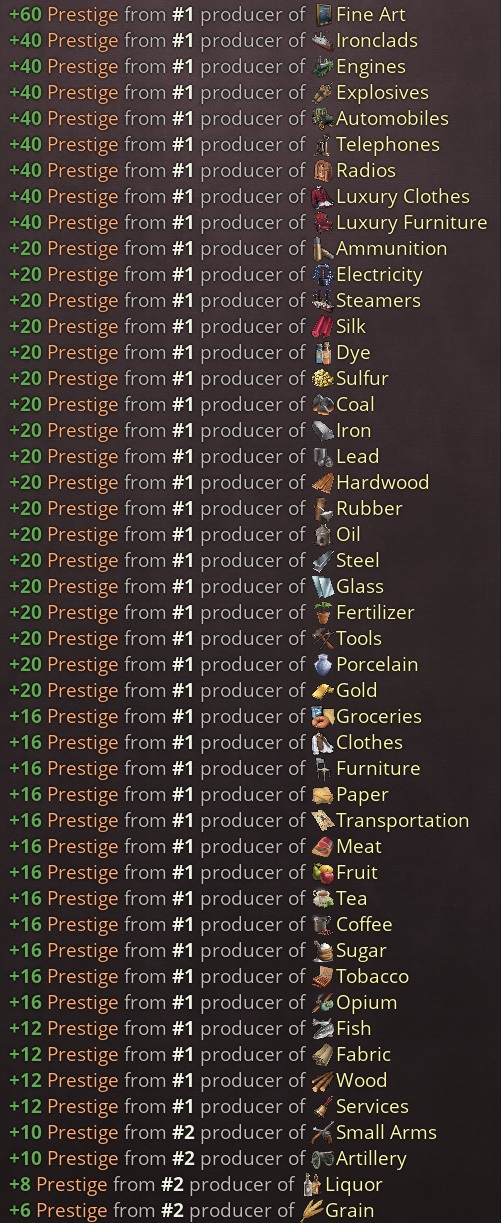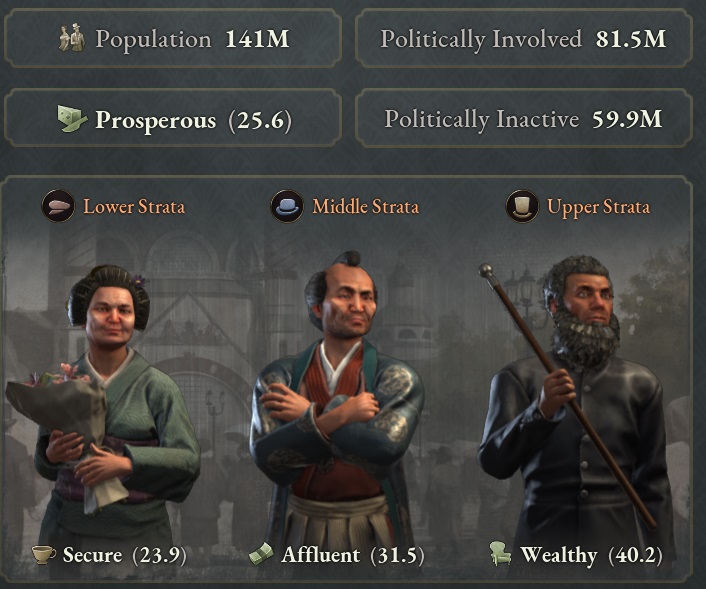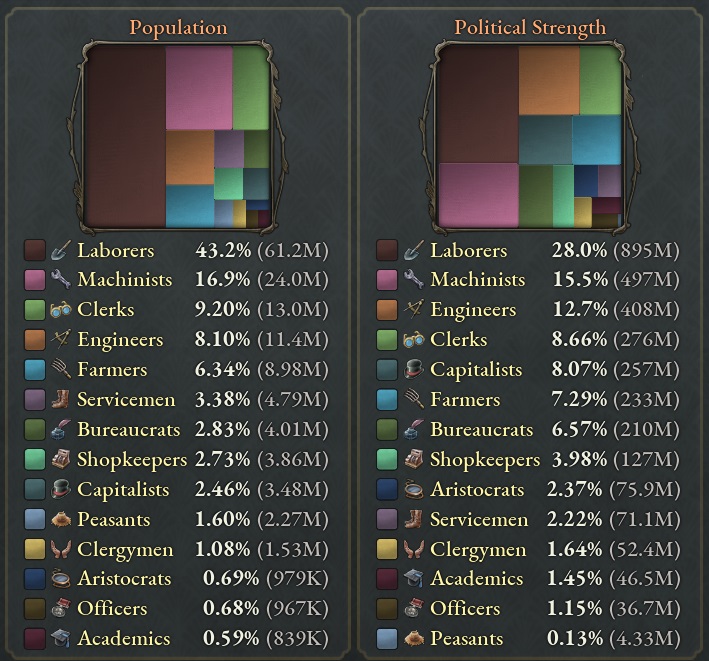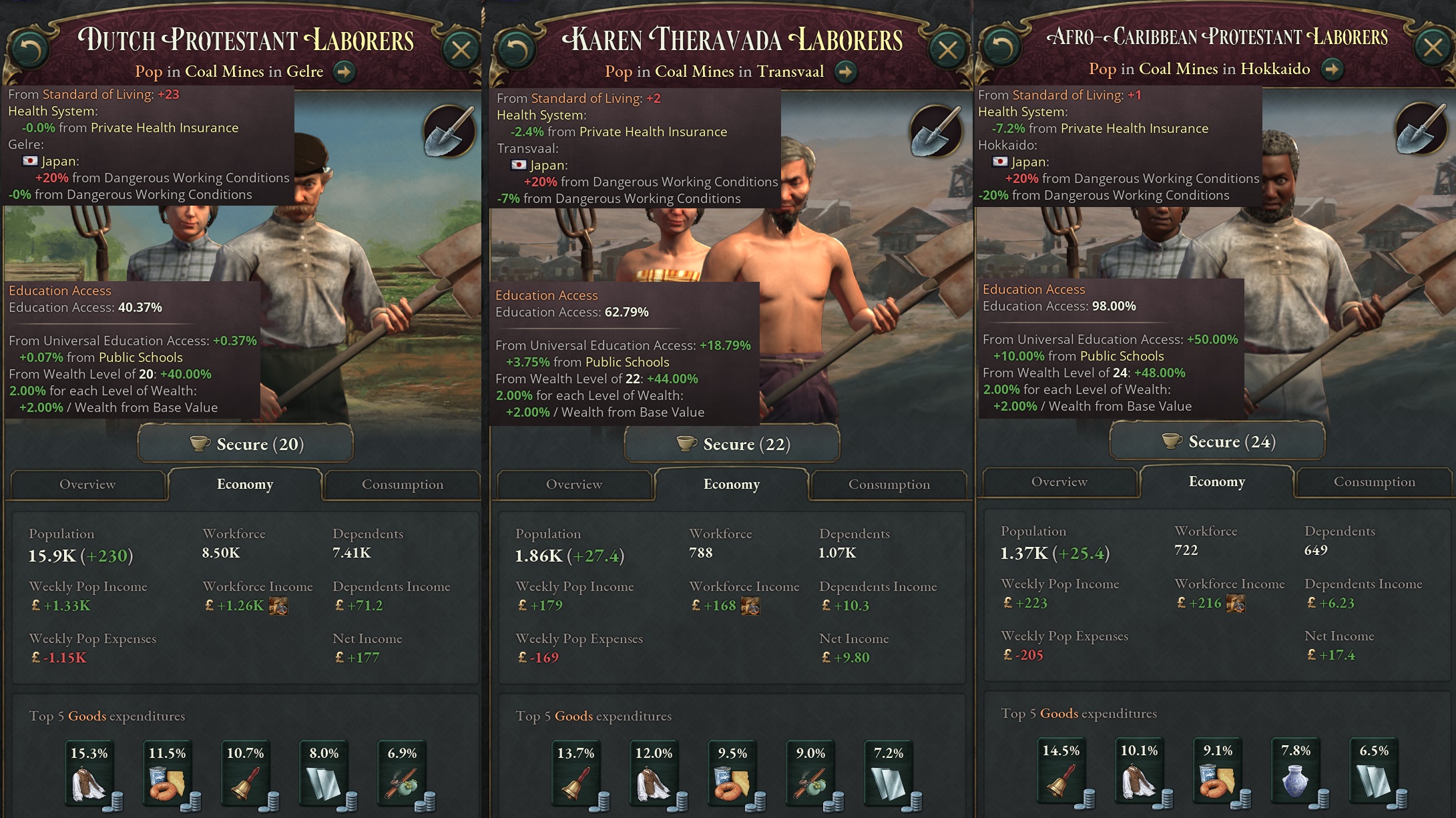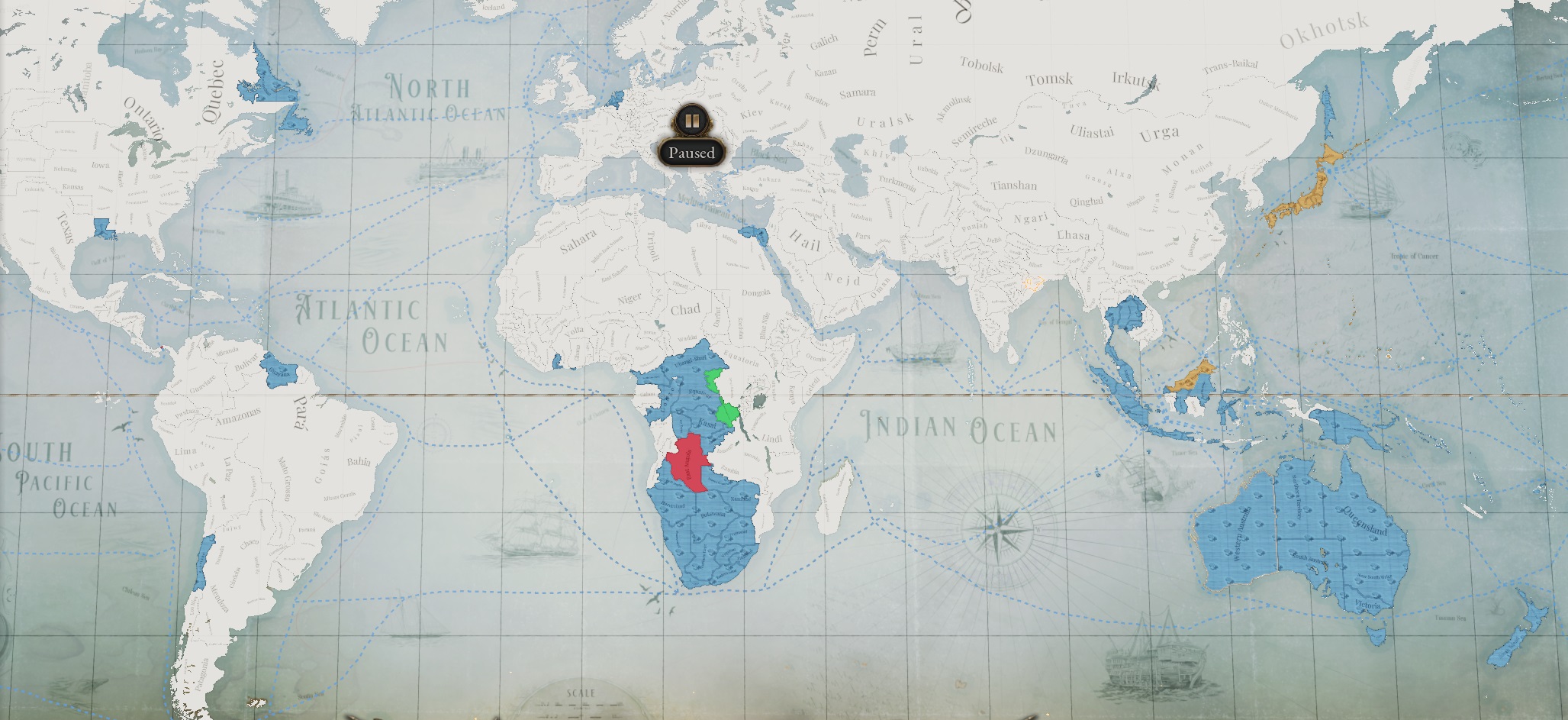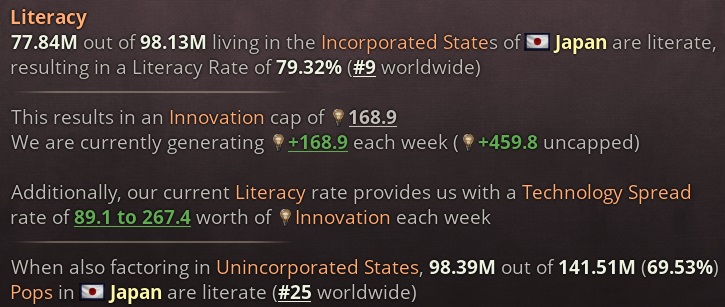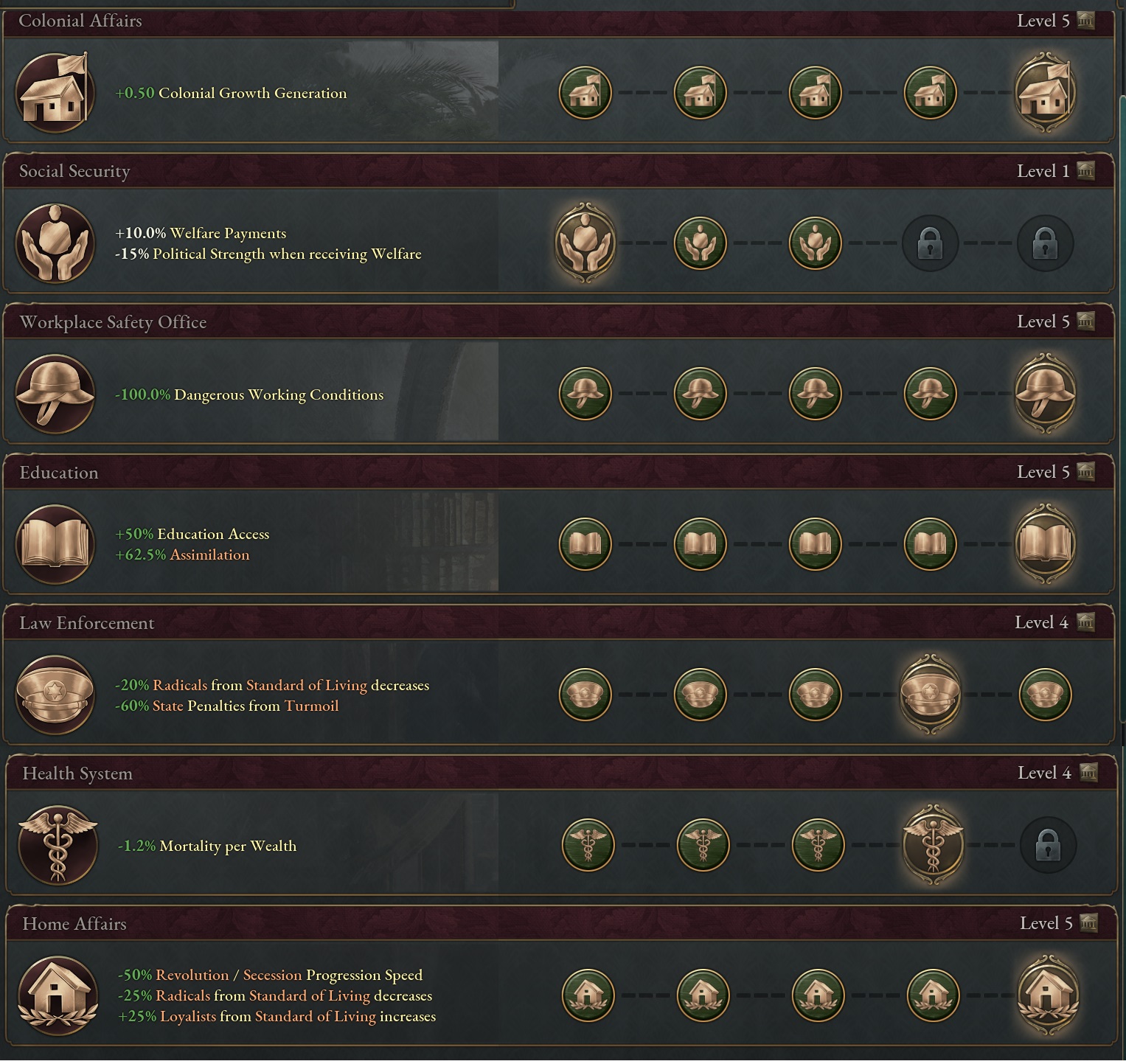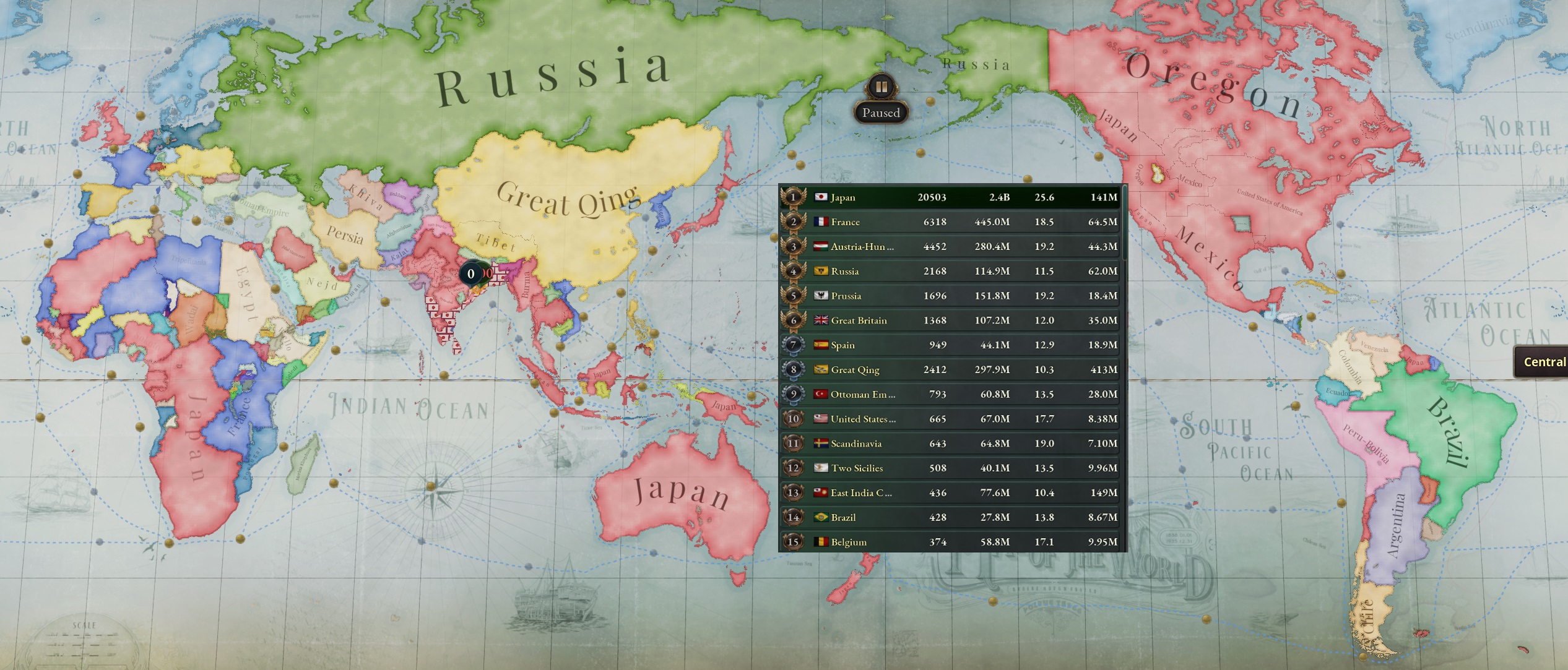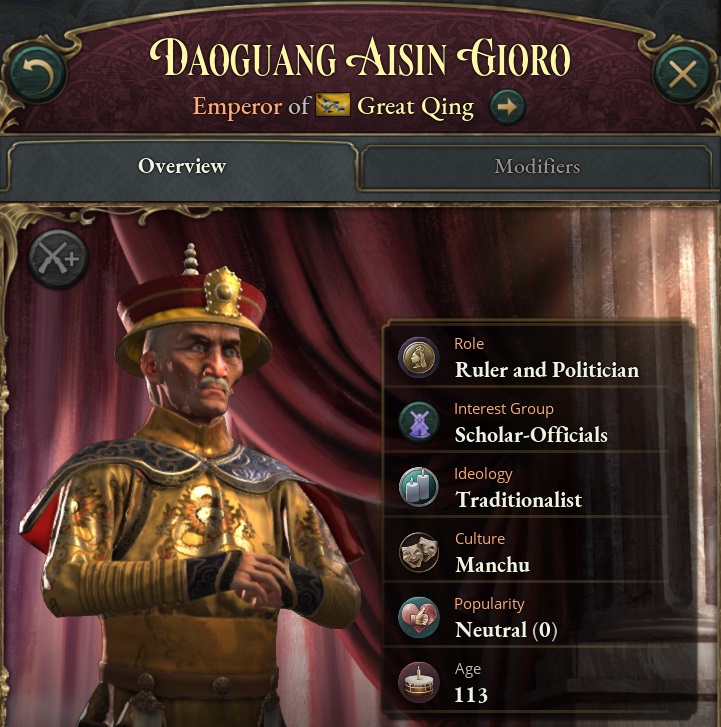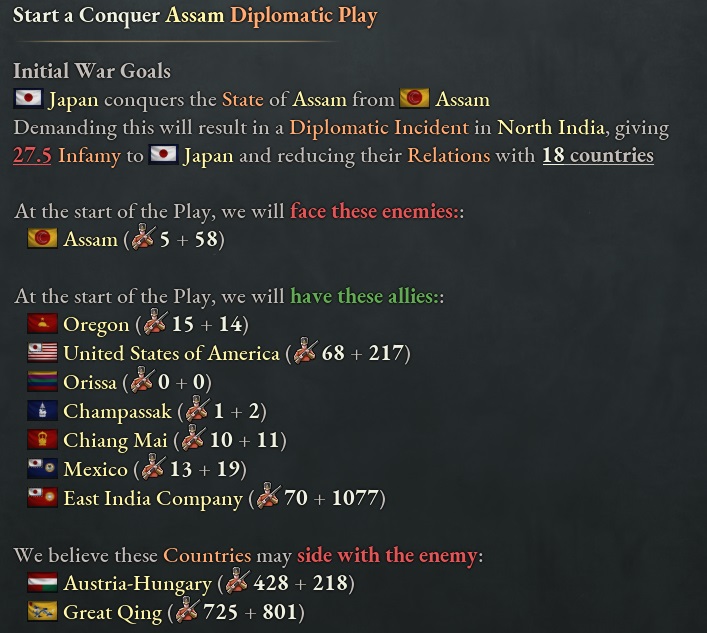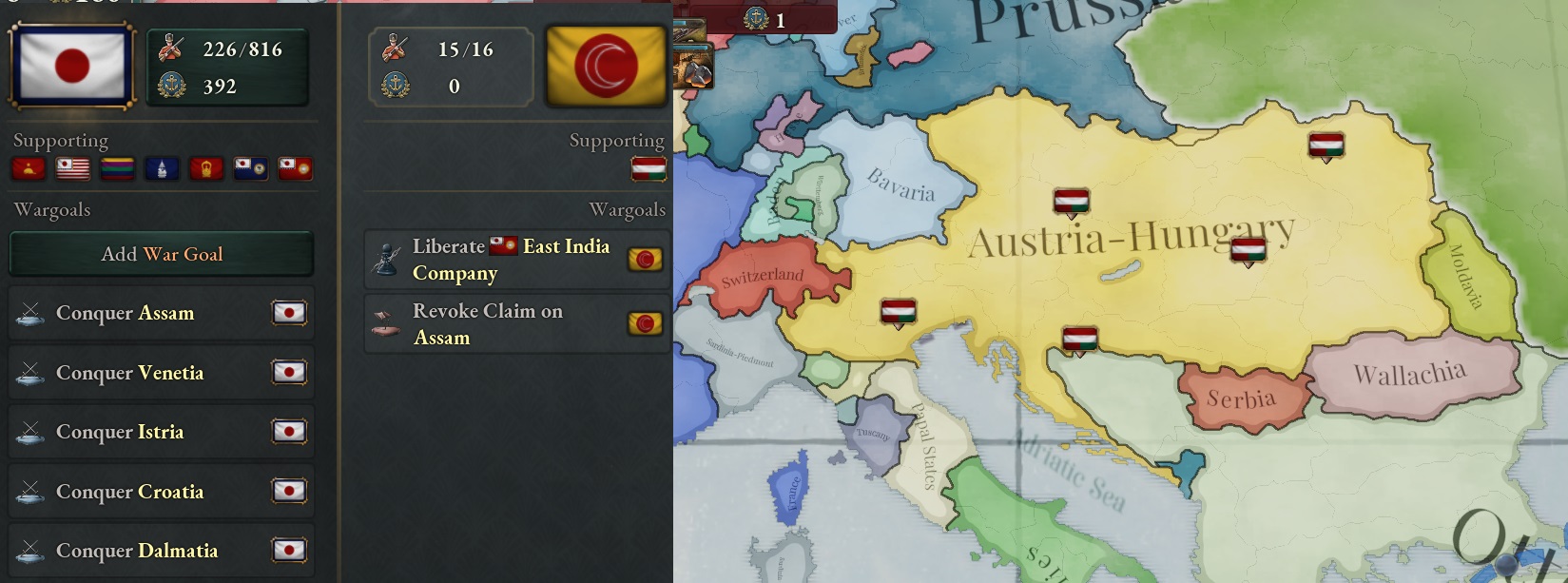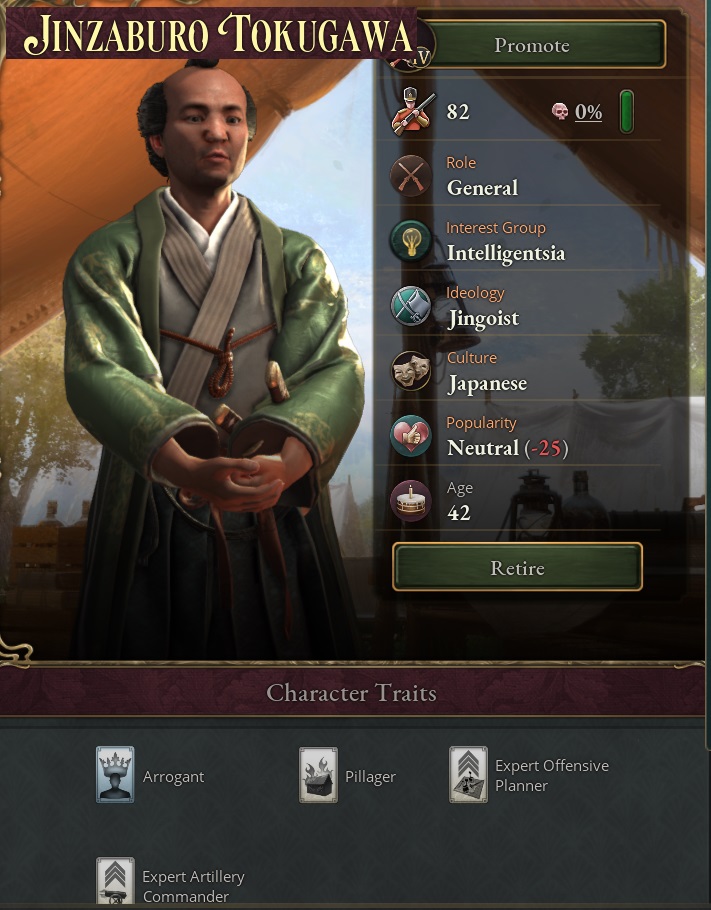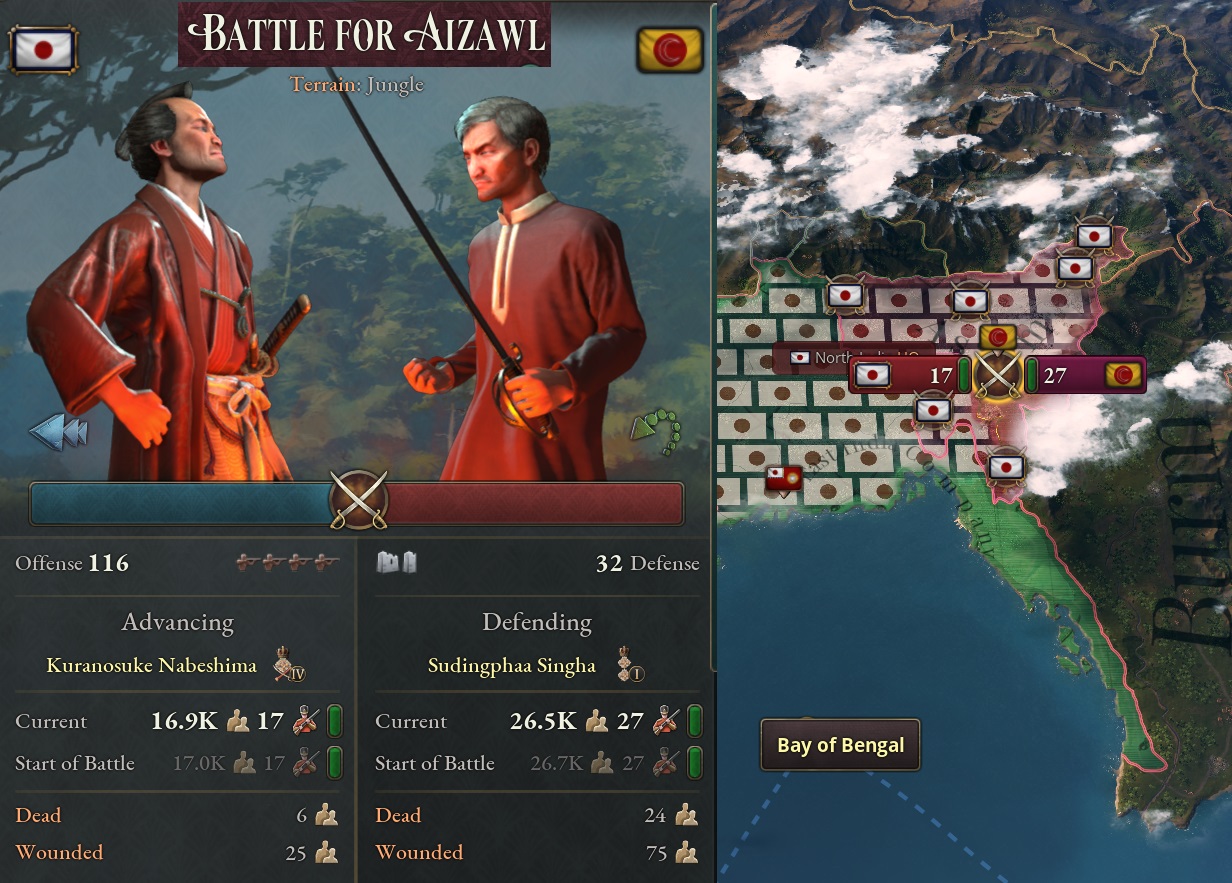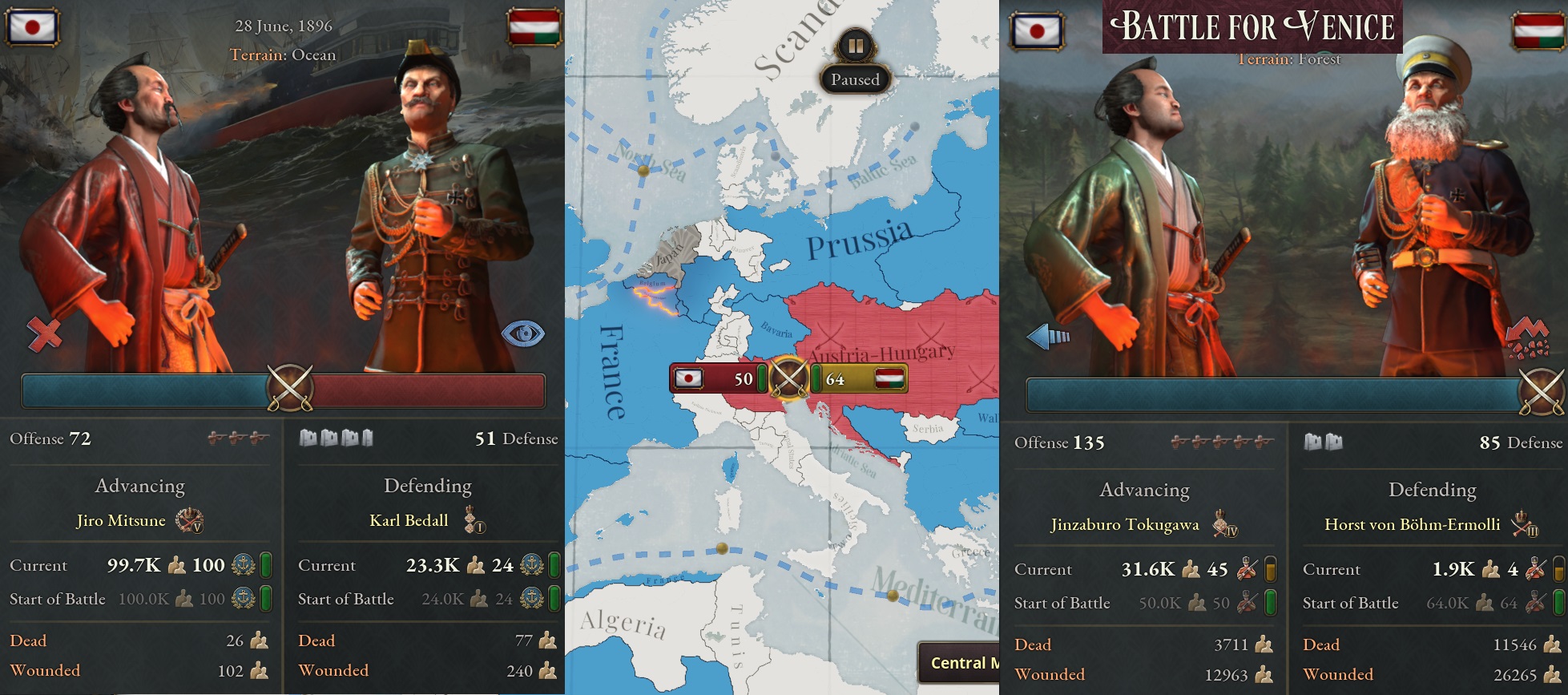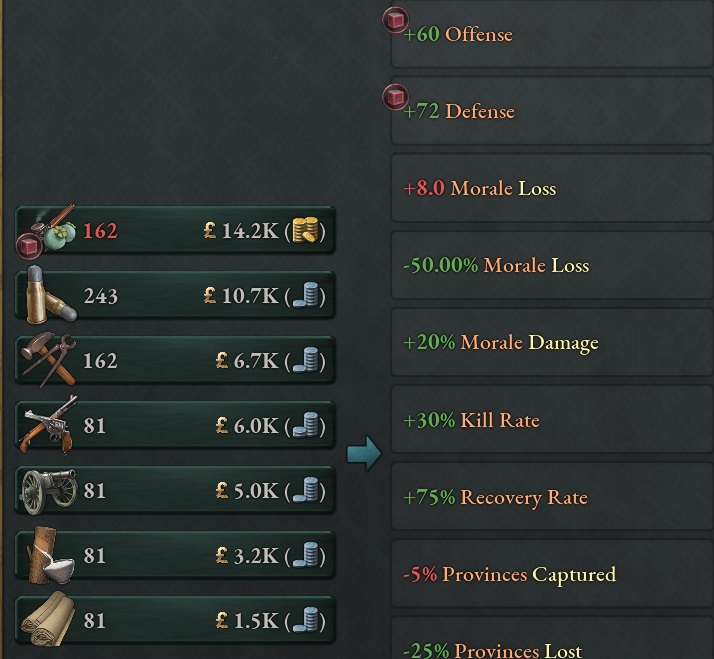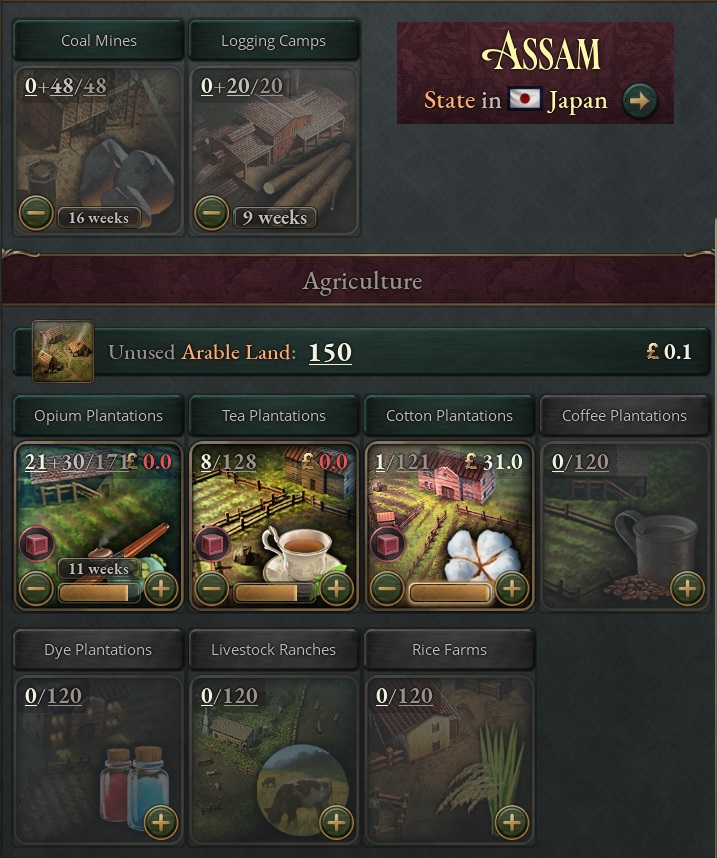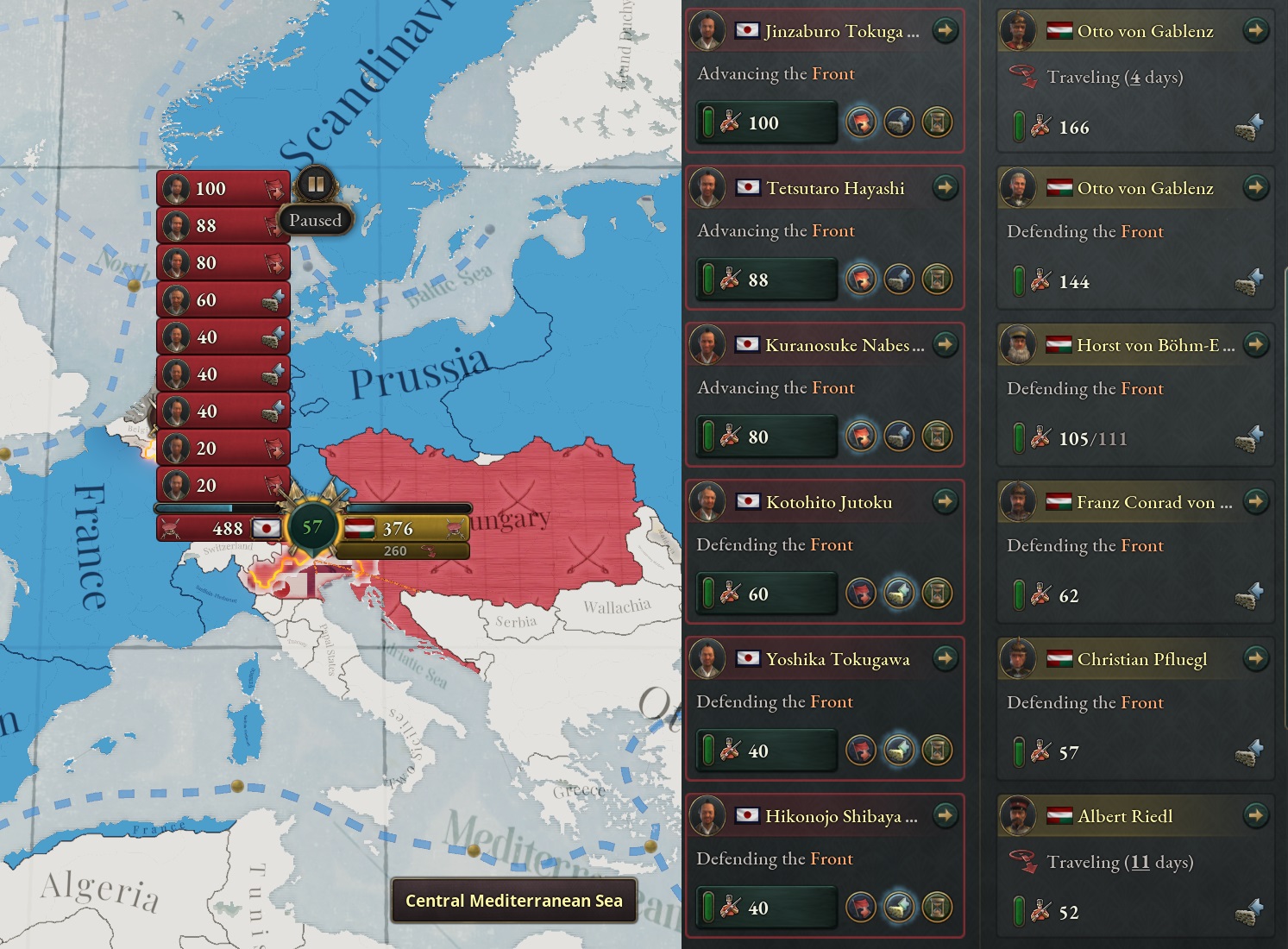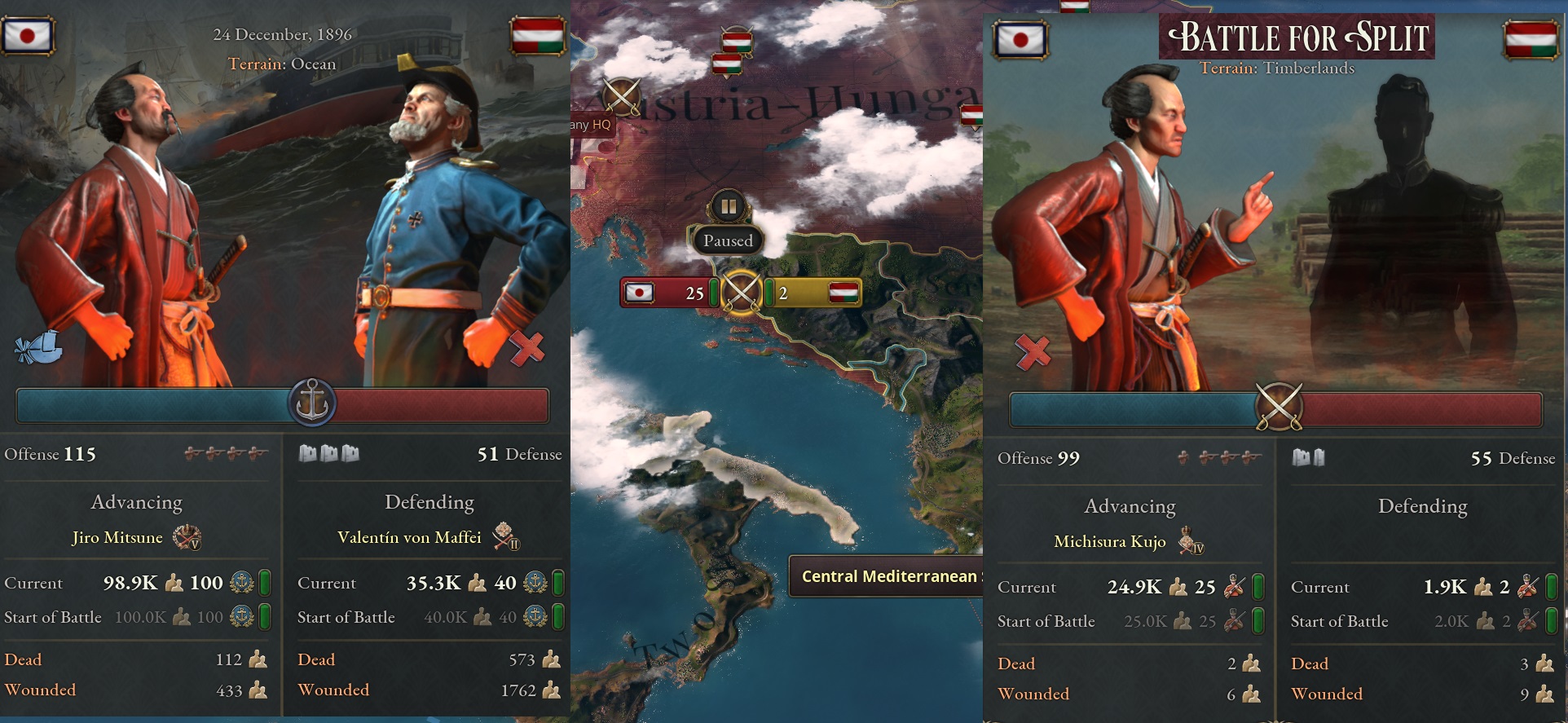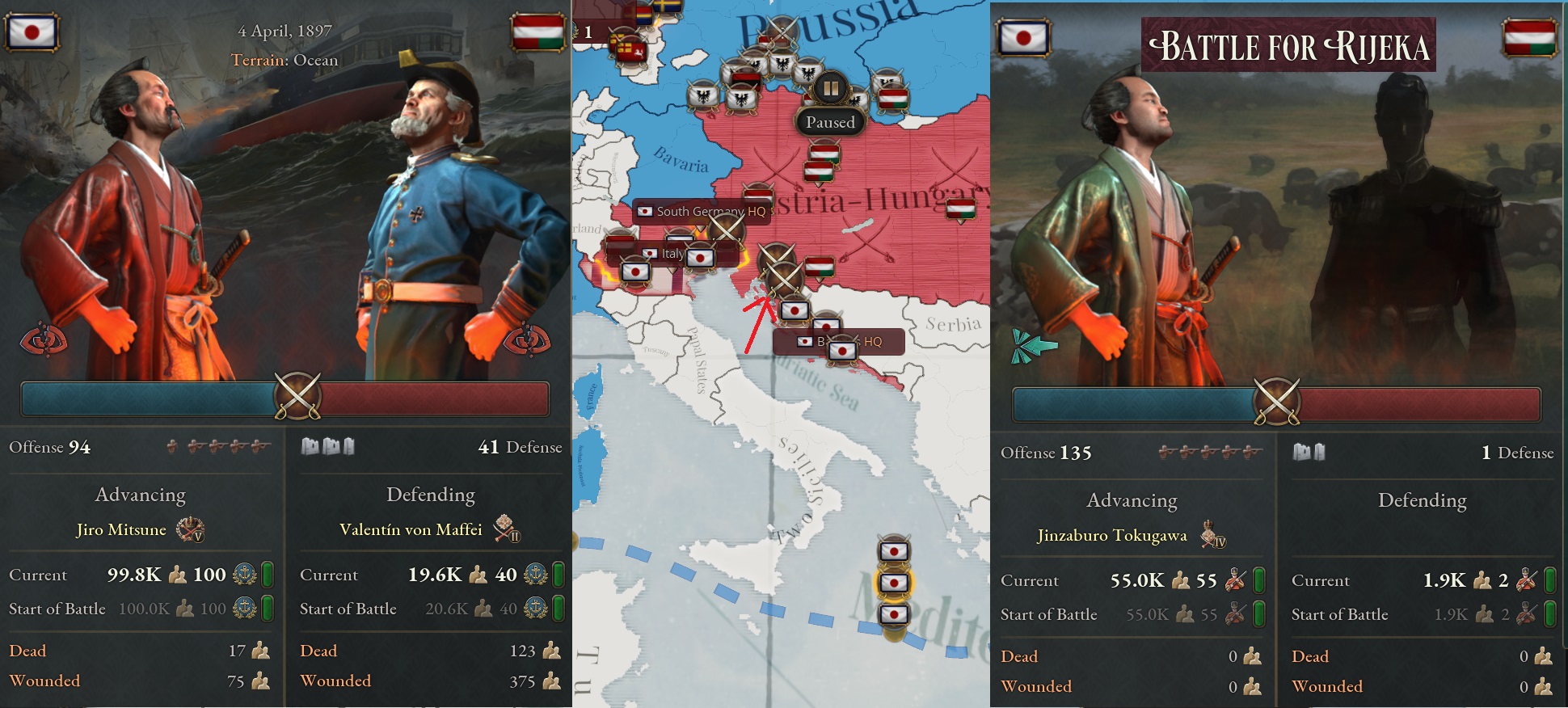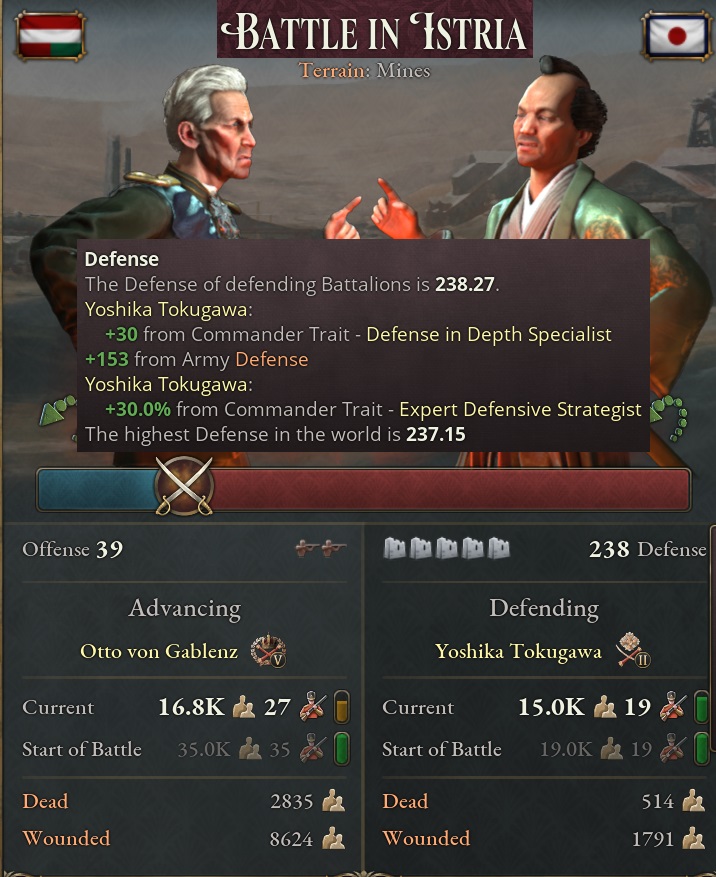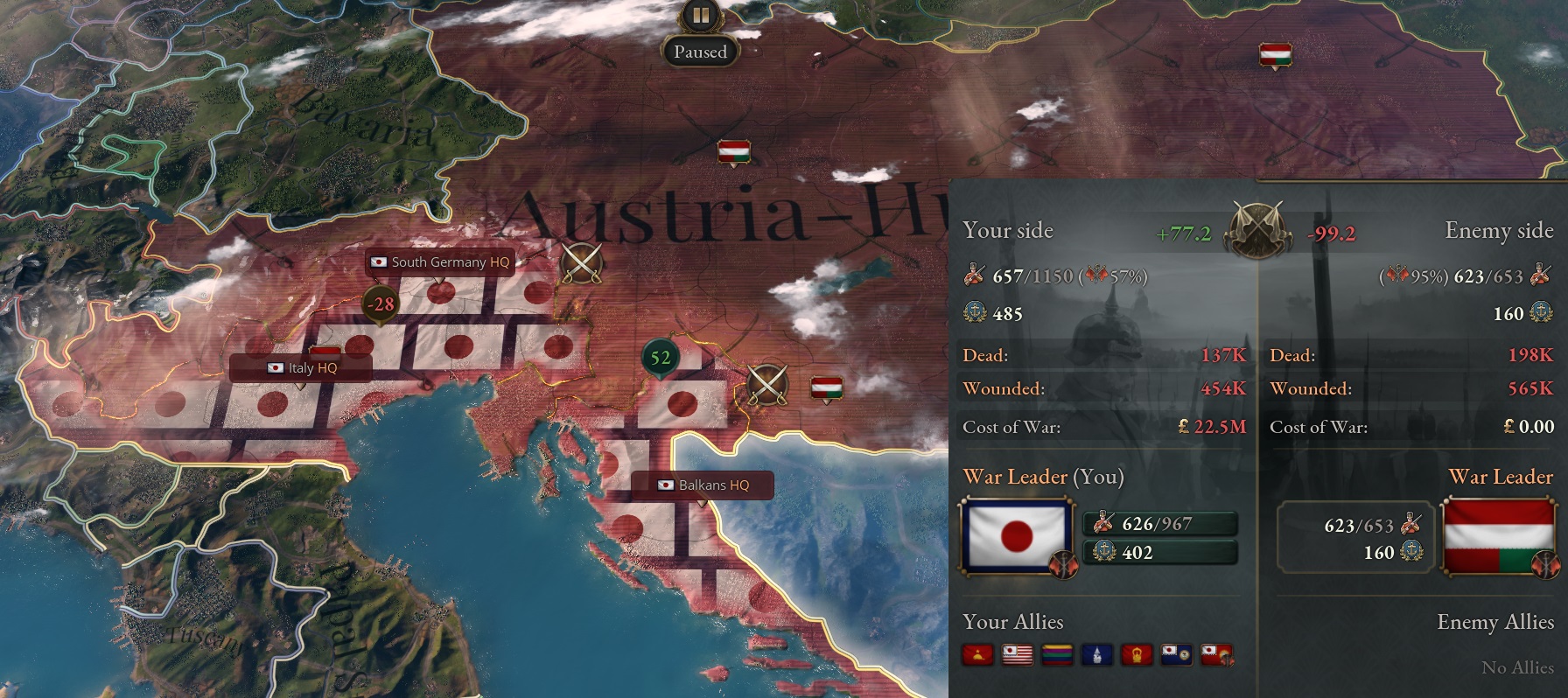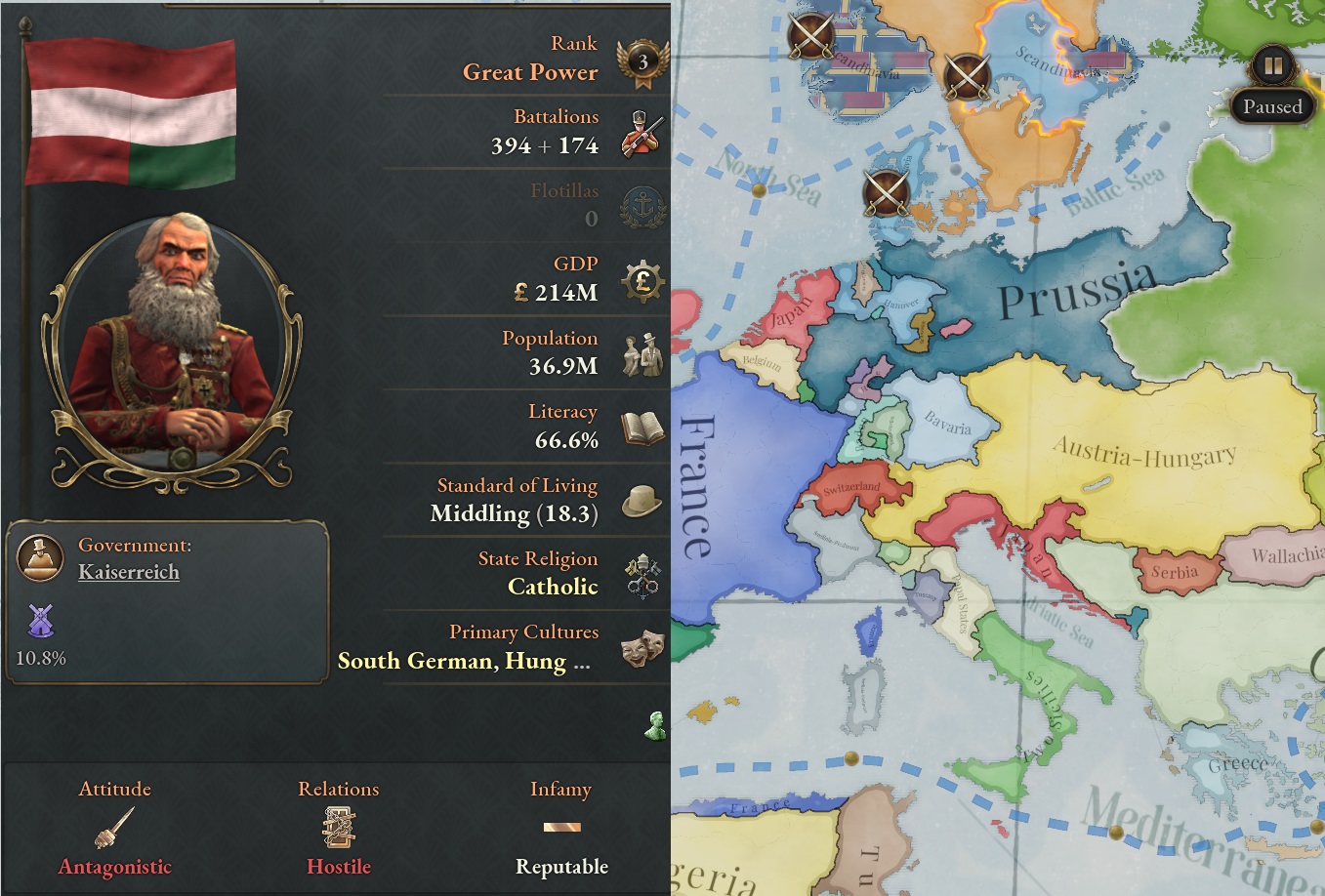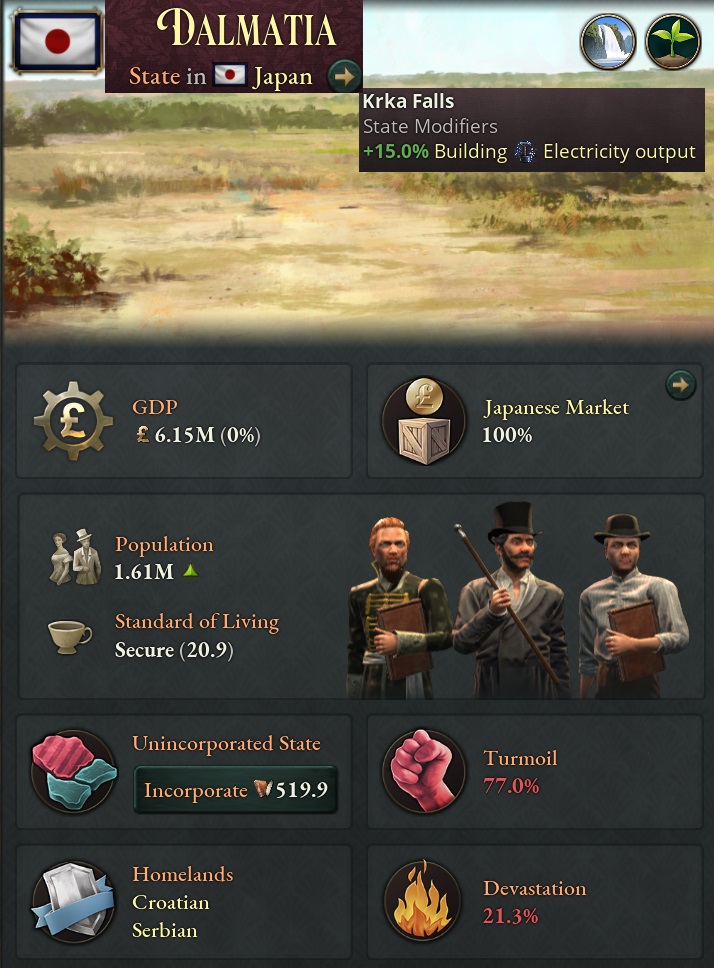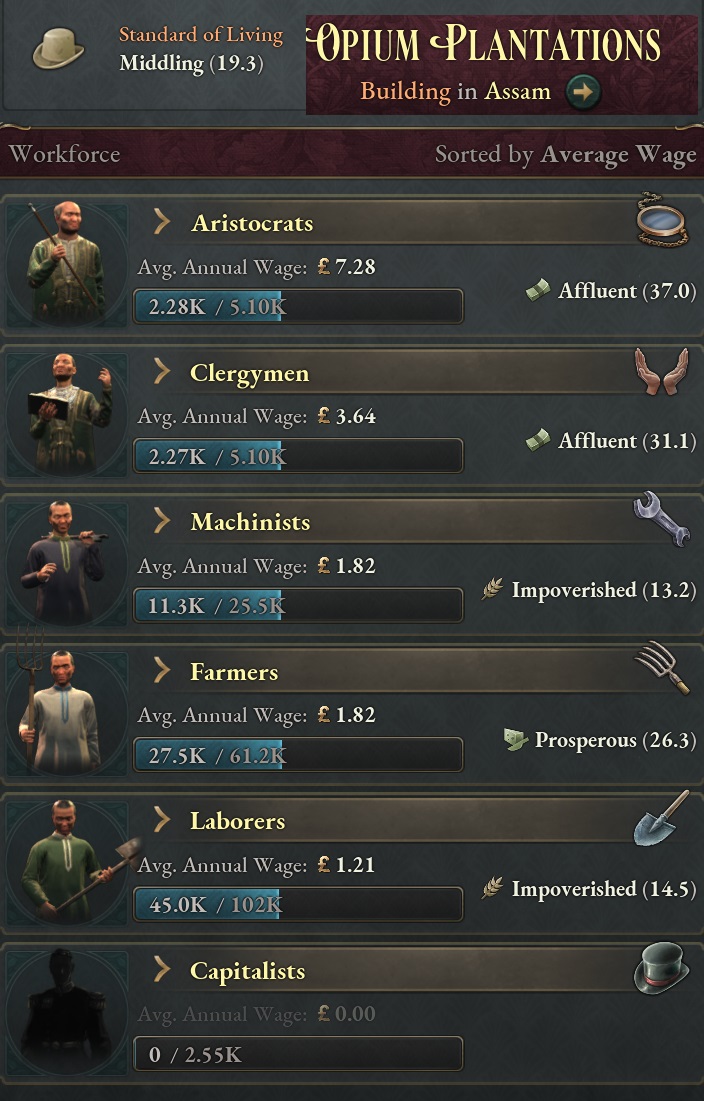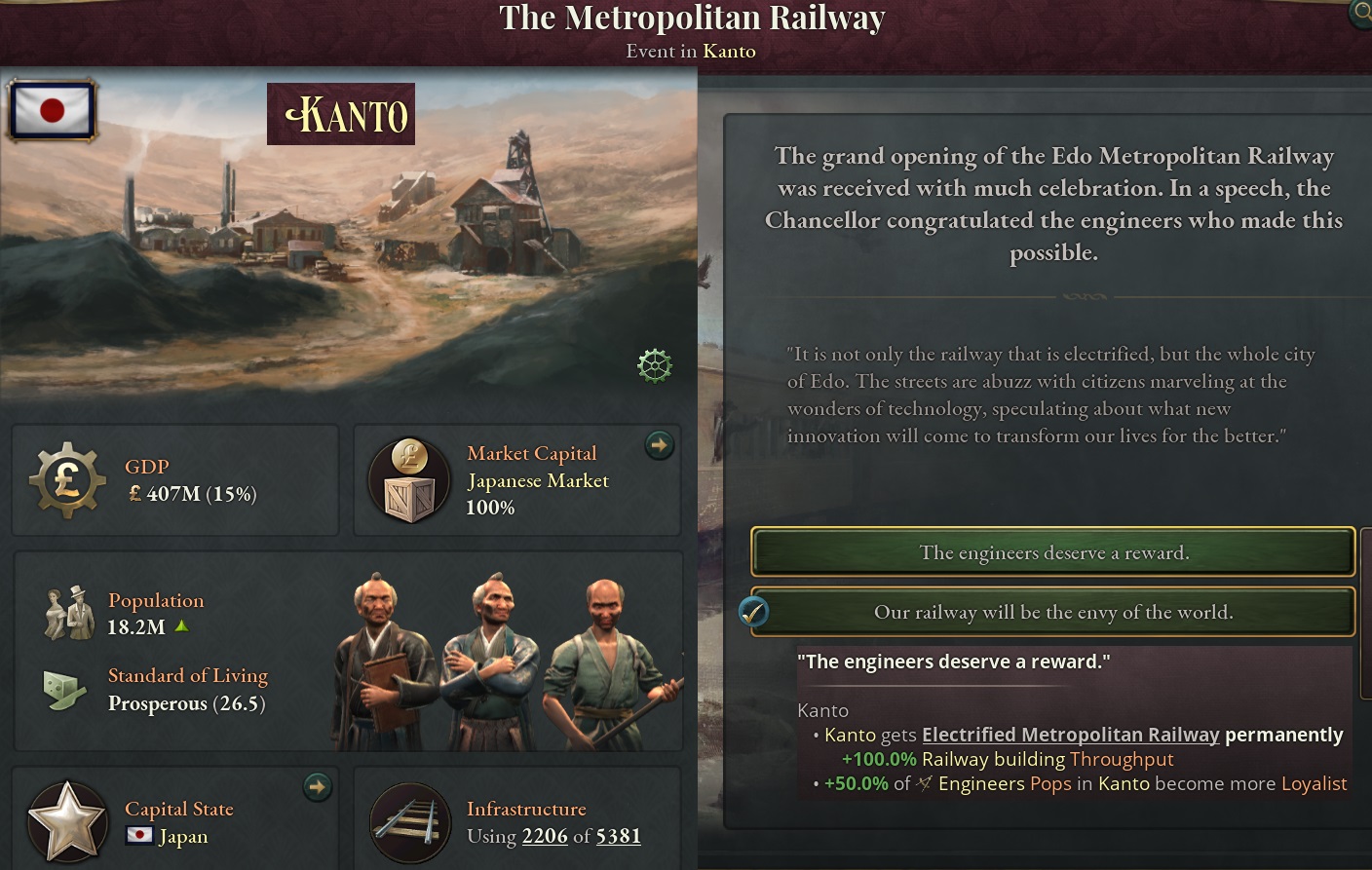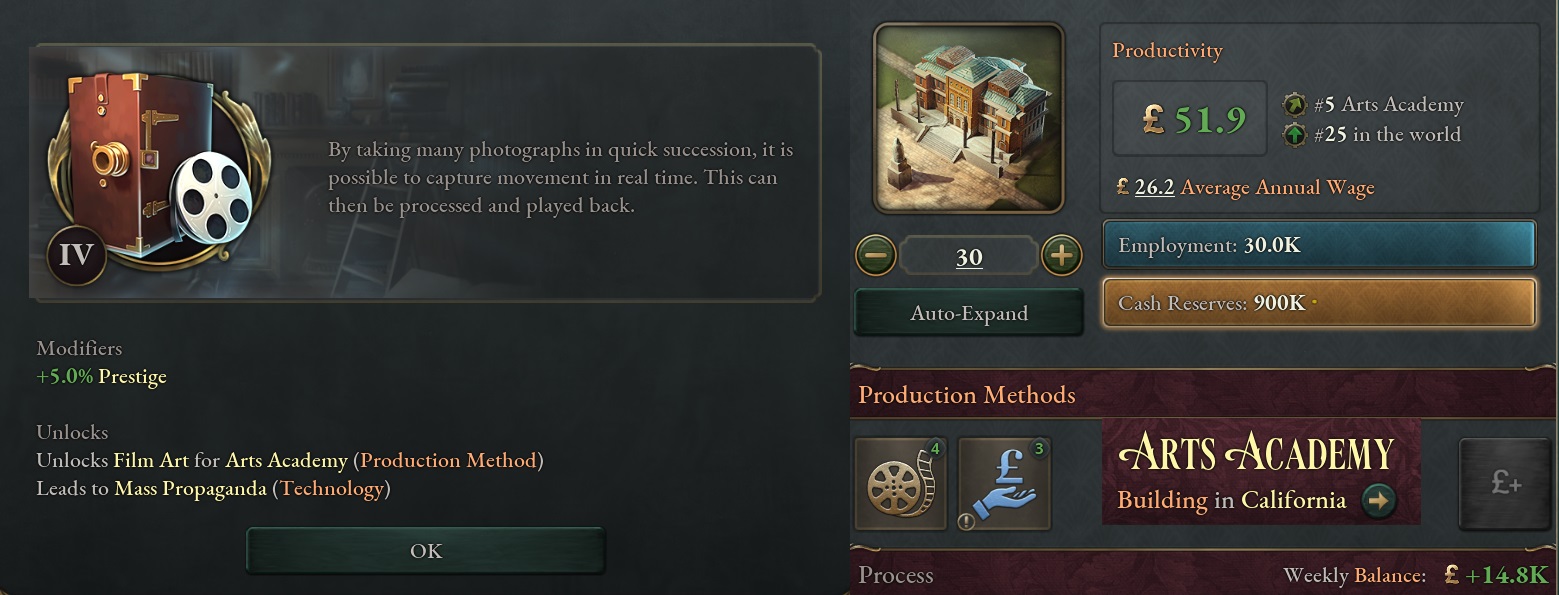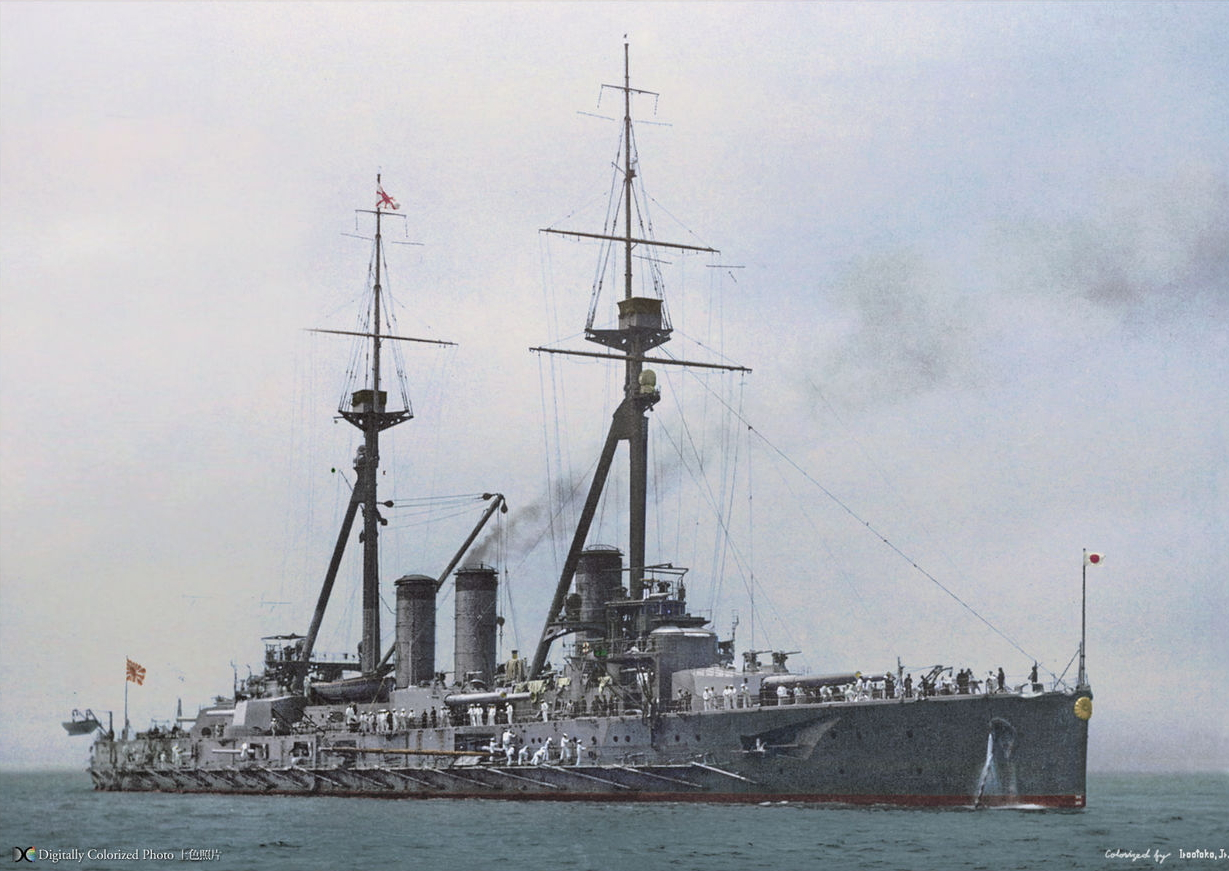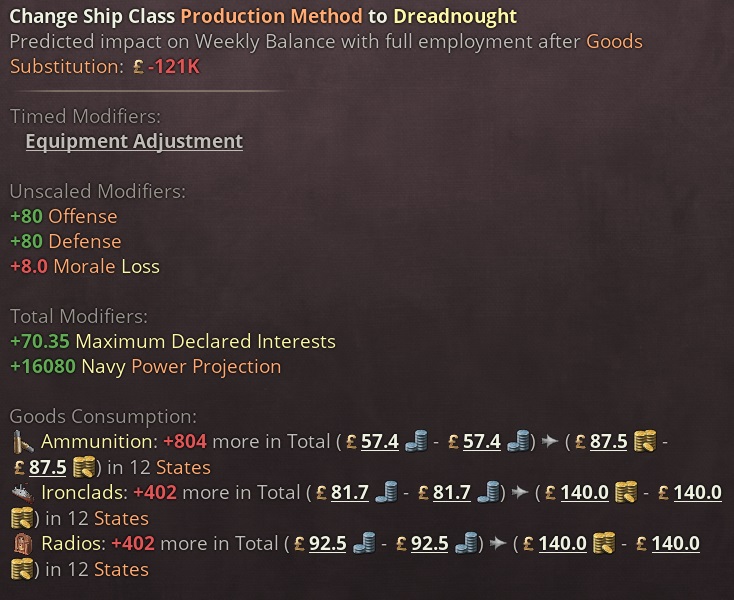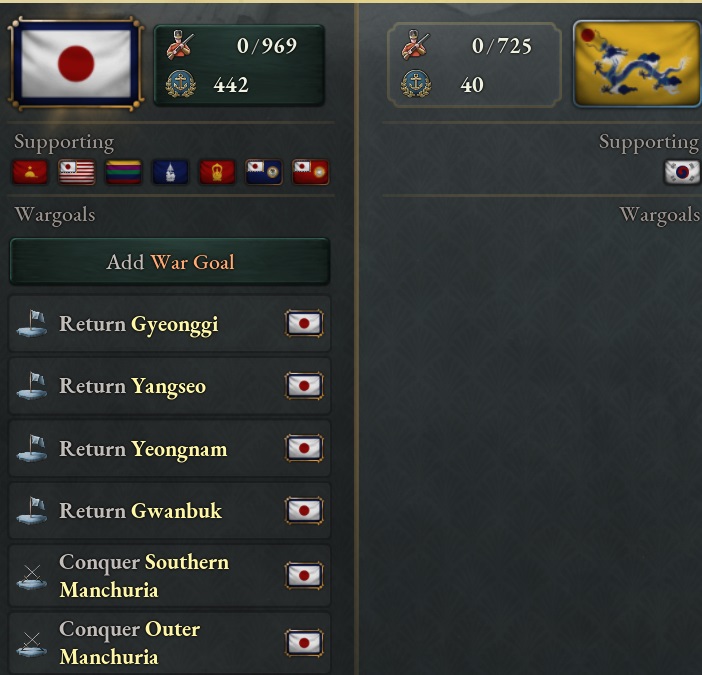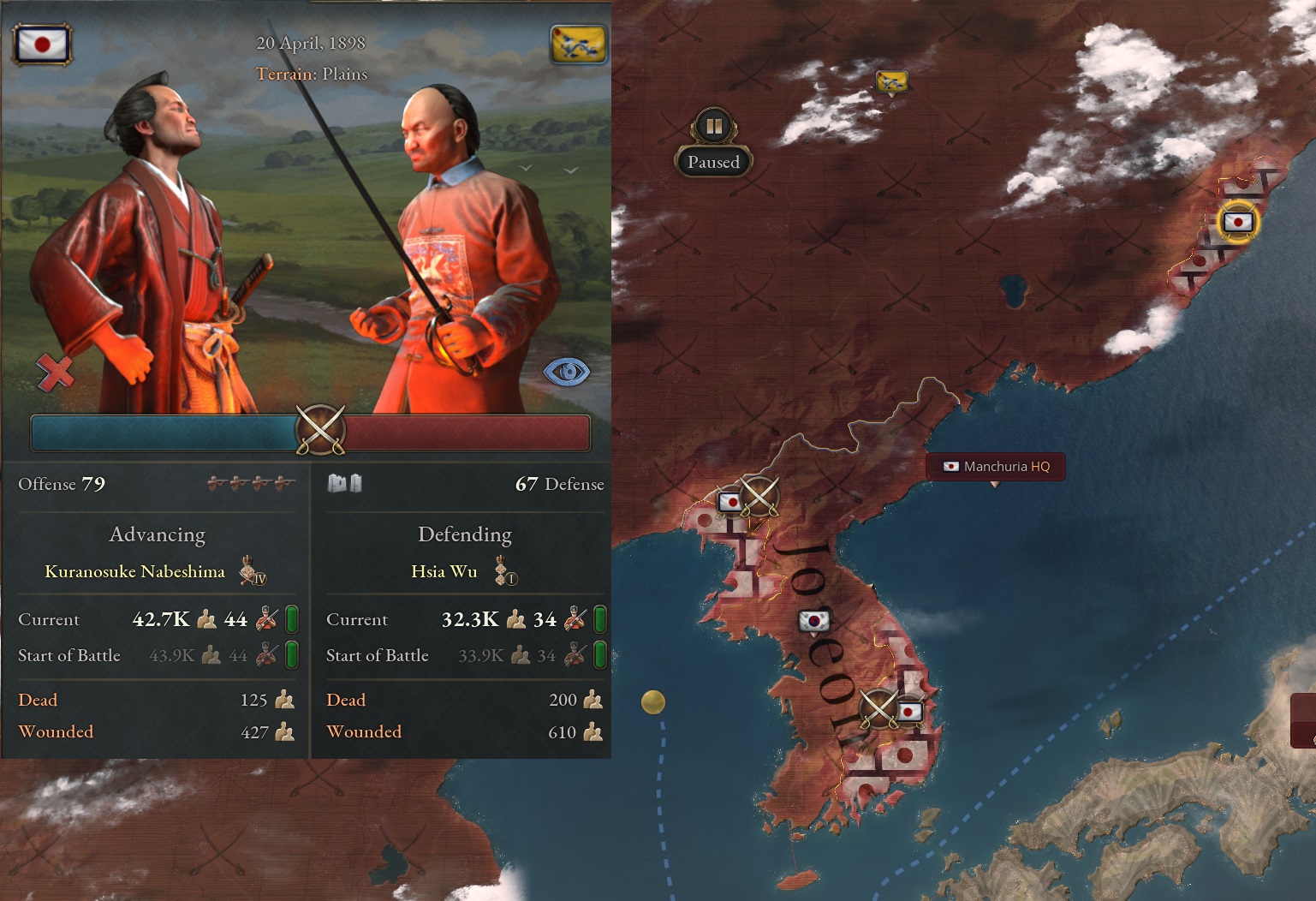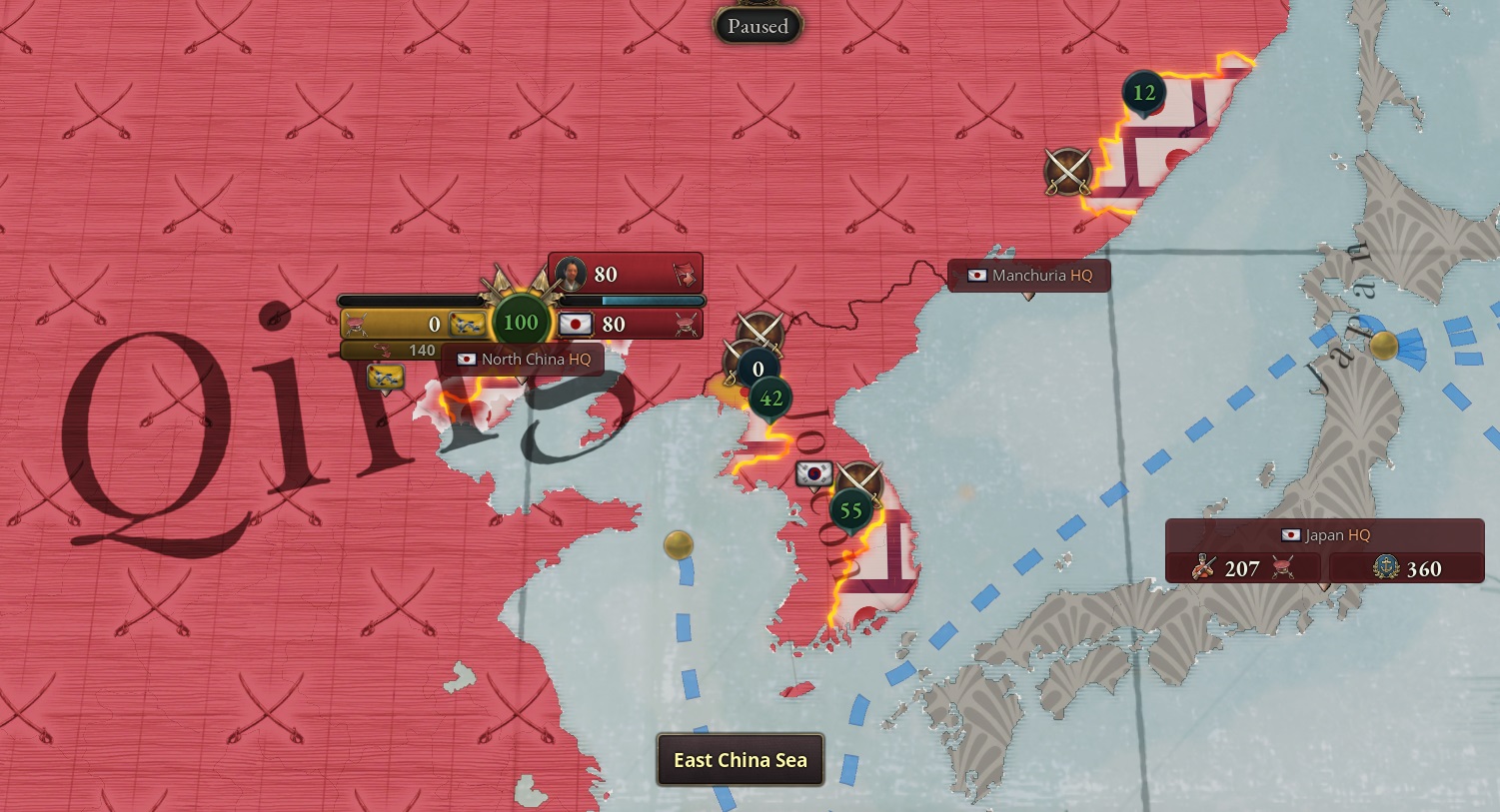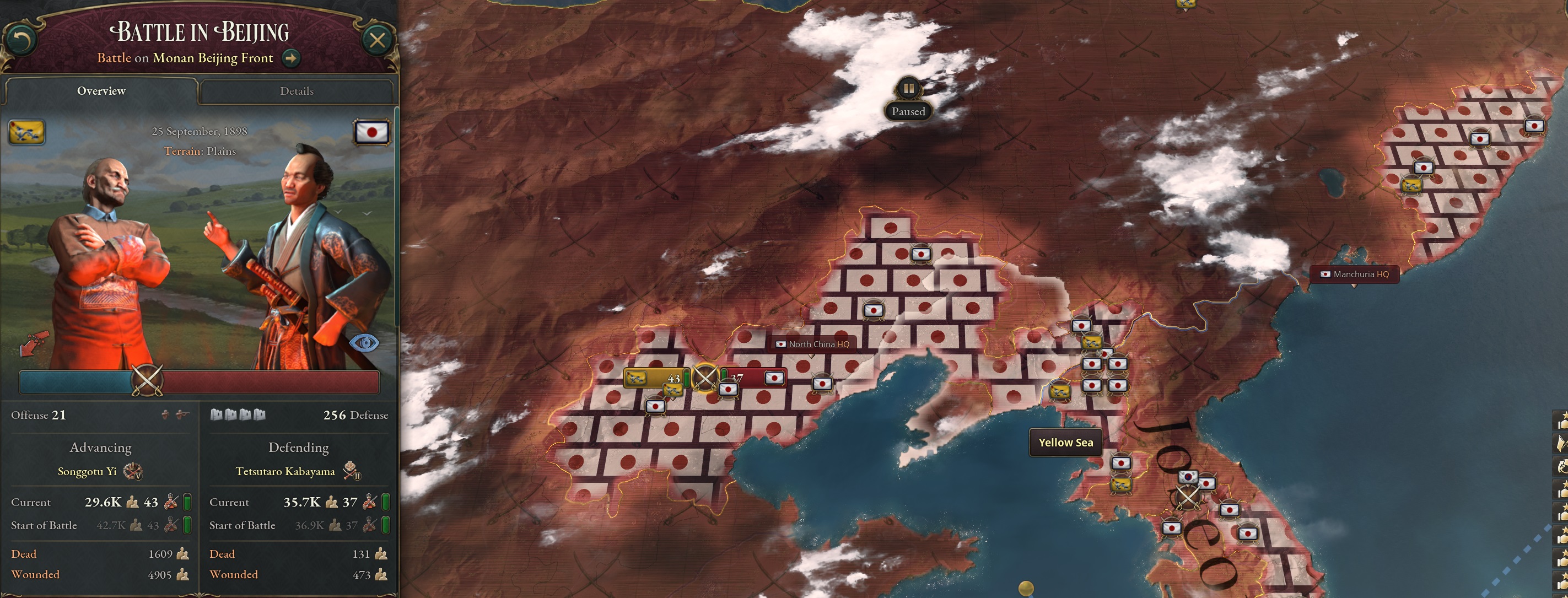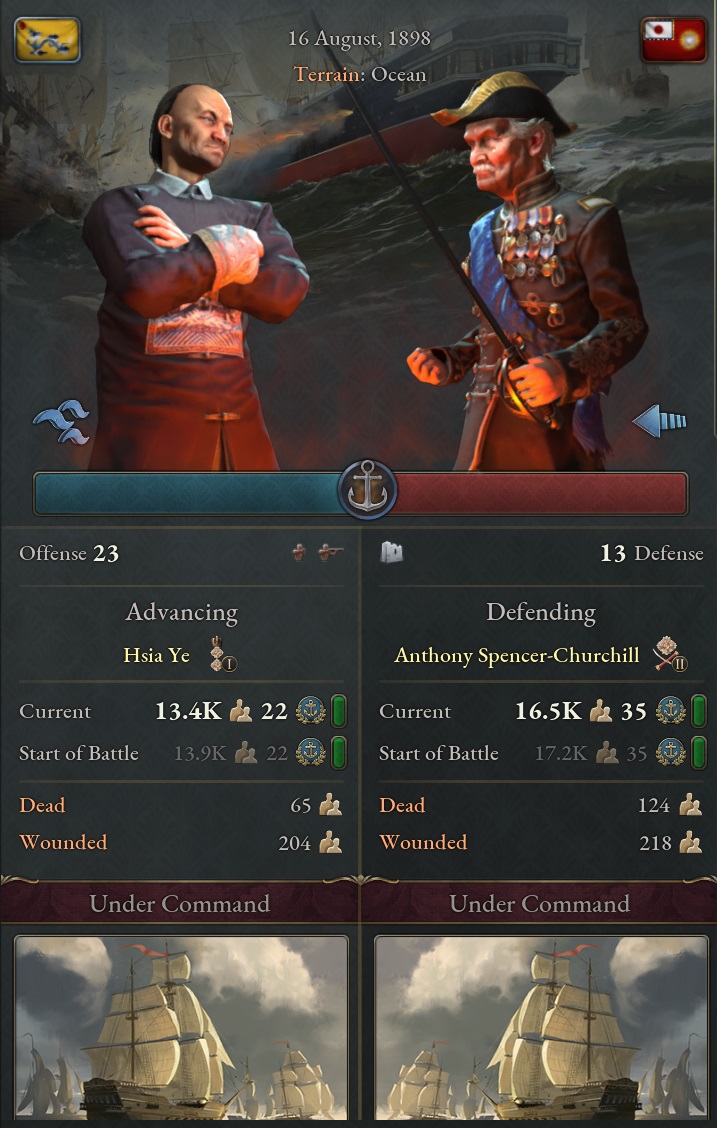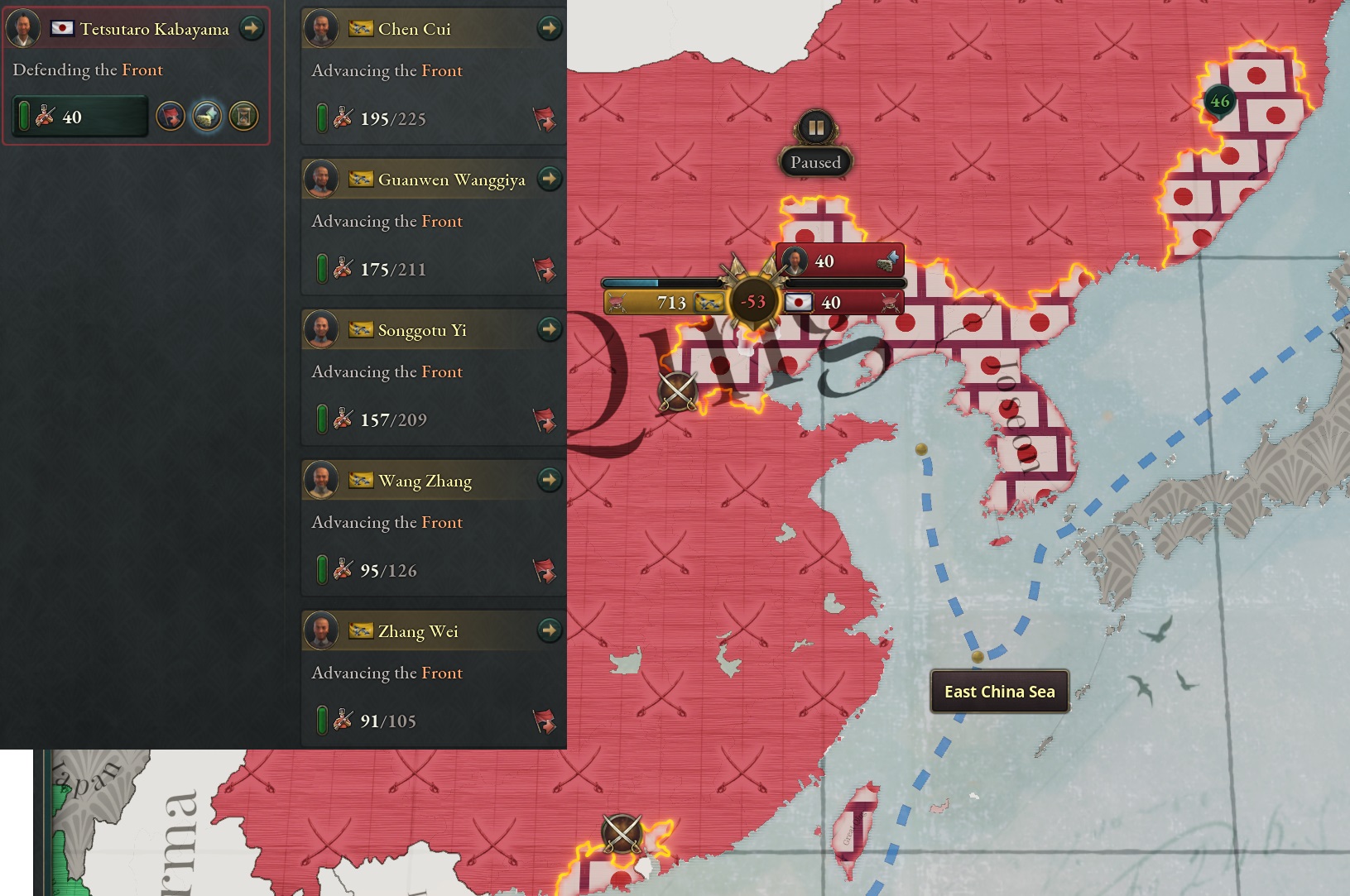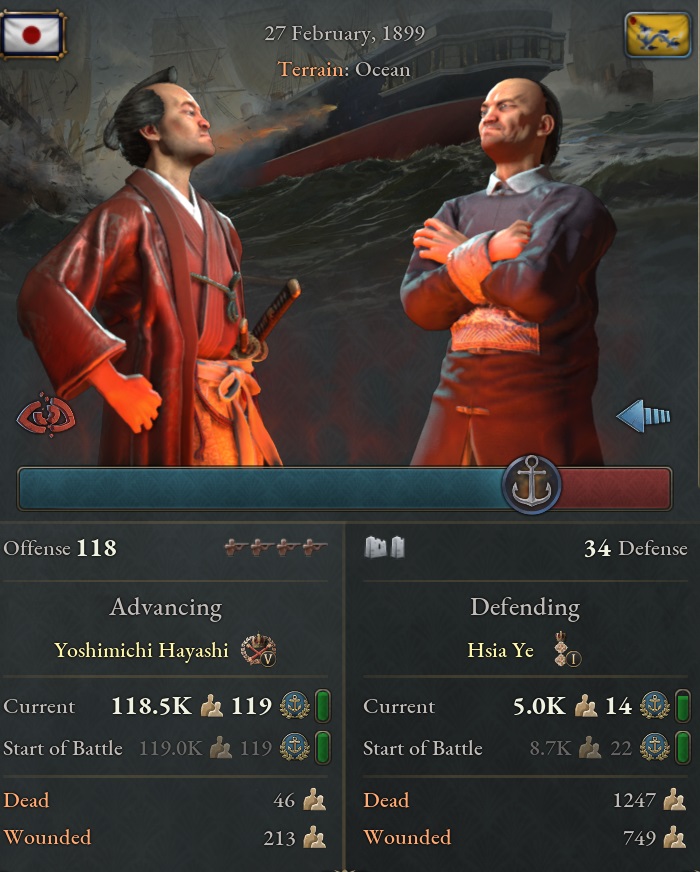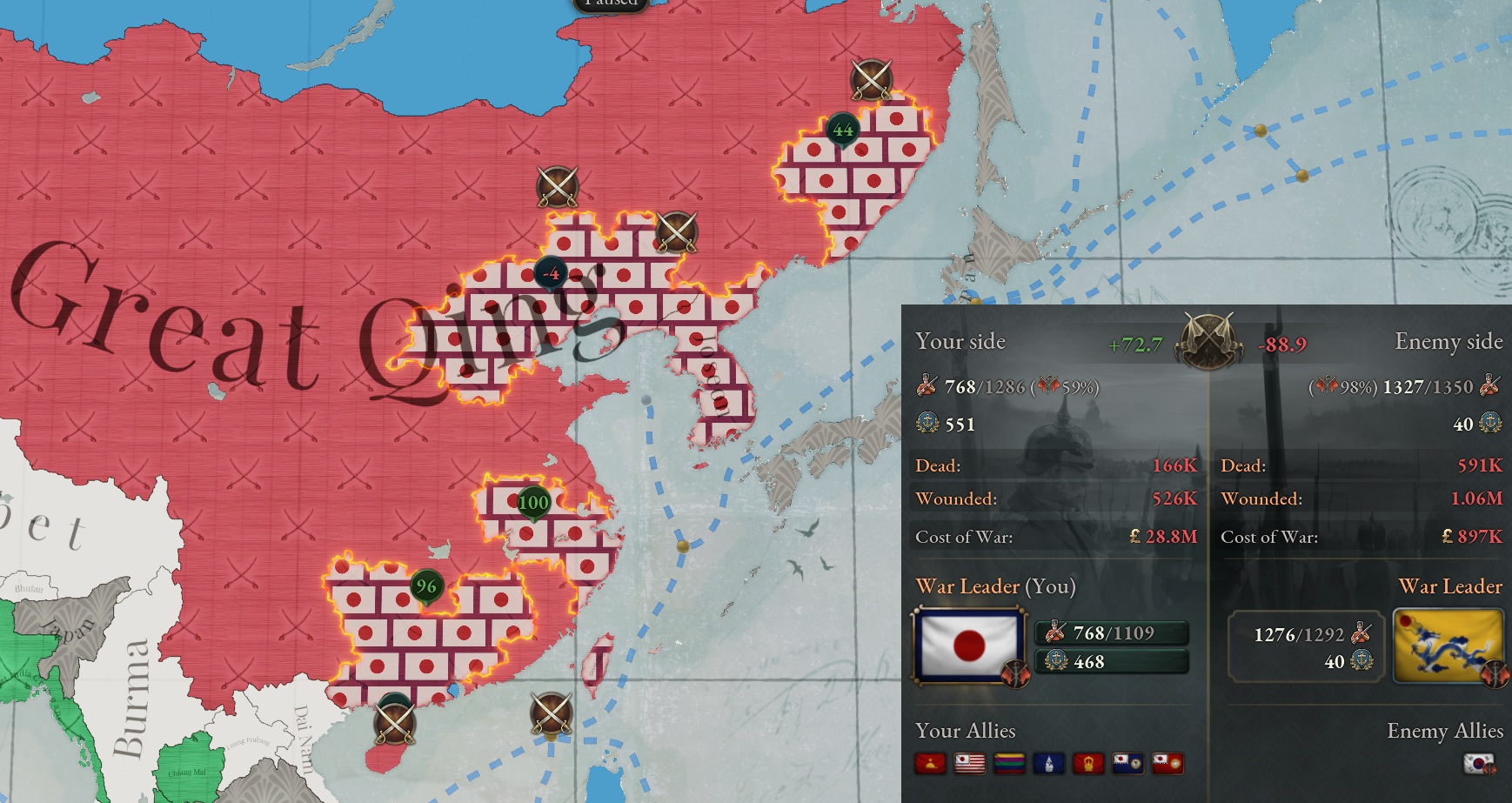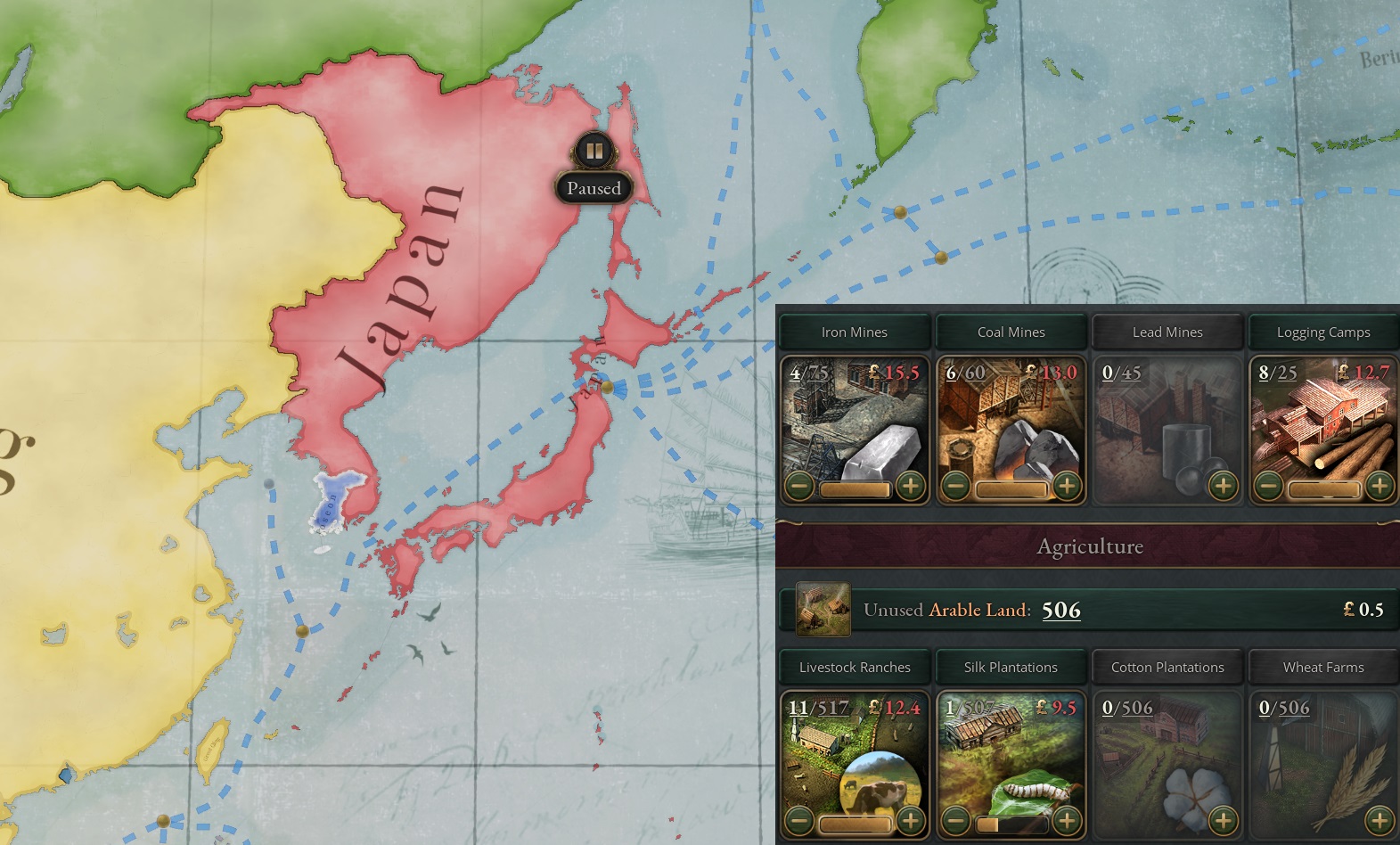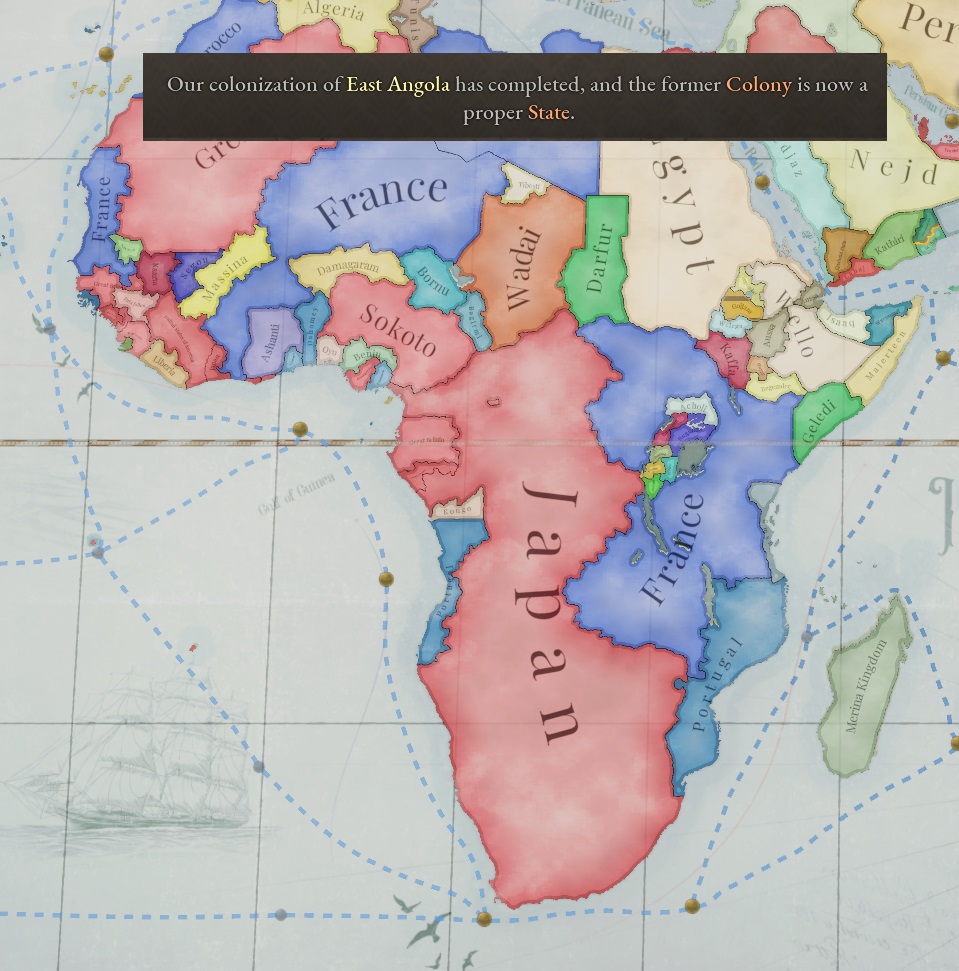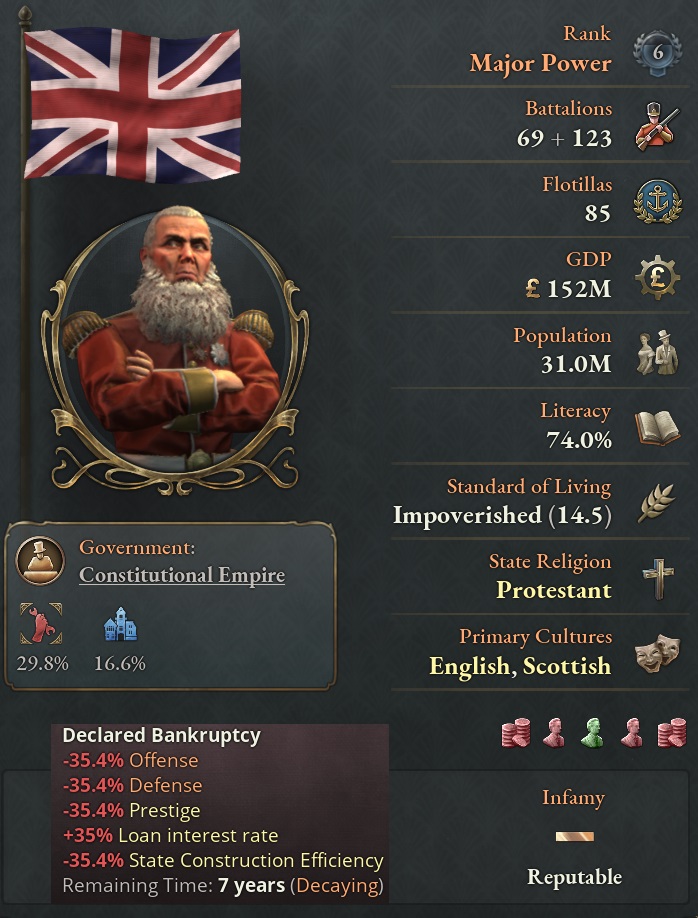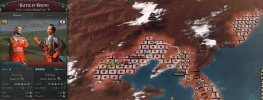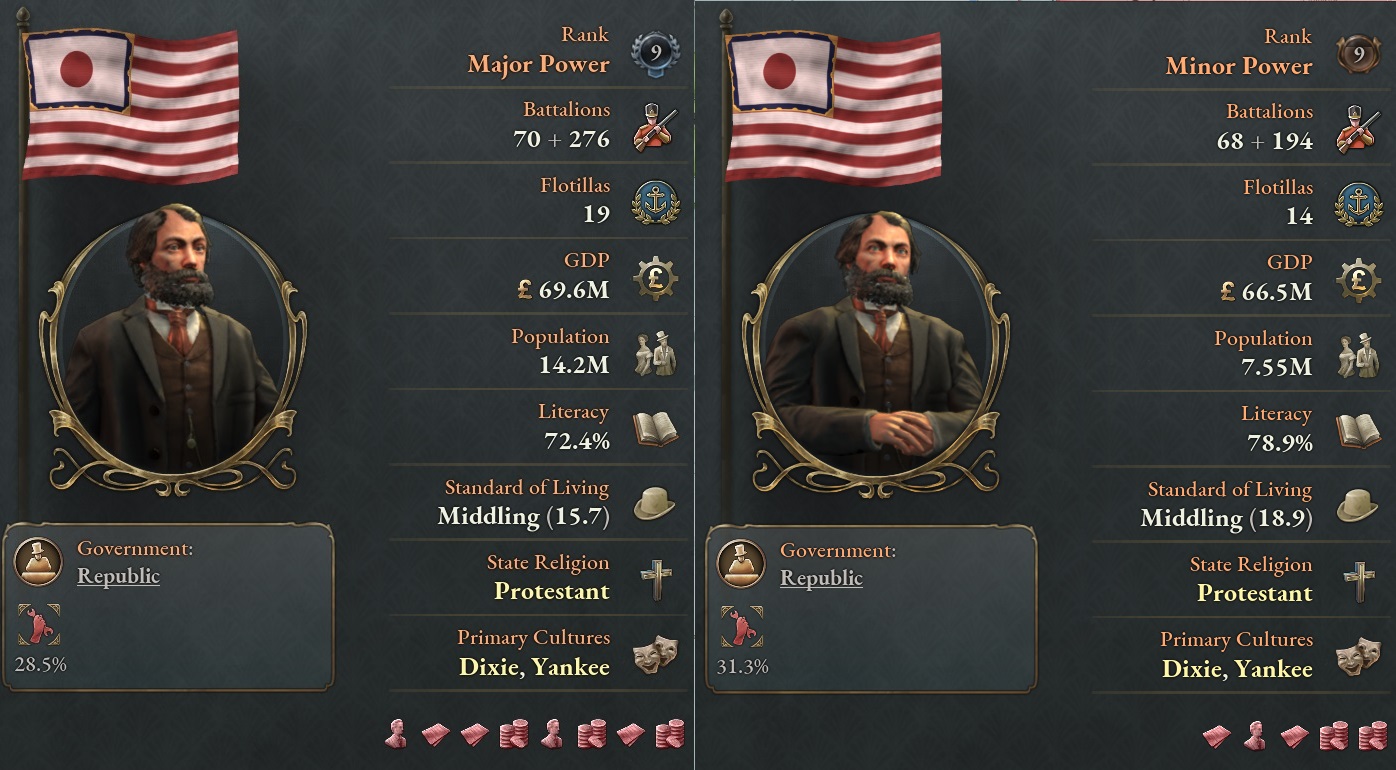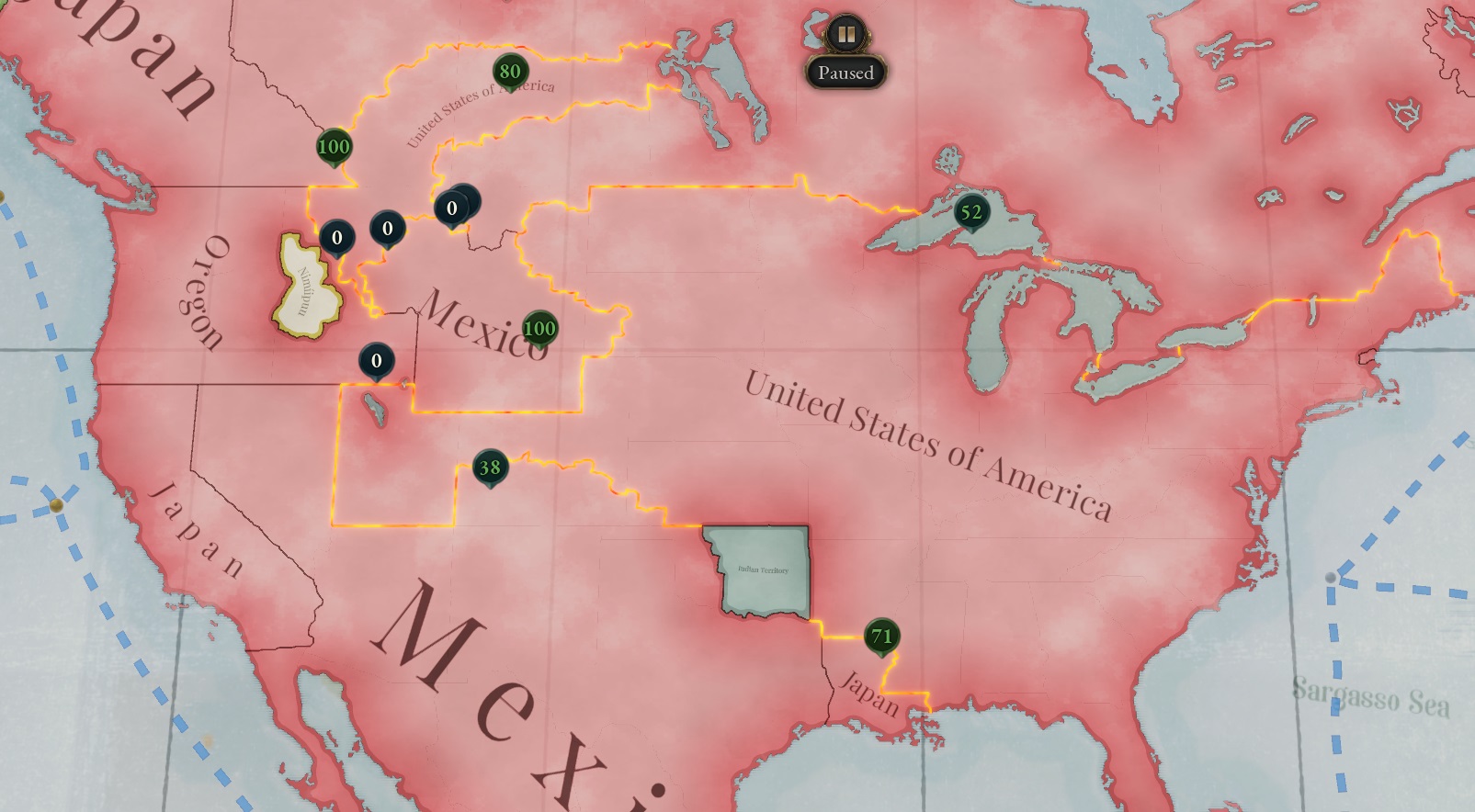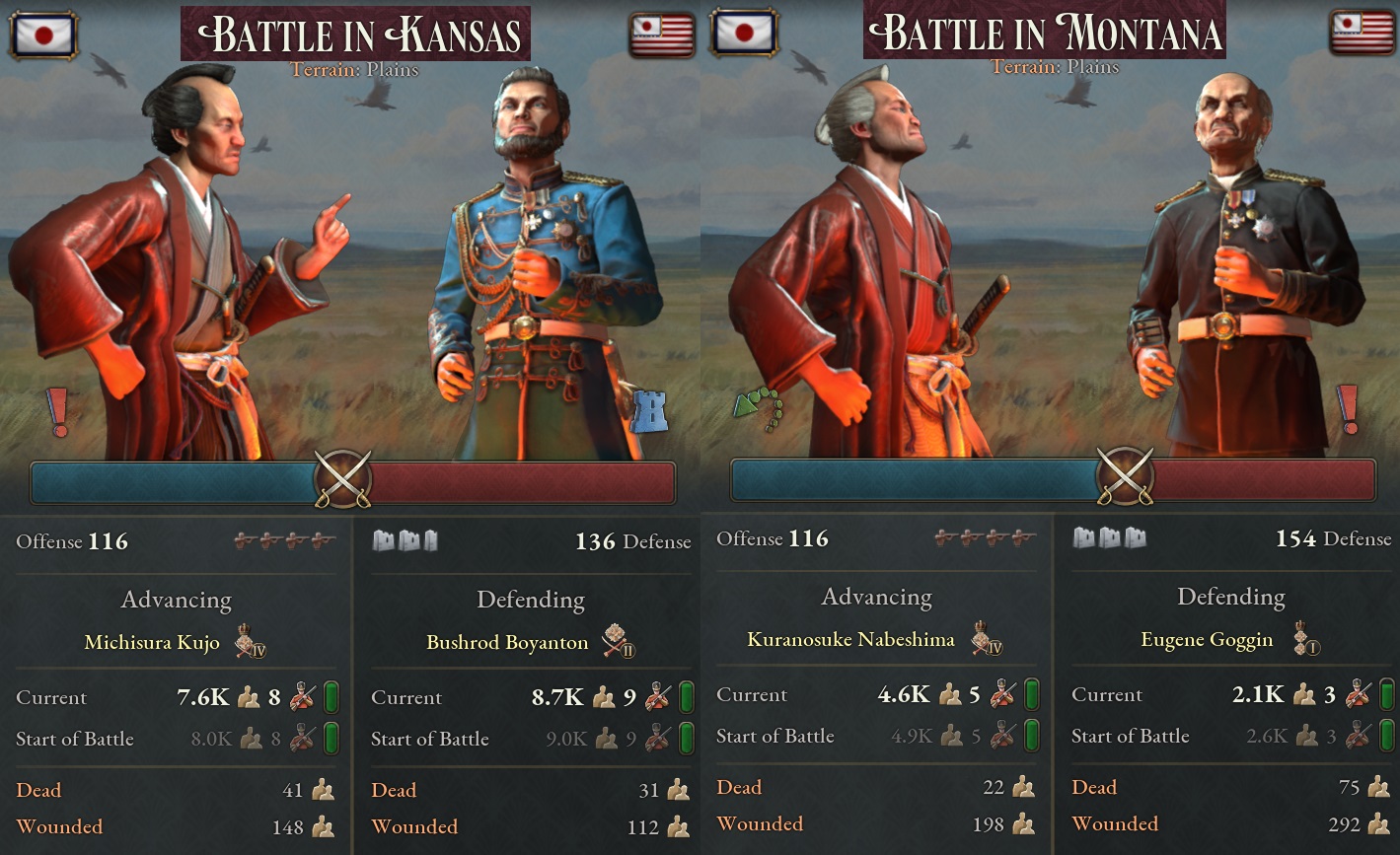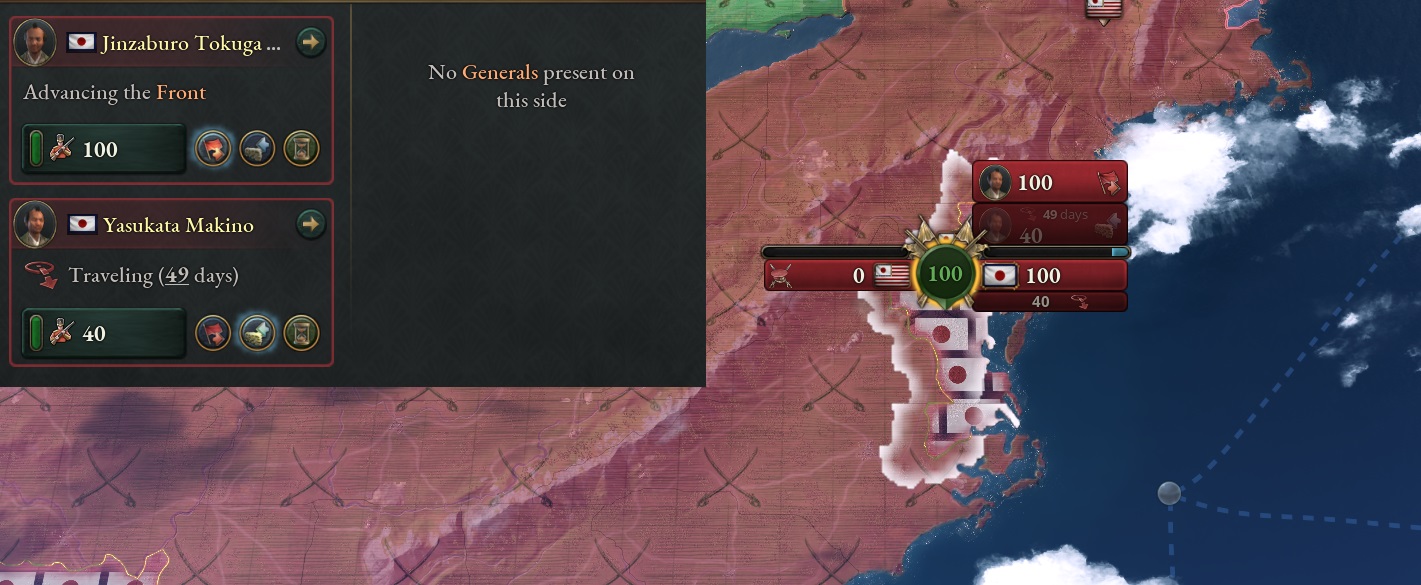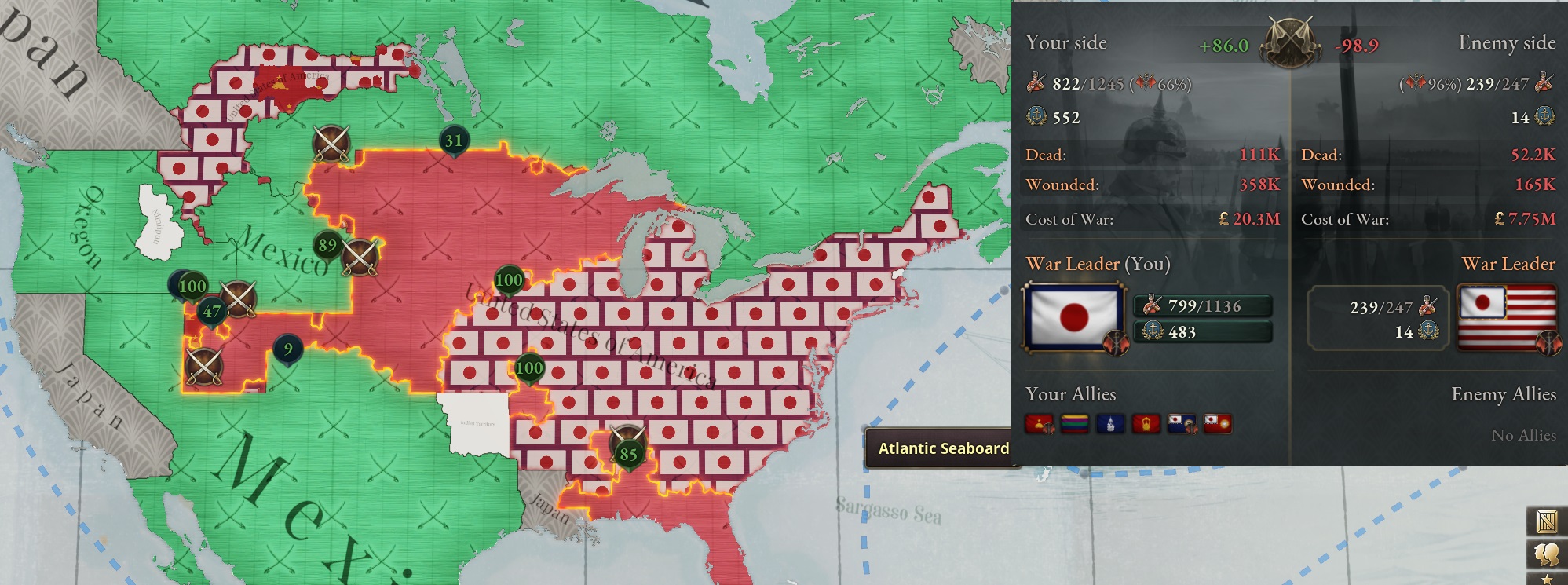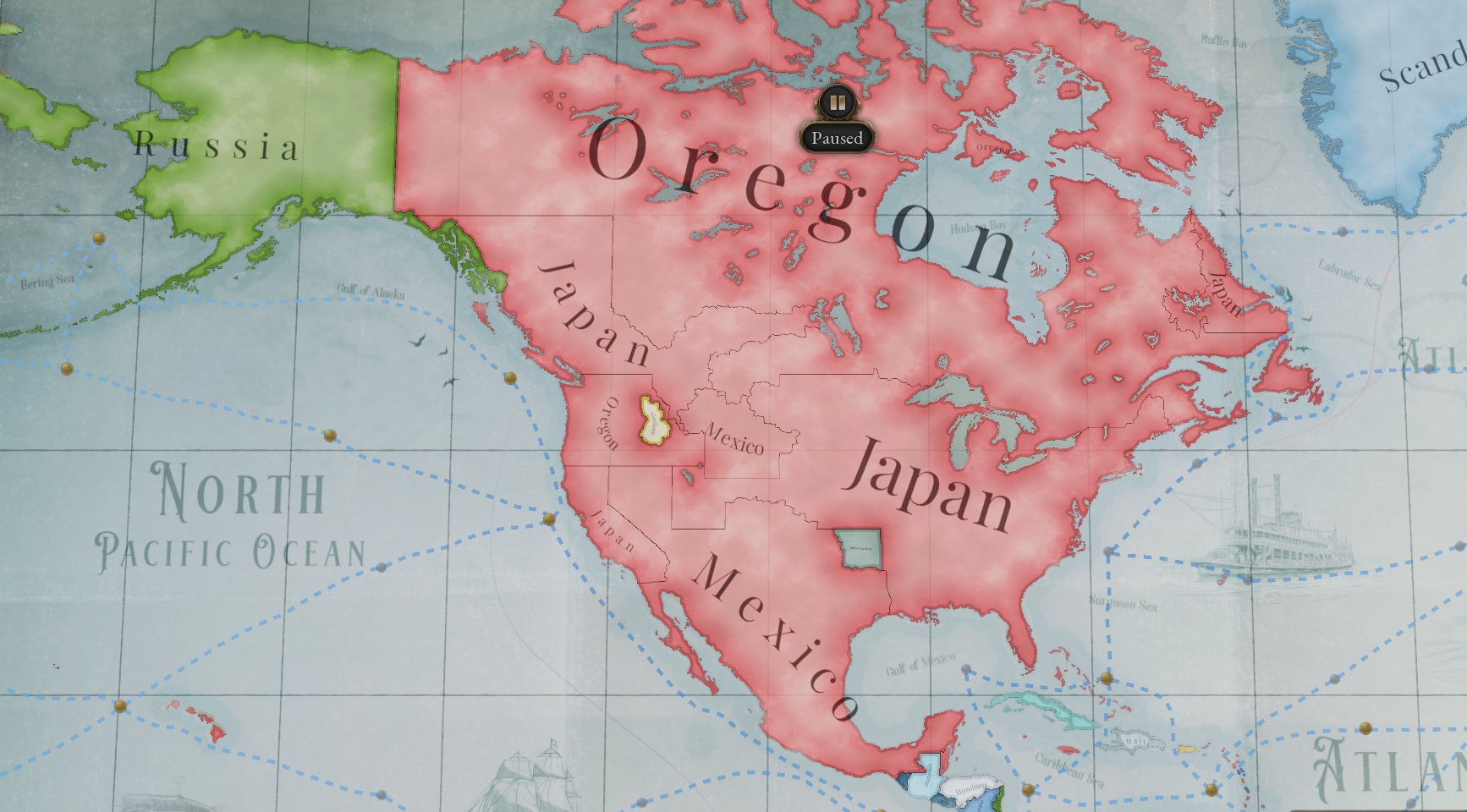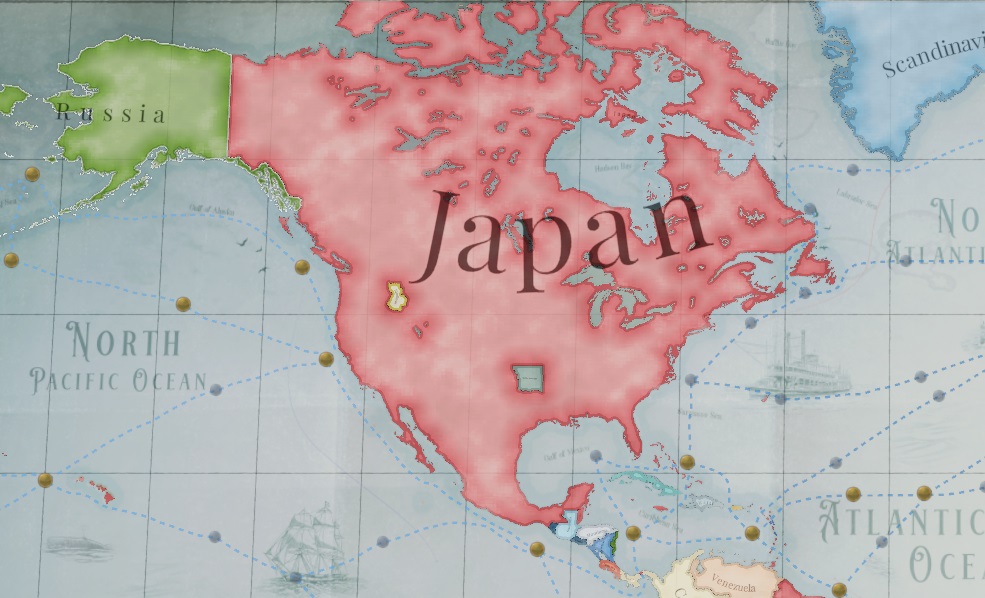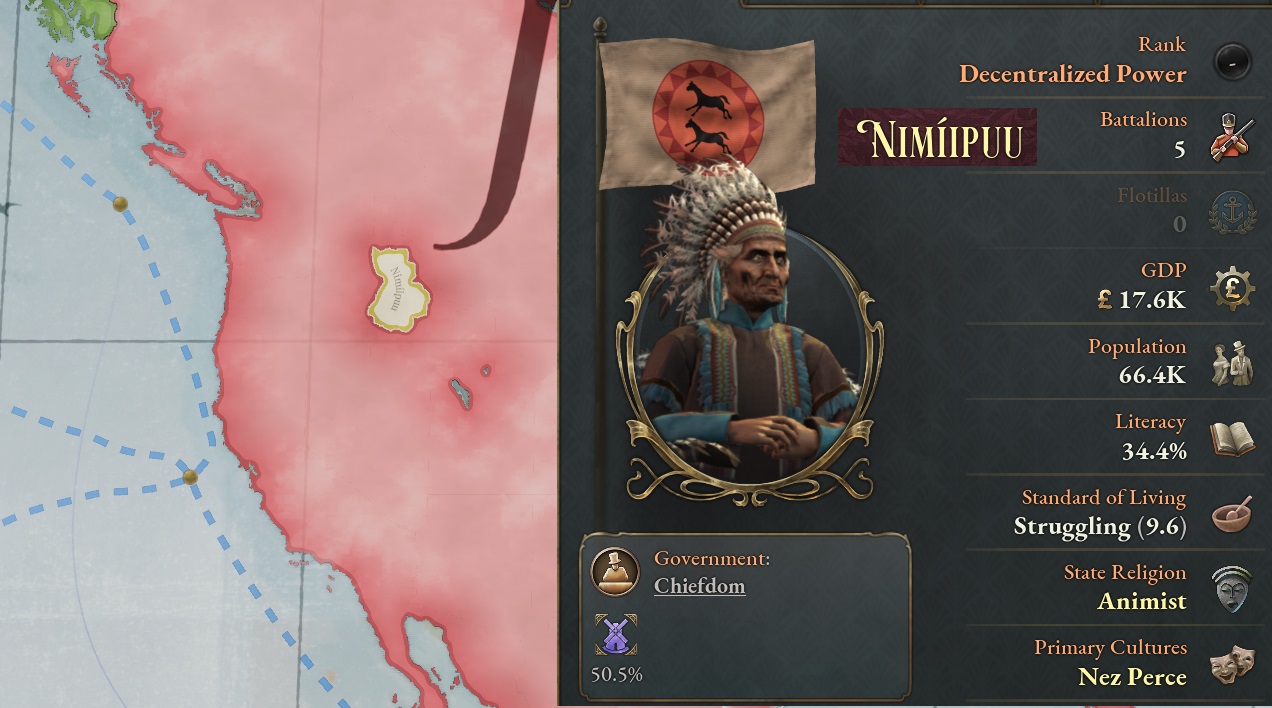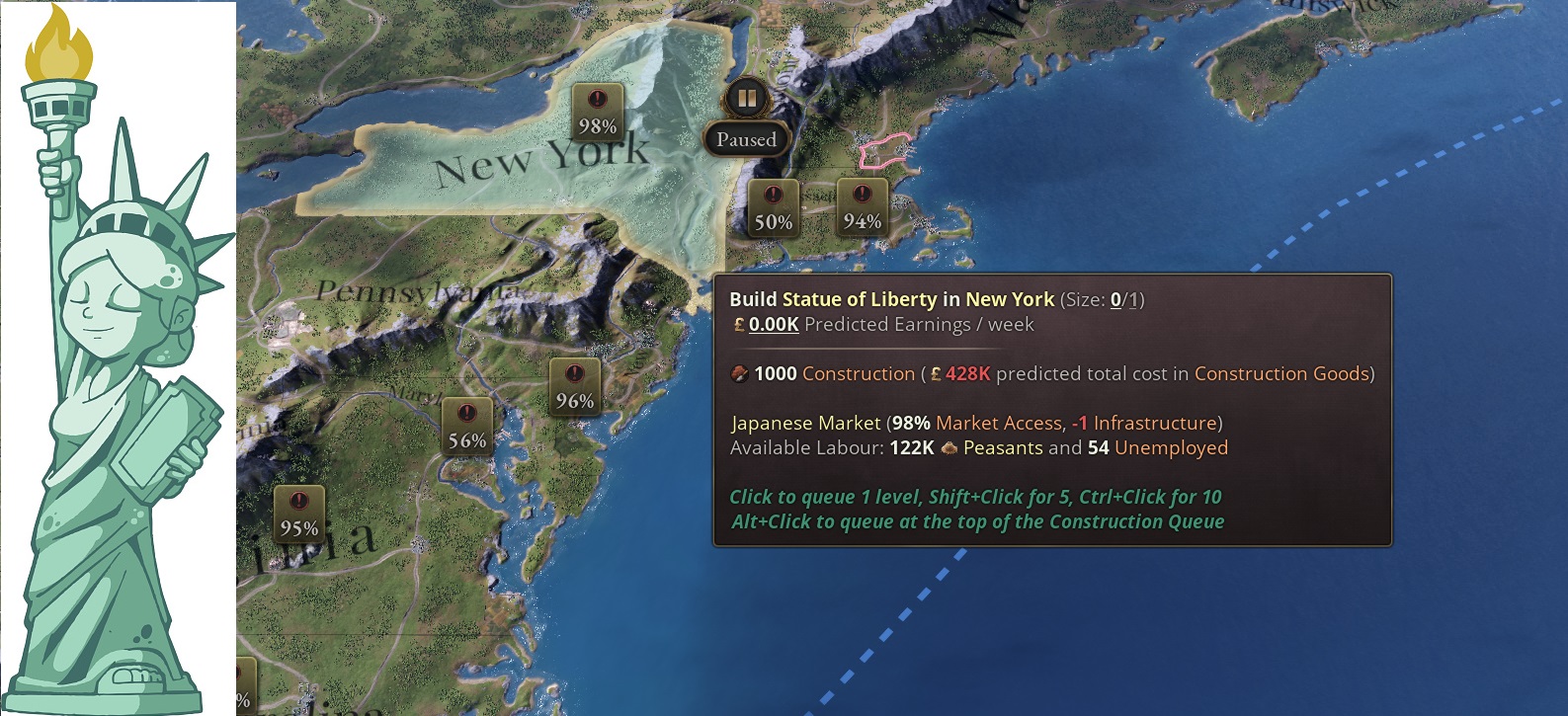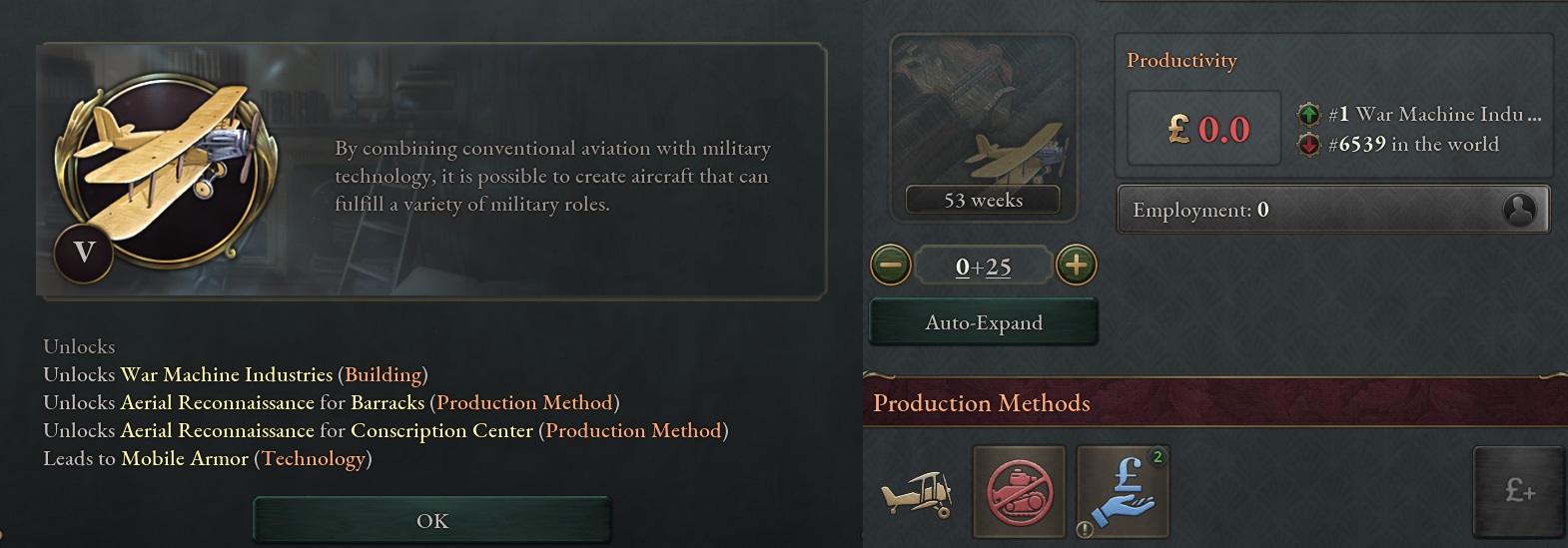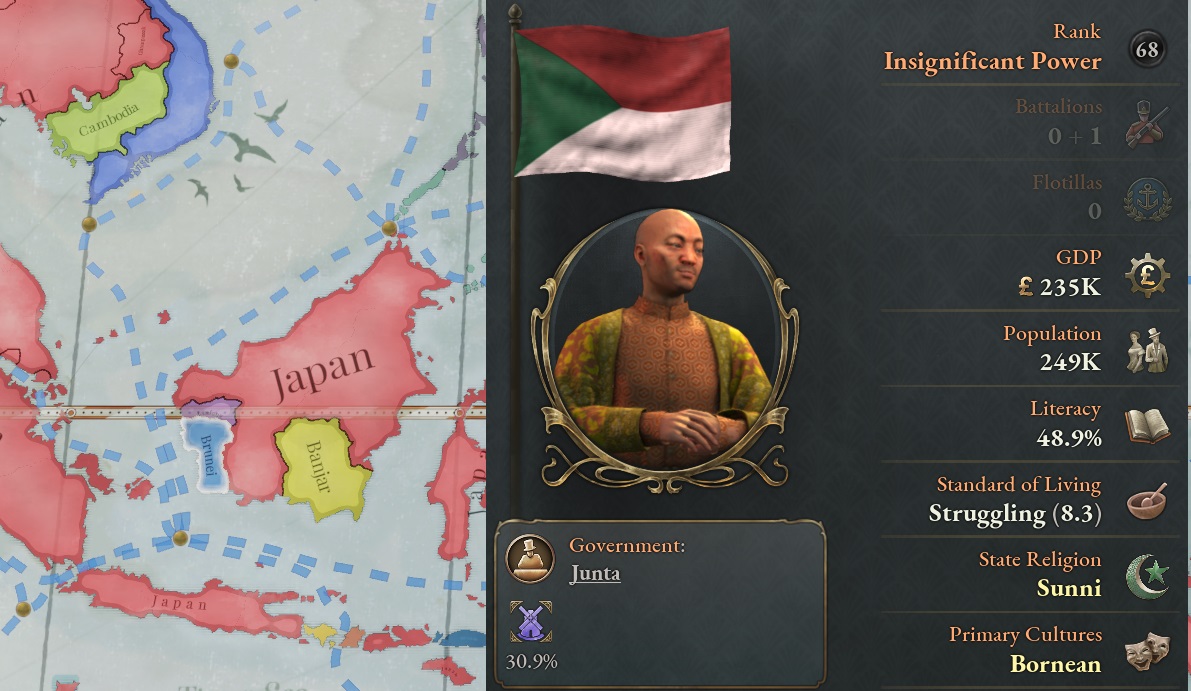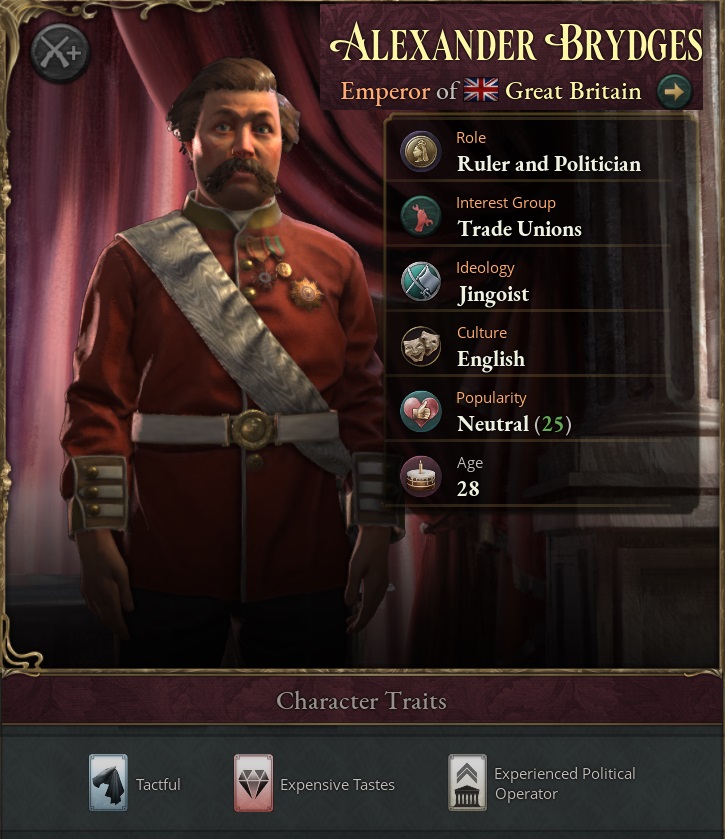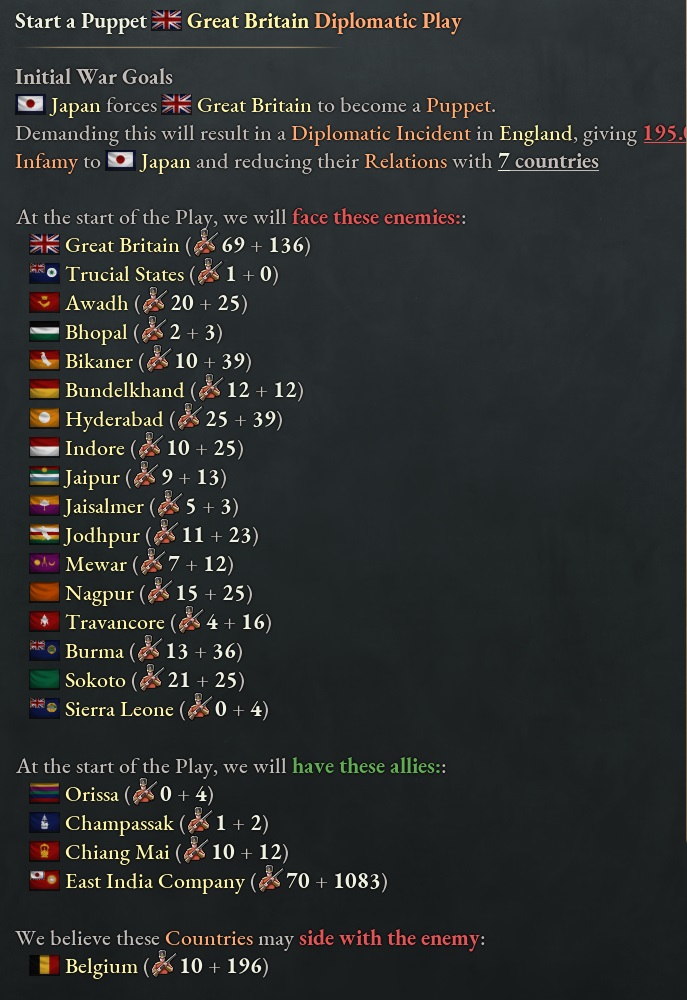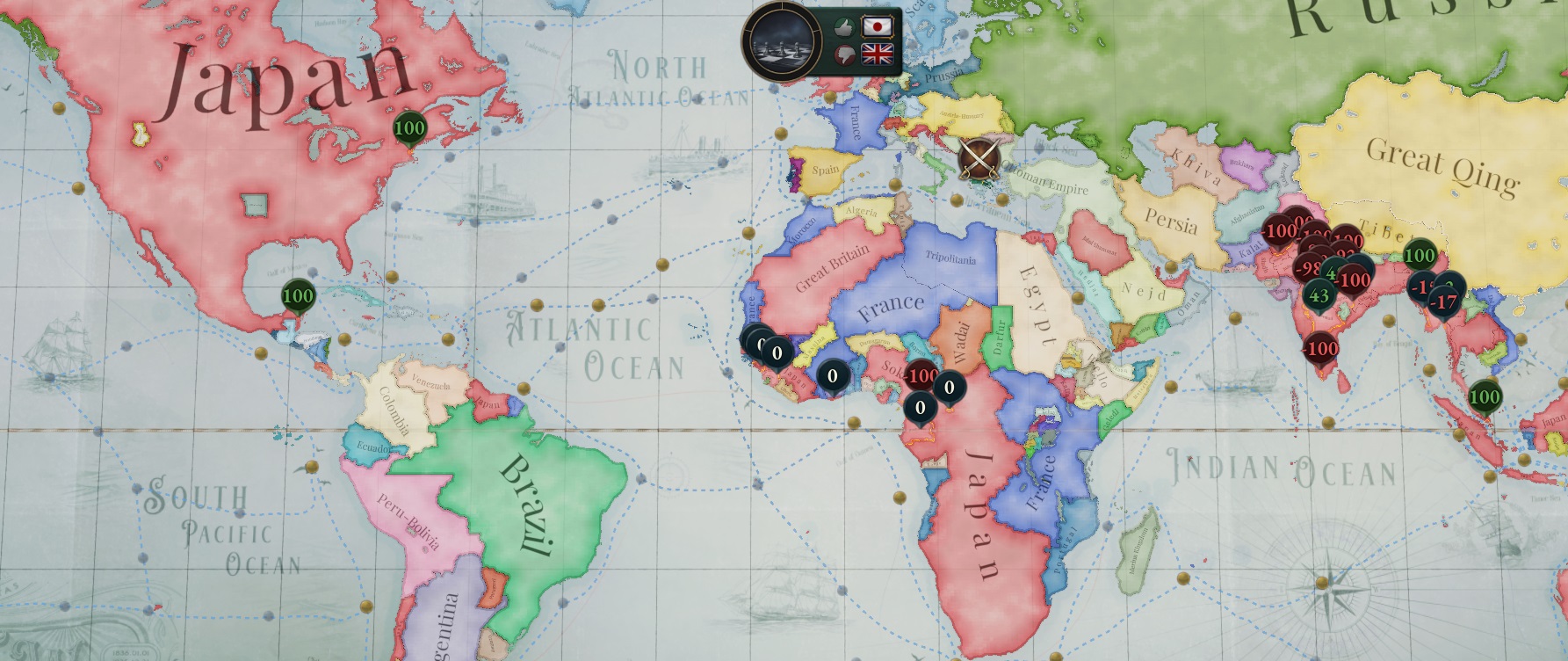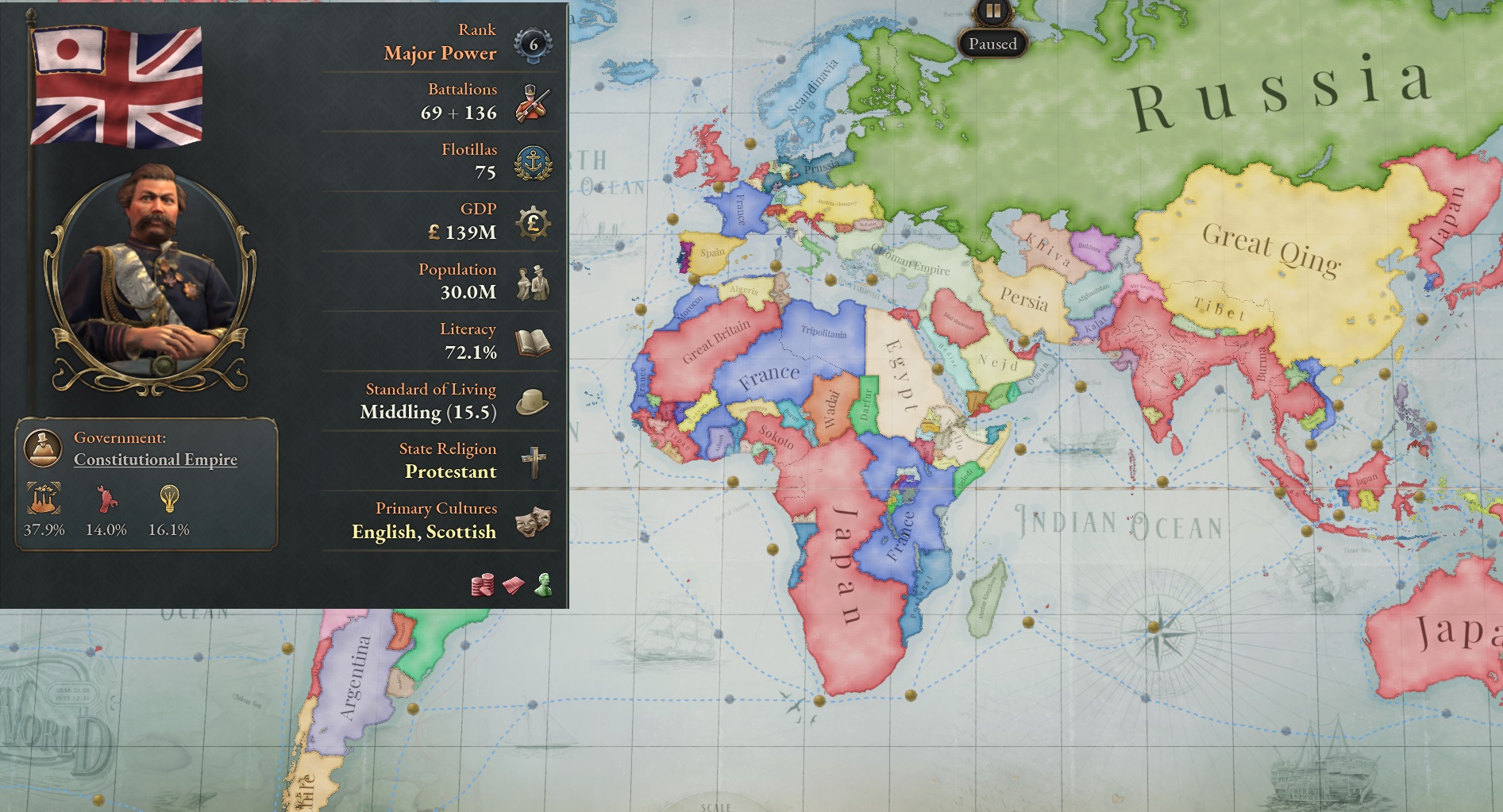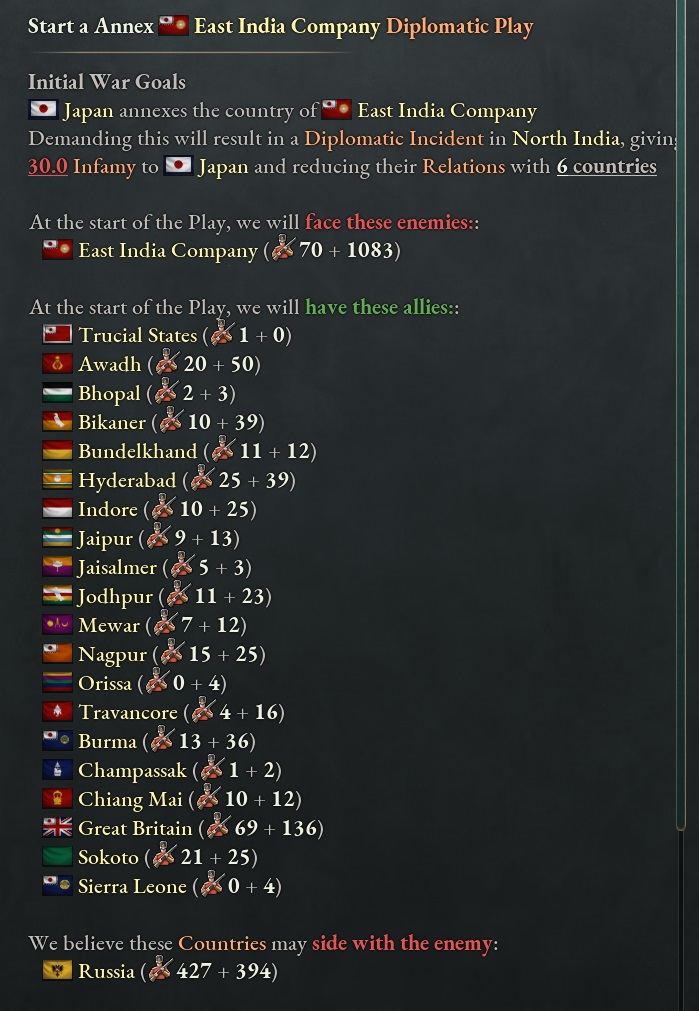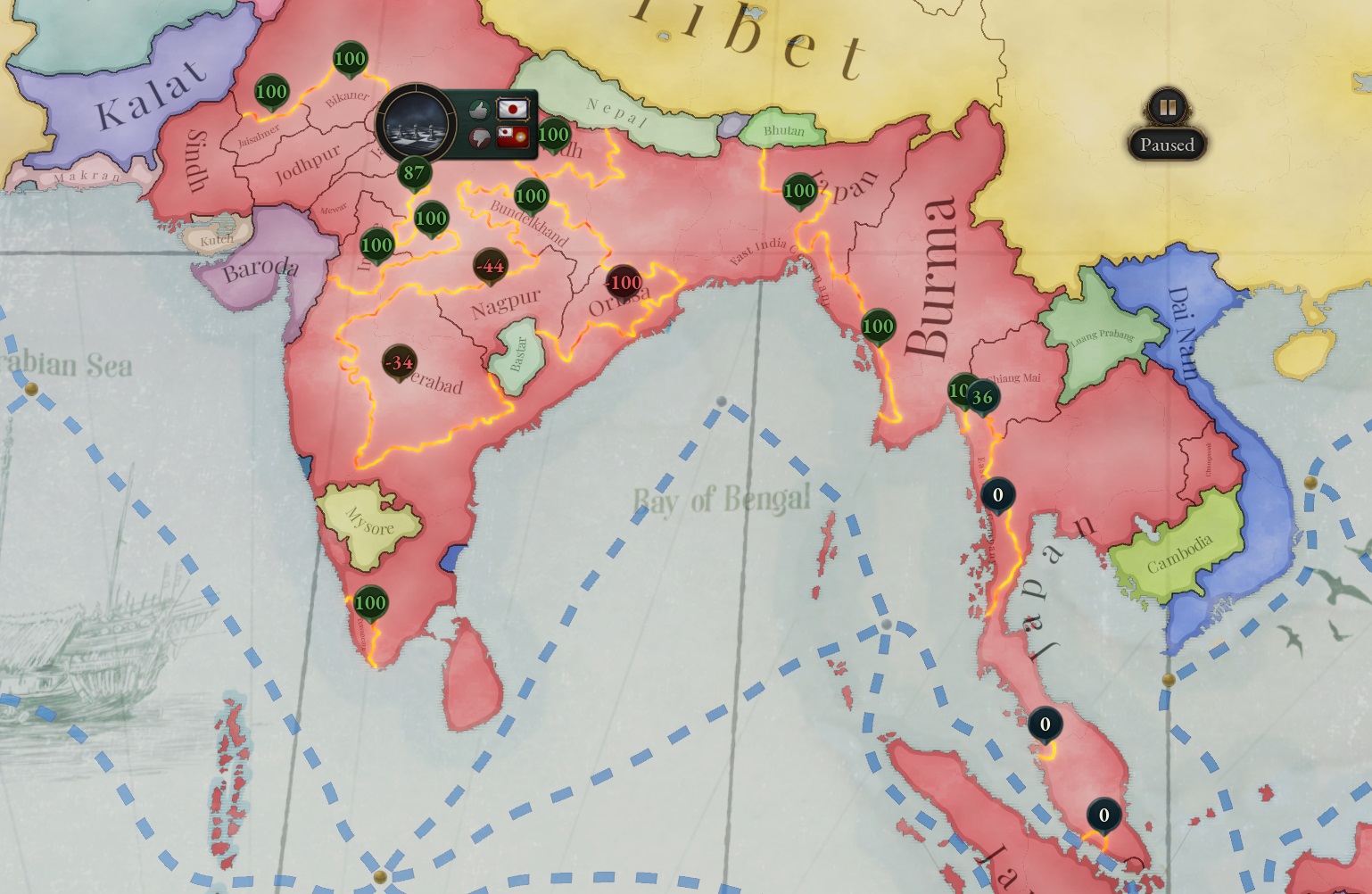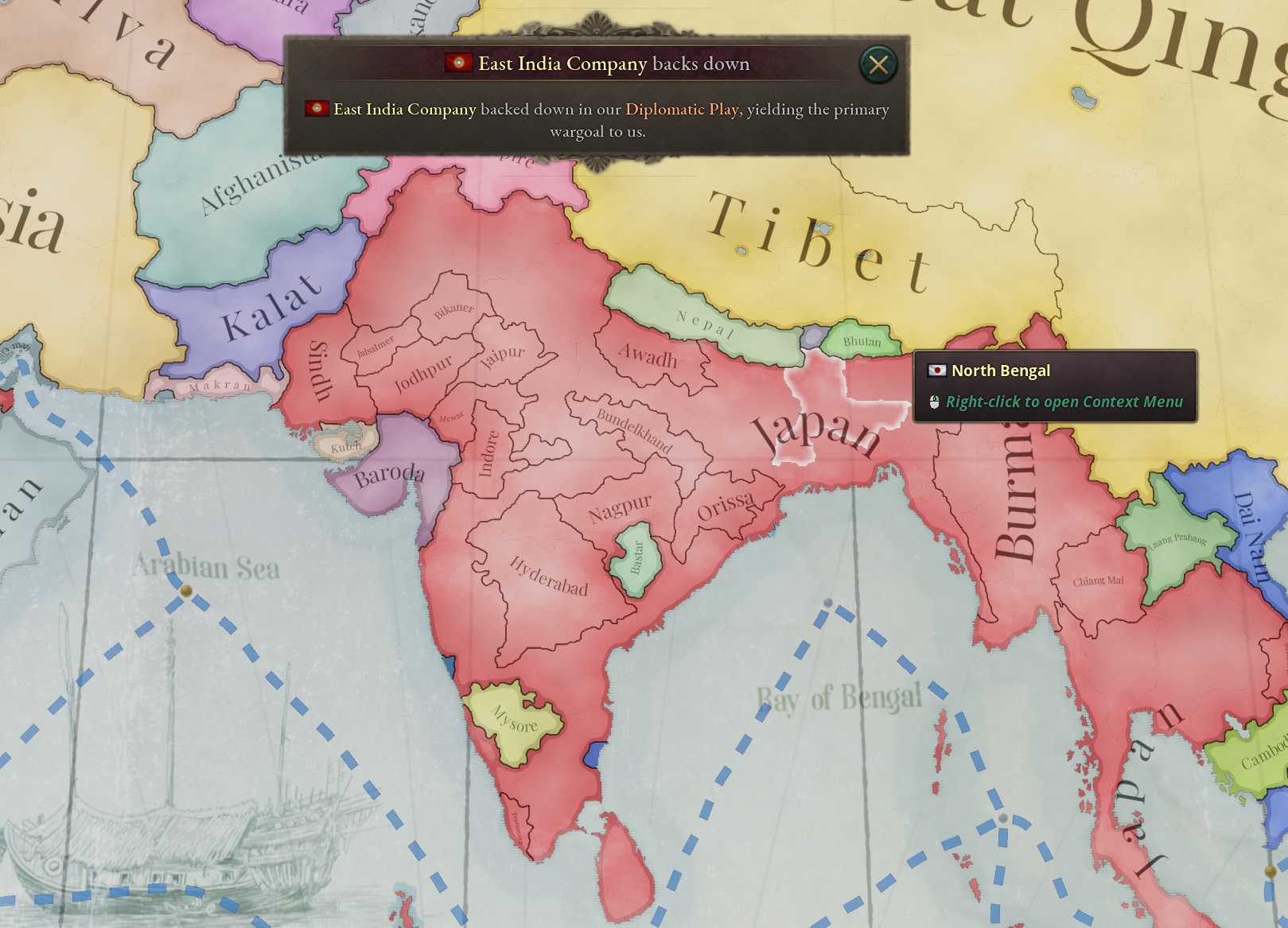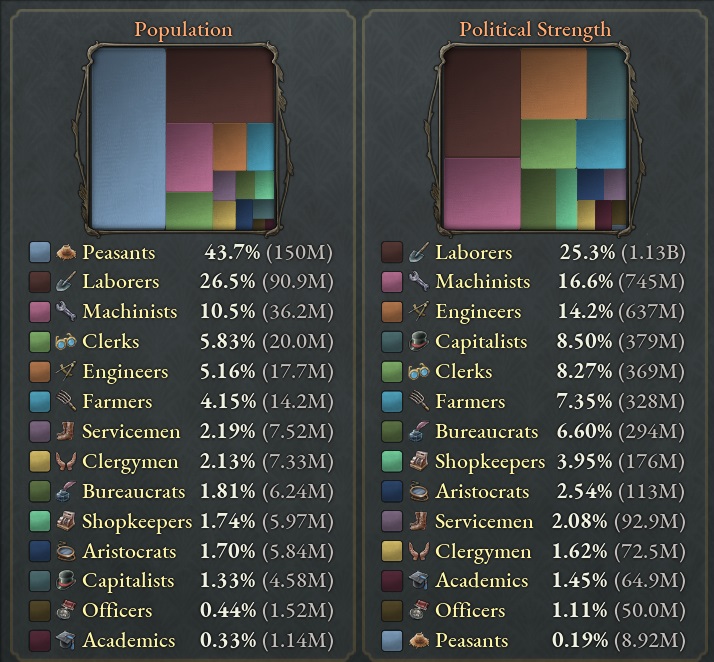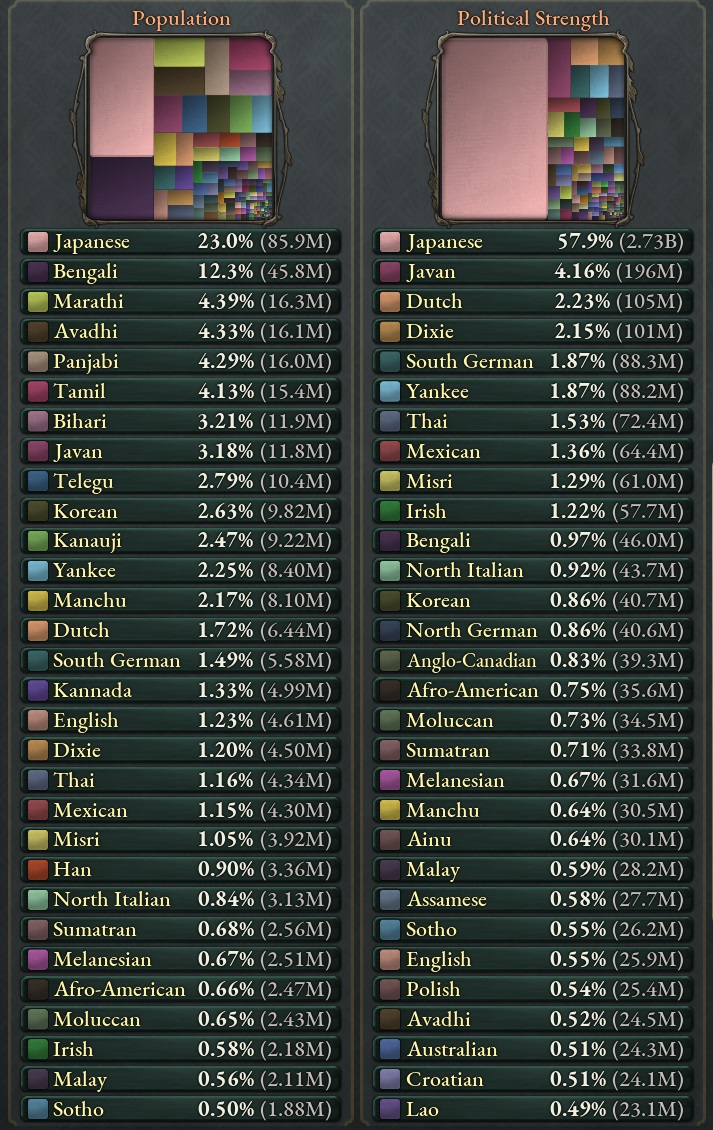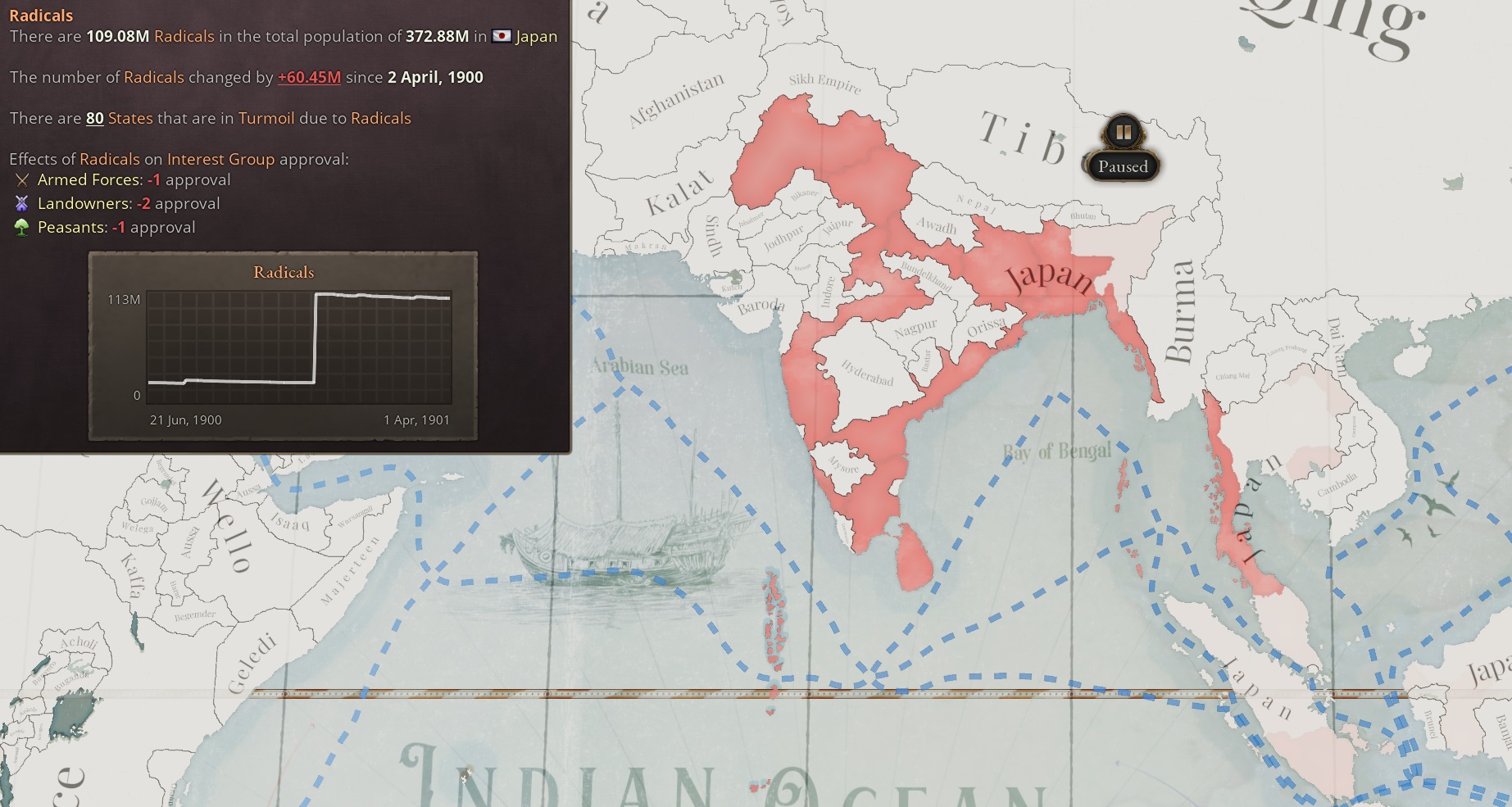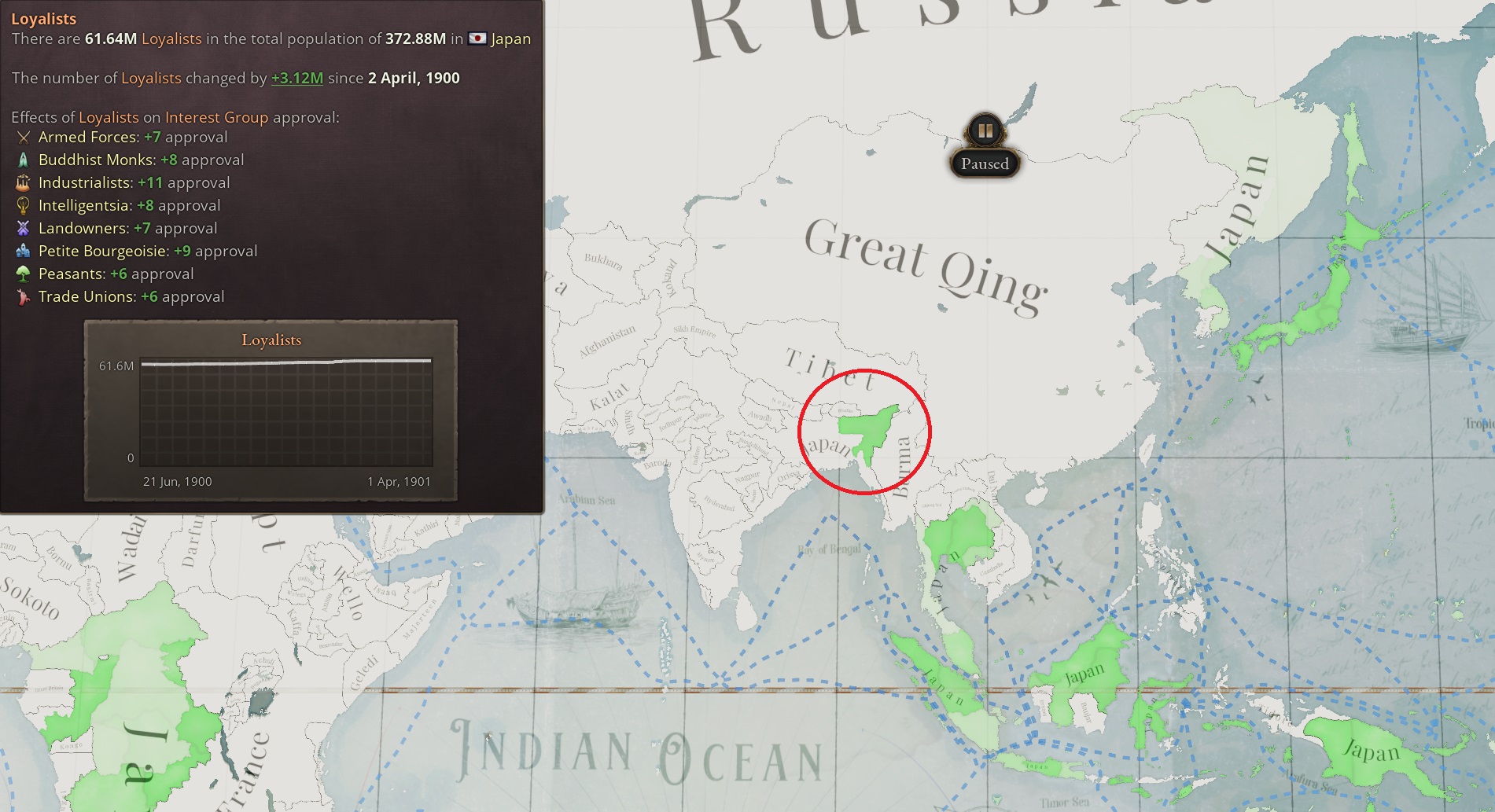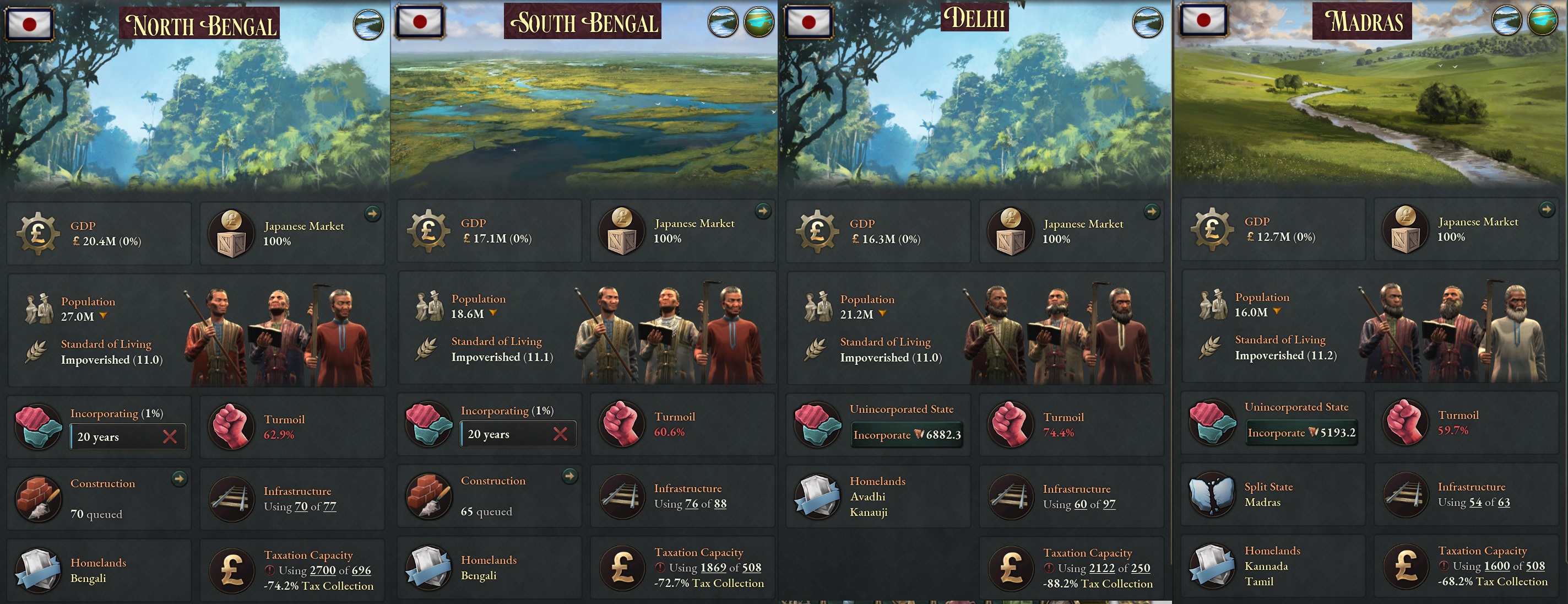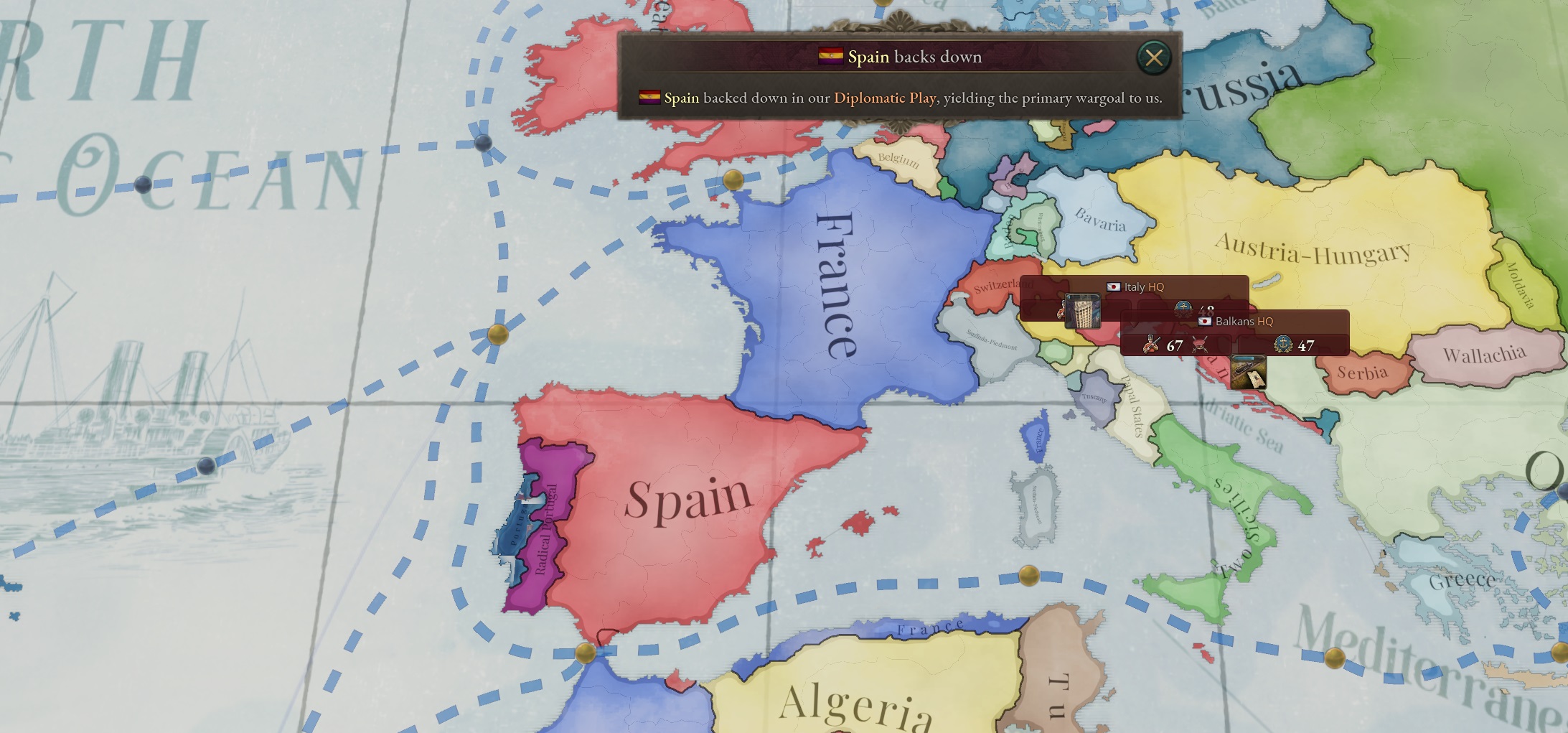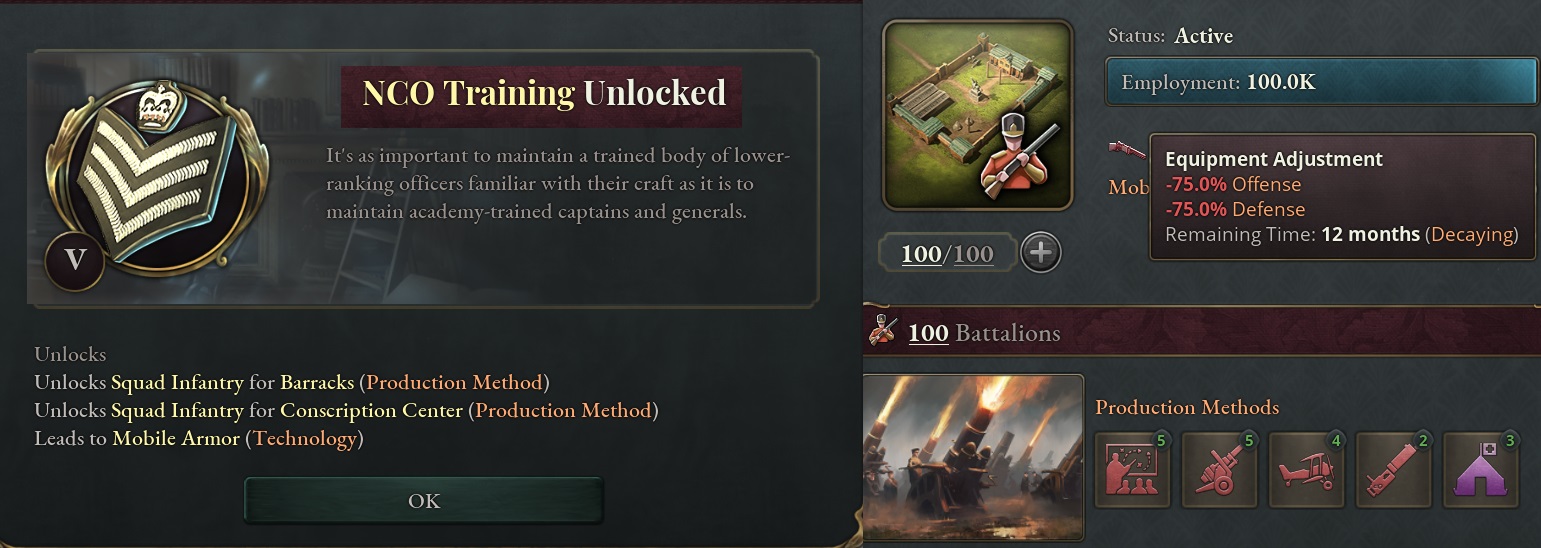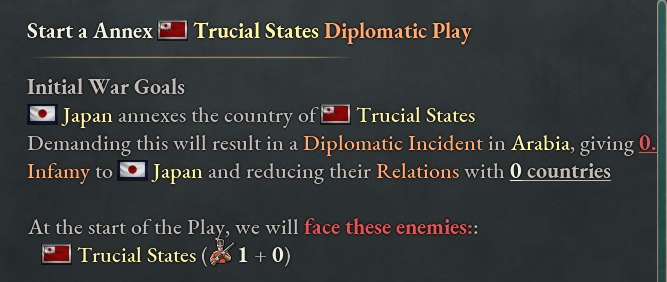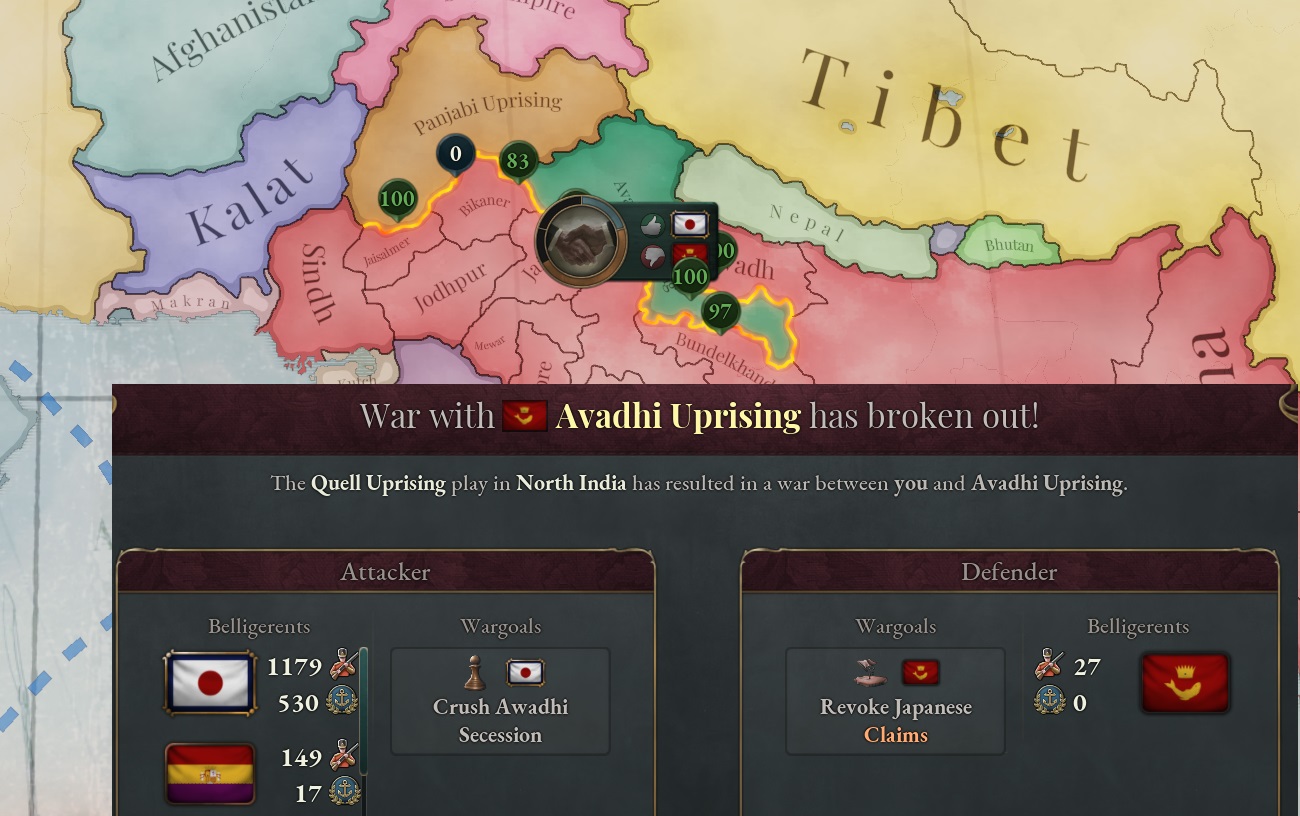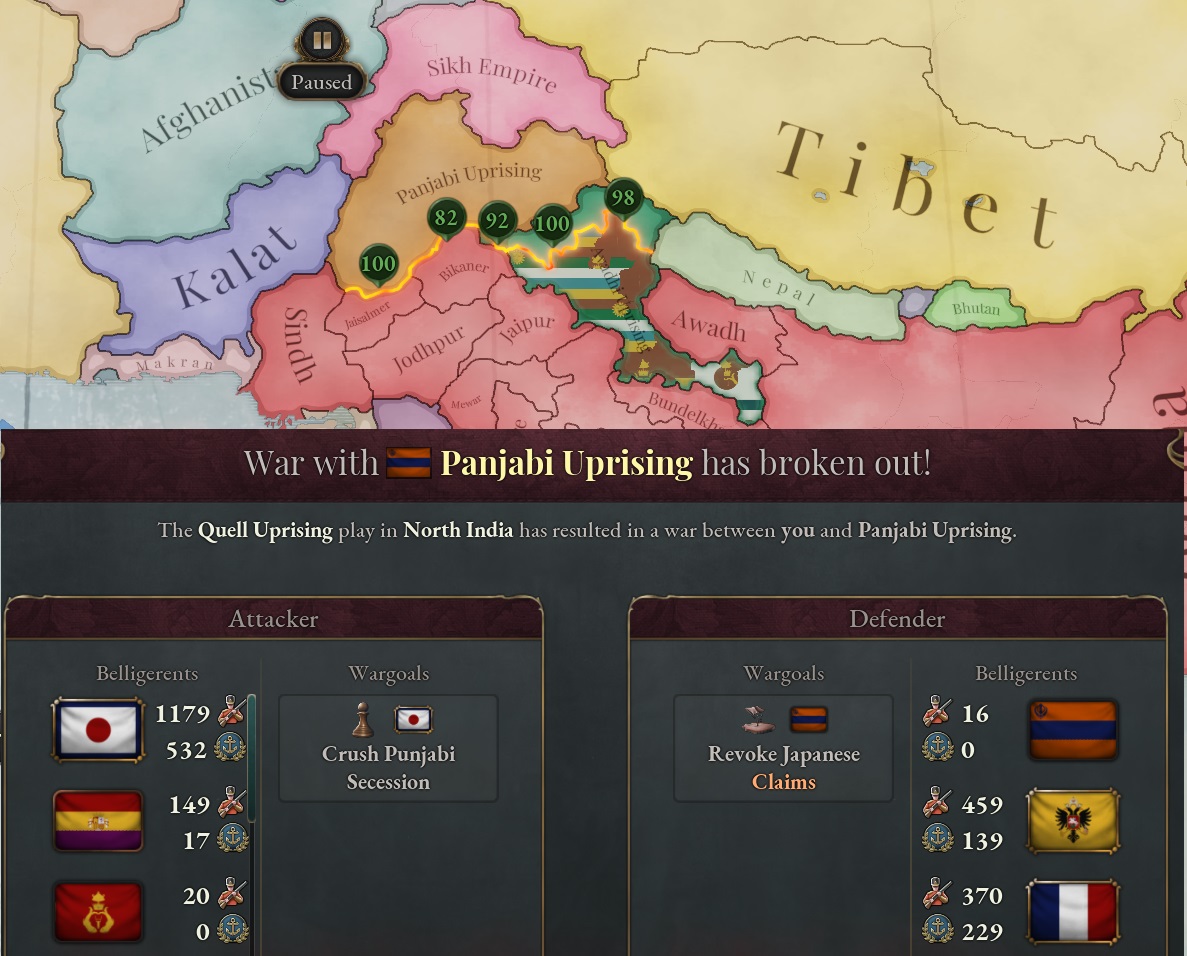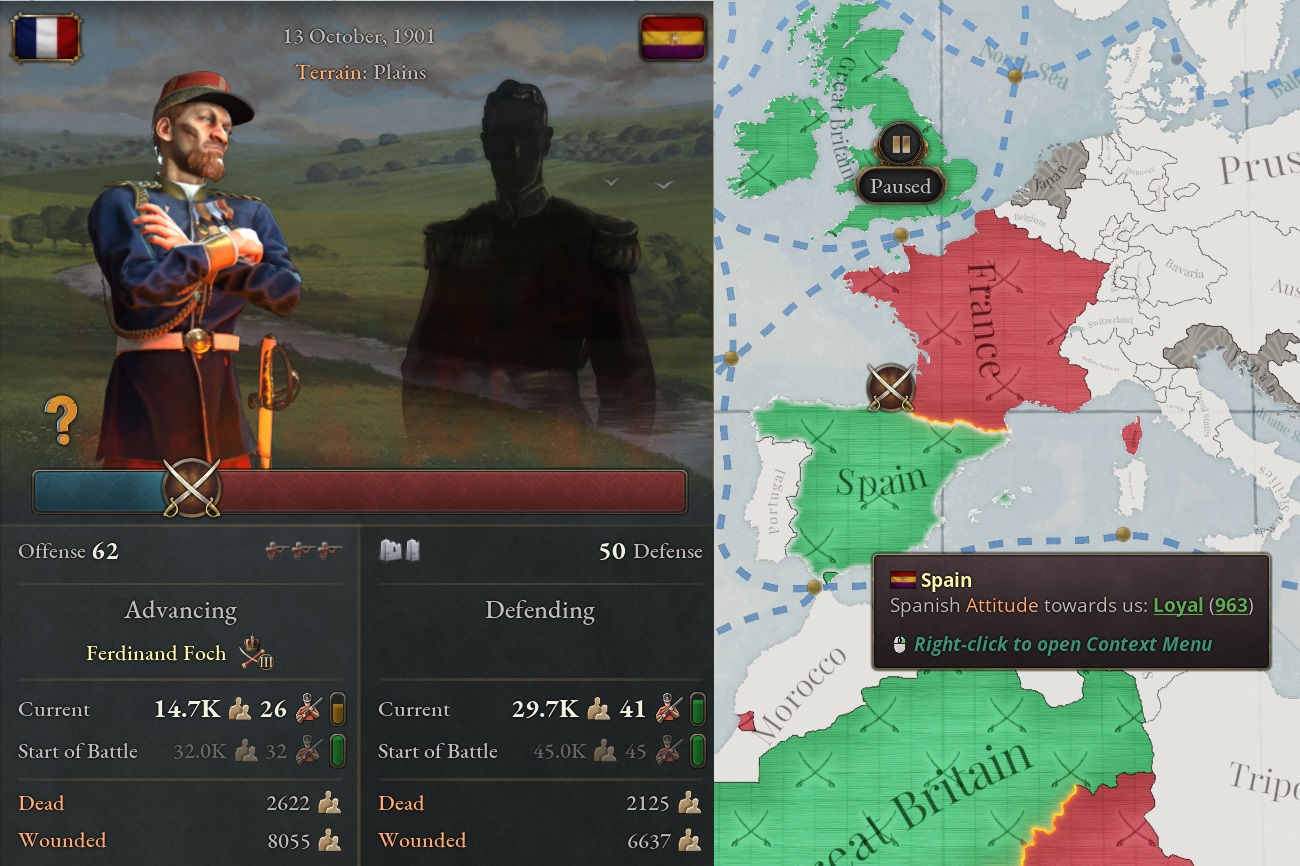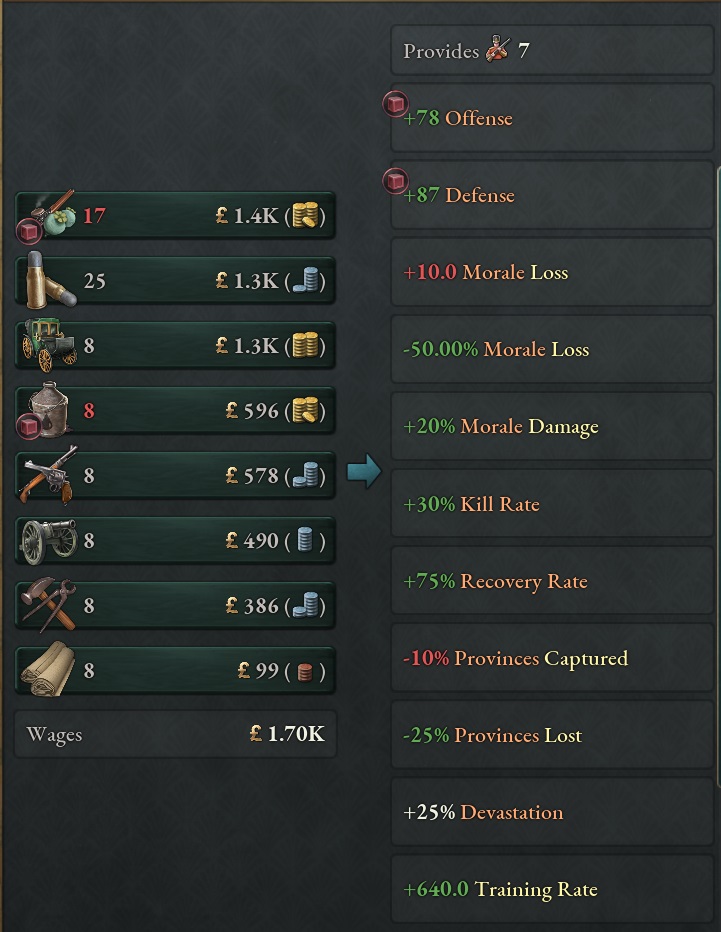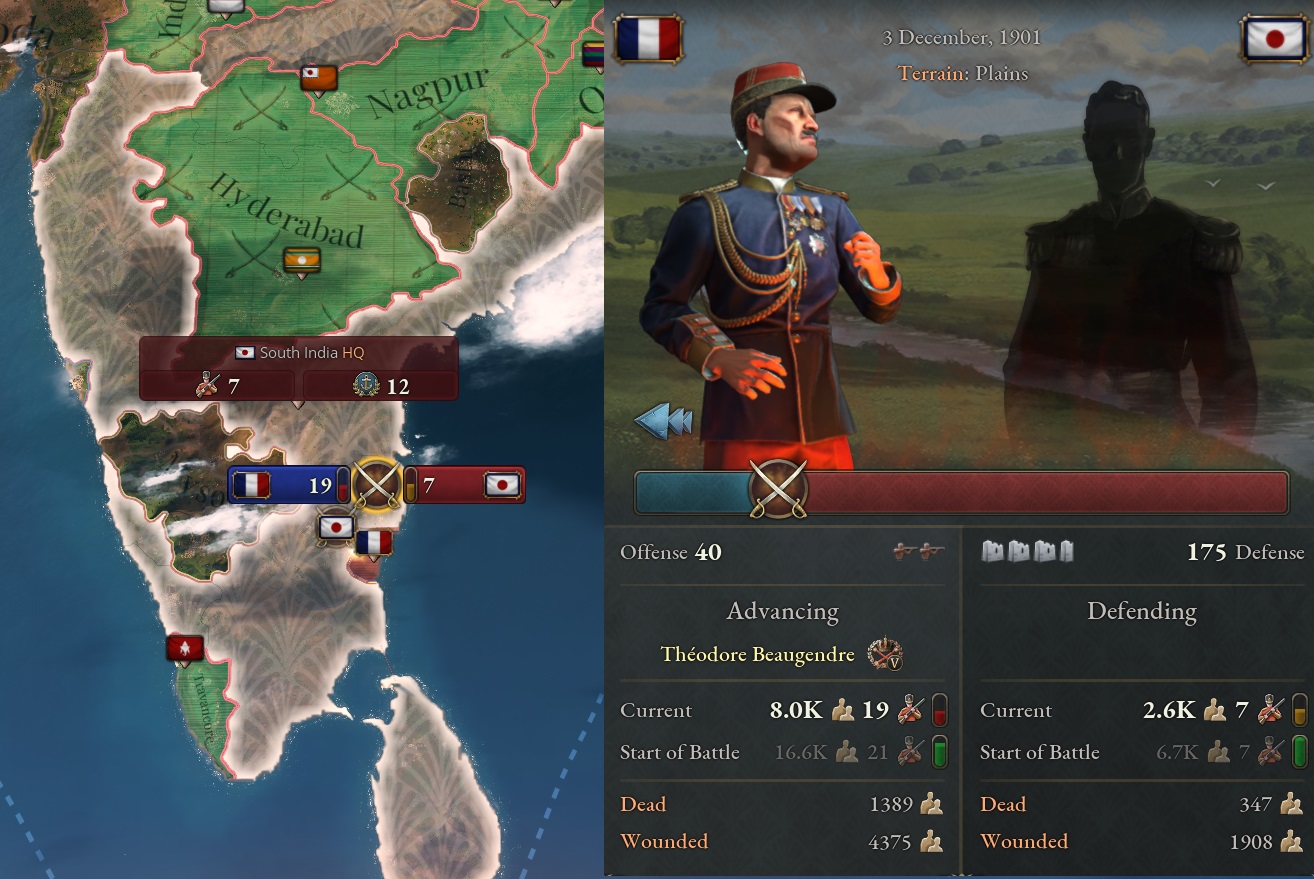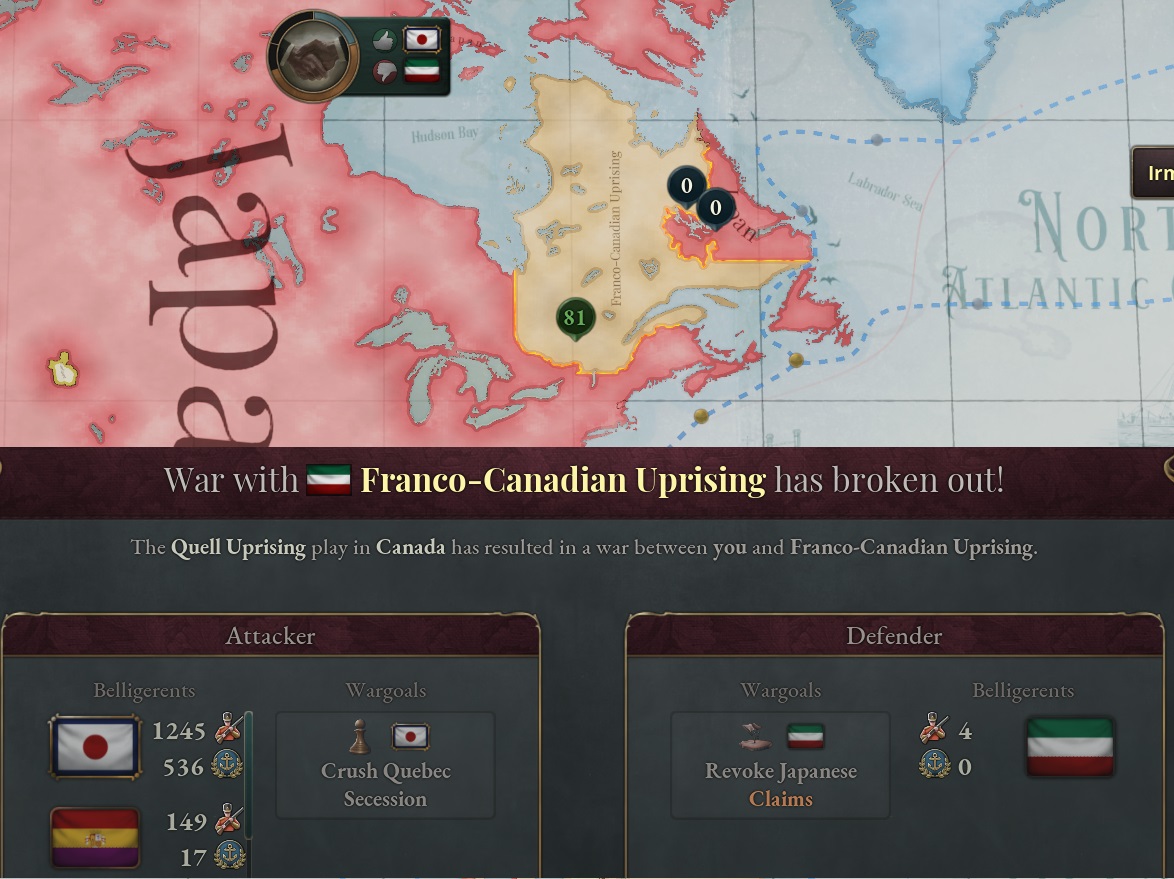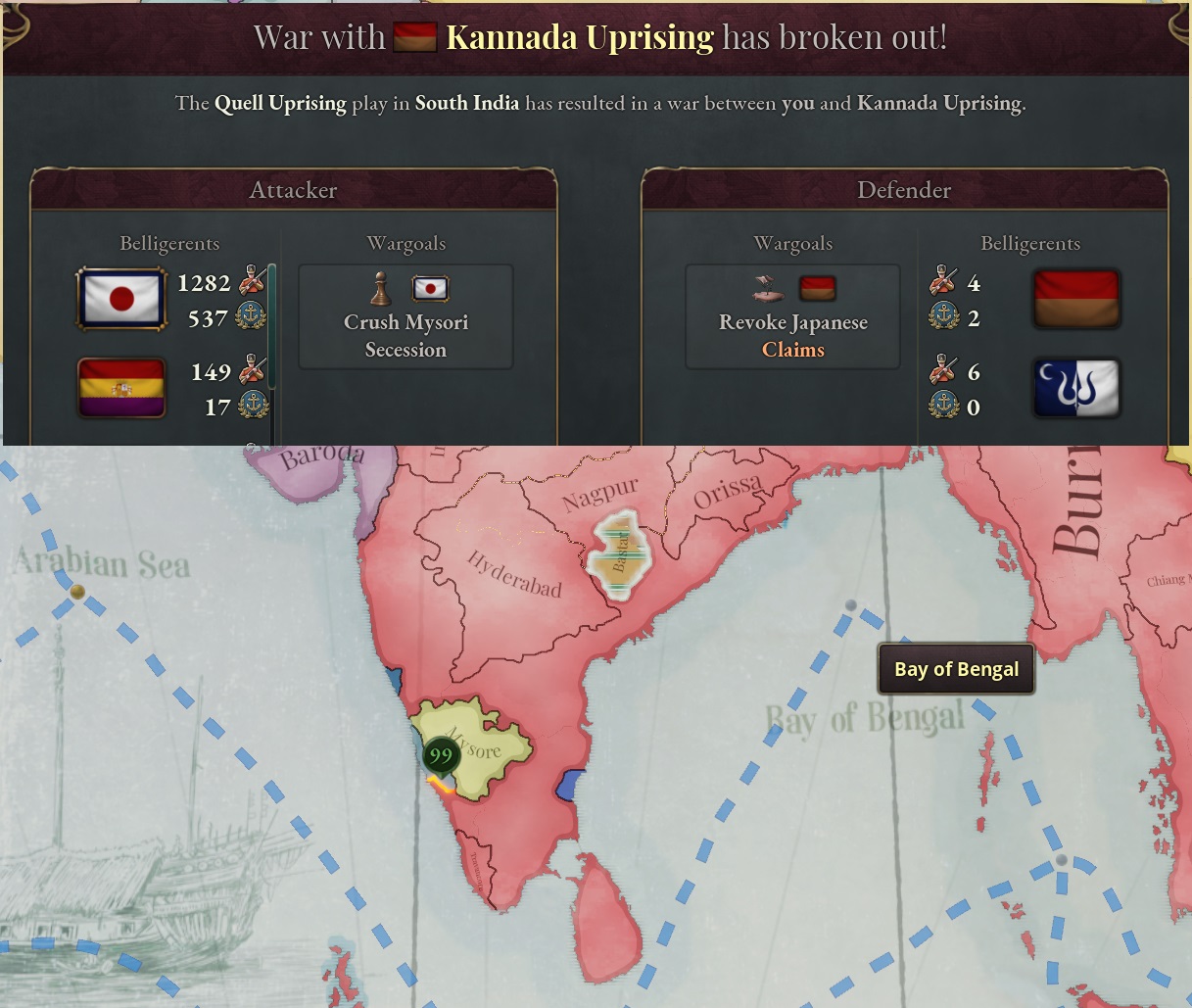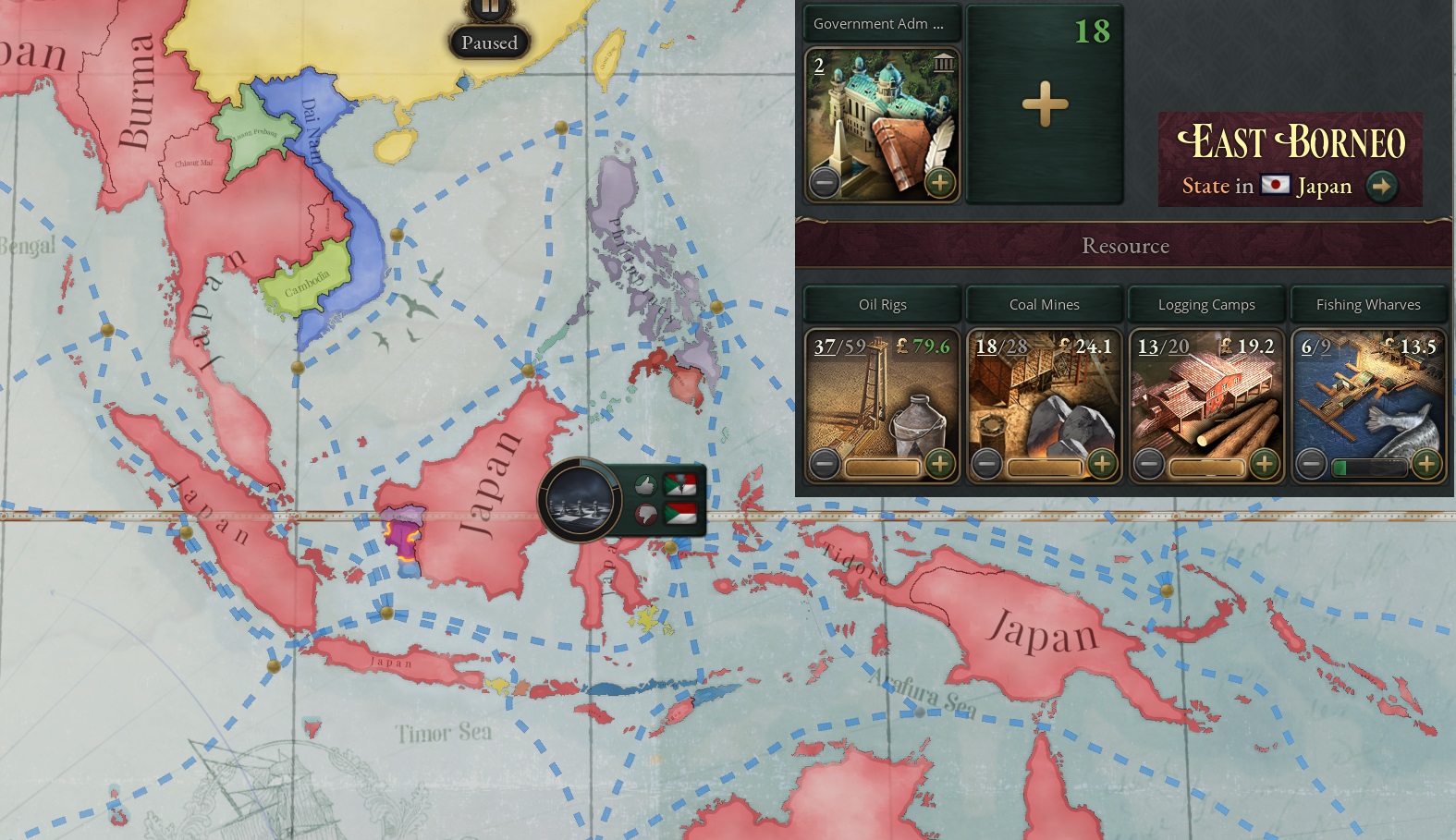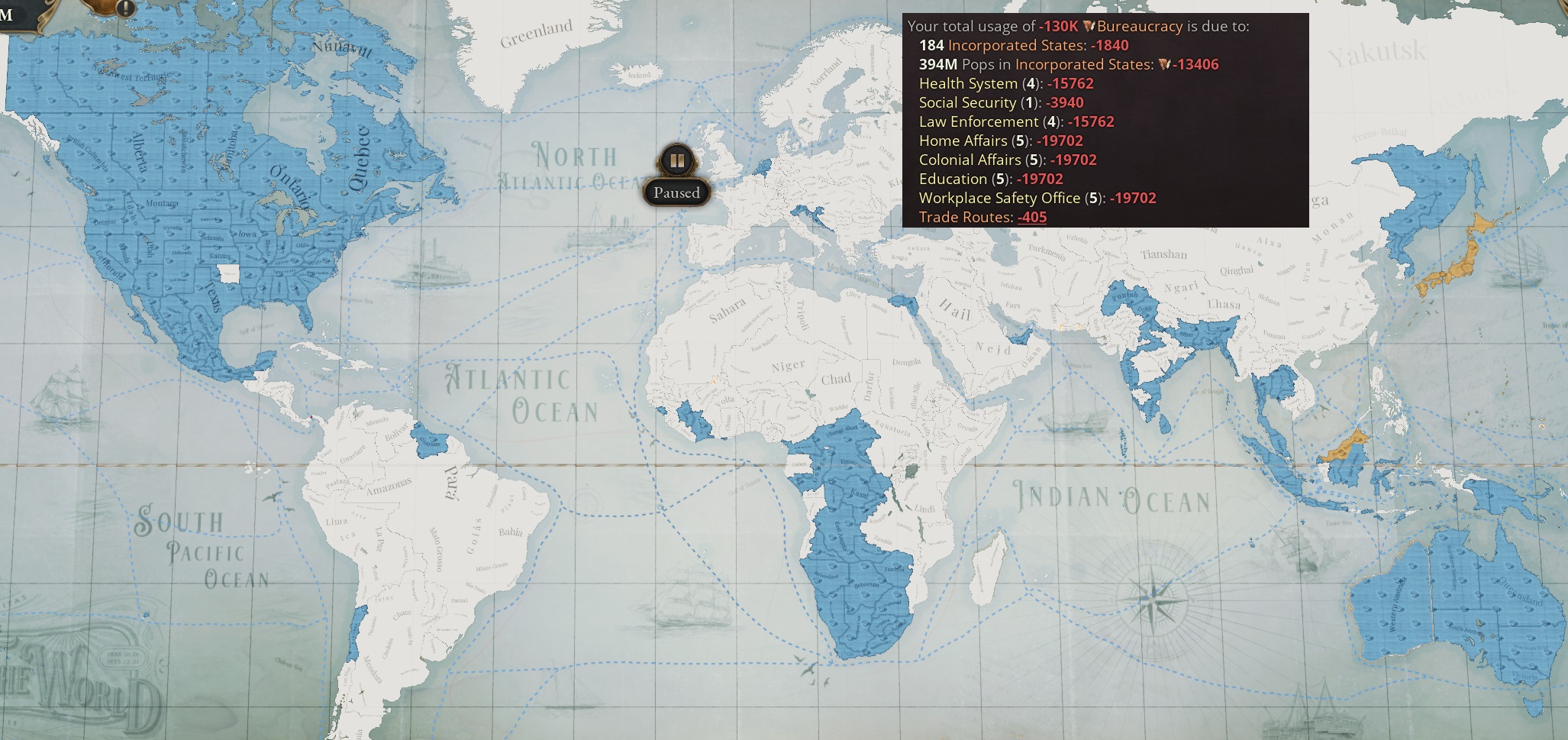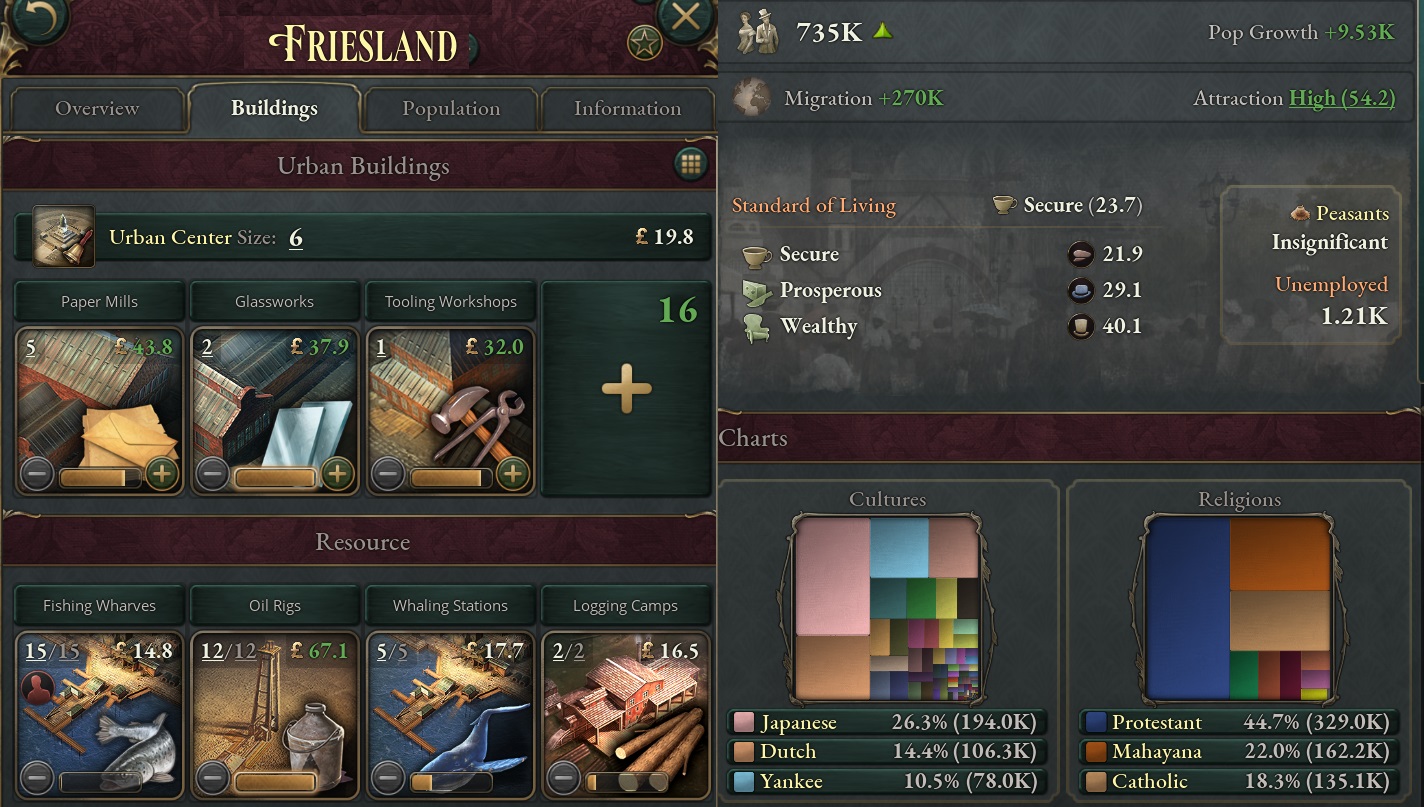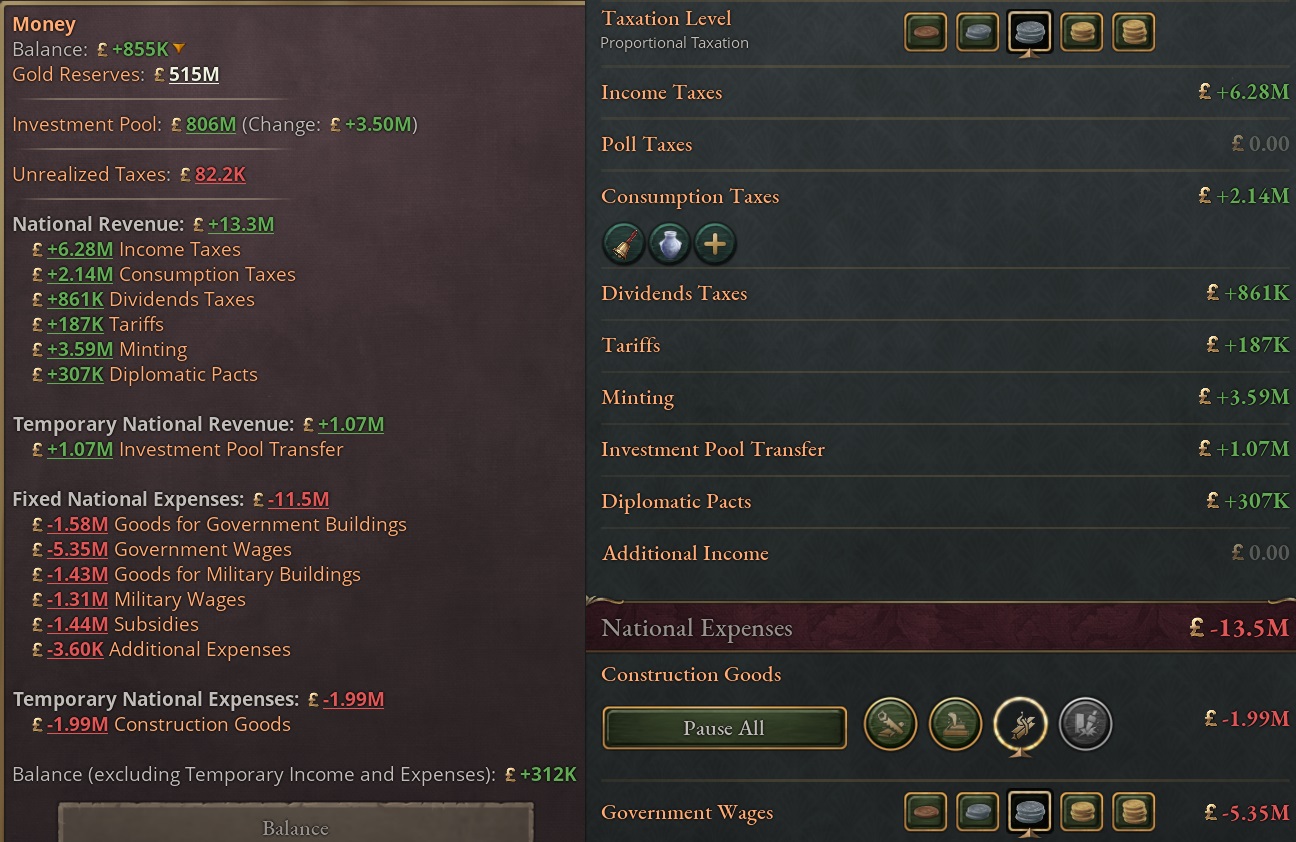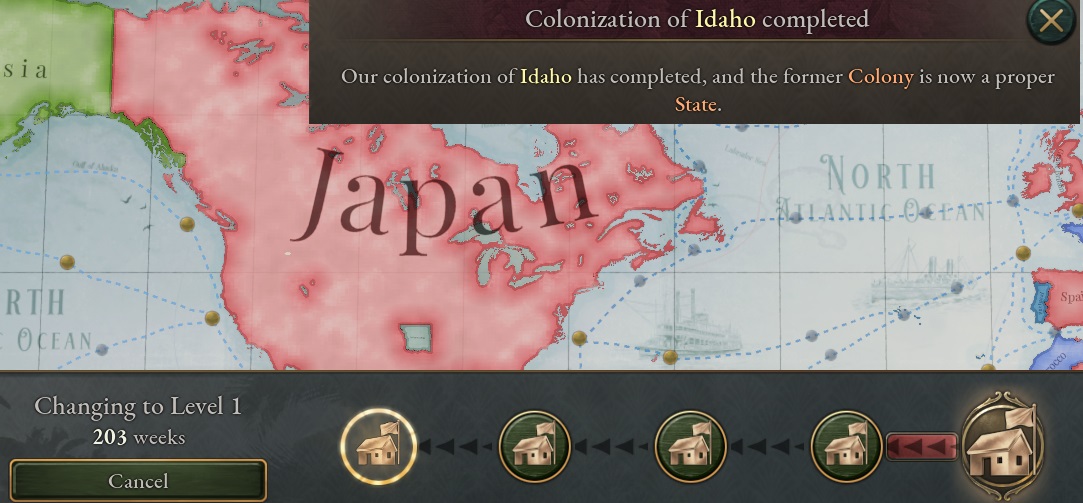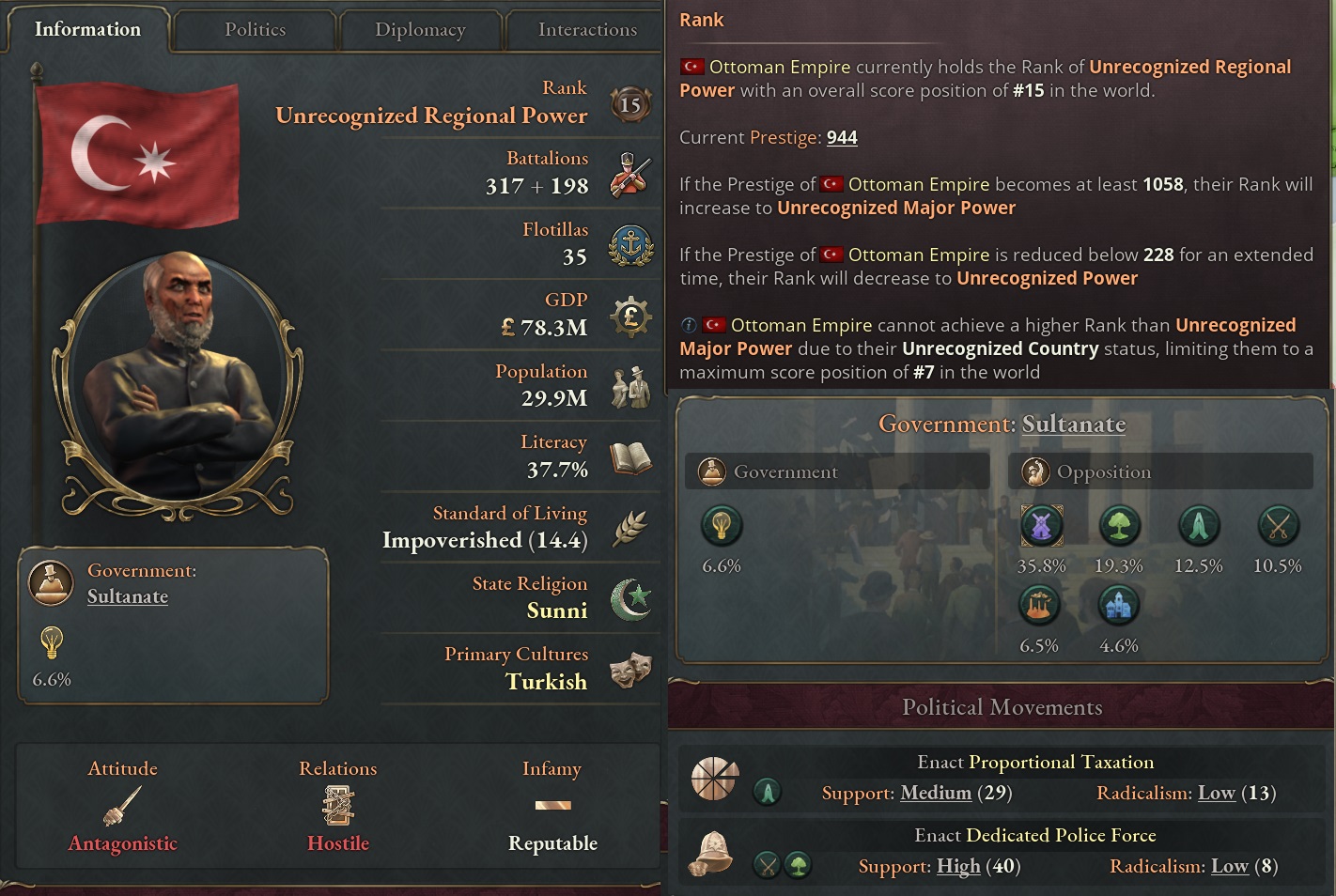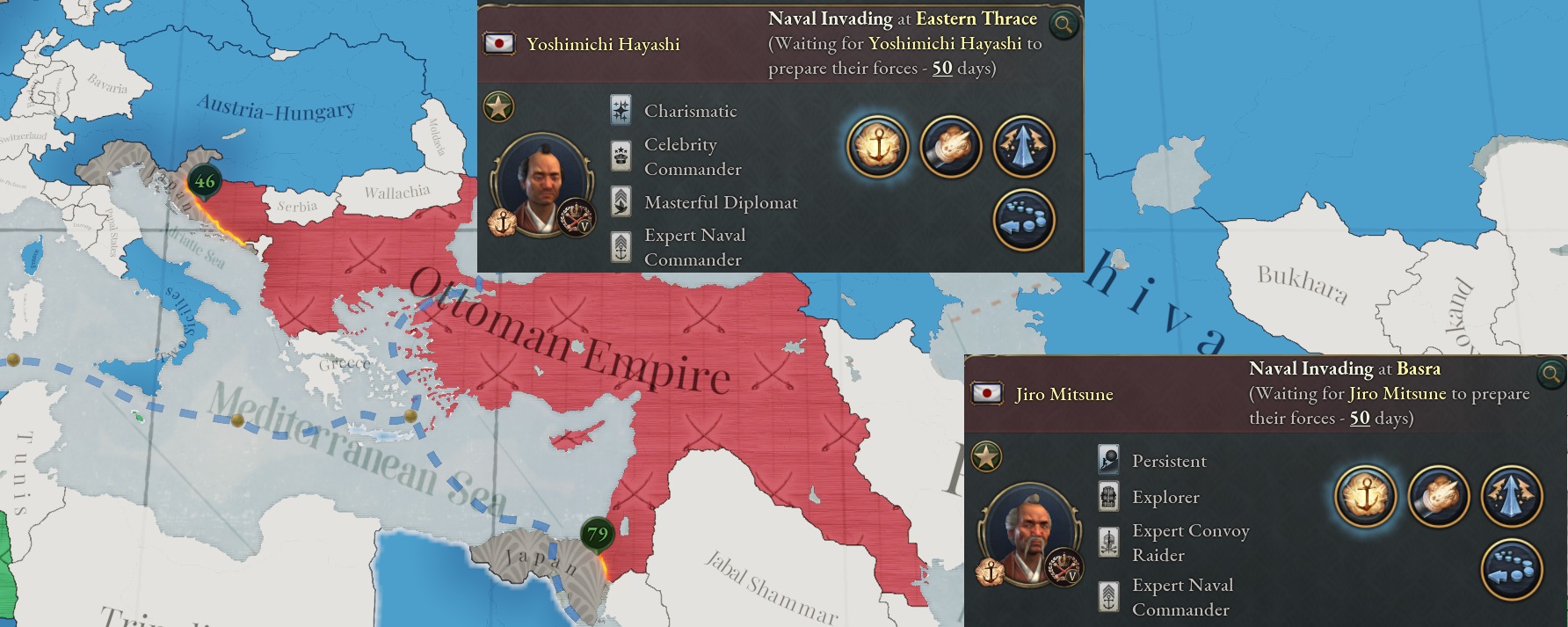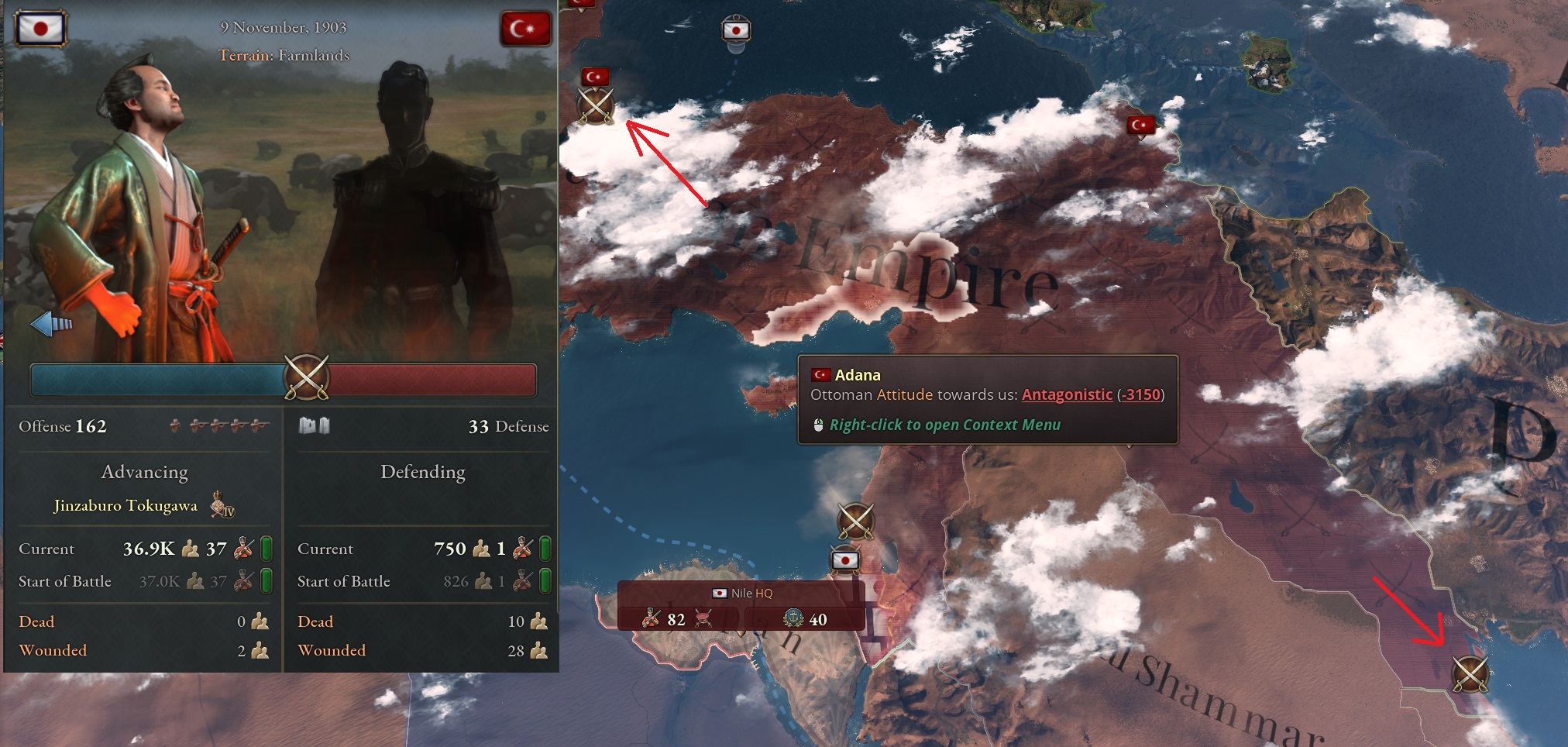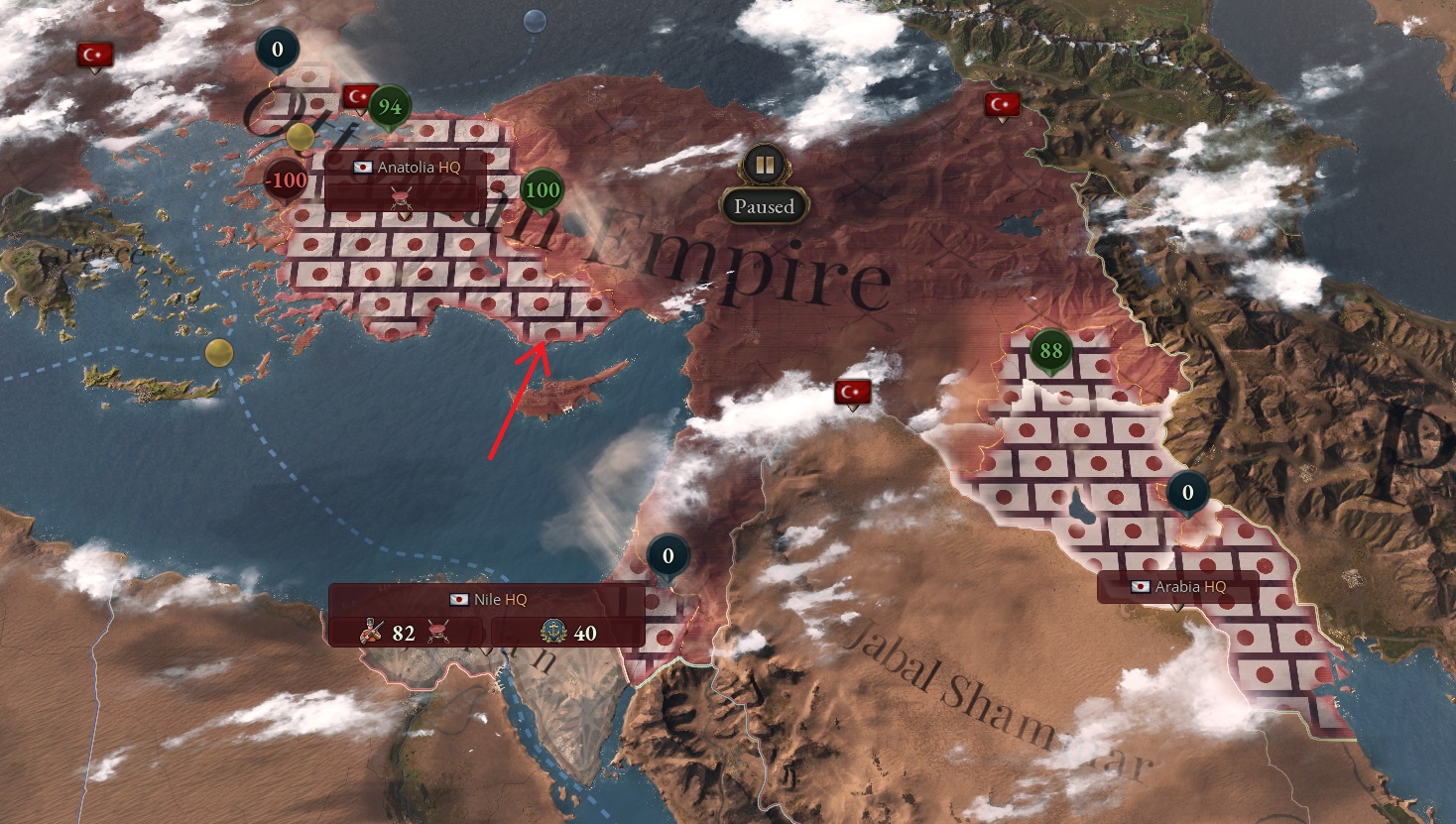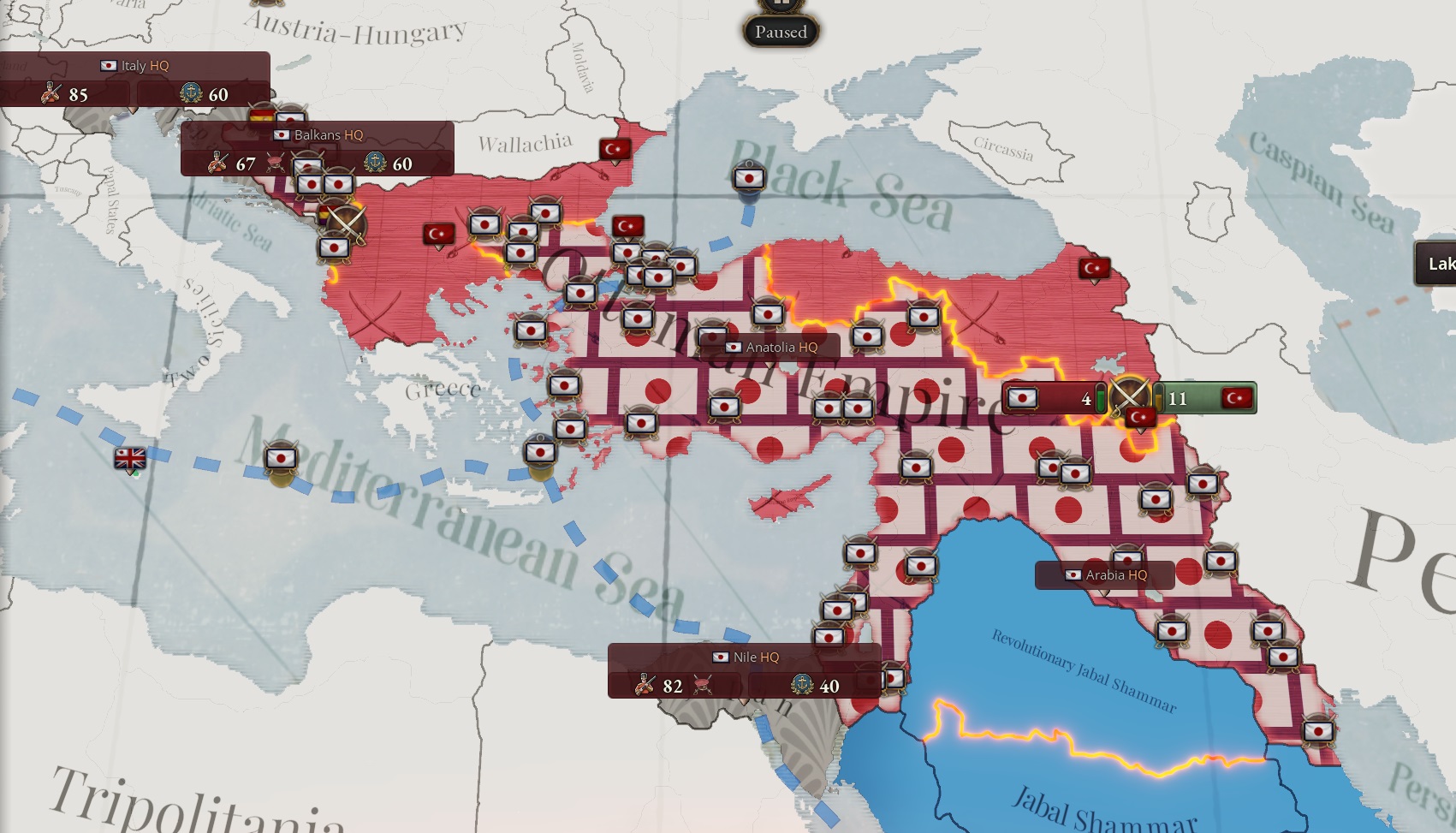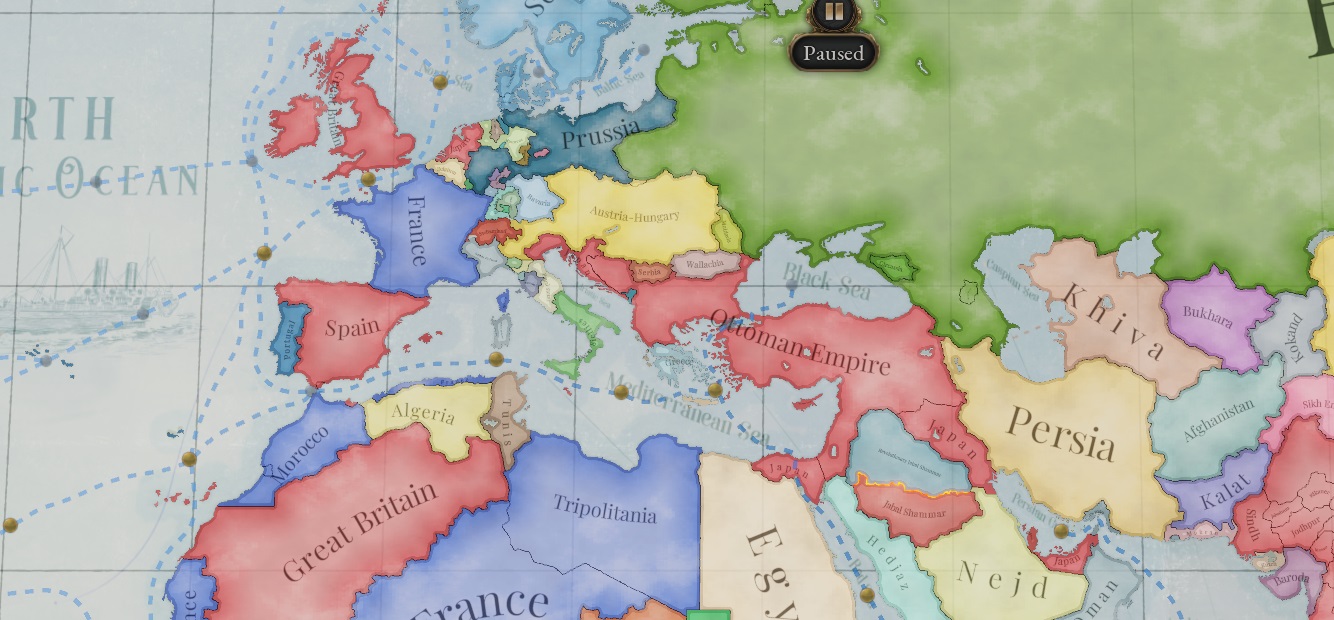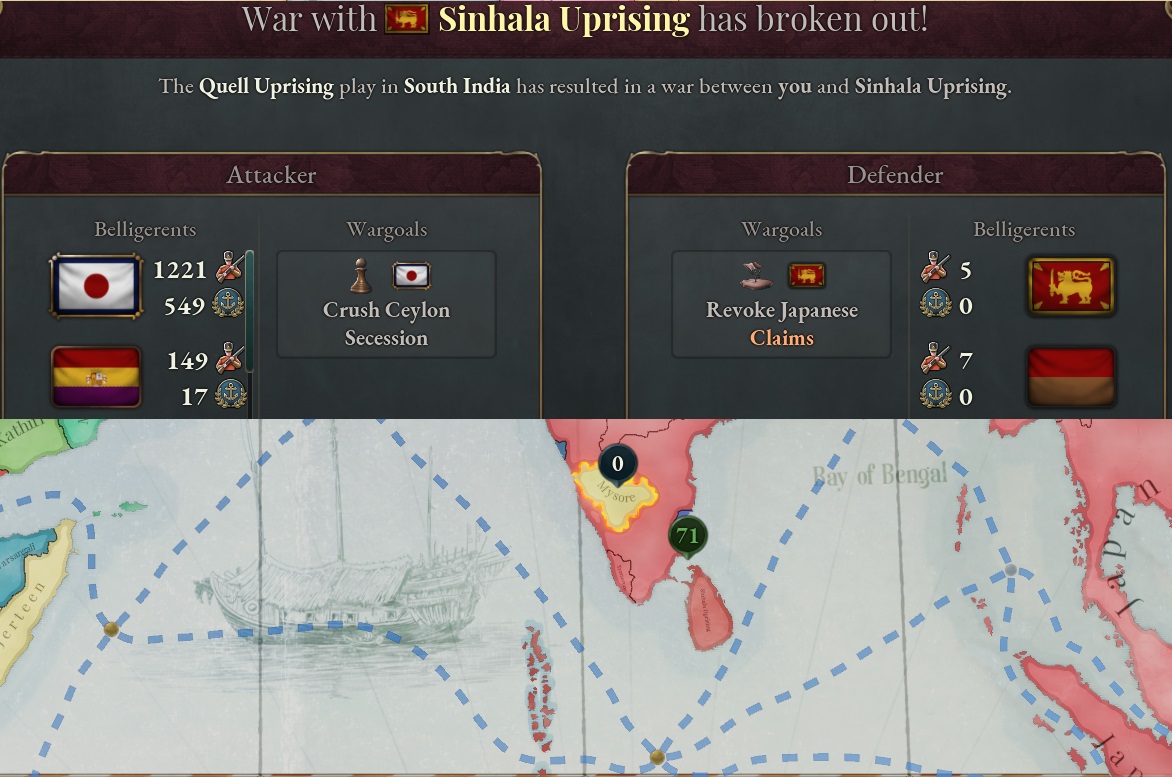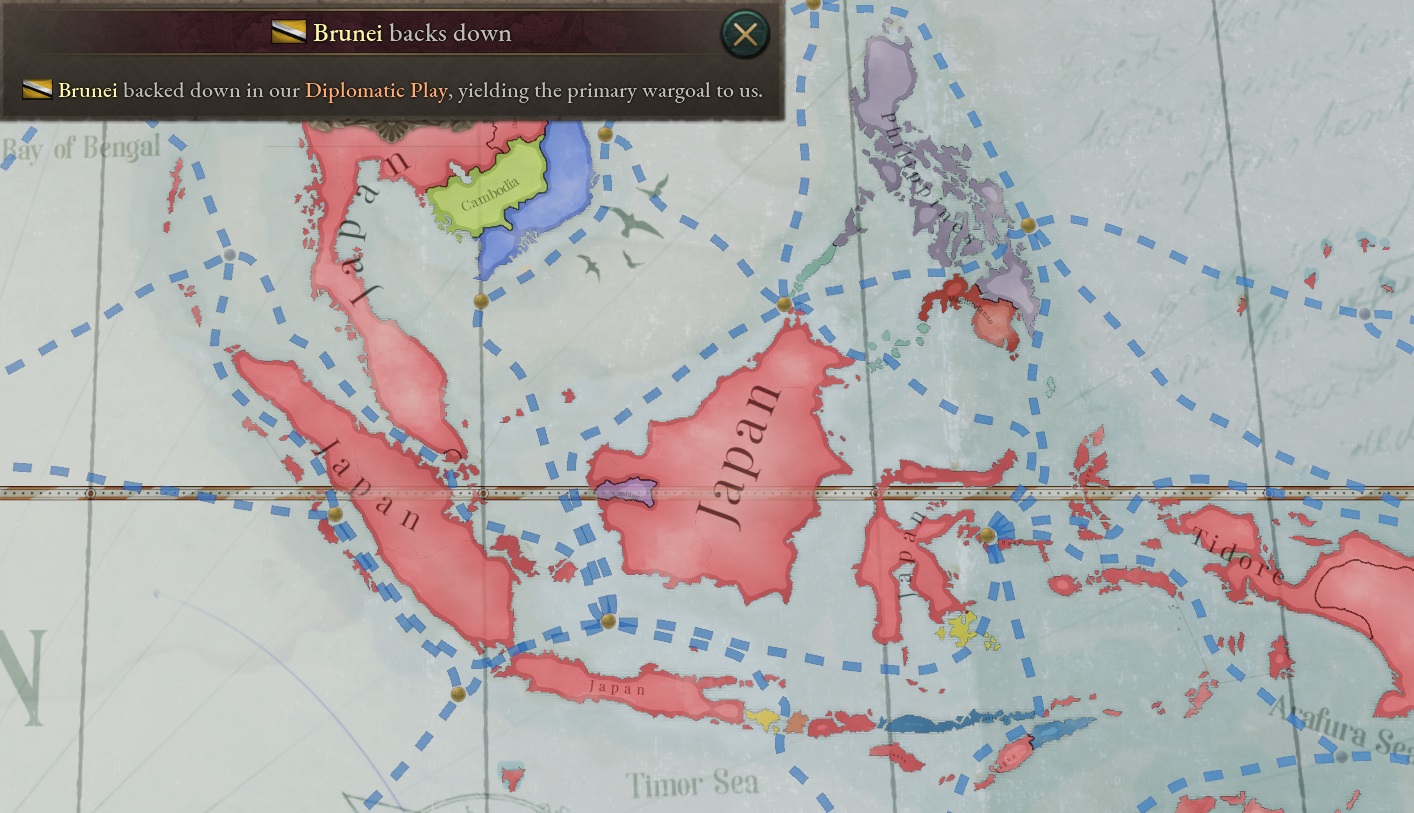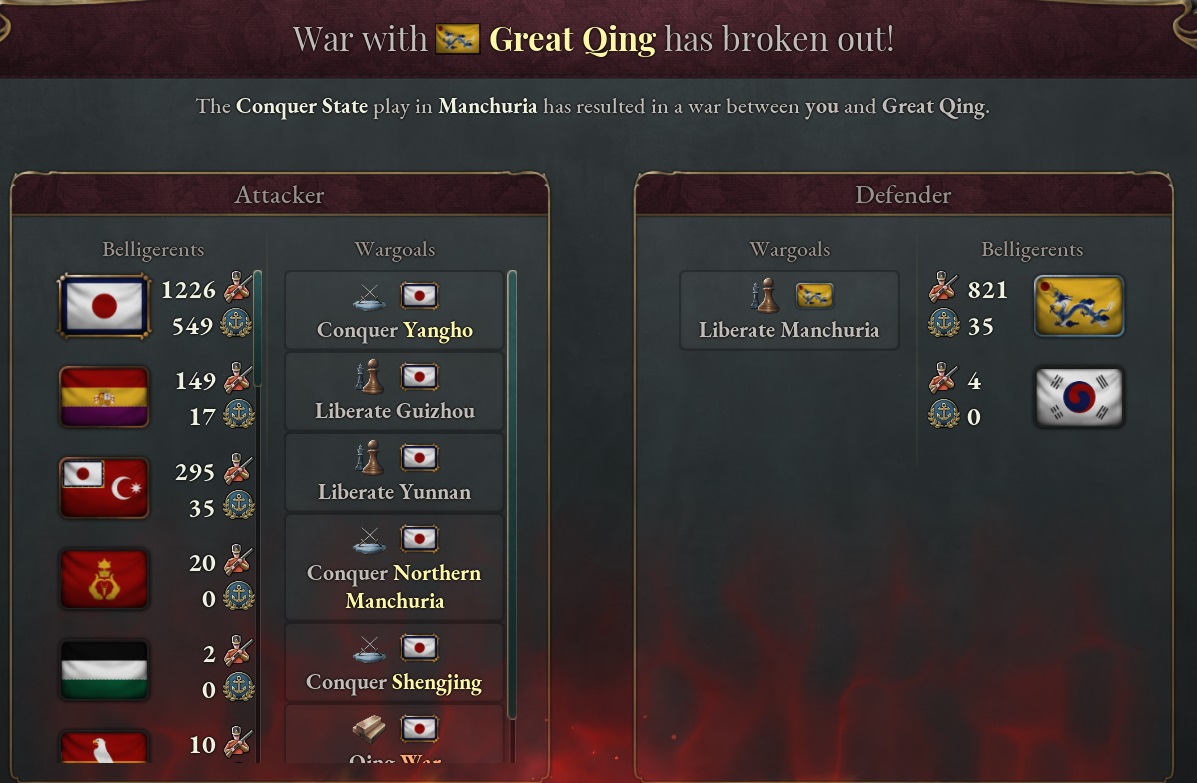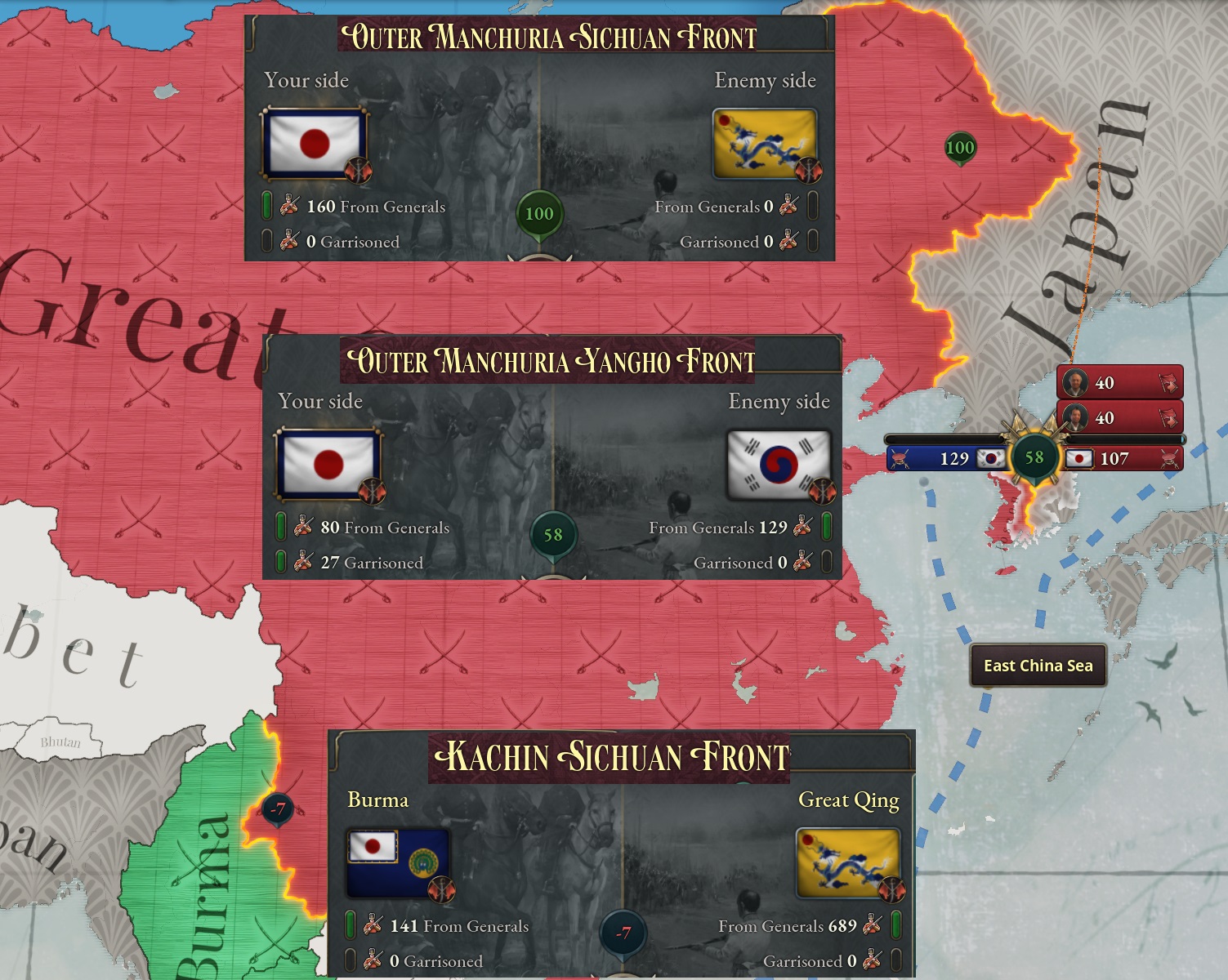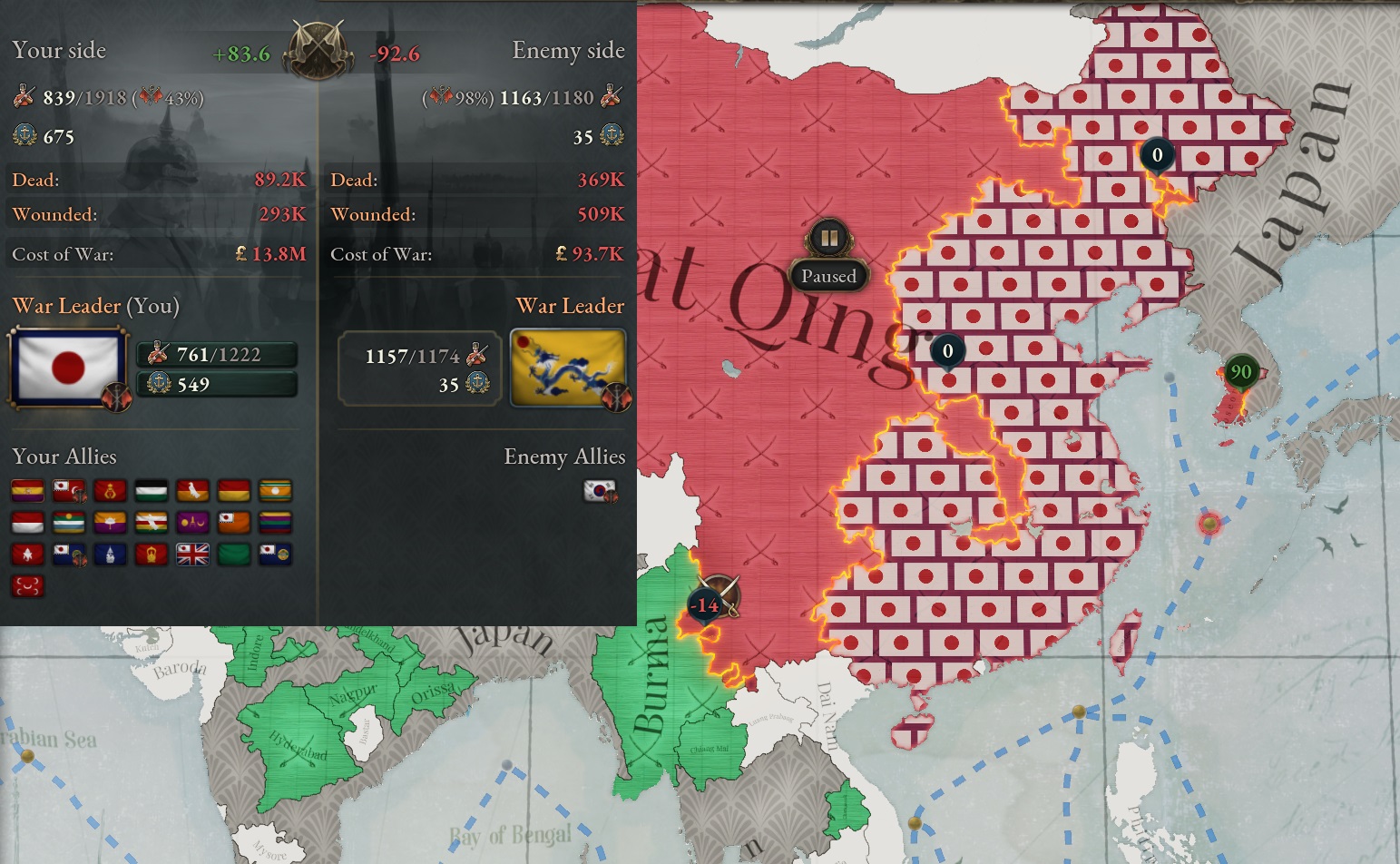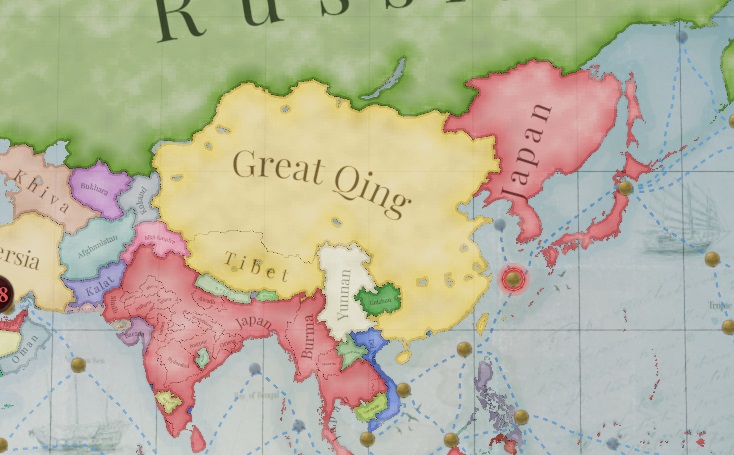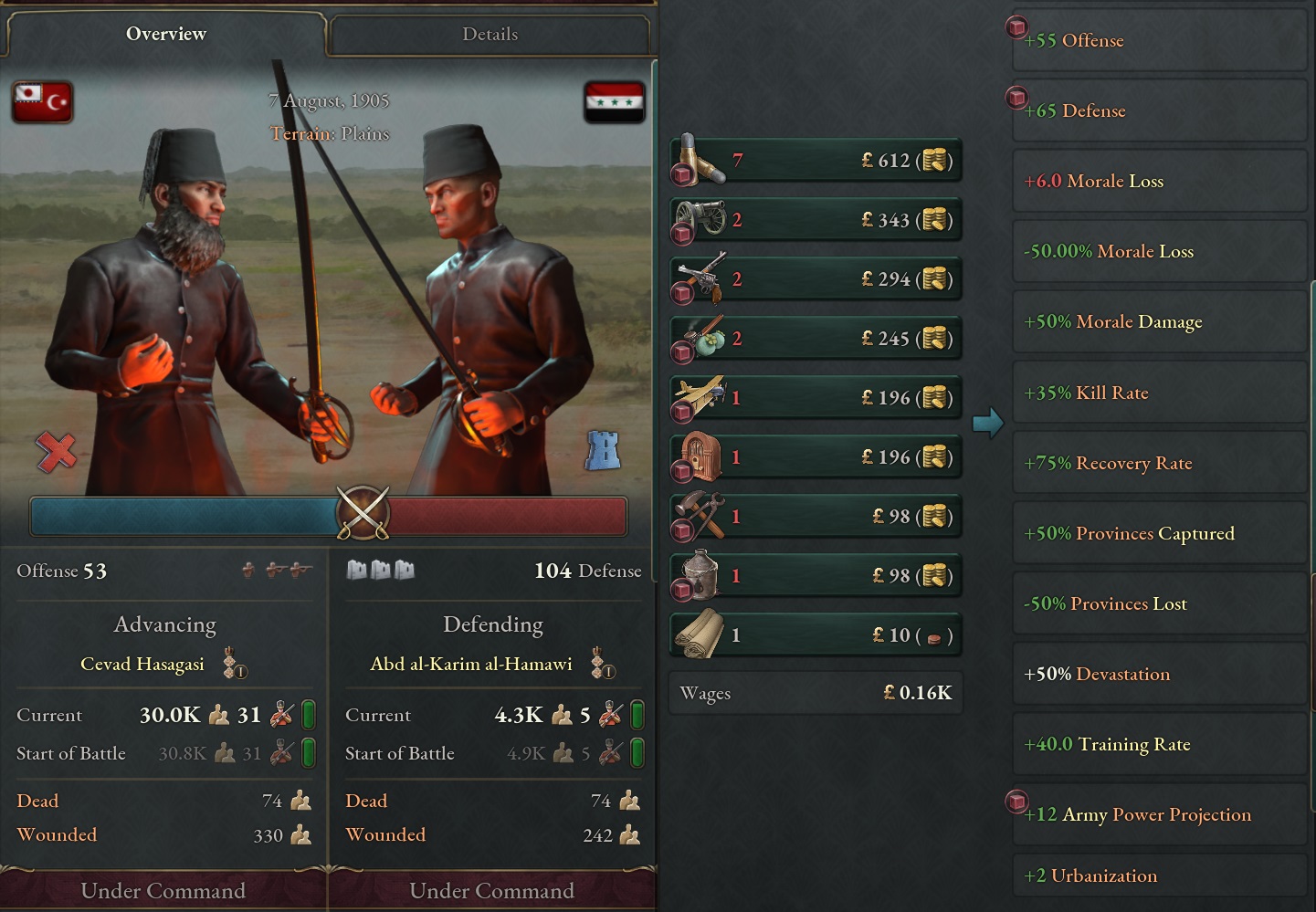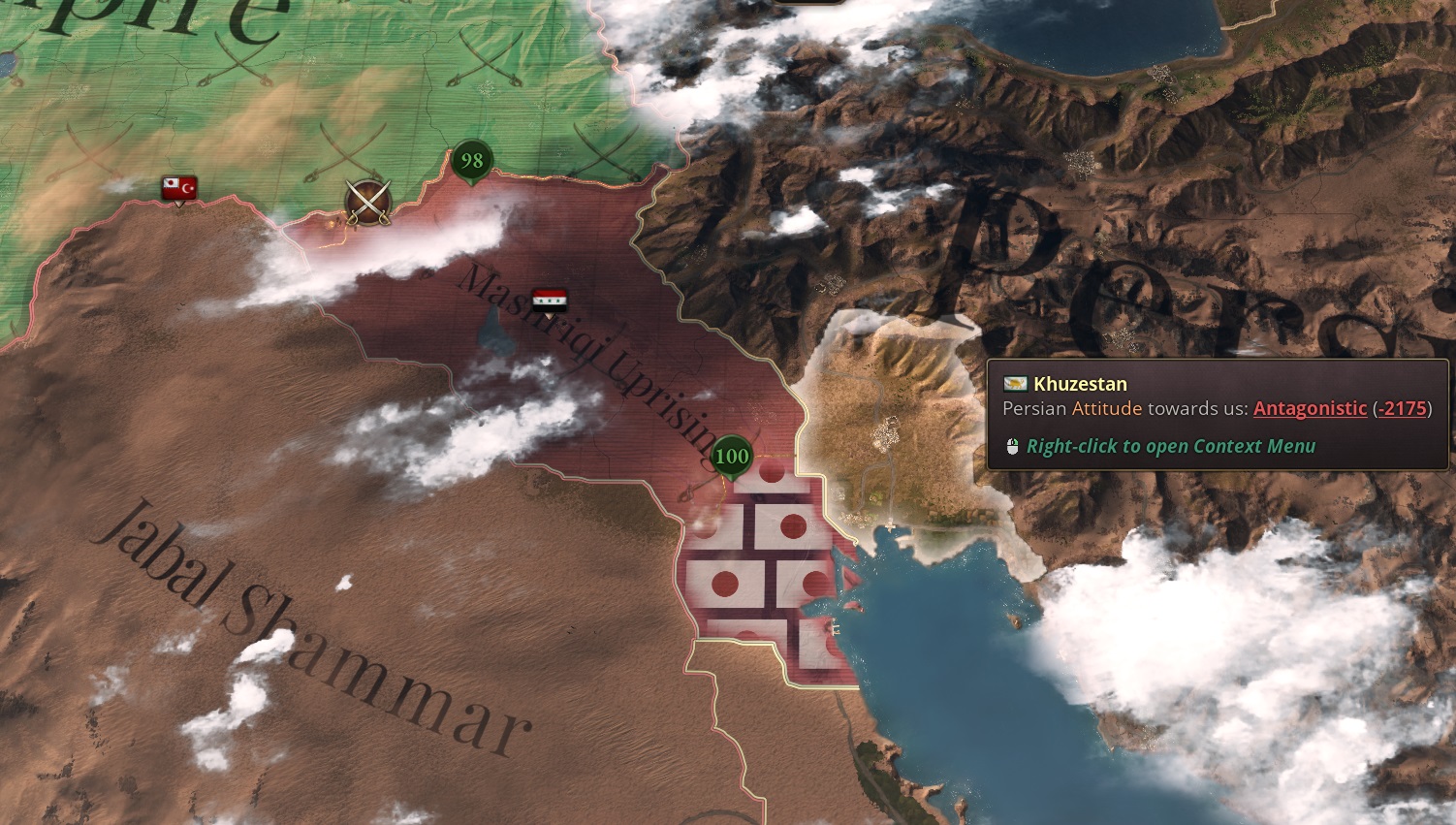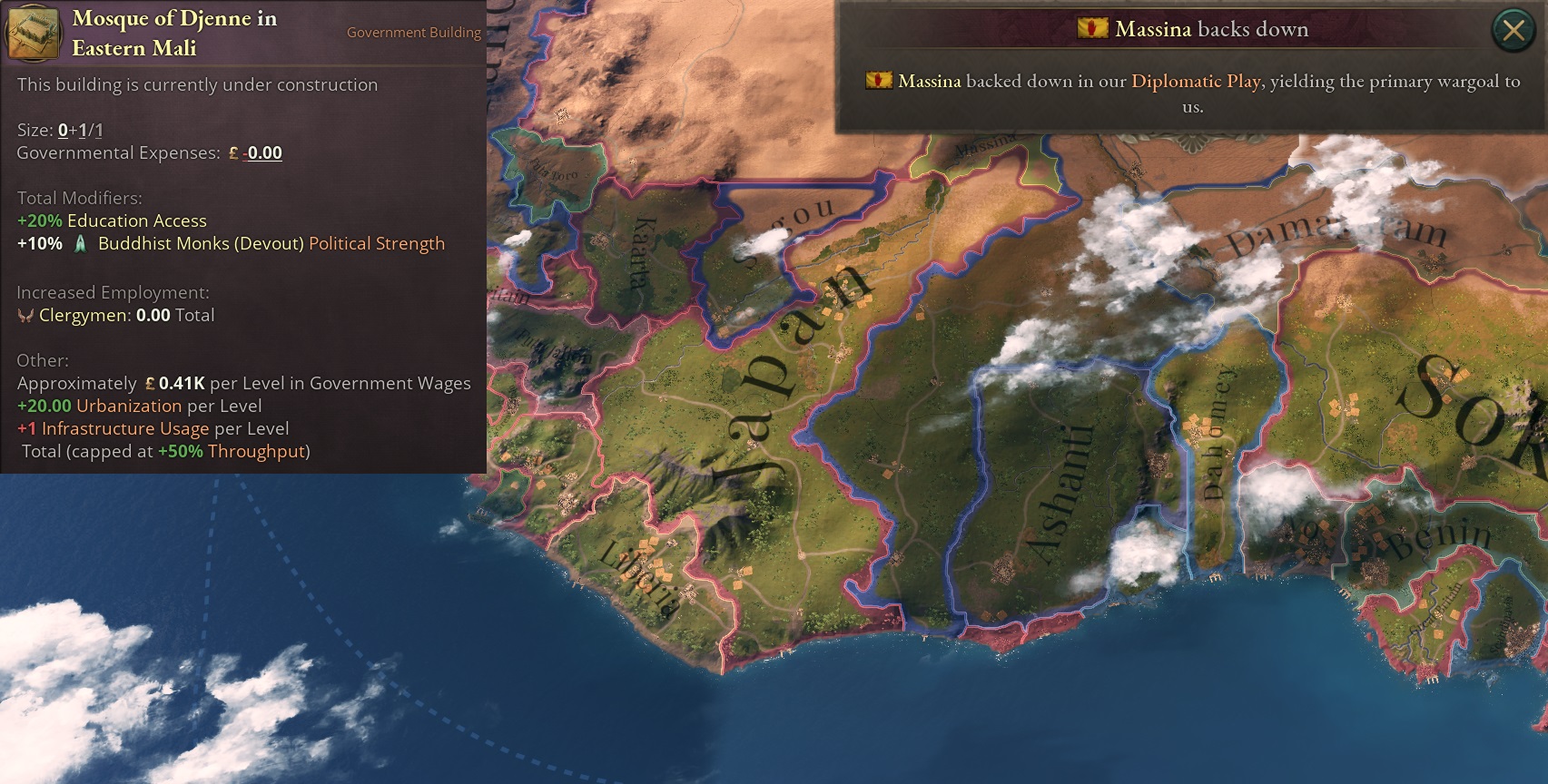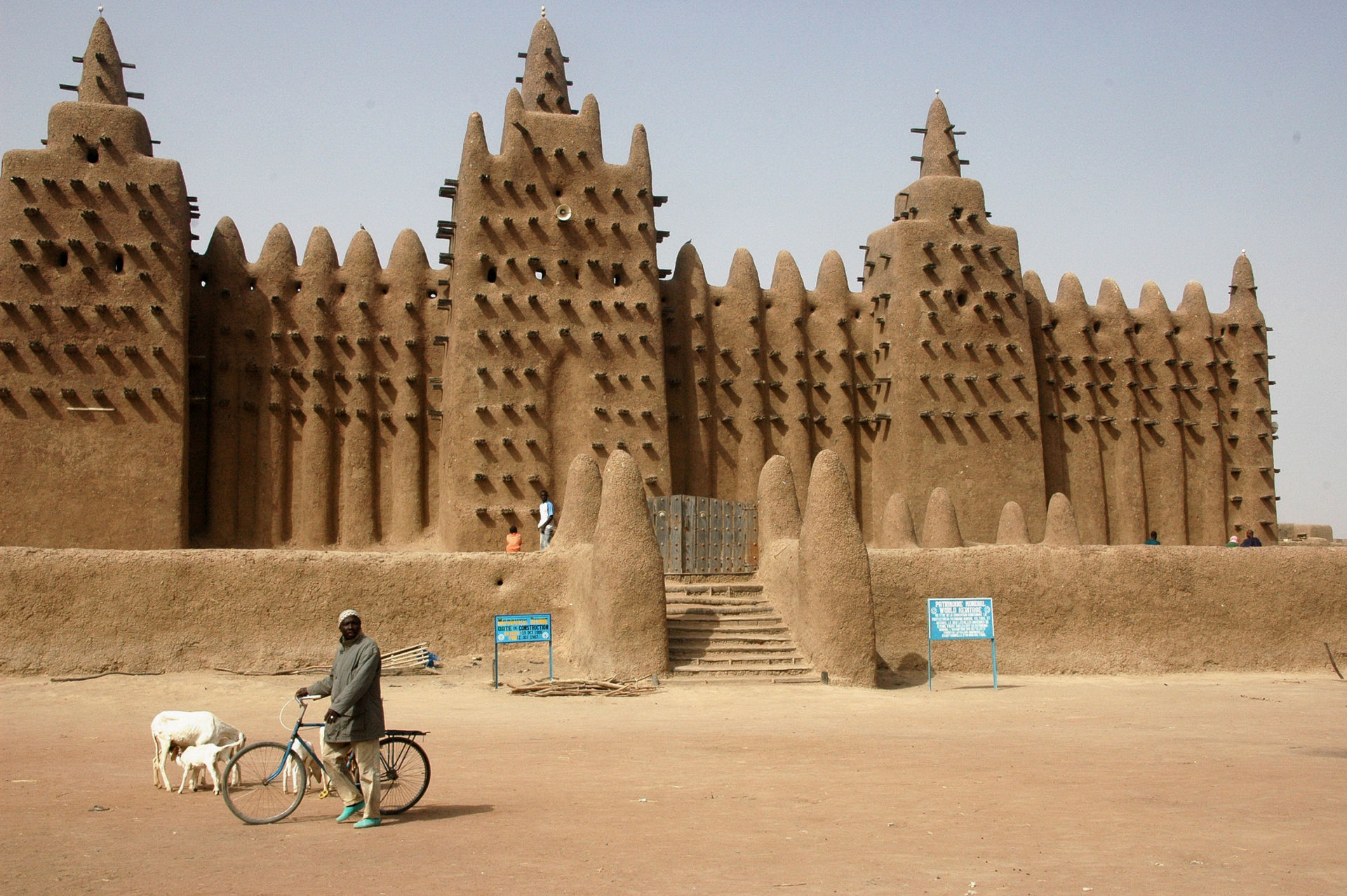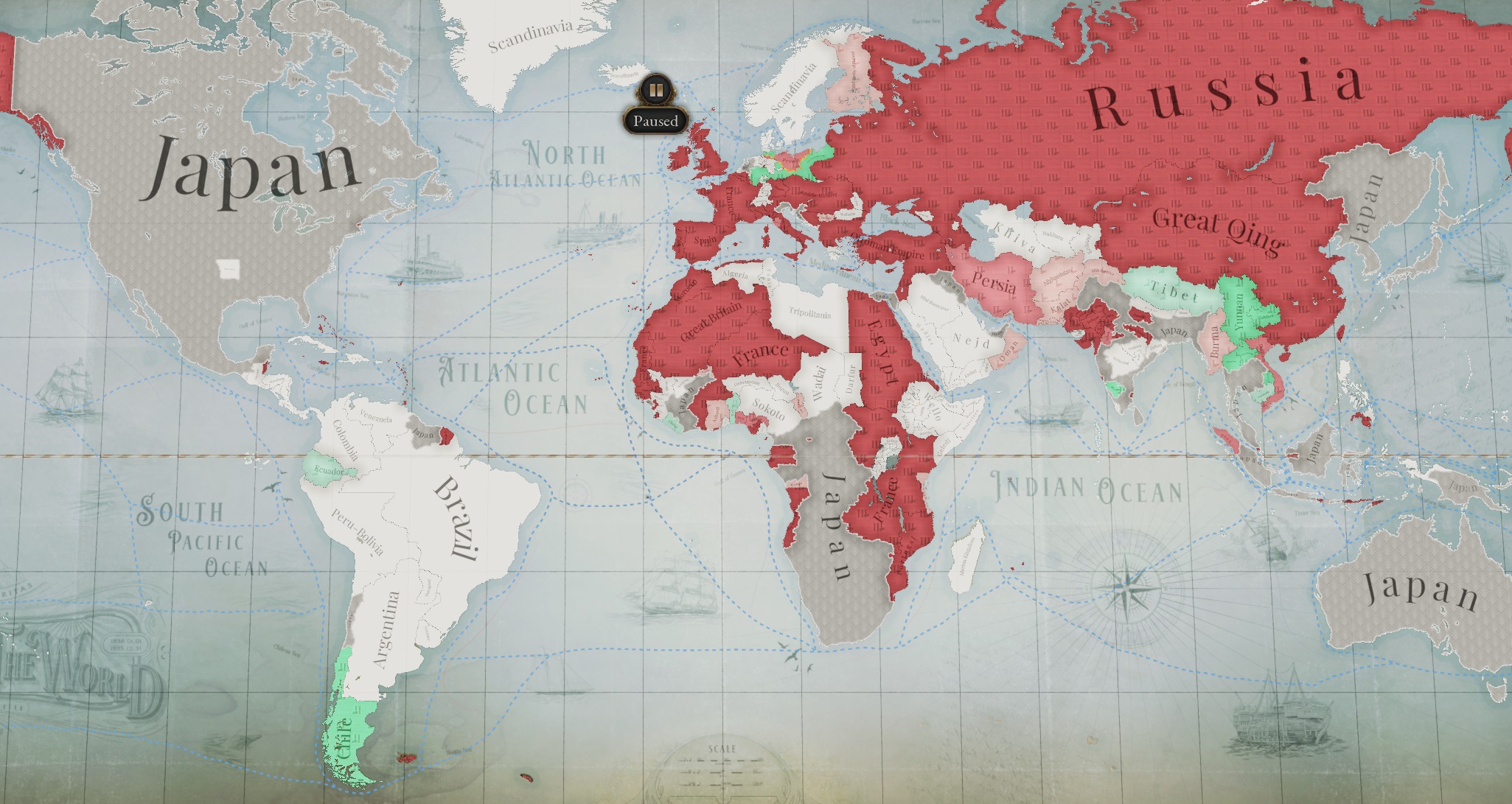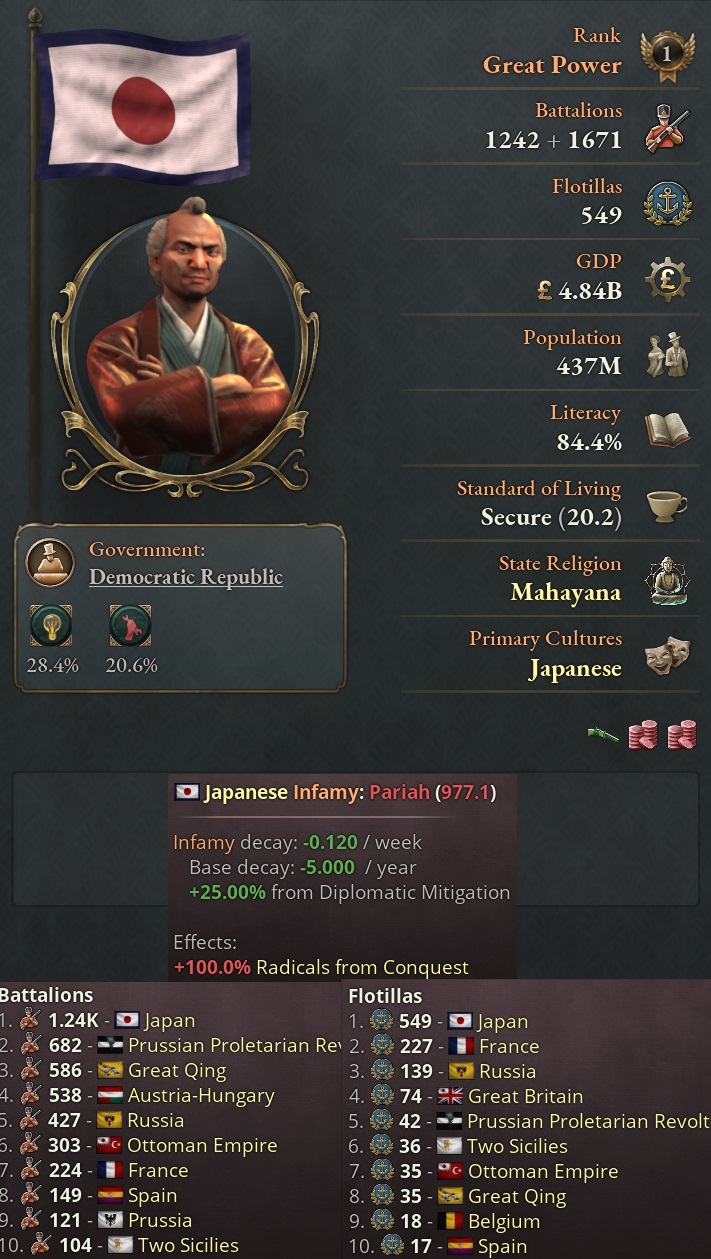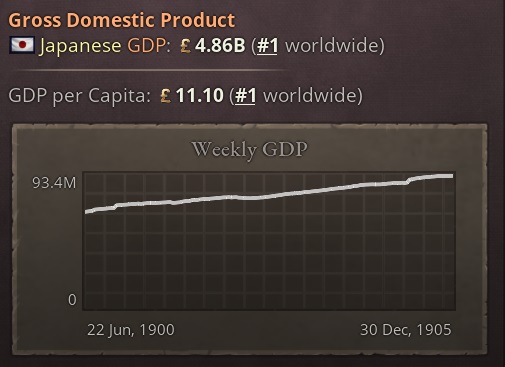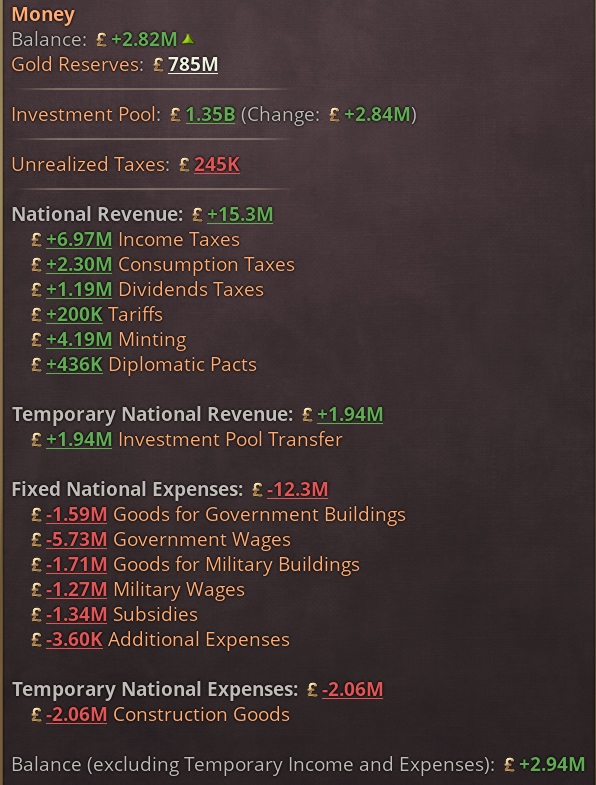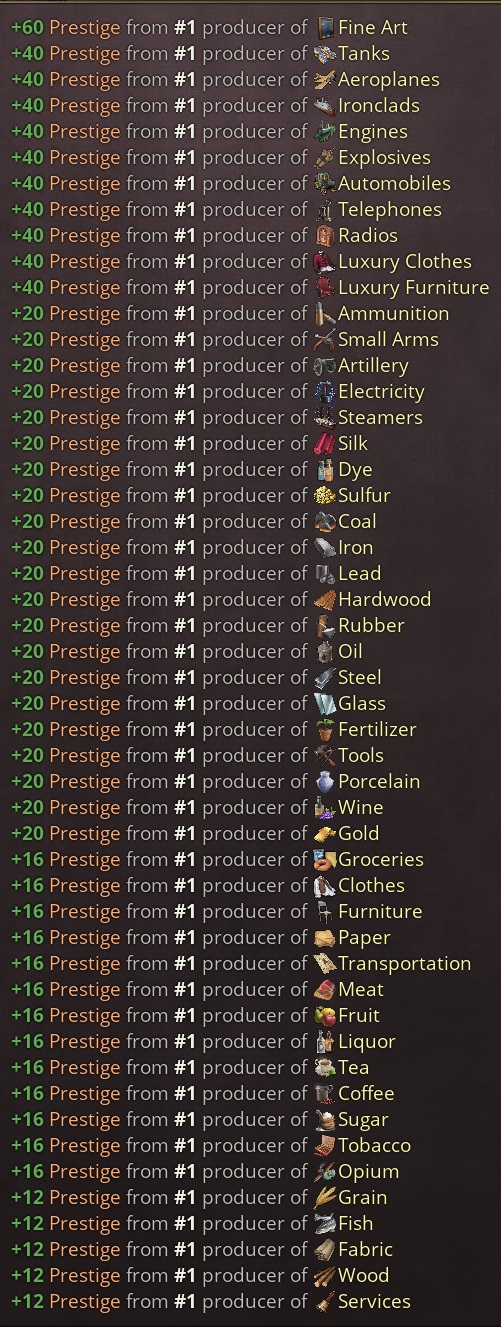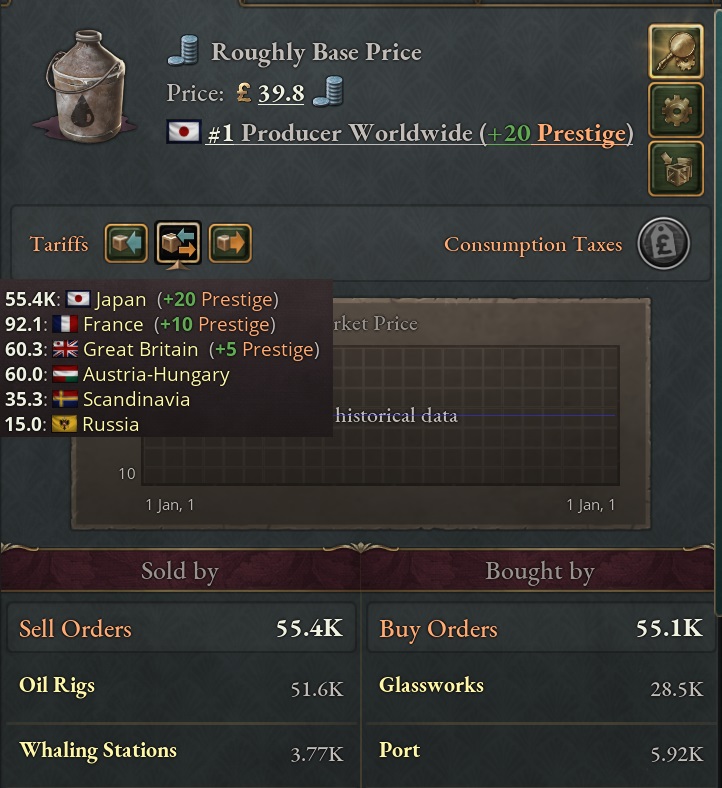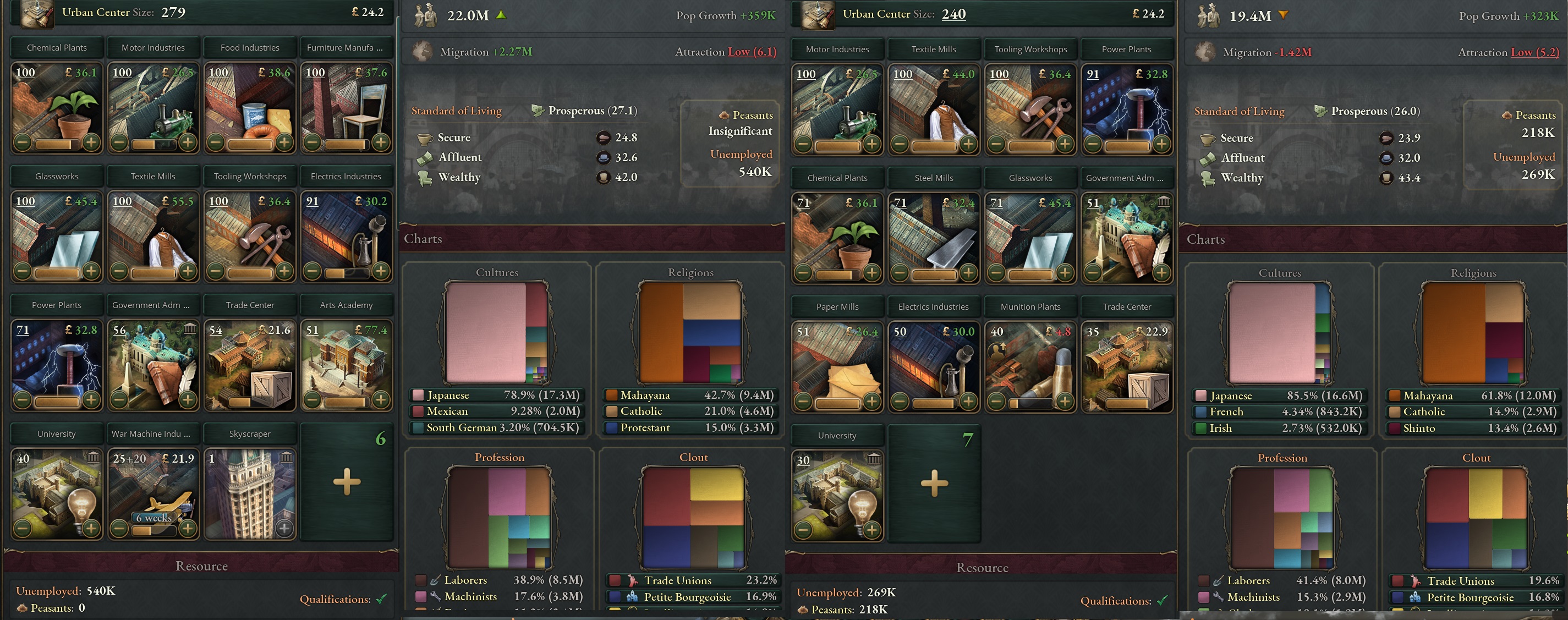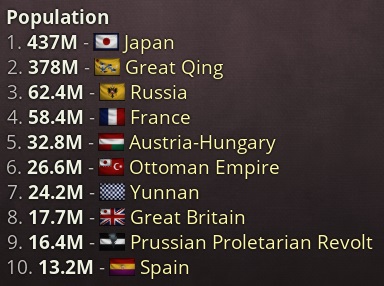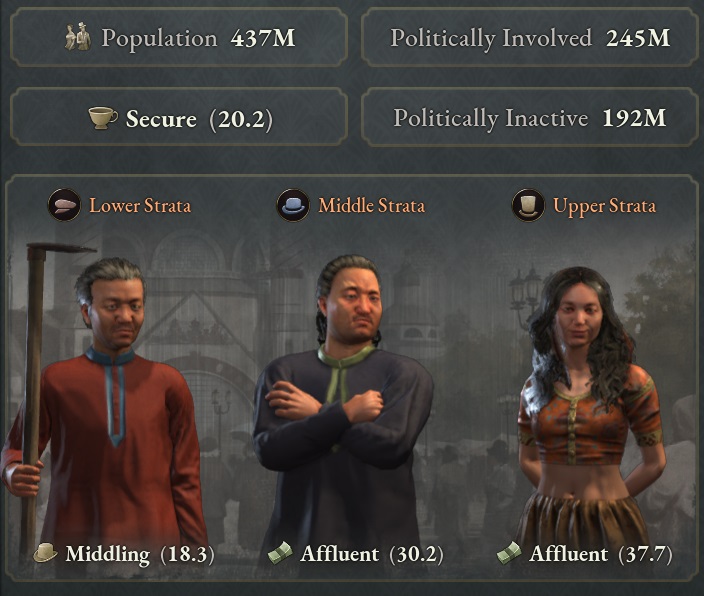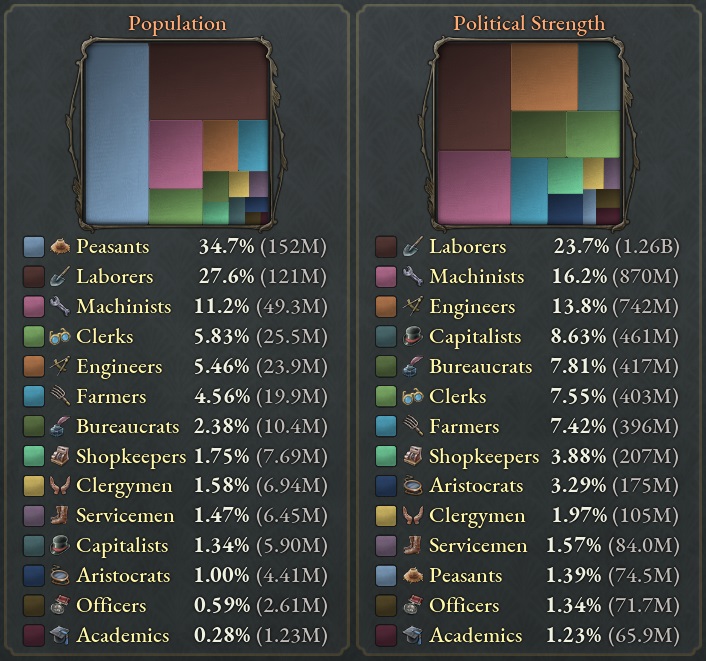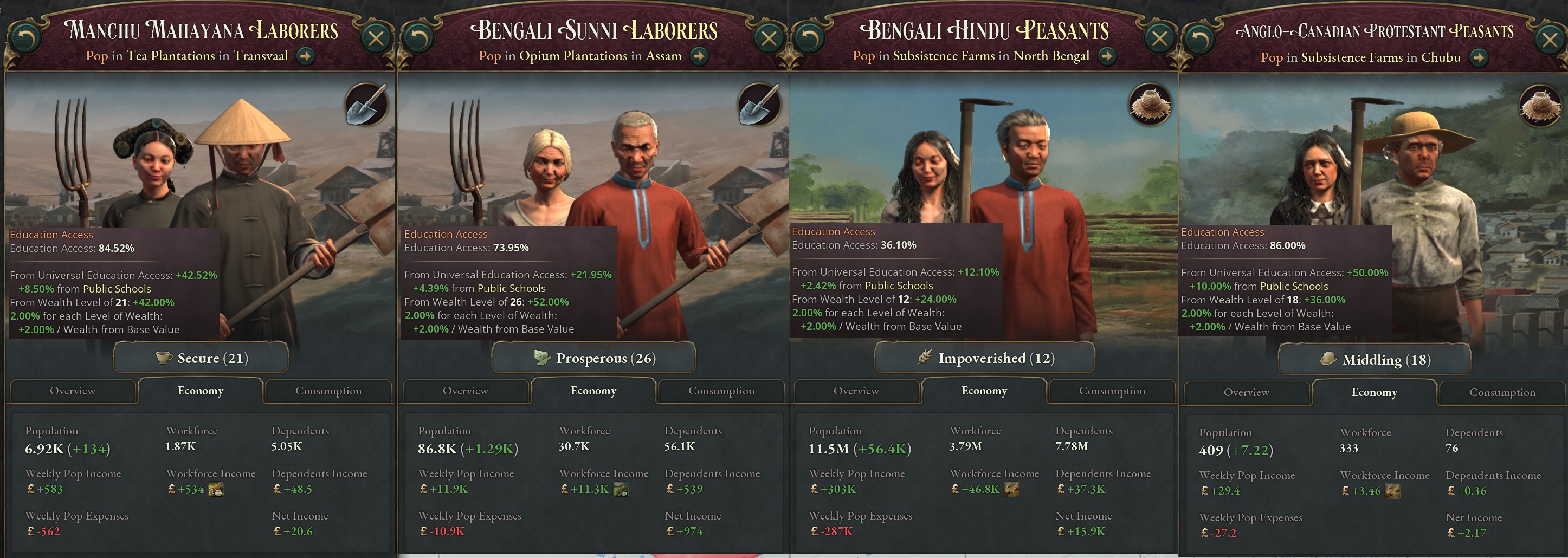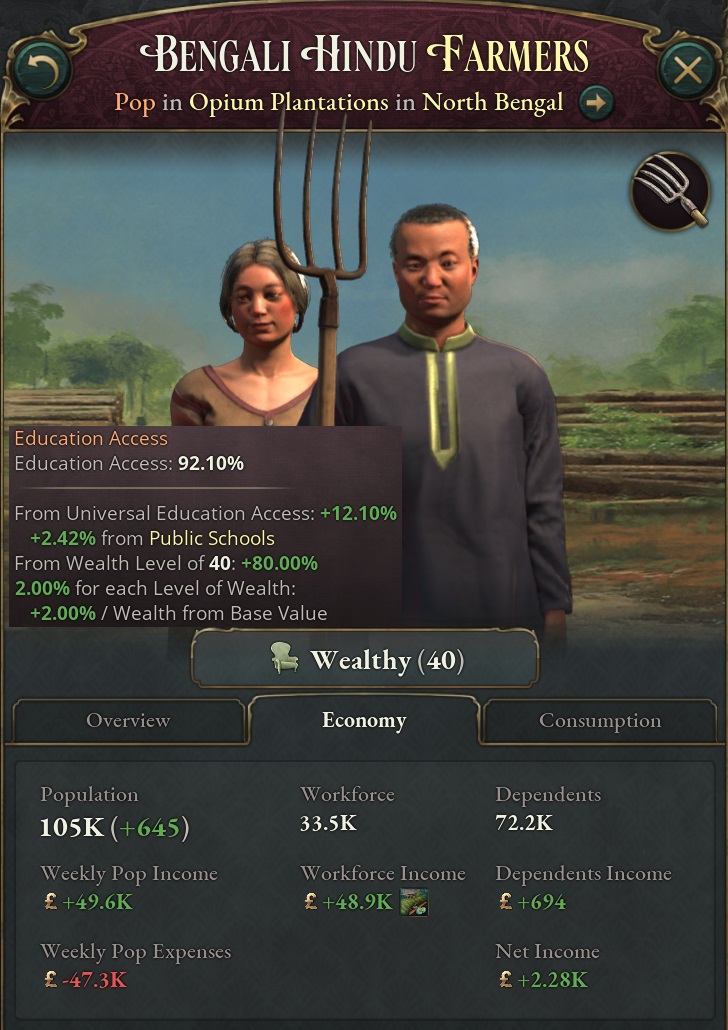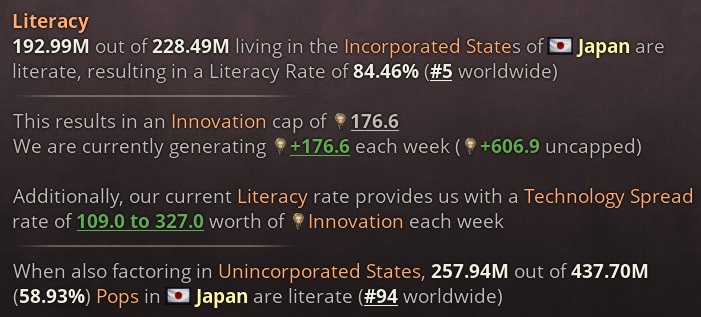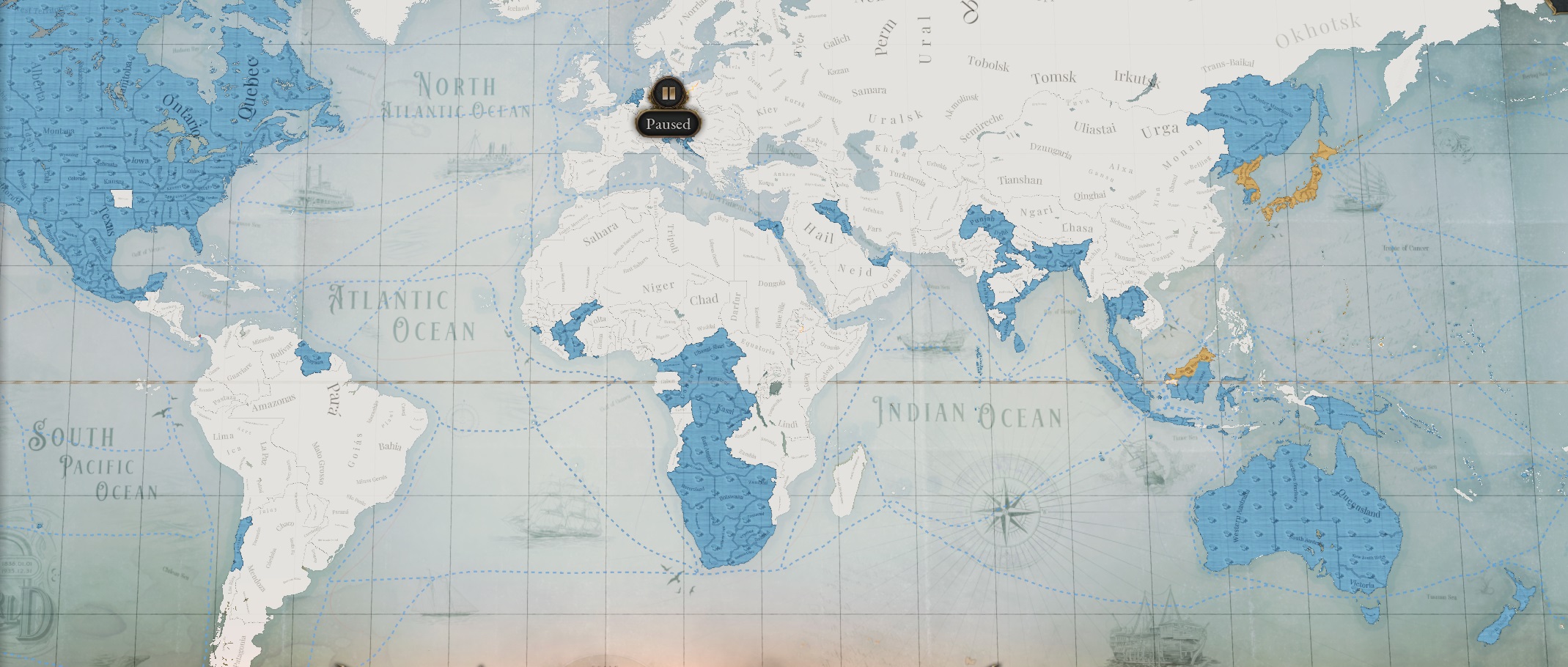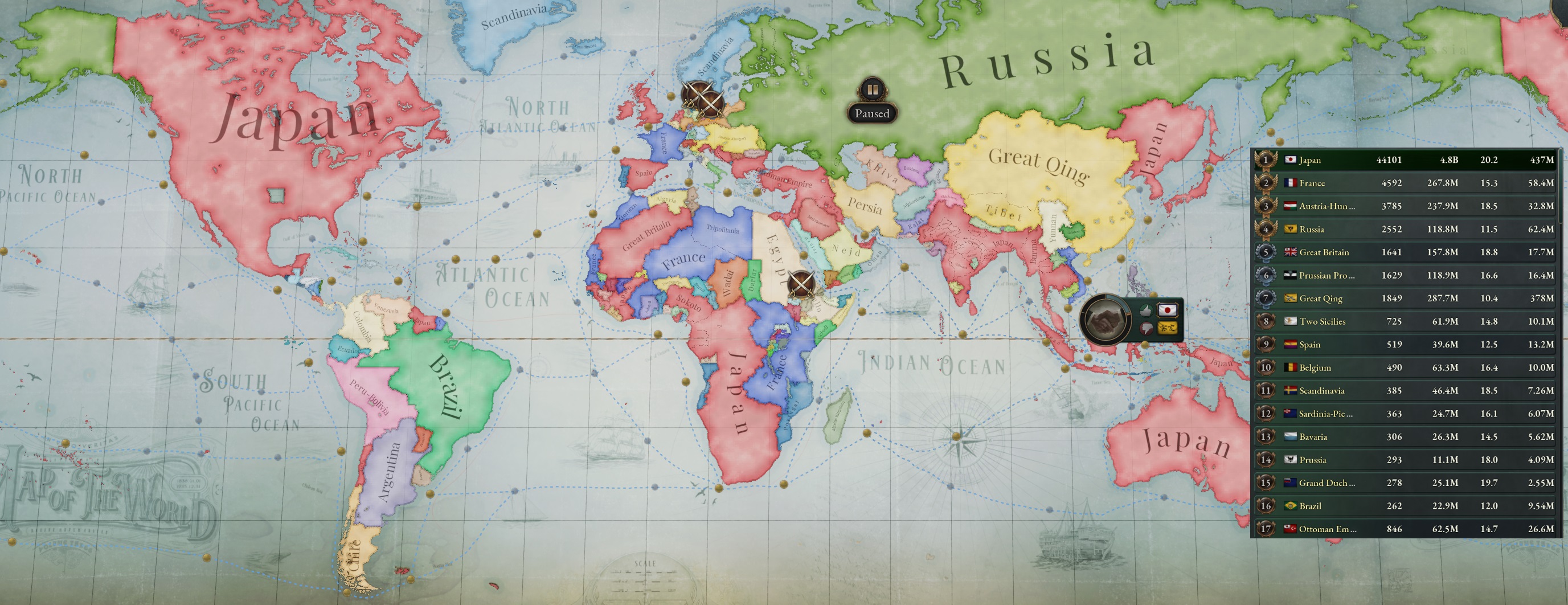The Fifth Decade: Nihon Ichiban
1876 saw Japan as the third Great Power, behind Austria and France. And a country with the second largest economy, roughly 30 million behind France. Now, fast-forward a decade worth of explosive growth and Japan is number one great power. By far. Exceeding the French economy by three times.
Japan also expanded quite a bit during the decade. First, the Japanese attacked Egypt and took Sinai. And while they were at it, took Cairo, Alexandria and the pyramids as well. And built a canal from Mediterranean to Red Sea, shortening the maritime traffic from Asia to Europe to the entire world.
Then, Japan took New South Wales under their direct command, gaining direct access to the most gold deposits per capita continent in the world. The gold was behind the second Japanese incursion to North America as well, gaining California from Mexico. The latter turned out to have ample supplies of oil as well.
Also, Japan fought some colonial wars in Africa, taking some states by force. Colonization got a fresh pace when Japan discovered proper procedures against malaria, allowing Japan to enter the malaria-ridden Heart of Africa. The result- almost all of South Africa was under Japanese control, two previously separated enclaves joined to one and also, the Japanese holdings in Central Africa, that was a few provinces in Congo a decade ago, now reach almost across all of Congo, plus Bas-Congo, Equateur and Kasai.
Finally, Japan made a surprise incursion into Europe, puppeting the Netherlands- and incidentally, gaining Dutch East Indies as their own dominion. The Japanese Dutch East Indies has a nice ring to it. Also, Emperor Meiji is now also Duke of Luxembourg. And with that, Japan is present on all the continents of the world.
Dutch holdings in orange, Japanese Luxembourg in green. So is Santiago, but too lazy to fix it.
Japan ended the period with 318 battalions and 201 ships. In this, Japan was actually lagging behind, being the 7th land force in the world- and a 2nd maritime force.
Japan. Pretty awesome, although a bit notorious.
The Economy
By 1886, Japanese GDP was 1,1 billion pounds. An insane jump of 400% from a decade ago, making the Japanese economy bigger than all the other five great powers combined. GDP per capita had risen from 5 pounds to 13,54. In this category, Japan had risen from 13th in the world to number 1. Next was Finland, with 8,25. In short, Japan entered the decade as a powerful economic player. It emerged as an economic superpower.
Number one all around!
Most of the growth can be attributed to adopting steel buildings. Allowing more to be constructed- much more. And then, building some more construction sectors, until every homeland province in Japan had maximum construction sectors. Leading to construction power of 2780 and over 1,6 million per week being spent on construction goods- and another 400k spent on salaries of the construction sectors.
The Japanese construction sector- and the construction costs
400% growth in GDP meant that Japan produced almost everything in quantities that made the rest of the world turn green with envy. Perhaps the best example is glass. Urbanization and steel construction really added to the demand of glass and Japanese industries rose to challenge. The result- Japan is not only the highest producer of glass. Japan is not only a leading producer of glass, it is producing 6 times more than number 2, France. And is producing more glass than the rest of the world combined. The same can be said about the stuff glass is produced from- lead. Japan is not only the world’s leading lead producer, it produces 5 times the amount of France and more than the rest of the world combined.
Outproducing the world
The same can be said about steel. In 1876, Japan was third producer, with France producing almost three times as much. A decade later, Japan is the leading producer, outproducing France two times. Or the tools, where Japan was number two and France was leading by double the amount. Que a decade and now Japan is leading France by twice the production. Also in engines, where Japan was in a lead a decade ago- now the lead had grown to almost 5 times.
Leading the production by far
Japan also climbed to be the highest producer of clothes and luxury clothes. Again, by a margin. Also, luxury furniture, though the margin isn’t that great. And Qing outproduces furniture. The number of subsistence farms there is just so damn high. Or, something for the next decade.
Still a shortage of these, you know
Besides lead, Japan also produces other raw materials. In quantities that dwarf the rest of the world. Wood, coal, iron and sulfur- Japan has everything and in number. There is a small shift though. Something that had happened with wood some times ago, but now also with iron and coal. The mines in Japanese homelands were at maximum and mining moved to Japanese oversea holdings. For example, the biggest Japanese coal mines were in Transvaal, producing about a third of Japanese coal. Since the population outside Japan was not so great, the mine was also using the latest technologies, like steam donkeys and rail transportation. This was true to almost all the other enterprises outside Japan as well.
Transvaal, the biggest coal mine in the world
The same was true for iron. California was the second producer of iron in Japan, and iron mines were built all over Japanese holdings. Lead and sulfur still had deposits back home, so this remained unchanged.
Biggest iron mine outside Japan
Japan was still the leading producer of gold as well. Minting income was almost a million and of this, gold was about 400 000 and Japan was the world’s leading producer by 20 times. While the income from gold is not as important as it once was, it still guarantees a steady surplus into the Japanese budget.
Almost all the gold in the world belongs to Japan
The food situation is also very good. Basic grains are in surplus, thanks to modern fertilizers and numerous farms throughout Japan. Subsistence farms now contribute about 5% of total grains produced and if peasants went just away, no-one would even notice. Overall, grain output more than doubled during the decade. Japan is a leading producer of meat and fish, and also groceries, though these prices could see some work.
The food situation is pretty good.
Most importantly, with the introduction of pumpworks, Japan started the agricultural revolution in plantations. Automatic irrigation meant doubling the output, increasing the number of farmers and introducing the machinists to plantations. Making Japan number one producer of tea, dyes, sugar, tobacco (but not fruits) and perhaps most importantly, opium.
Finally, narc lords!
Trade tariffs are not the most important income of Japan, but opium alone makes up nearly a third of the tariff income. France alone imports over 5000 opium from Japan, and Japan provides over 2000 to Prussia, Austria and Ottomans. Also, Austria is almost completely dependent on Japanese glass and Japanese furniture gets sent all over the world. Still, a minor part of Japanese income.
Trade tarriffs and some trade routes
Overall, the Japanese market had some shortages. Mostly electricity. Also, engines were in short supply- but already, a new, 51-sized motor industry was under construction in Hiroshima. The same for glass. Additional factories were being built. Oil shortages were something new. As for surplus- Japan had total overproduction of fertilizers. Ample surplus of grain, weapons and fabric. Iron and booze were also in slight oversupply.
Doing quite well overall
In 1876, Kyoto became the biggest city in the world. A decade later, Kyoto was still awesome, but Edo had de-throned it by a small margin. The rest of the world- Paris, 22. Birmingham, 15. Berlin, 18. Vienna, 13. St Petersburg, 17. Even Sapporo in Hokkaido was a bigger city than European capitals. Or, just by looking at population- 3,4 million in Ile-de-France, 11,5 million in Kansai and 11,7 million in Kanto areas. 16 million in Beijing though.
Edo and Kyoto, competing for the top city of the world
During this decade, Japanese taxes were lowered to medium. Military wages are set to very high and the government gets high wages. Then again, income taxes are nearly 2 million, the investment pool brings in 1,2 million. At the moment, Japan was around 500k per week in the green, the gold reserves were 88 million and the future looked really secure for the nation.
Lots of money
And yes, Japan is a leading producer of almost everything. Apart from wine.
Top of almost everything
The Society
The society of Japan in 1886 is very different from the one decade ago. For one, the people of Japan are much wealthier than they used to be. Average standard of living in Japan is now the highest in the world and even the poorest aren’t struggling to survive. On average, that is.
Everyone living a good life
The decline of the peasants continues. Now, the peasants make up just 5,95% of the Japanese society. A decade ago, it was 26,6%. The laborers continue to be the biggest population group, with almost half of Japan, followed by machinists and clerks. Even engineers and farmers are about to outnumber the peasants. Seems like only the most stubborn ones remain in their subsistence farms, while most of the population moves into cities.
Peasants, getting lower and lower
The Japanese open society has attracted quite a population from outside Japan, coming to search for life where they are not oppressed and where they can have a chance for a better life. Yes, some population groups, like Misri or Thai, did not come to Japan. Instead, Japan came to them. But Japan definitely hadn’t come to South Germany, or Ireland, or into the US Southern States, and yet South Germans were the 4th largest population in Japan.
Getting some interesting people in here
In Edo, the South Germans were the largest foreign group, while the Japanese were just at 80%. In Ryukyu, Polish were the largest group. In Chugoku, the Swedes. In Tohoku, the Irish. It seemed like the entire world had decided to come to Japan. Only in Kyoto and surrounding lands, Japanese remained more or less dominant.
In addition, almost no peasants
Hokkaido and Sakhalin were even more special cases. The Ainu population had been the majority on both of the islands, and in Hokkaido, the Ainu were still the most numerous ones. Though not a majority no more. In Sakhalin, the Afro-American population was the most common.
Lots of Afro-Americans around
One thing was clear- Japan was no longer a pure ethnostate, or even ethnostate and subjects, but was fast becoming a cultural melting pot of nations.
Health system in Japan was still a private insurance one, and was still limited to level 4. Things were still better than a decade ago. First, the people got richer and could afford better medical care. Then, child labor was banned, meaning fewer losses that way. And finally, thanks to Japan actively enforcing safer working conditions, fewer deaths that way as well. Of course, the richer the person, the better medical care they could afford, but even the poorest could get the help they needed.
Factory workers have now slightly safer jobs. And quite good healthcare.
As for education. The Japanese education system was the best in the world. Even the poorest had to go to school. And since the poorest were not that poor anymore, they could afford to send their kids to basic school and perhaps even let their kids continue their education, instead of forcing them to work at an early age. In a way, Japan had given the majority of their people something never seen before- a childhood. As usual, the richer people had better chances for education, but Japan had managed to level the playing field quite considerably
Even the poorest Swedish farmers can send their kids to school.
Education resulted in a Japanese literacy rate of 67.5%. A decade ago, it was 52%. A growth over 15% in a decade is quite good. Japan was 99th country in the world a decade ago, but now, they are 28th.
Crawling towards the top
The institutions in Japan got a small boost as well. Maxed out education system, colonial affairs and home affairs. Well-funded police. Good health system. First workplace security offices. And some welfare payments. Compared to the rest of the world, this is the most advanced (or the most meddling) governmental system.
Quite an institution
As for the laws, the biggest one is adaptation of universal suffrage. Every man has a vote, no matter the wealth, the education, the iq. In addition, Japan also abolished censorship, made primary school mandatory, established regulatory bodies for worker safety and also, gave women some basic rights like the right to actually own property. Voting is still reserved to every man.
The laws
High liberty and a high standard of living also meant that more people were happy when radical. In fact, the loyal people outnumbered the radical ones over 10 times- with 1.88 million radicals and 23.3 million loyalists. Meaning, pretty much everyone in Japan was happy and the society was quite stable- and quite resistant to revolutions and turmoils.
Radicals are dwindling, loyalists on the rise
The government was also quite stable. Trade Unions and their Common People’s Party ruled the government, while Intelligentsia and Armed Forces, or the Constitutional Reform Party, was also in it. The Industrialists enjoyed their influence, but their Free Trade Party had been disbanded and they were out of the government. The Monks and Landowners were still suppressed and marginalized.
Government looks quite different
The World
In the Second Great War, Great Britain managed to lose recently conquered Yunnan to Great Qing. Then, the Great Qing managed to get a protestant rebellion in the southwestern part of the country. The Heavenly Protestant Kingdom was crushed, but left Qing as a very big bad boy in the eyes of the world. Causing Russia and Austria teaming up and unsuccessfully trying to cut the Qing down to size.
Great Britain did not learn her lesson though and at the moment, they are fighting a war with France- over a treaty port in Libya. This is quite a great war as well, for the Brits got Spanish on their side, while France and the United States are allies. Belgium has joined the war as well. At the moment, the score is: about a million dead, two million wounded and the war is basically status quo.
In America, the US got at least Utah back from Mexico. In Europe, Prussia is still Prussia and Italy is still divided into small states plus Austrian lands. And France subjugated Morocco. If it weren’t for Japan, nothing much would have happened in the world.
The world and top GDP countries